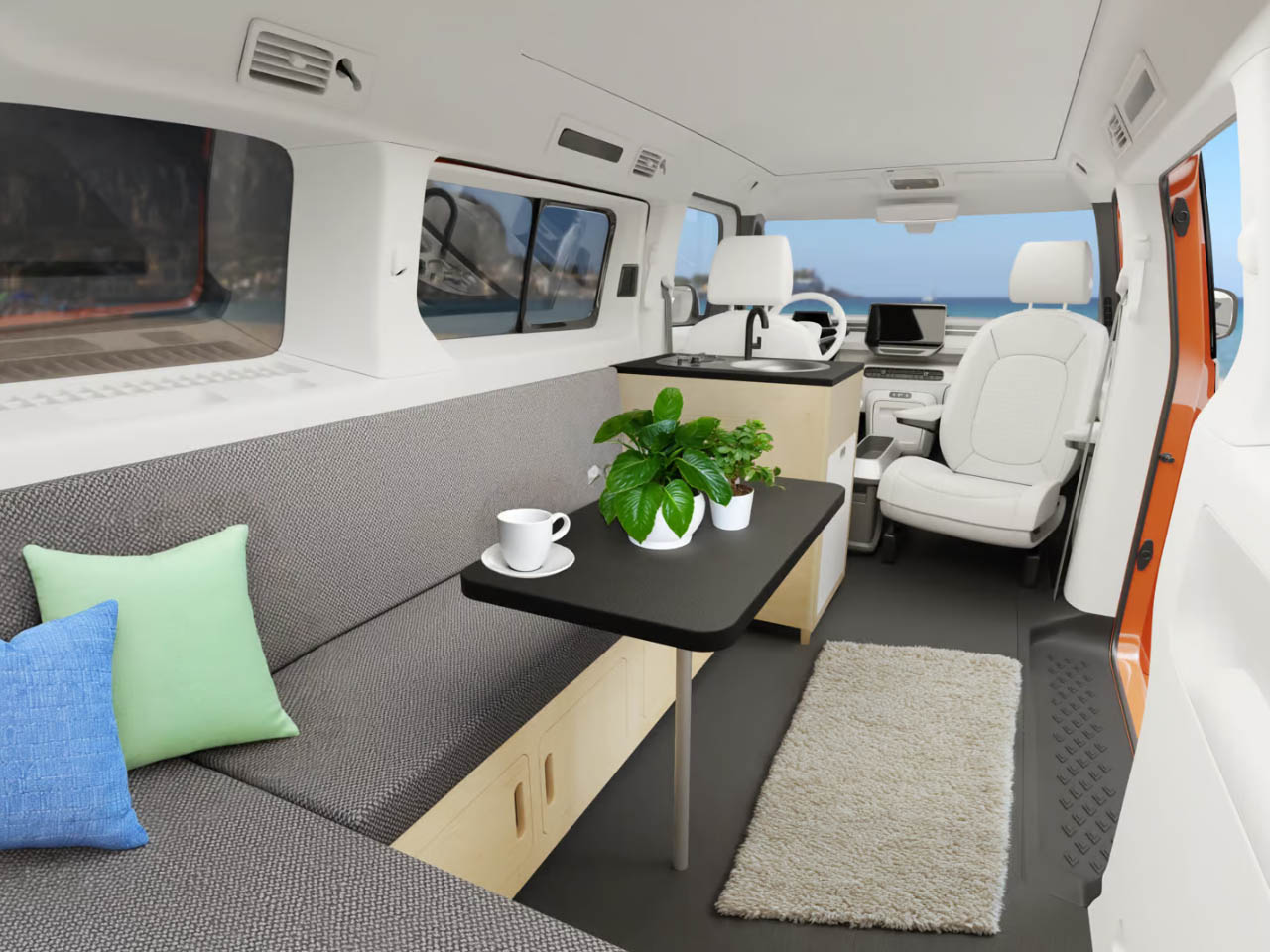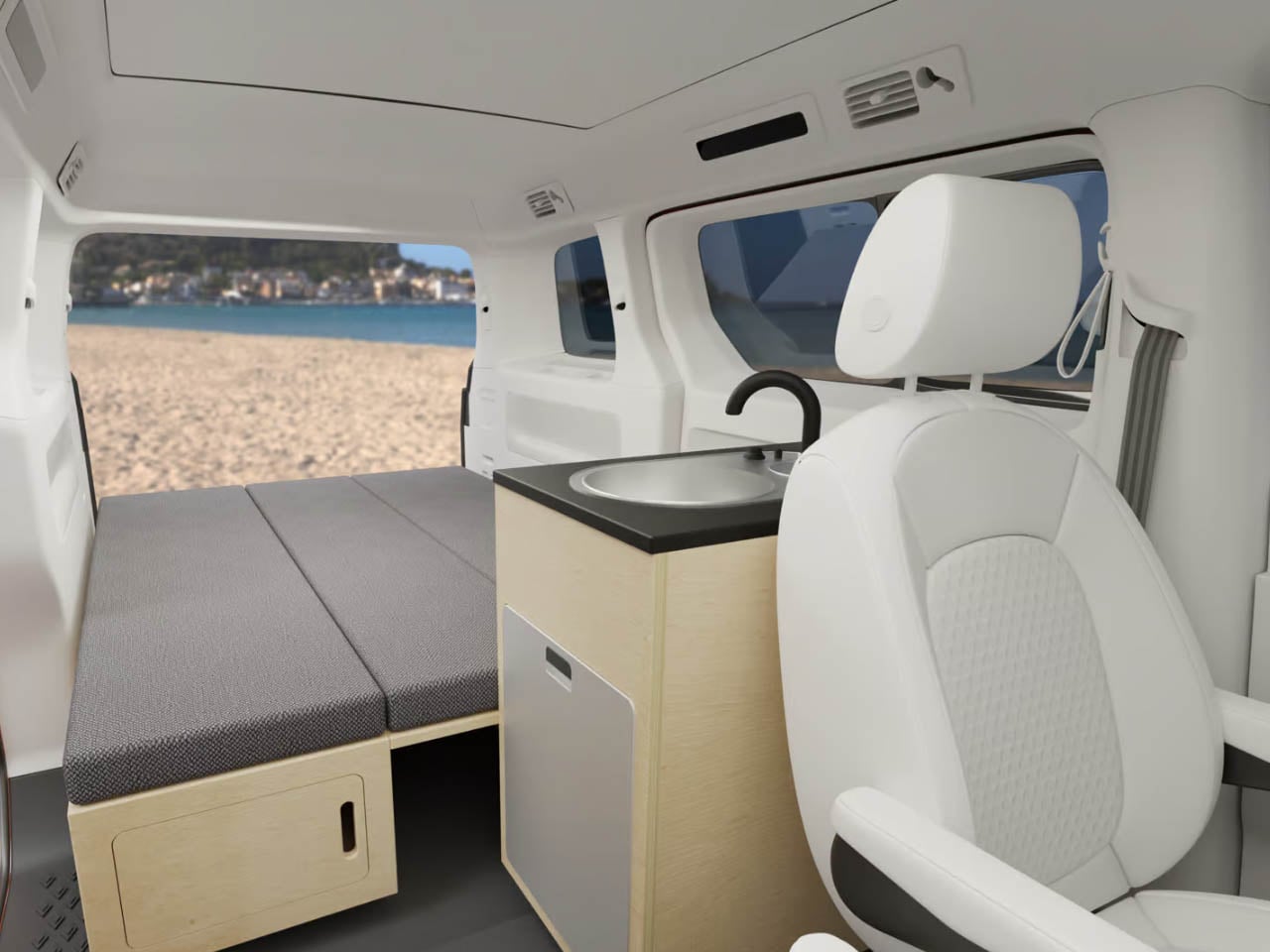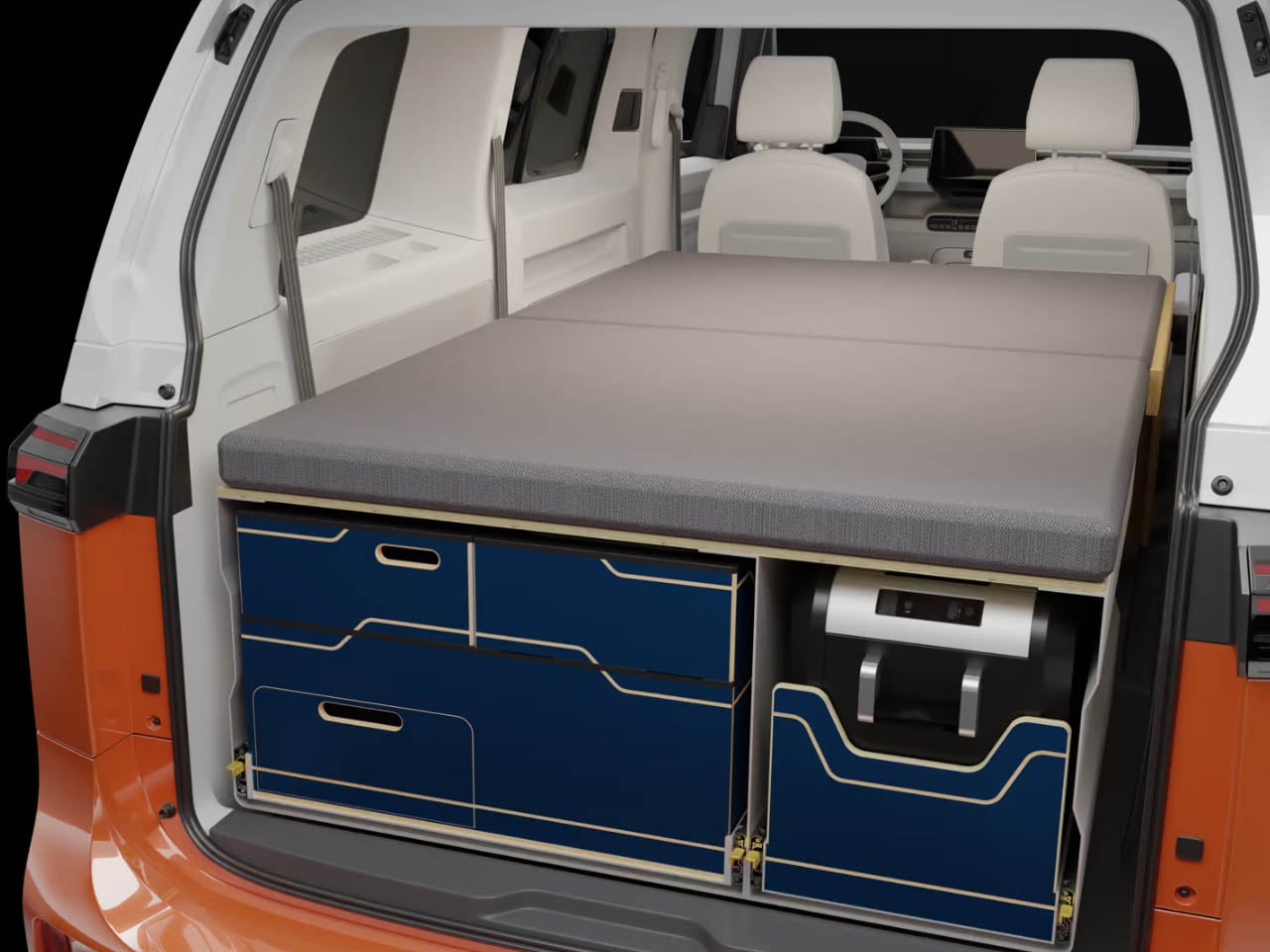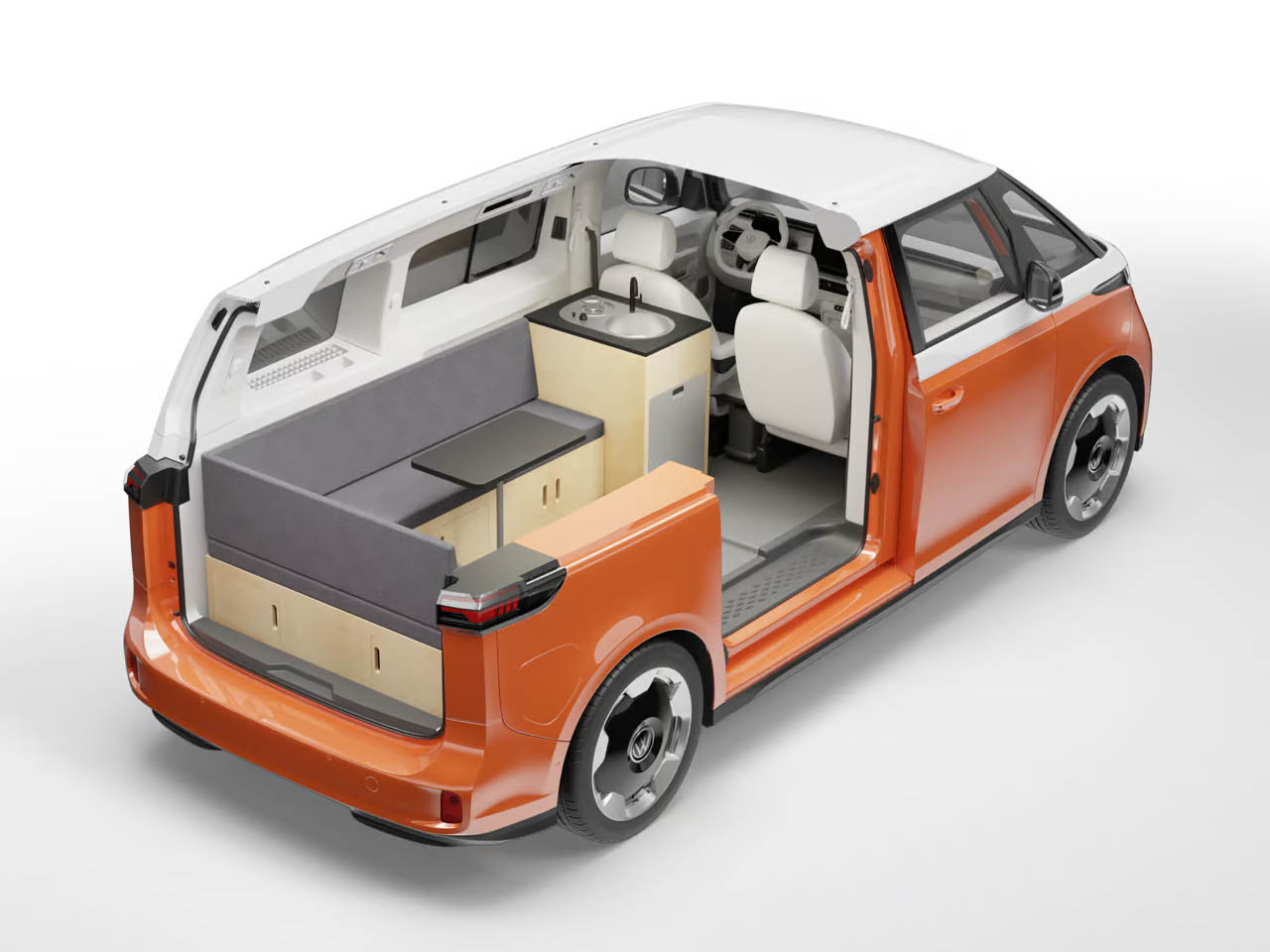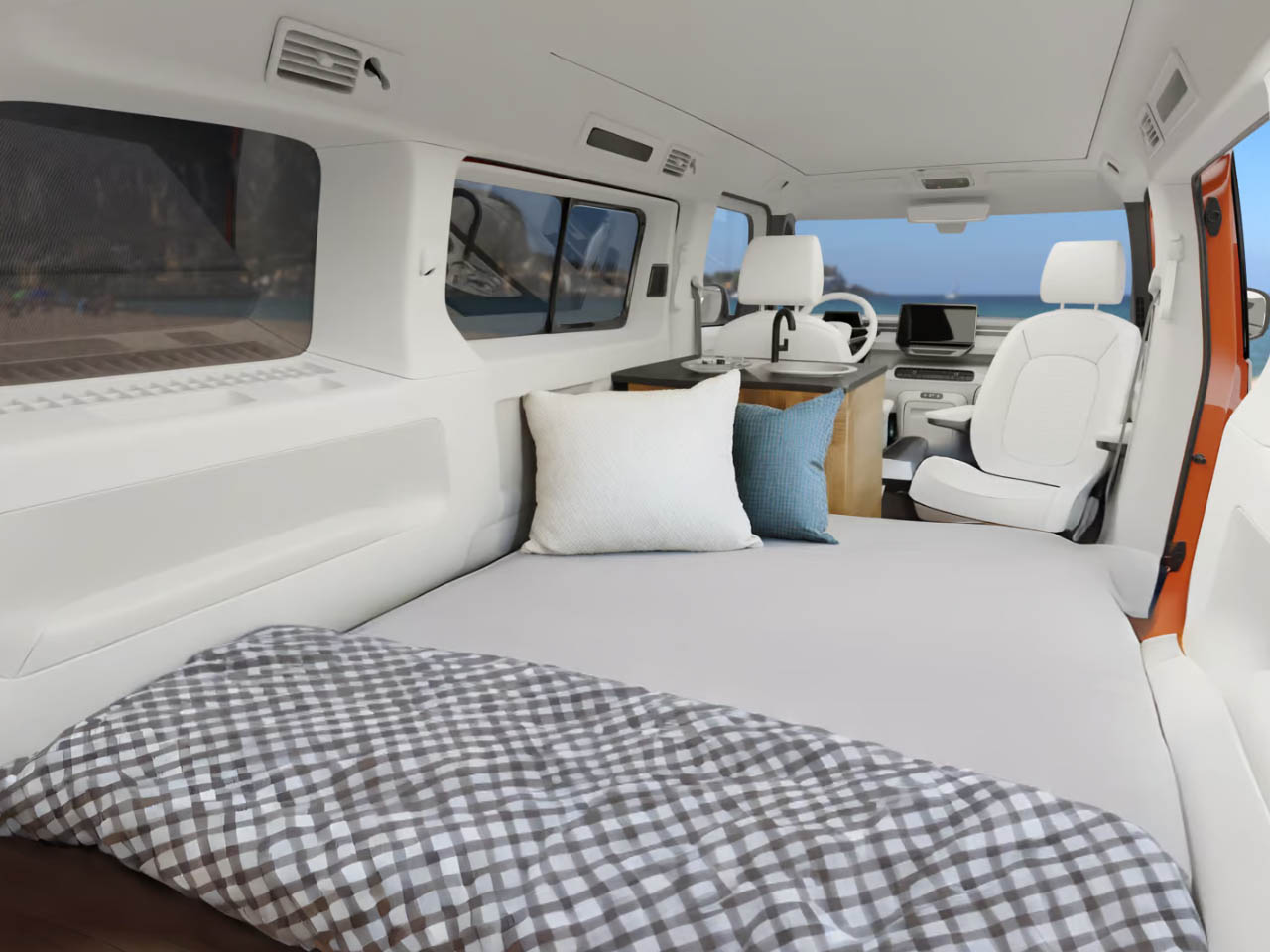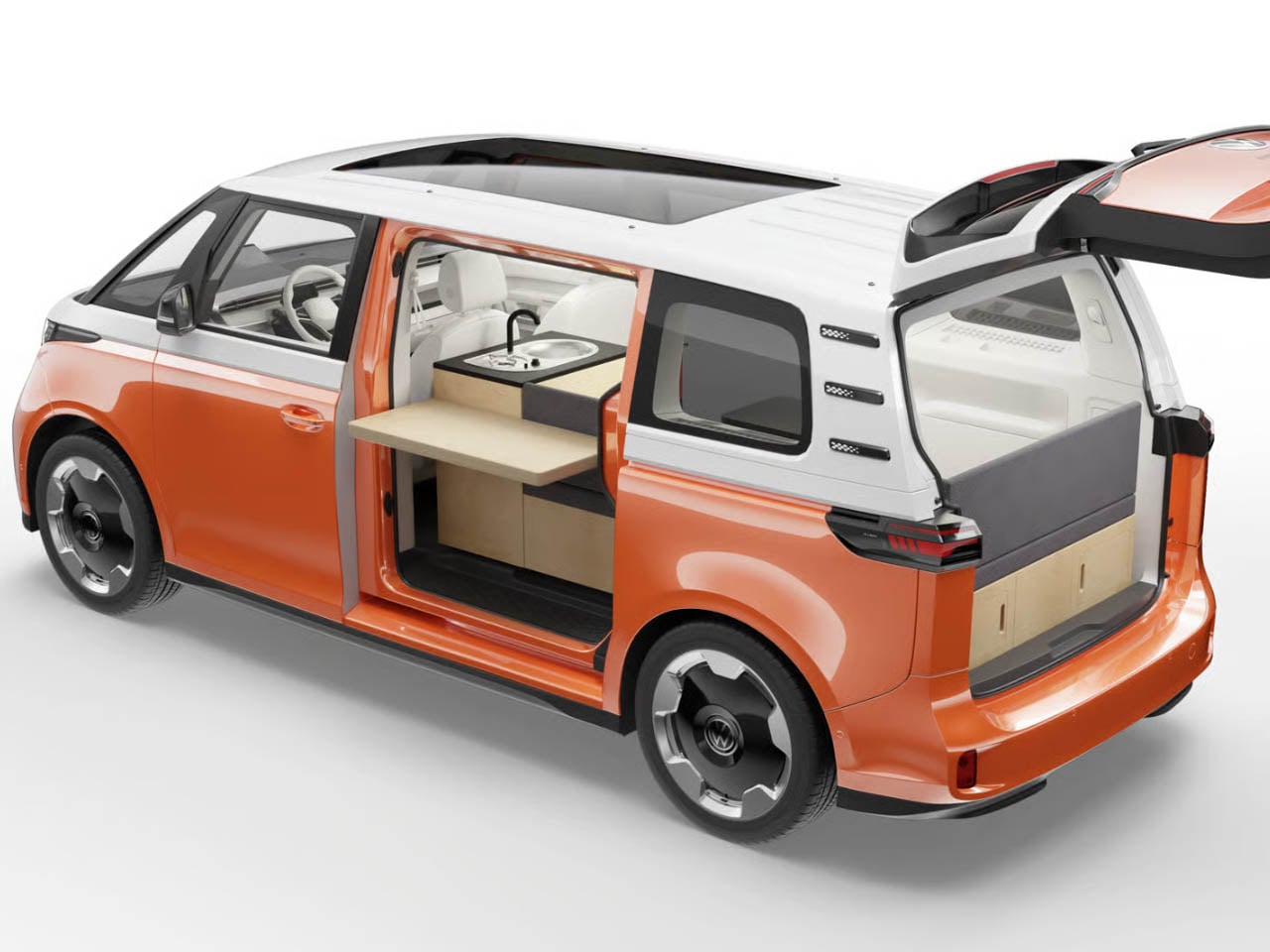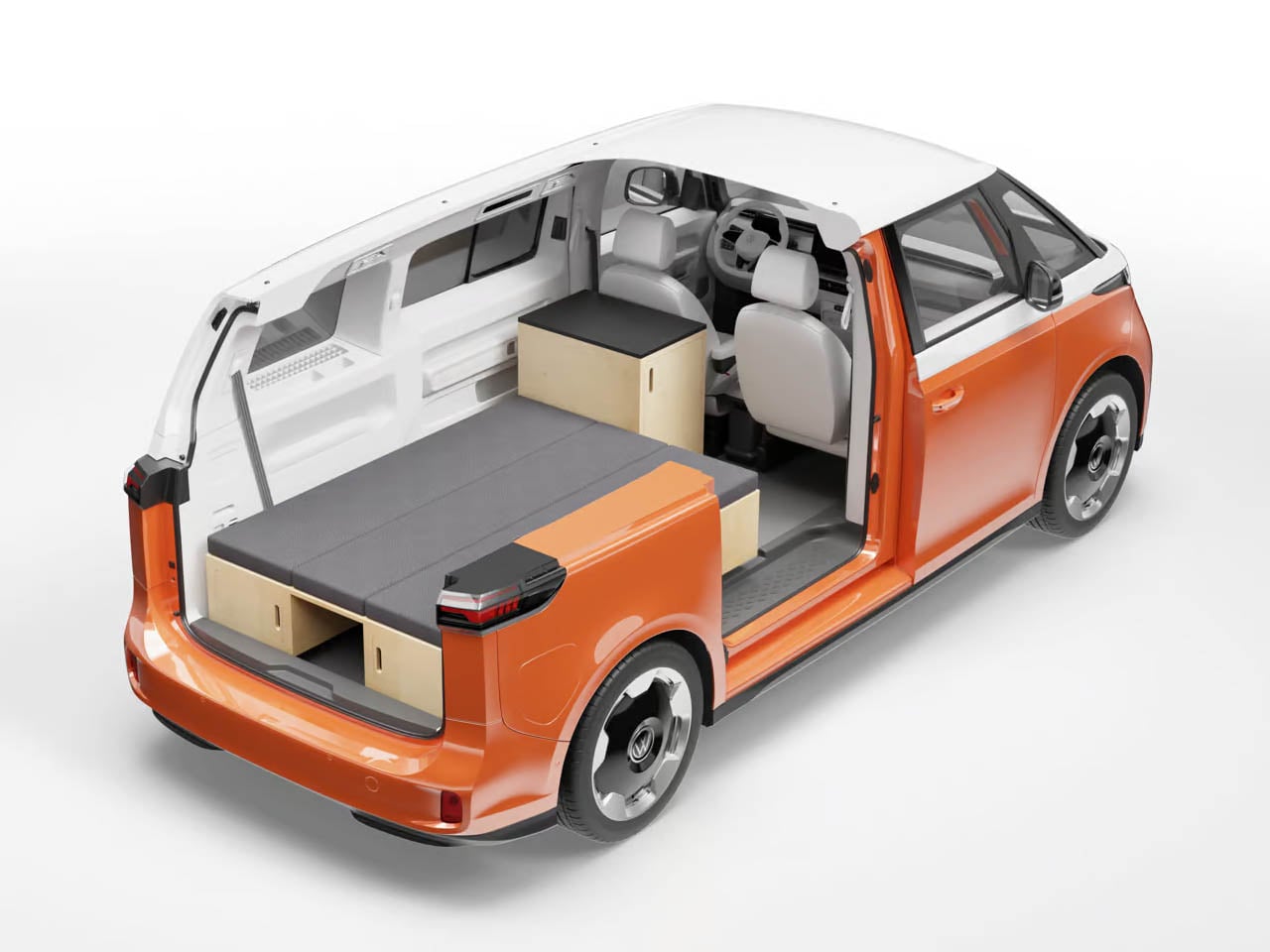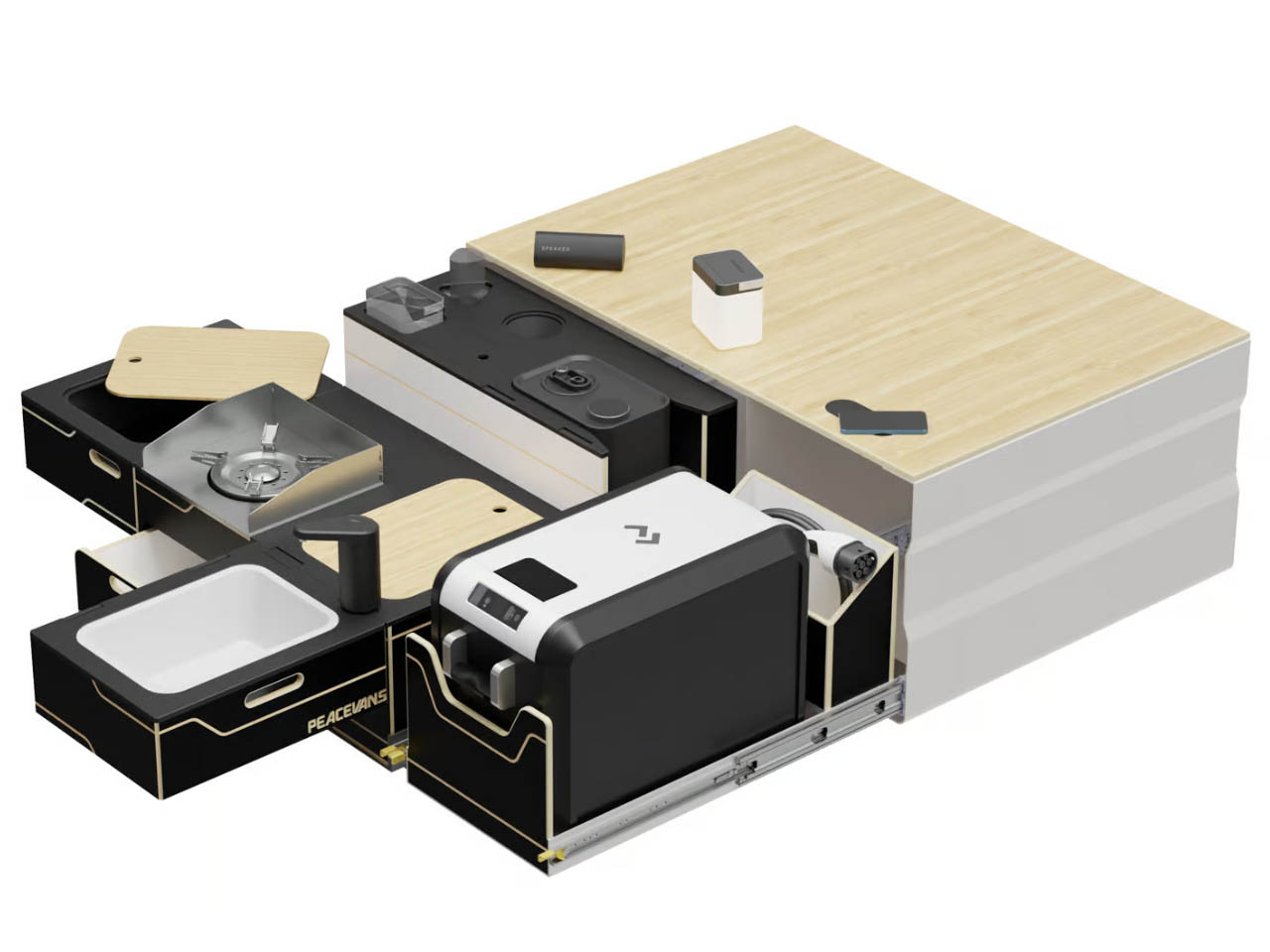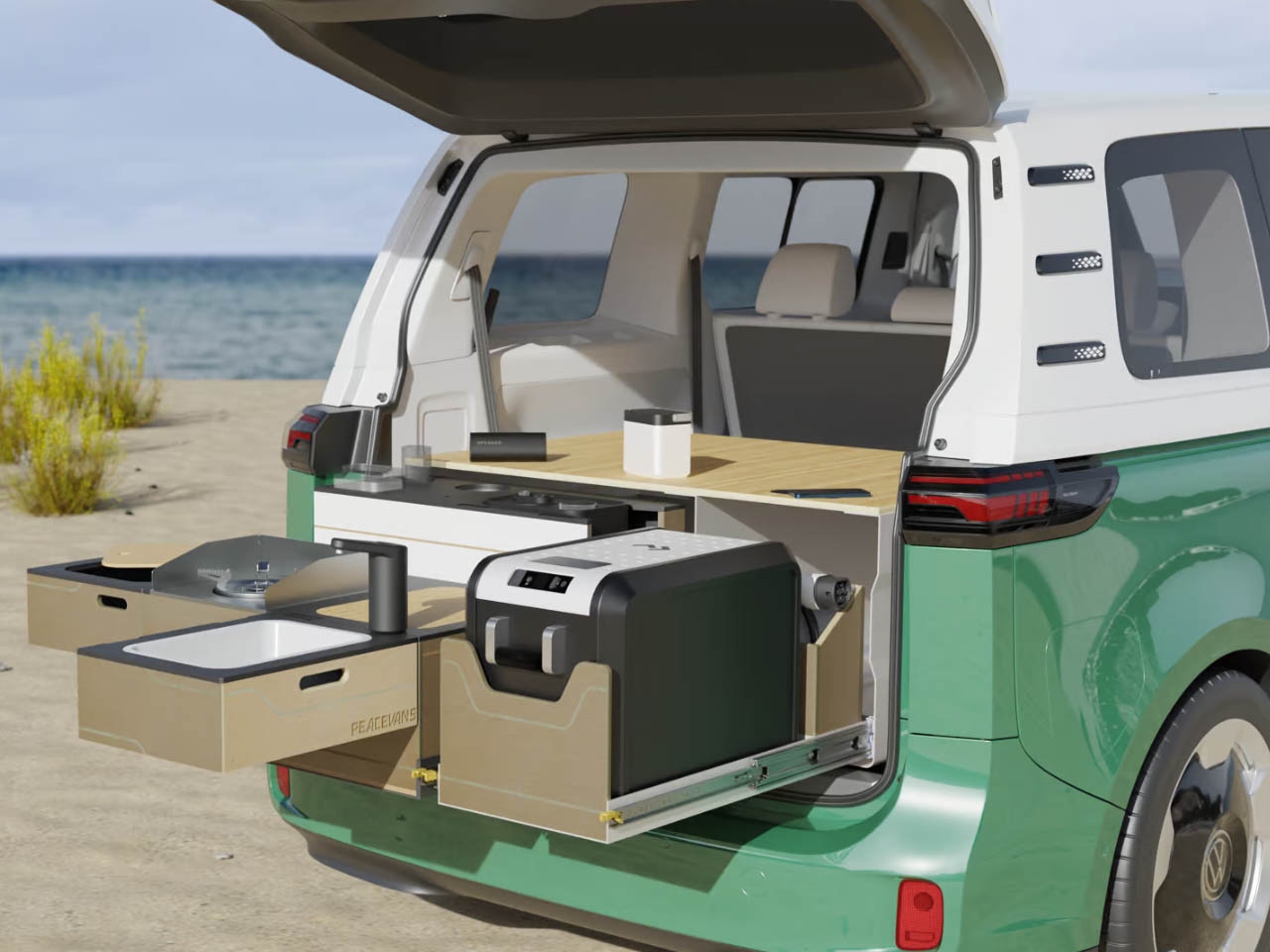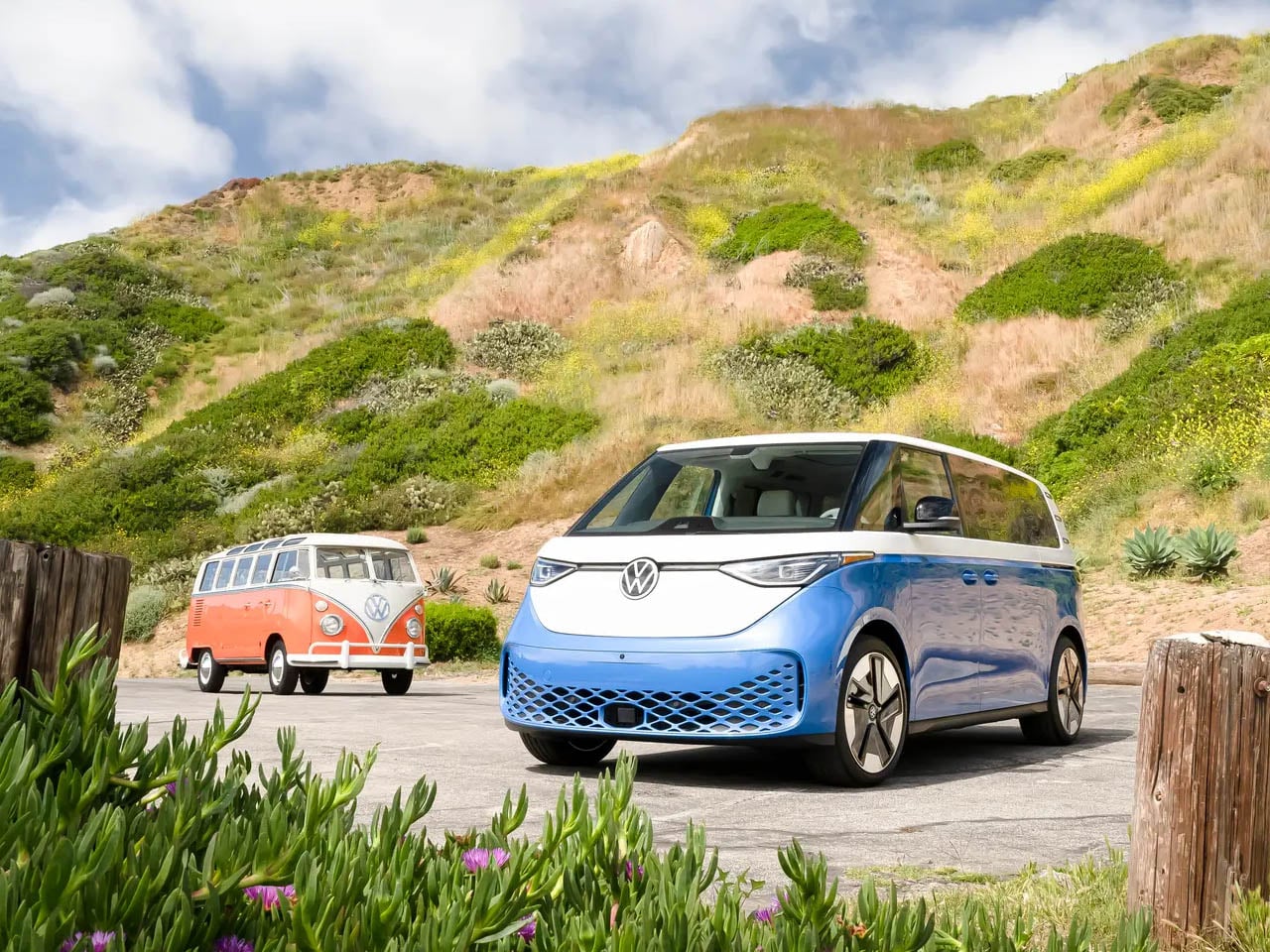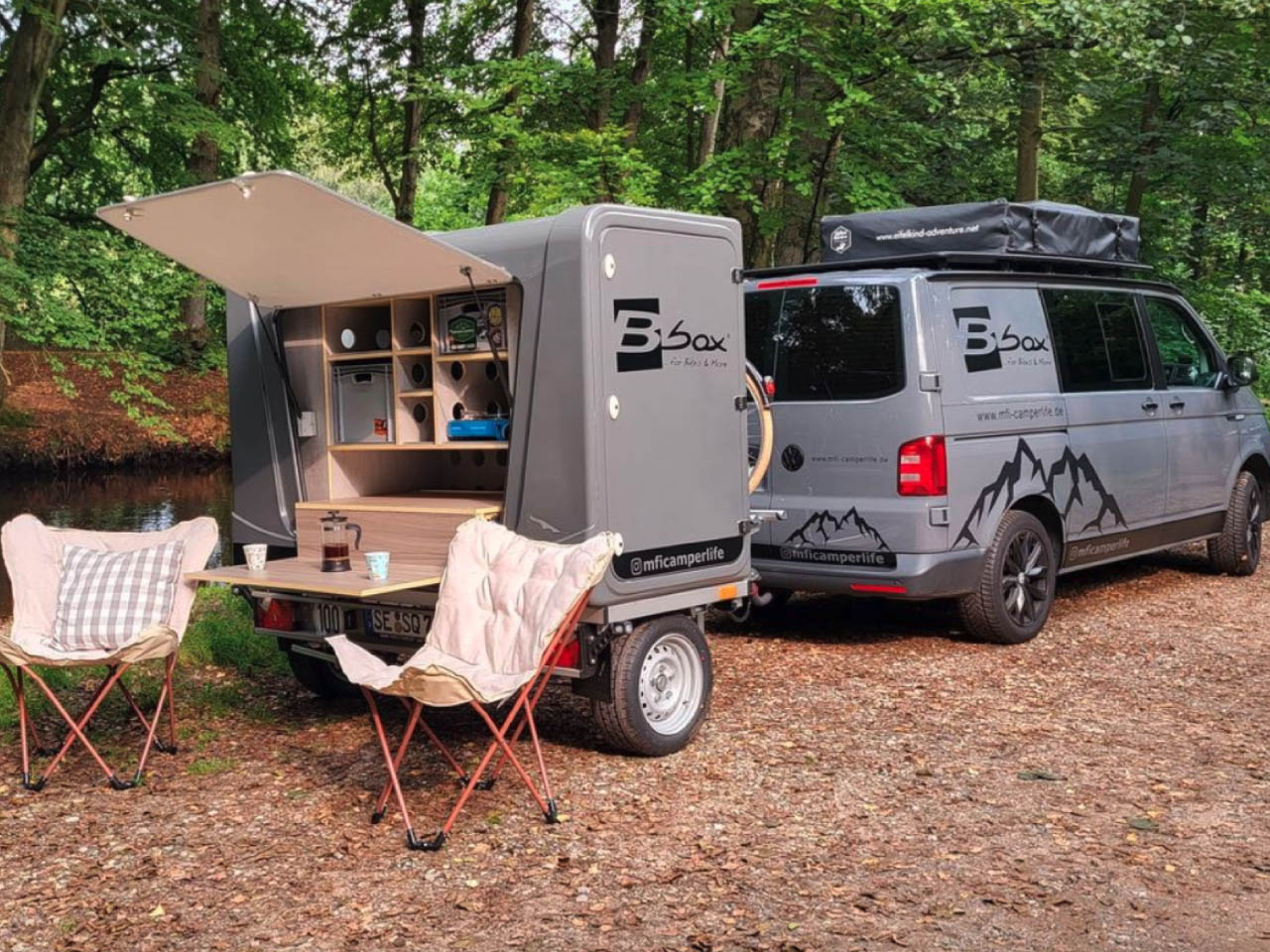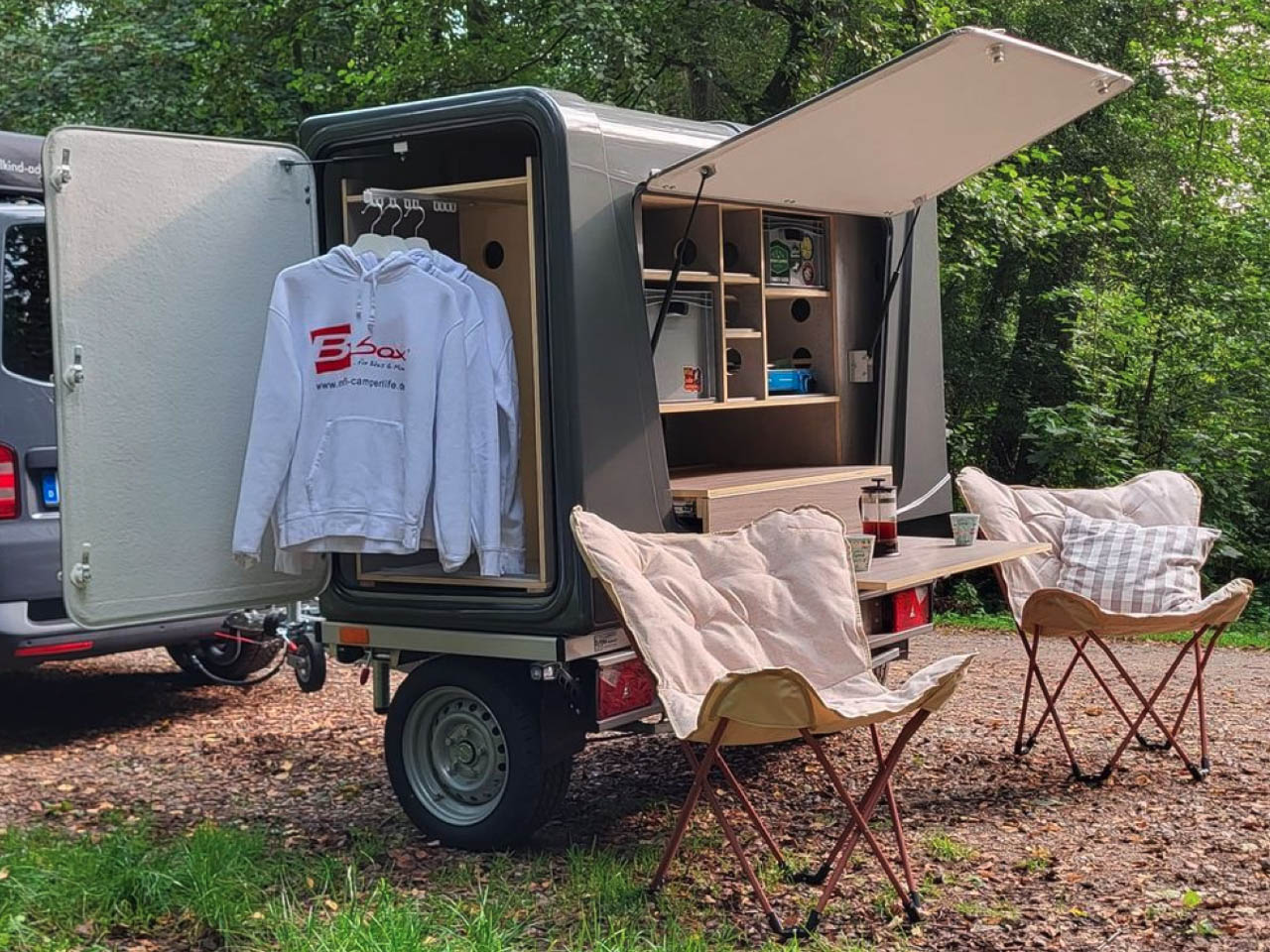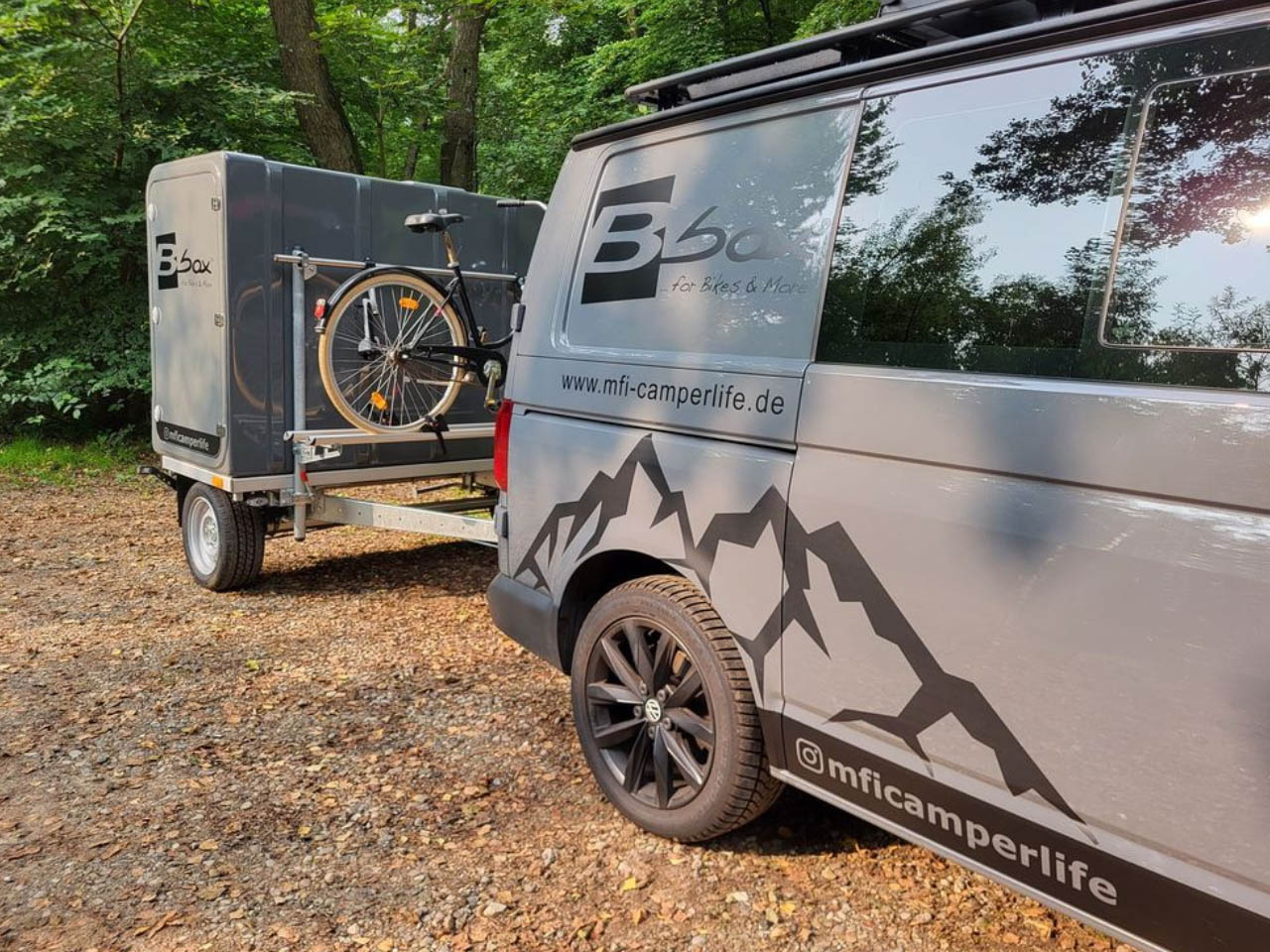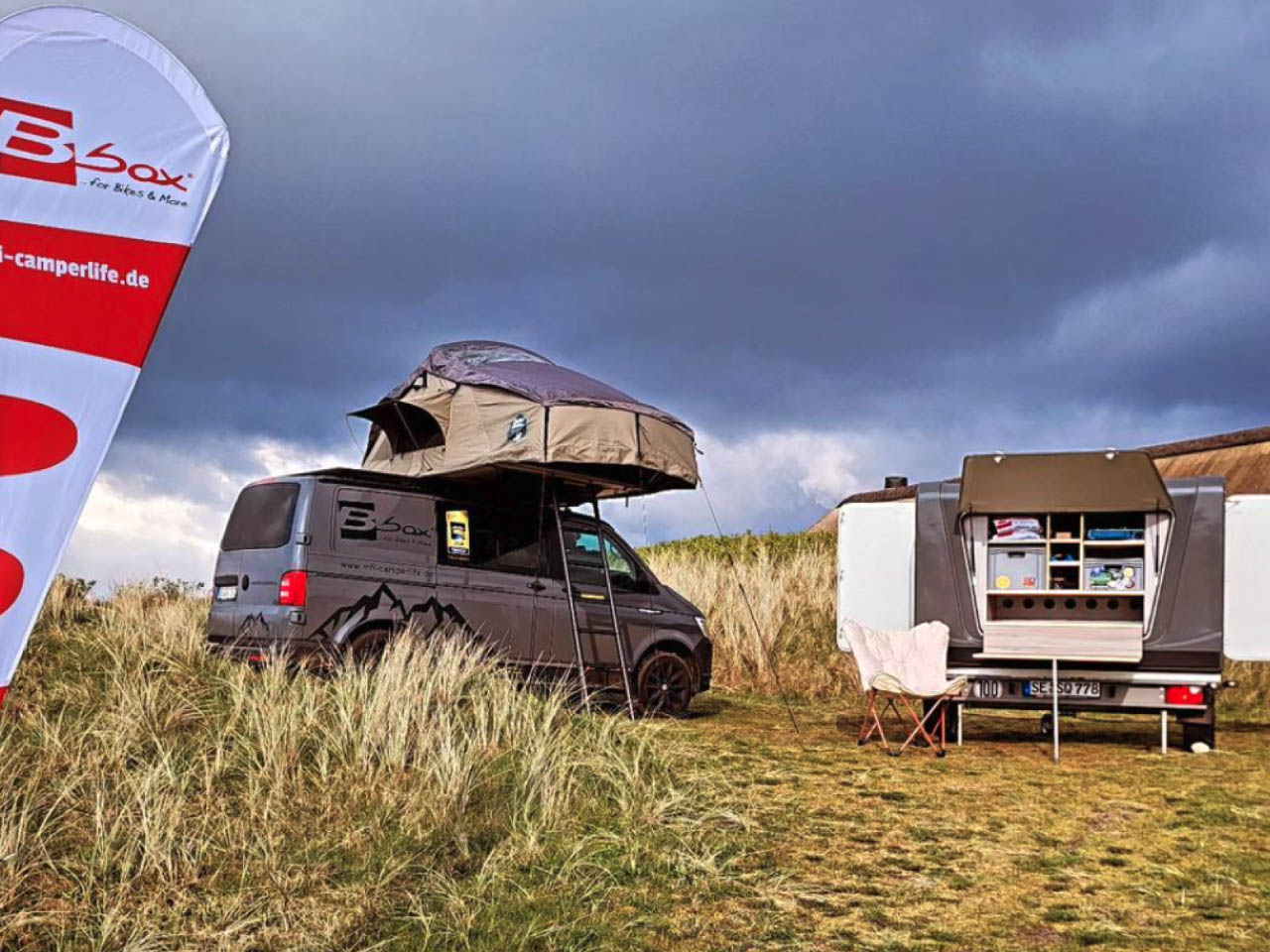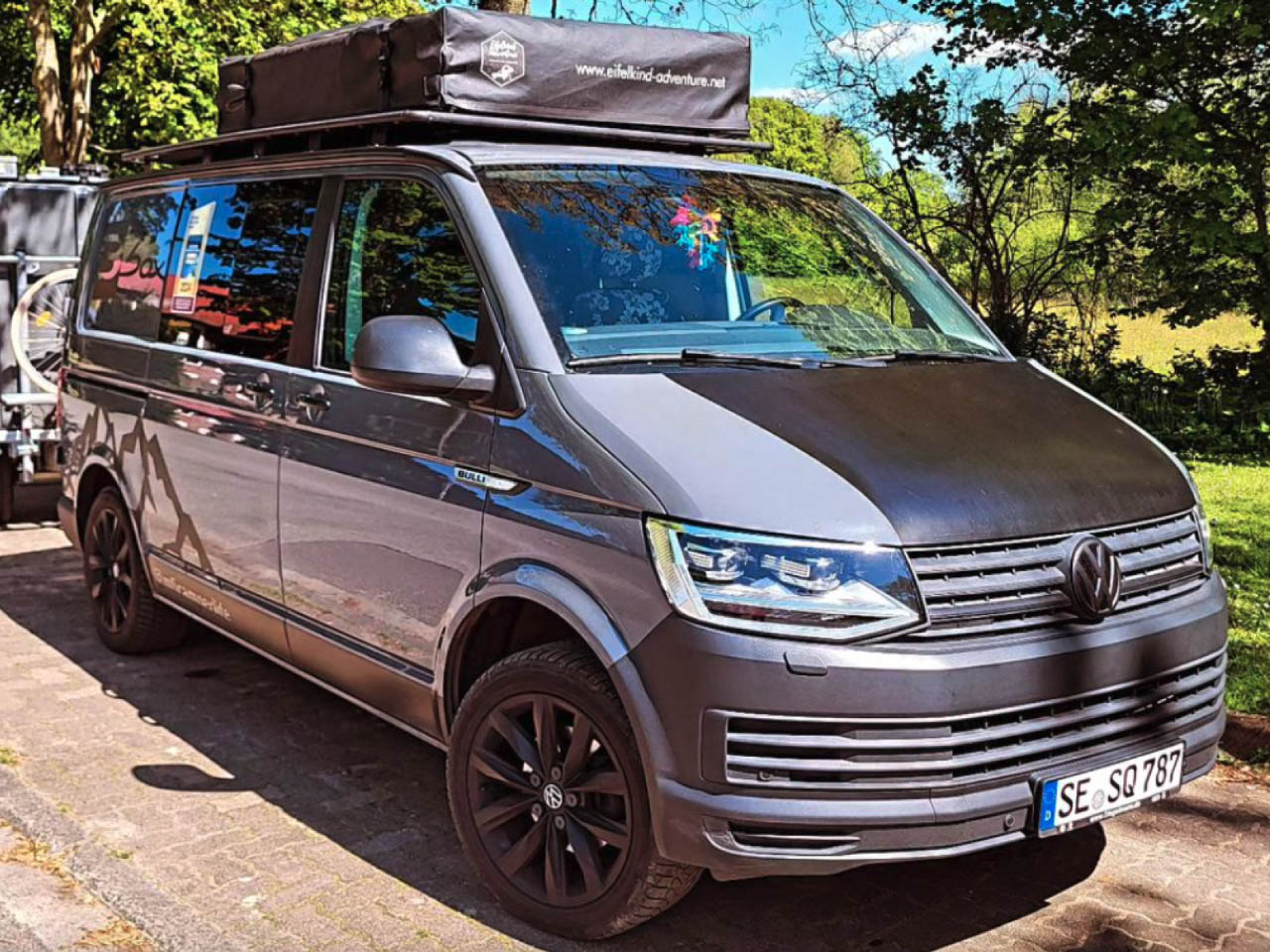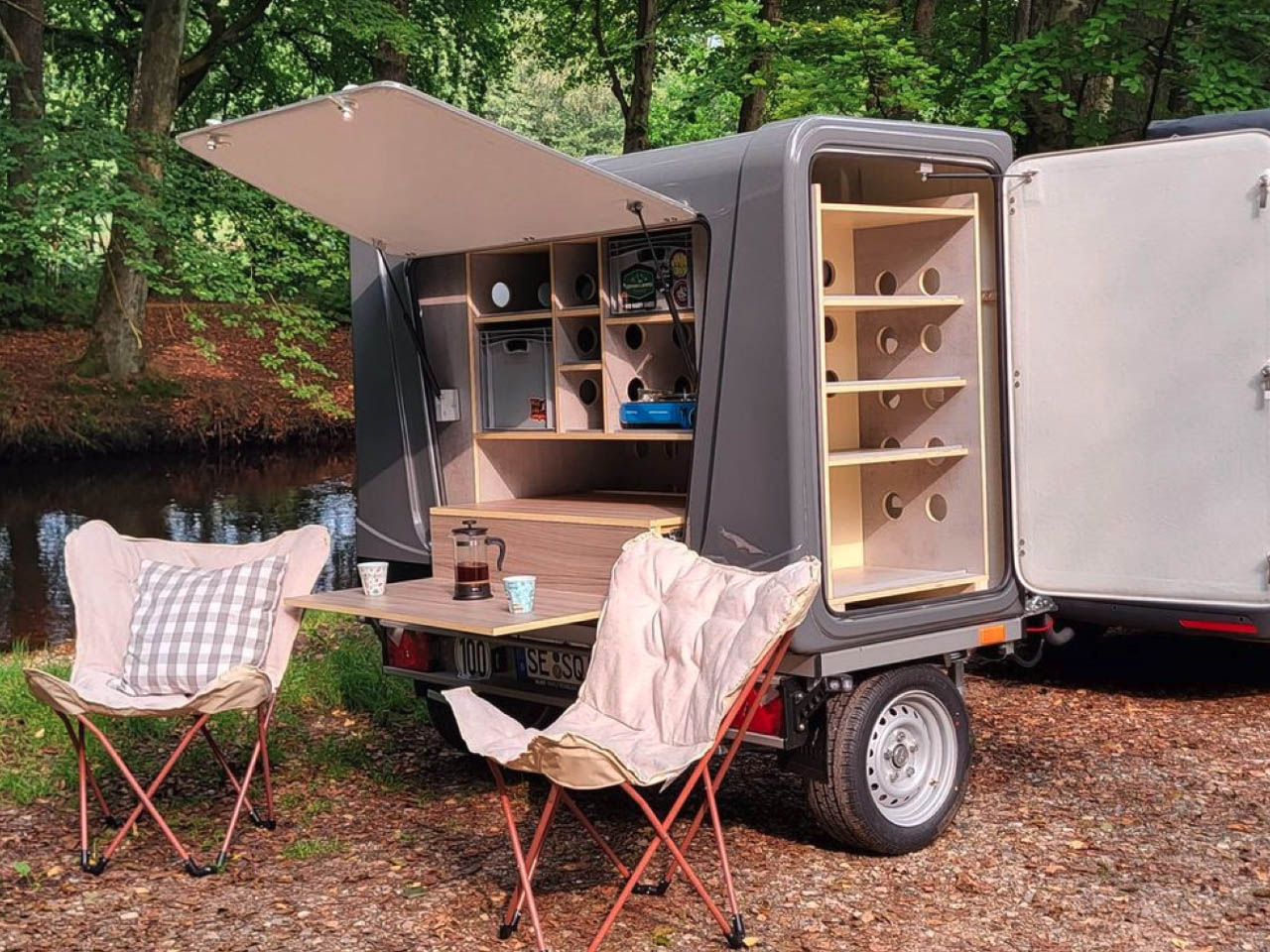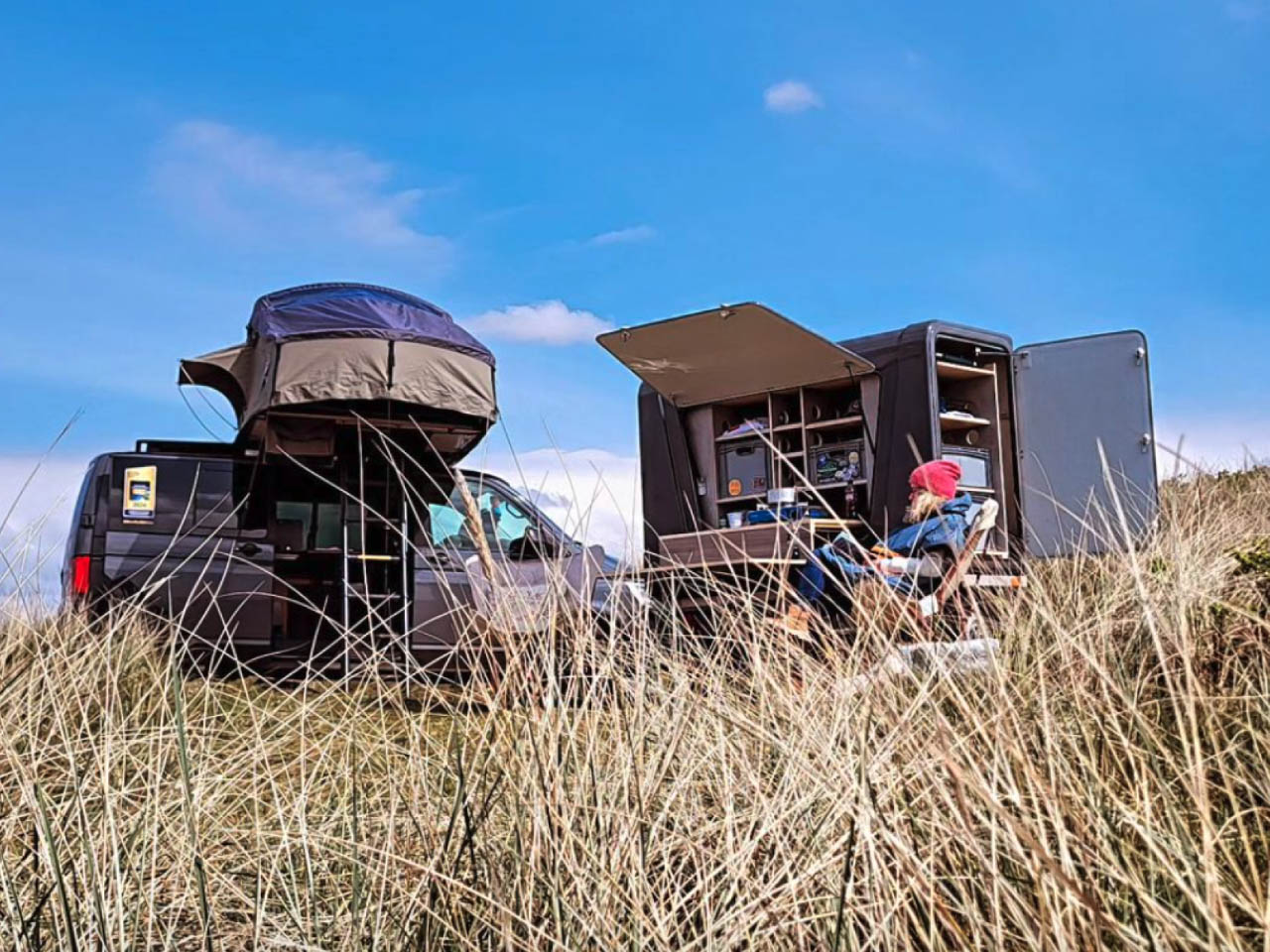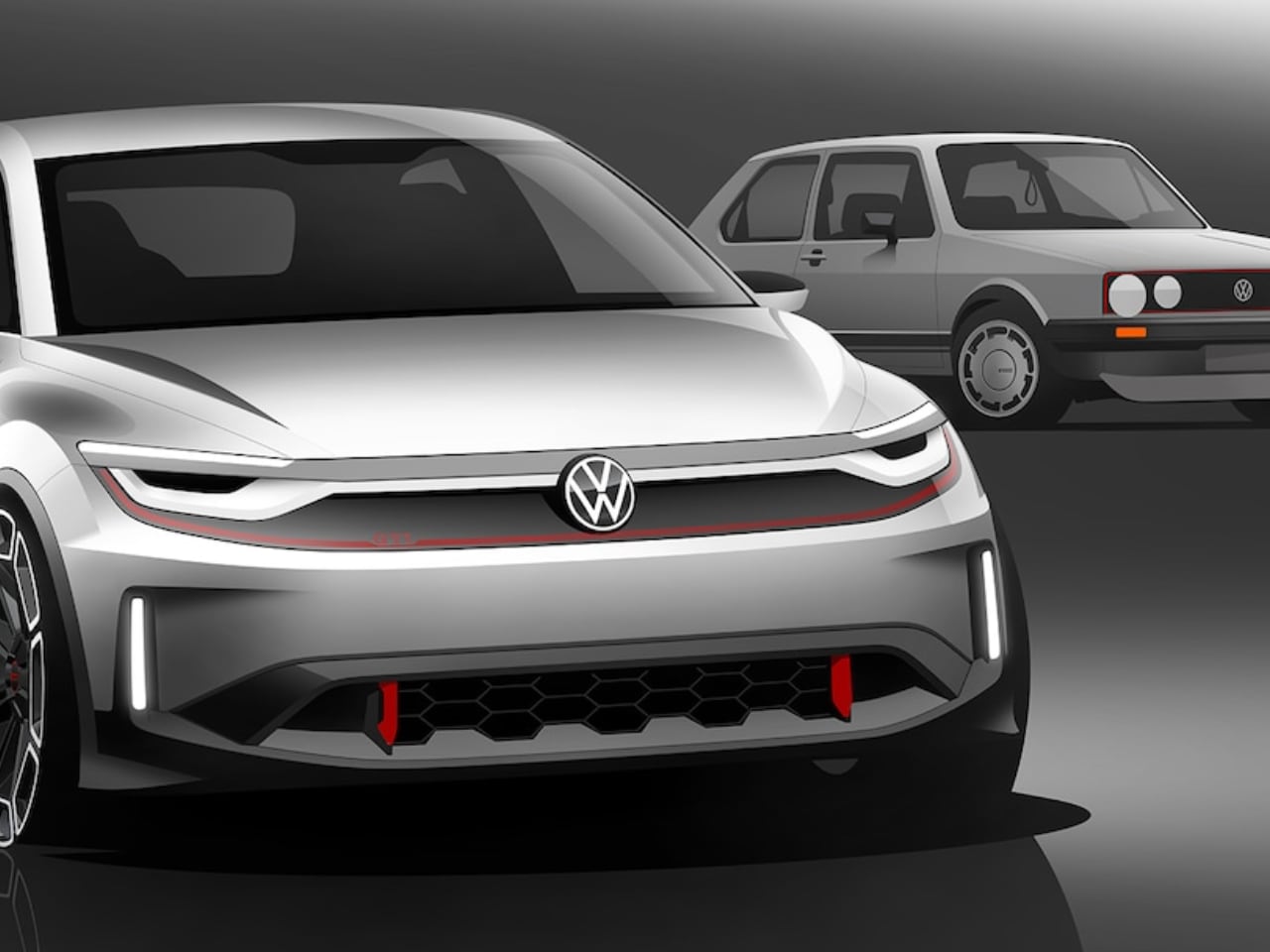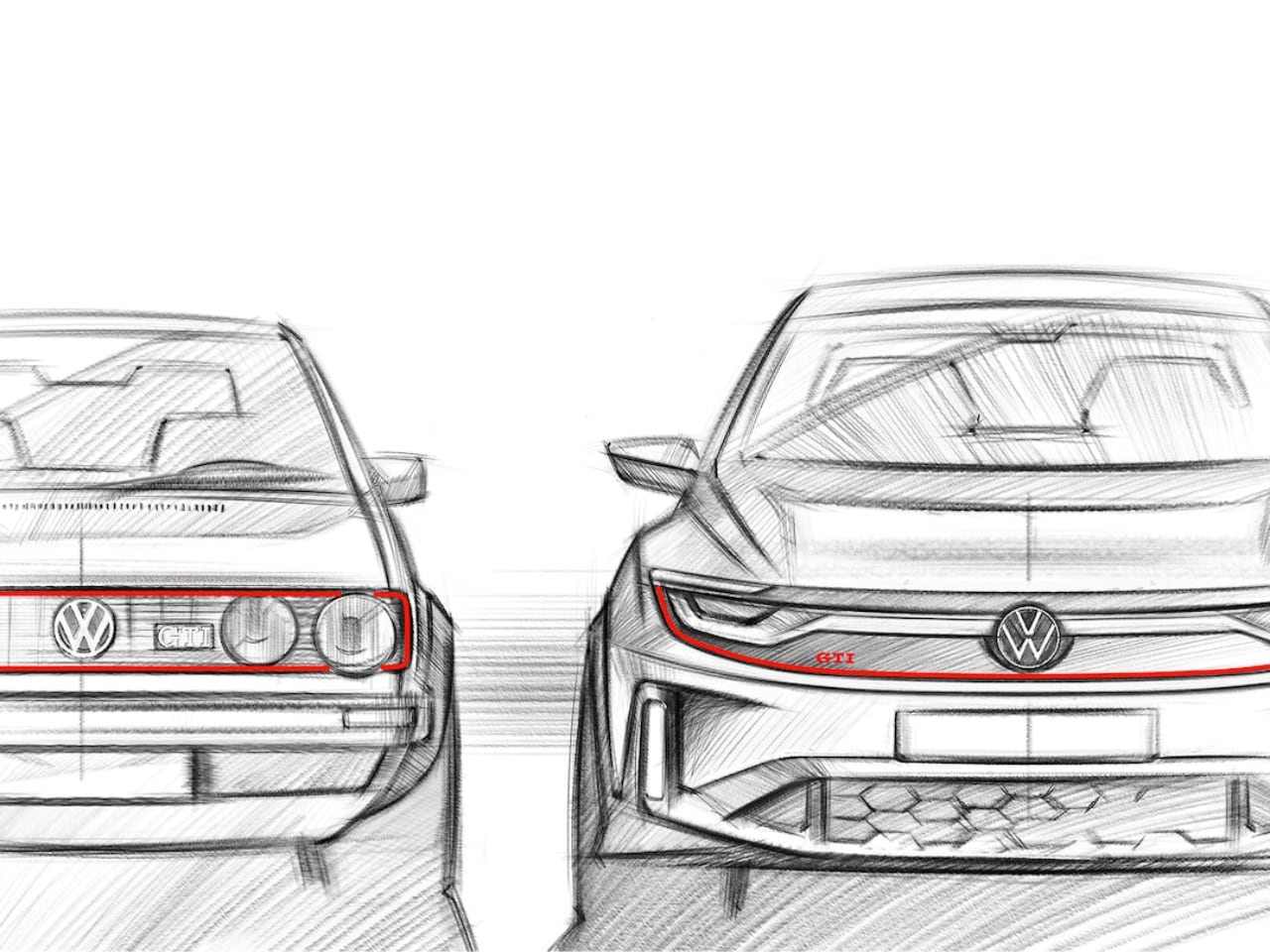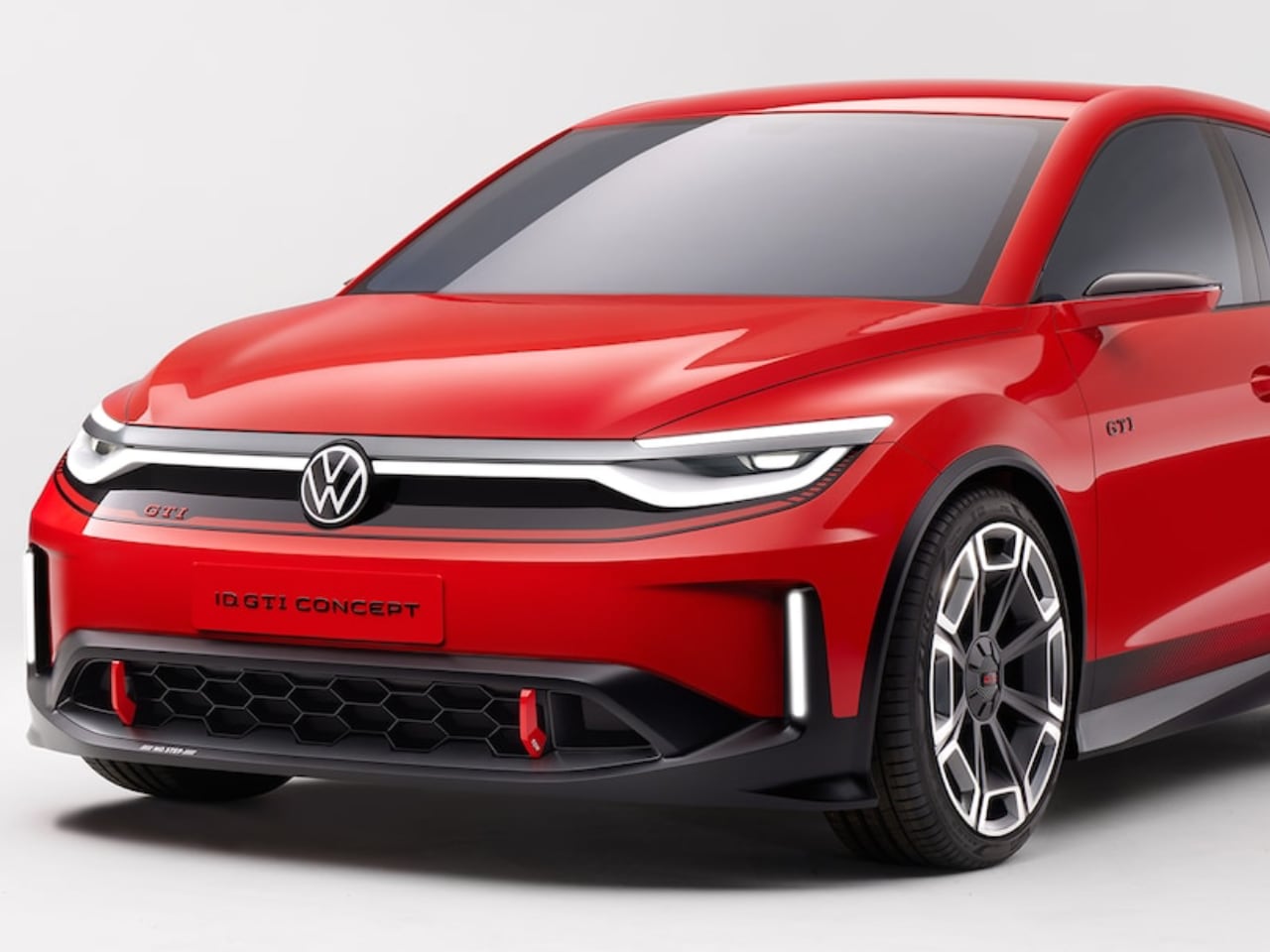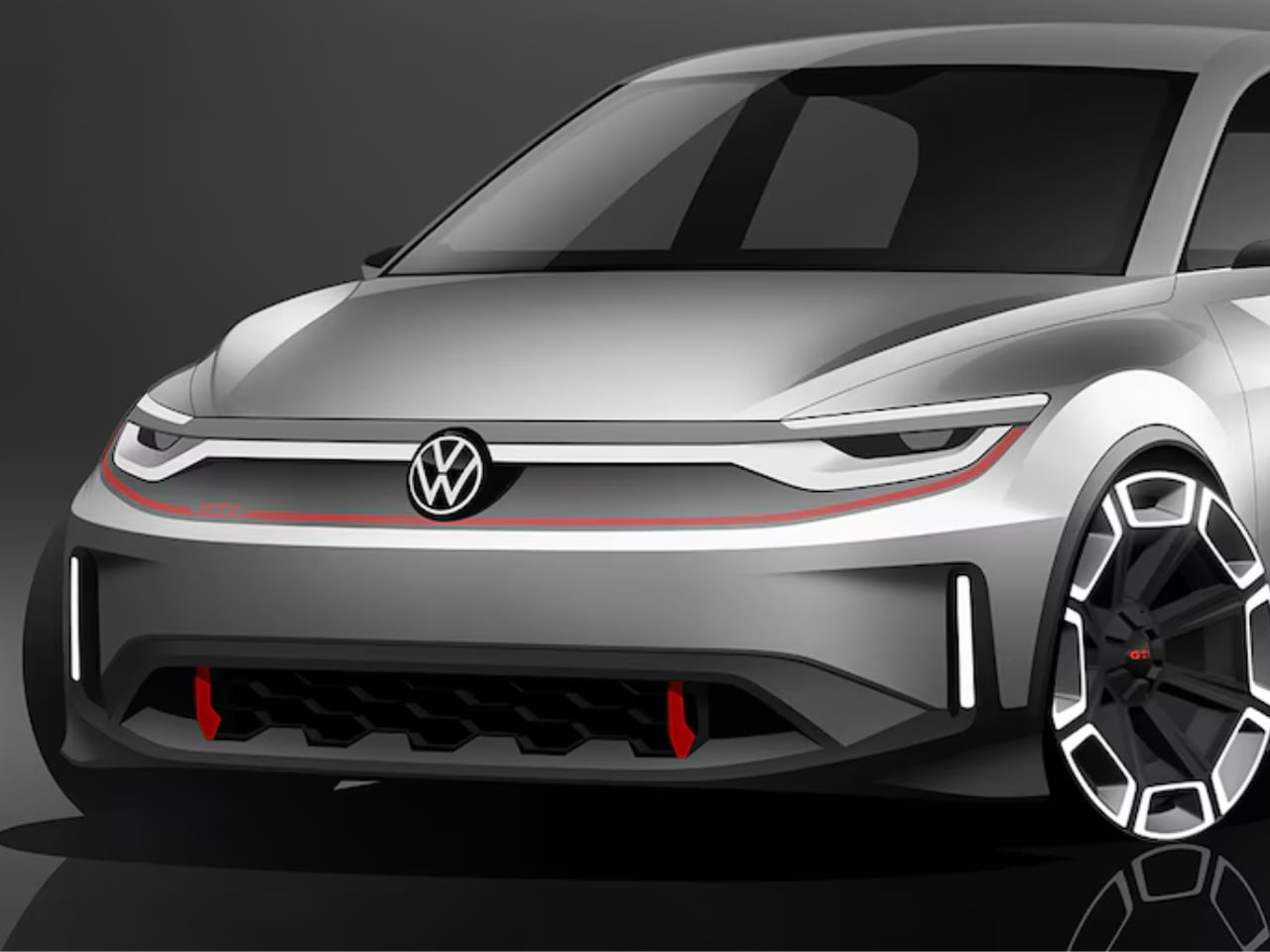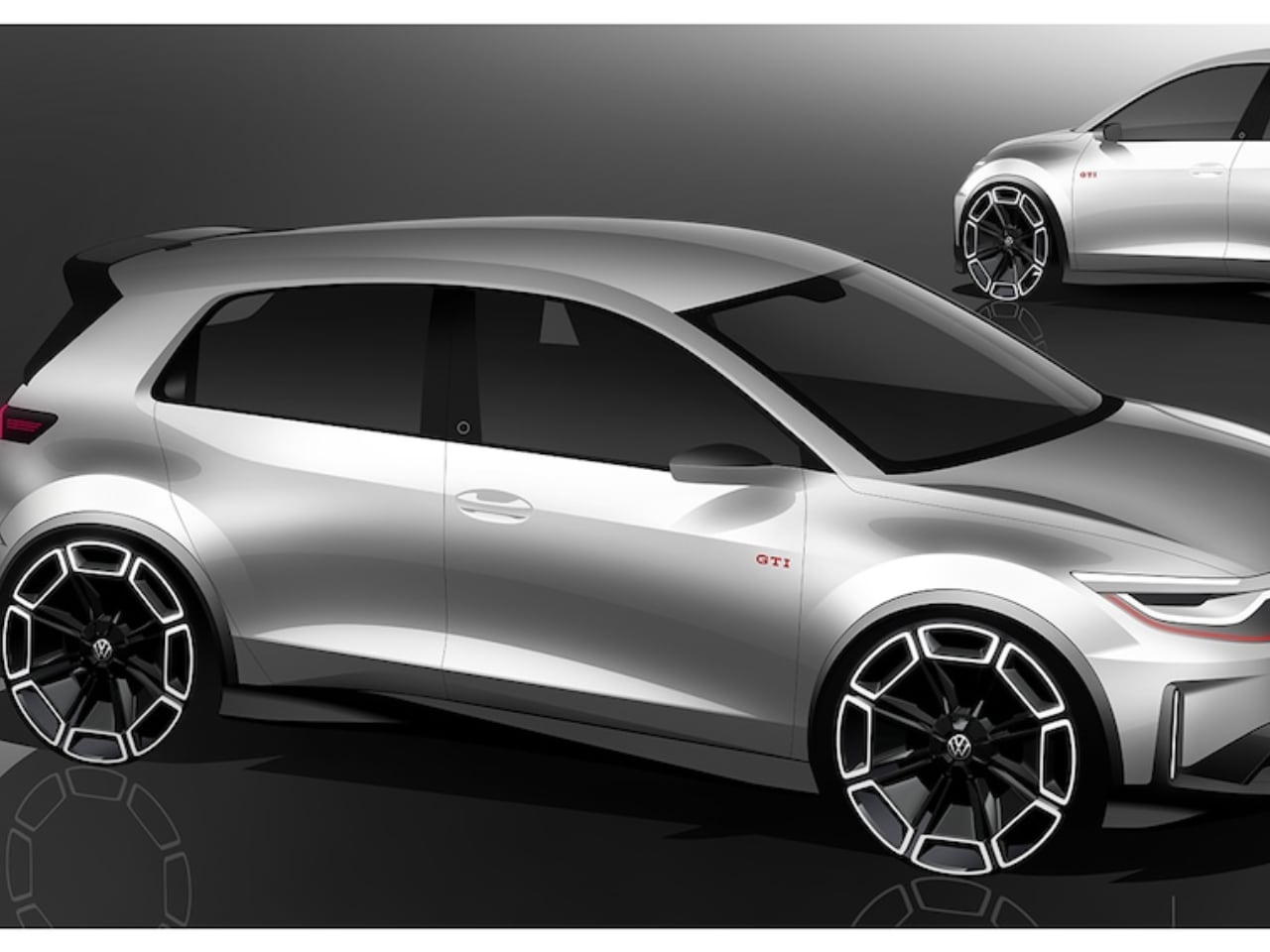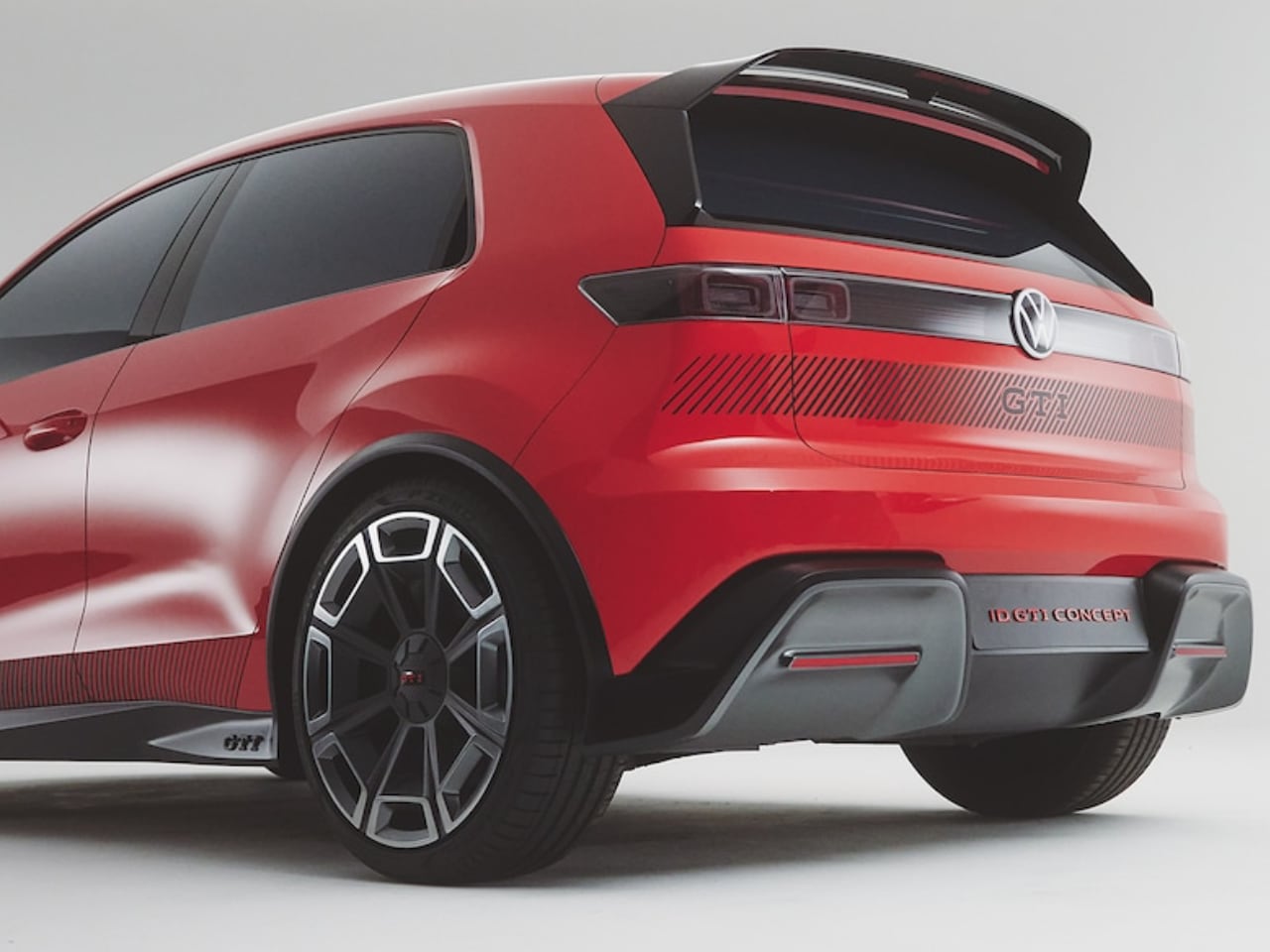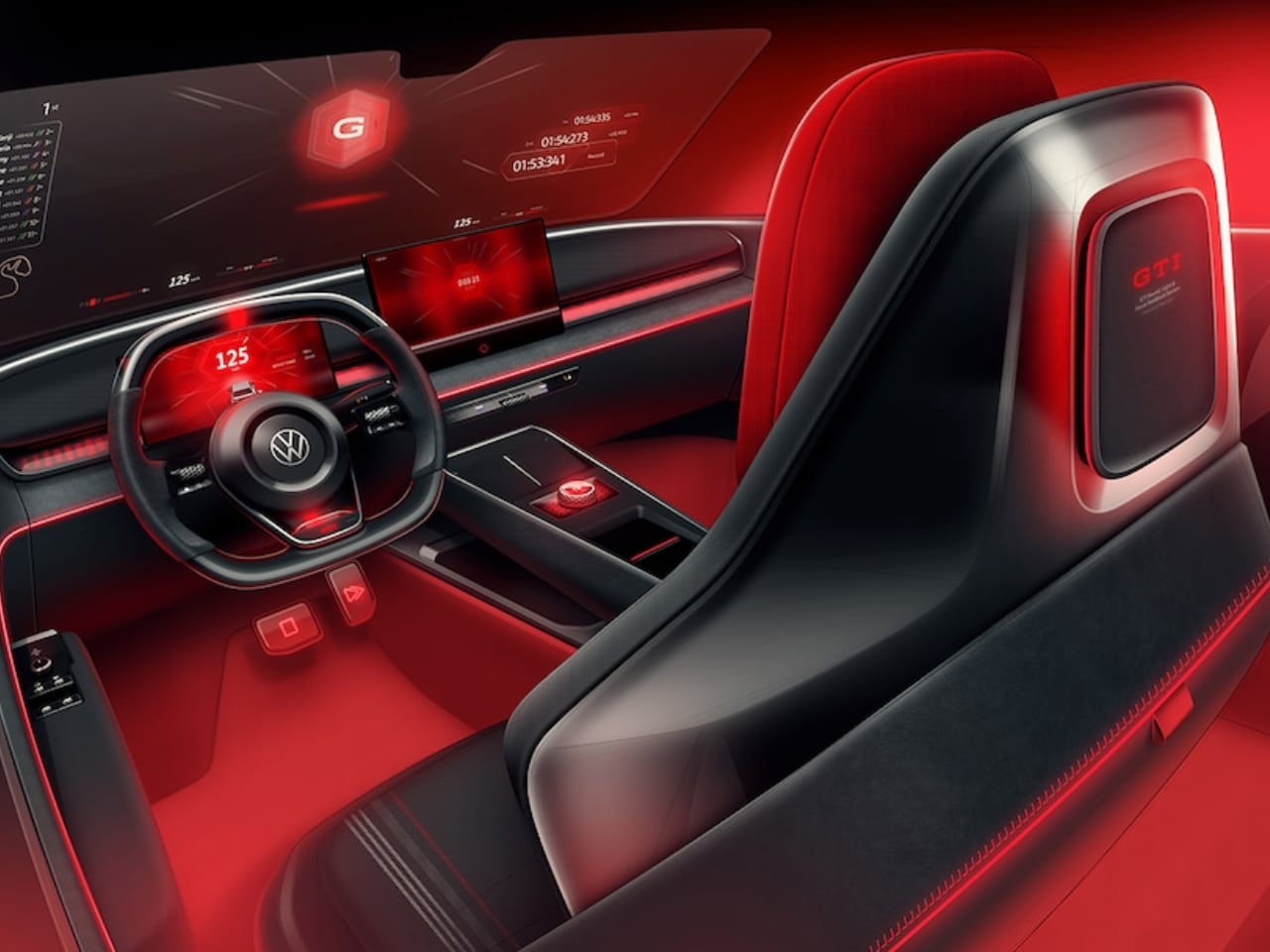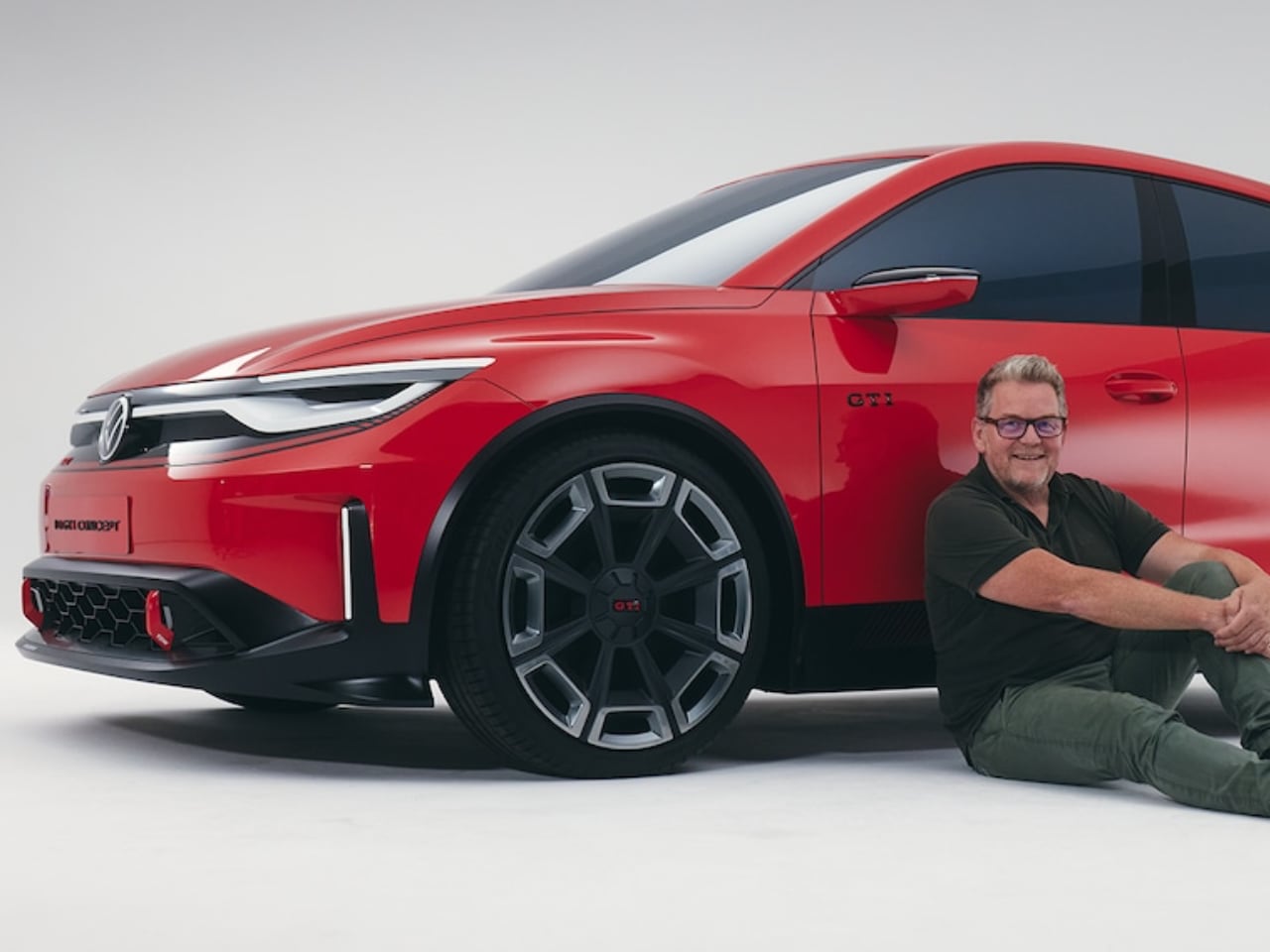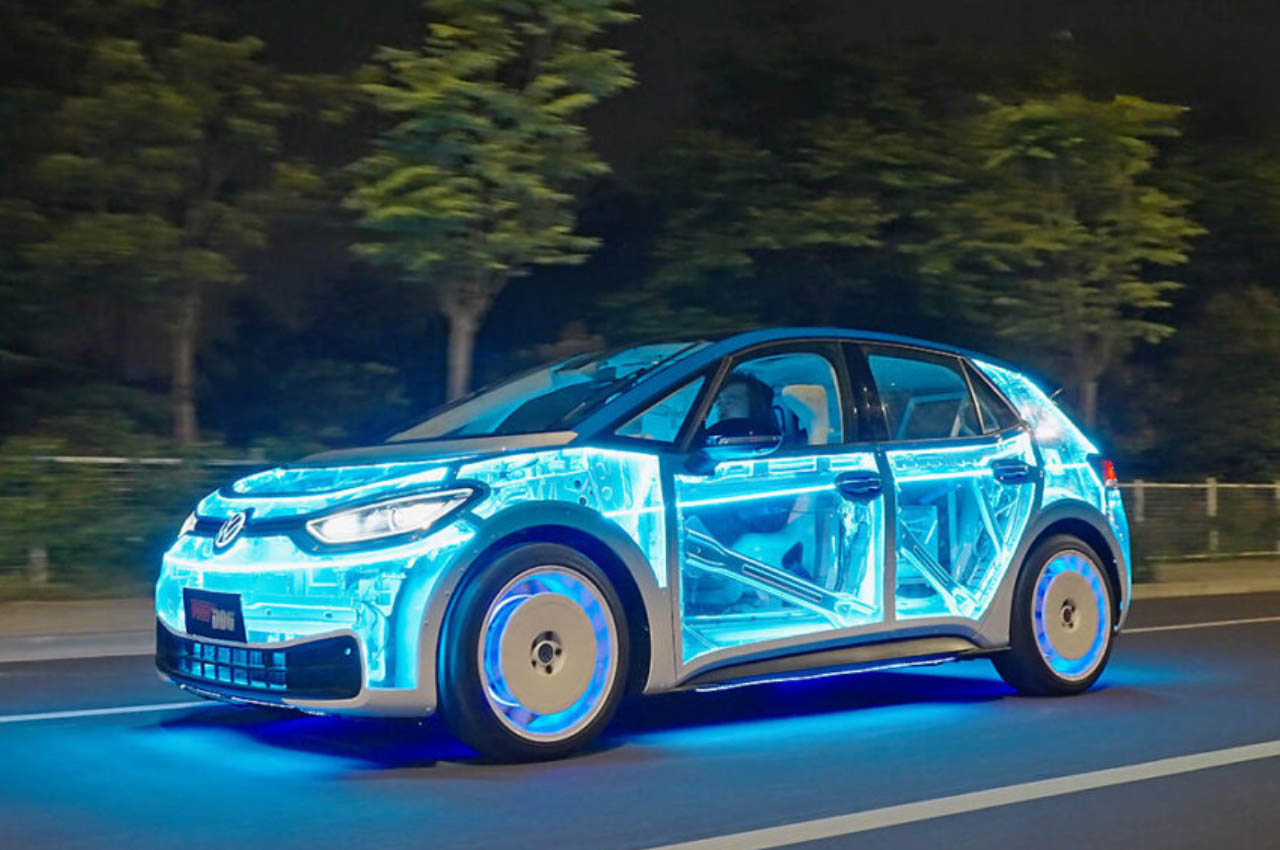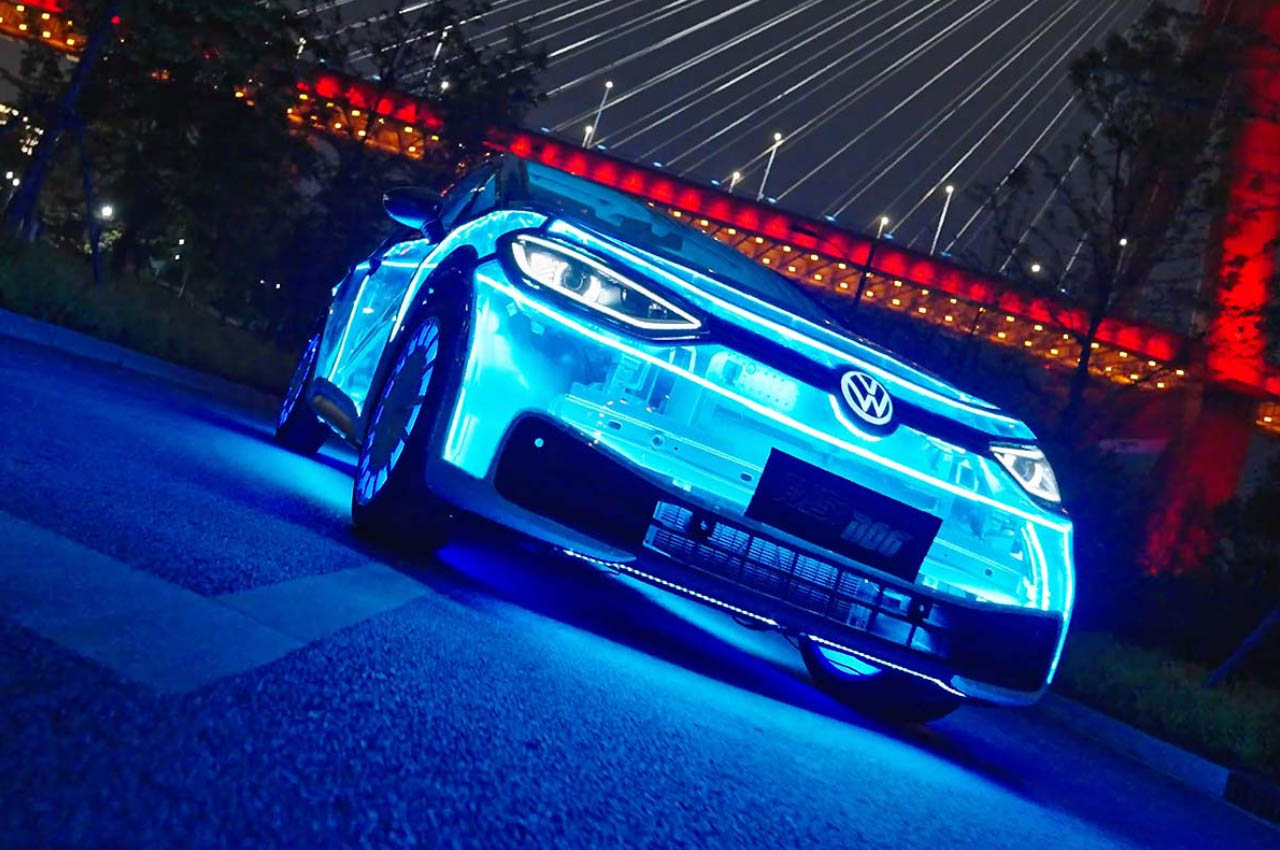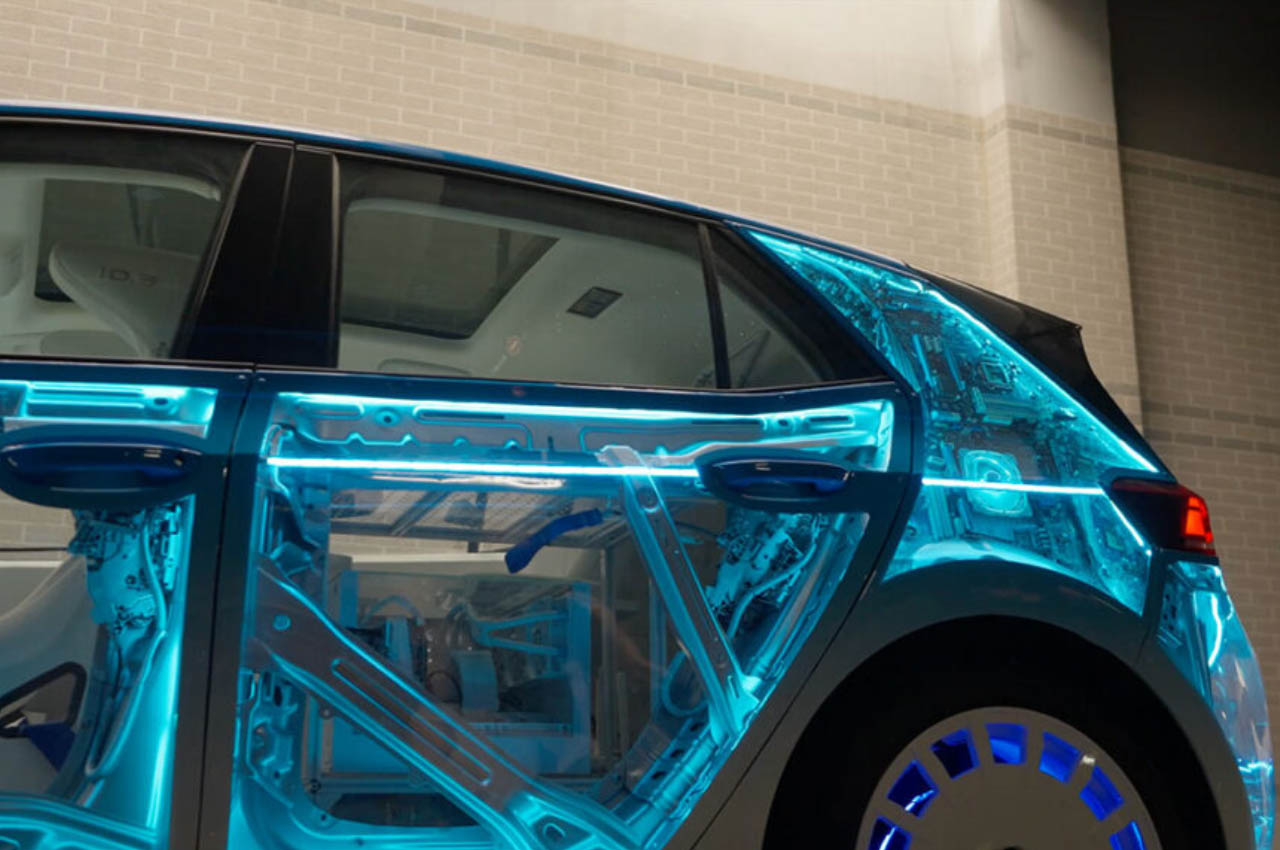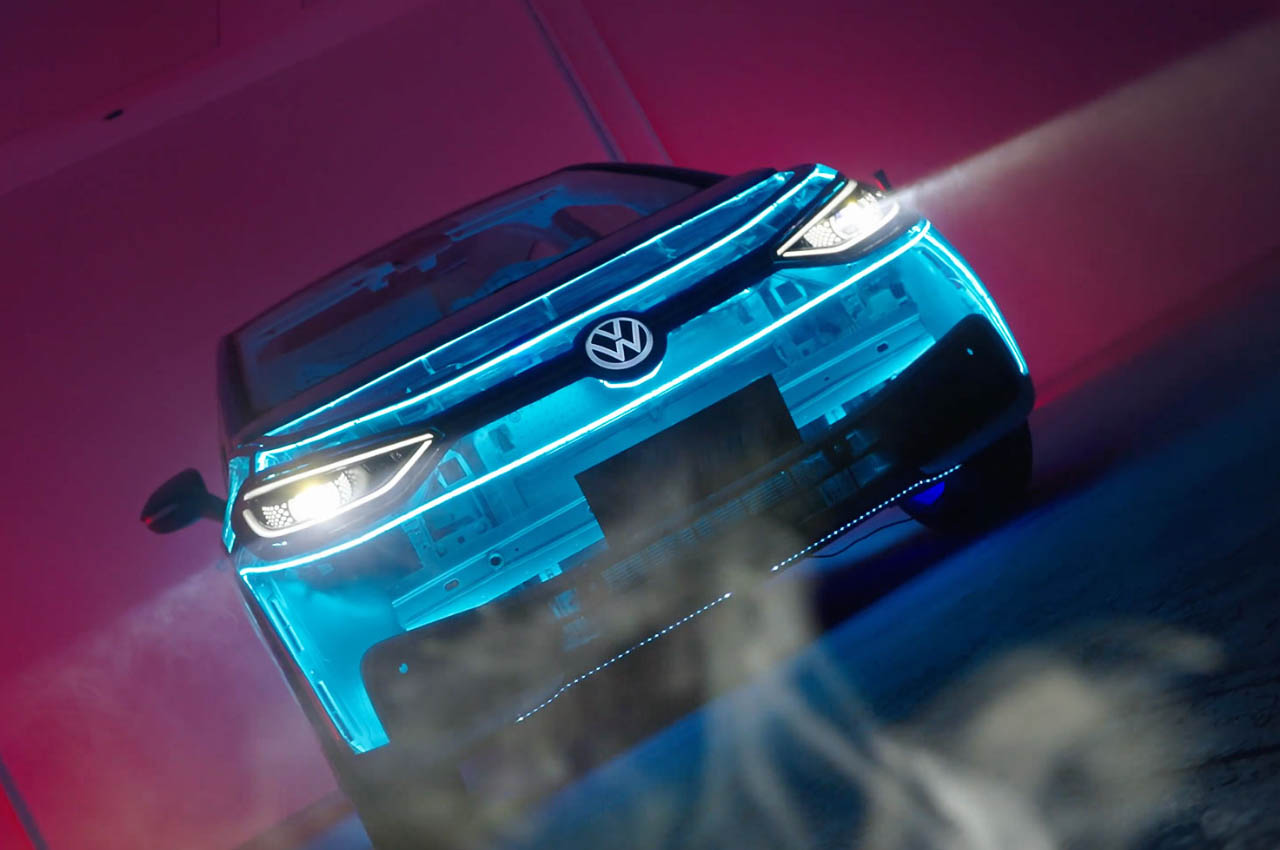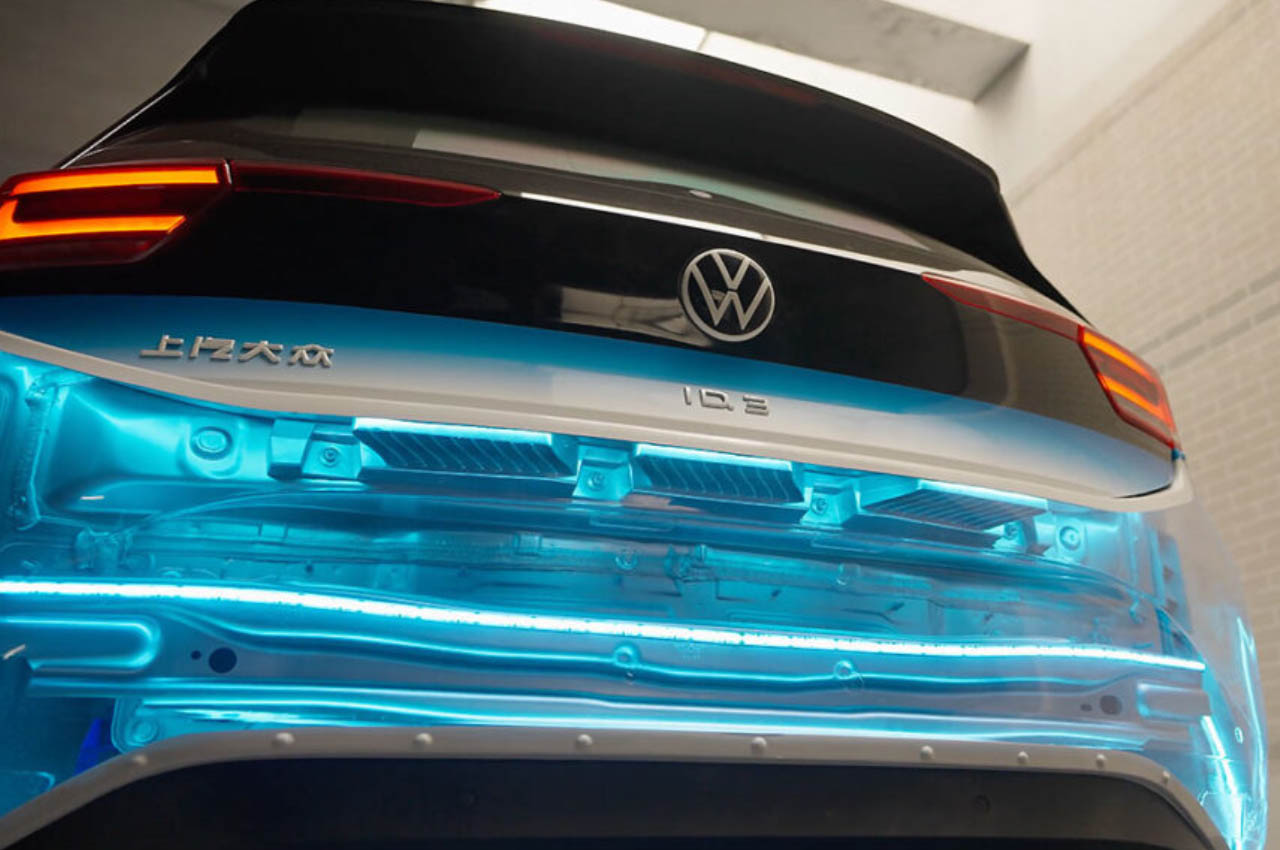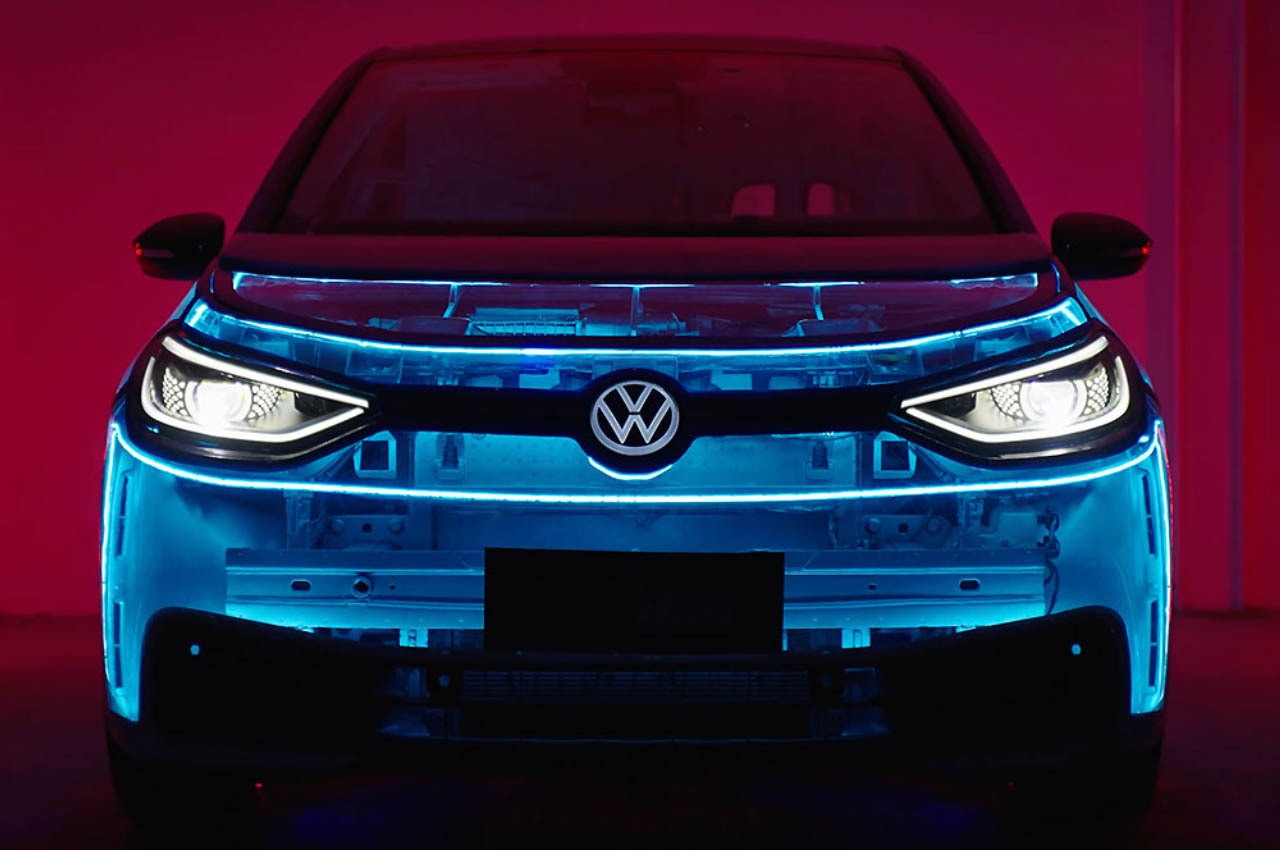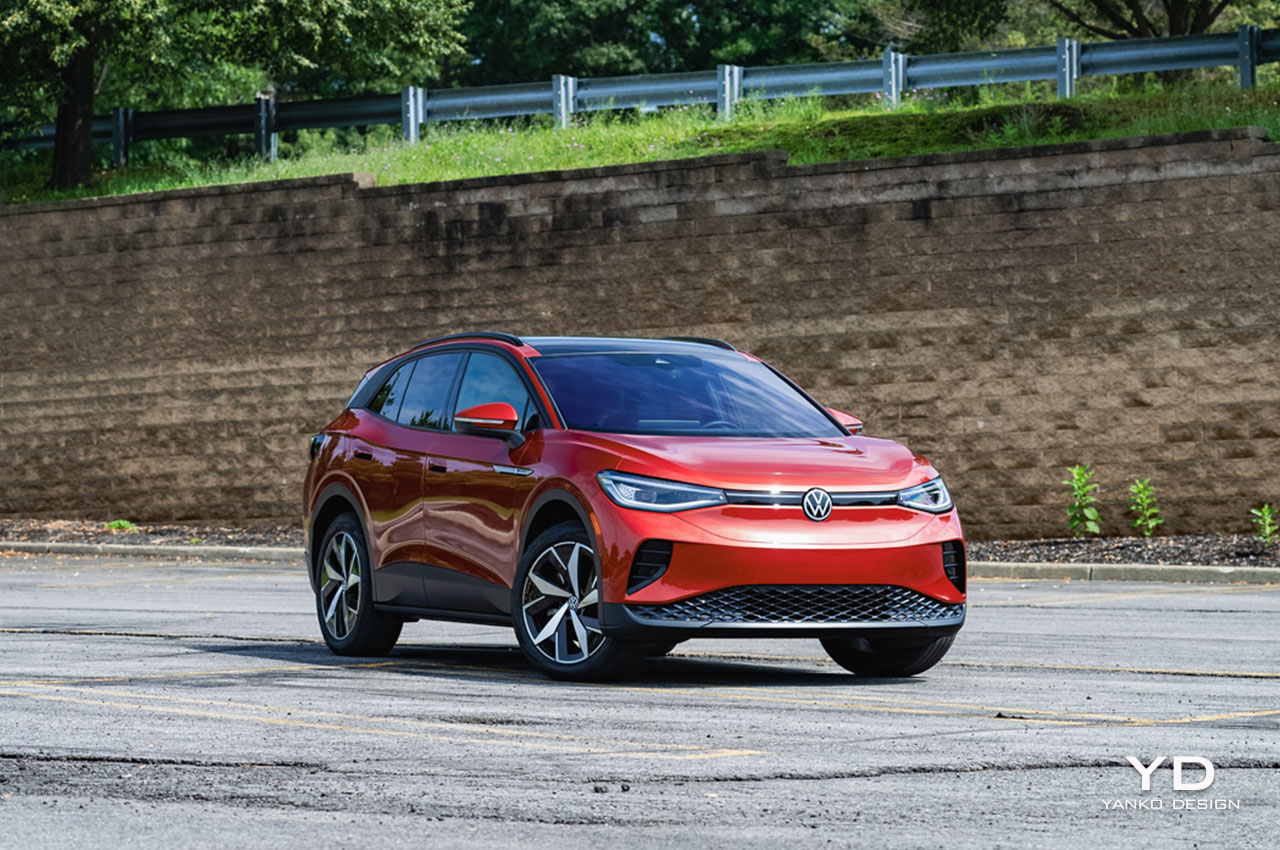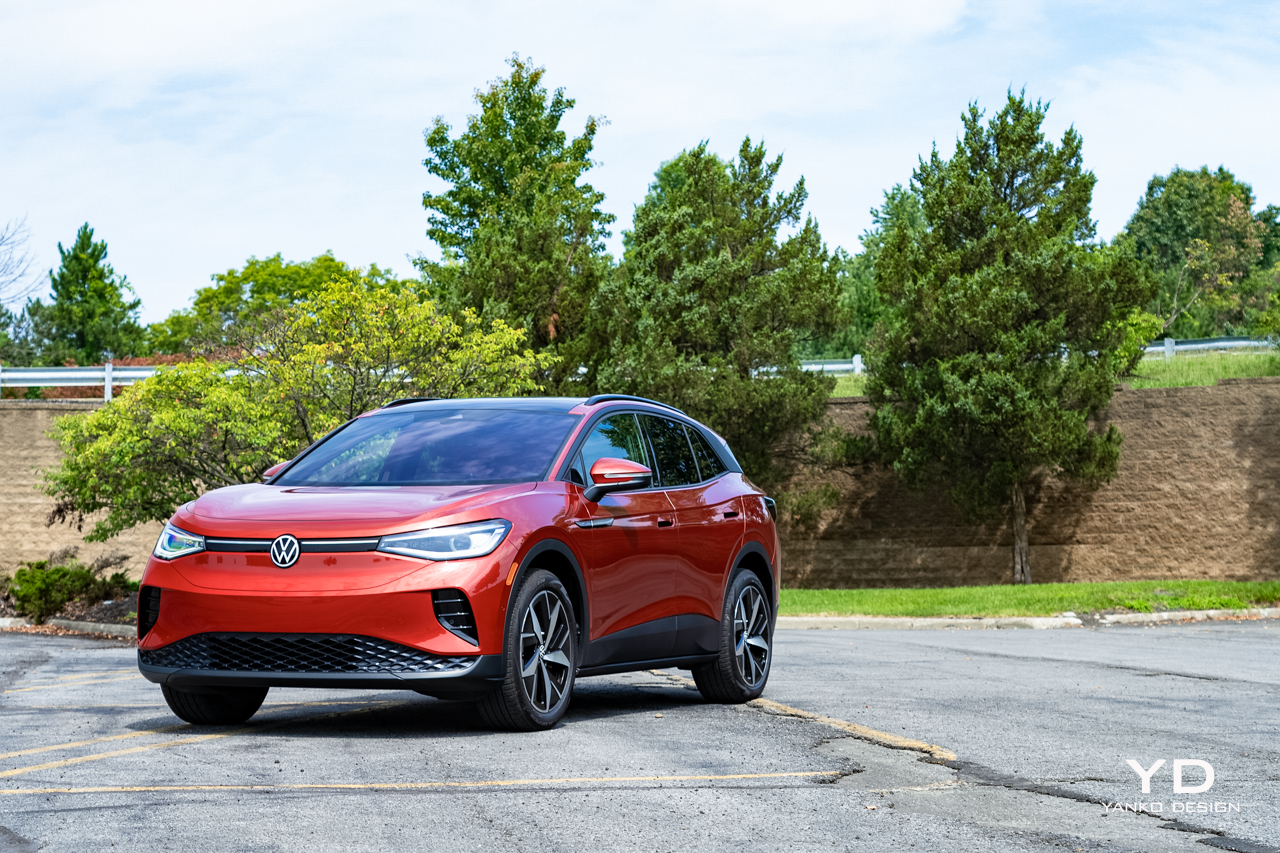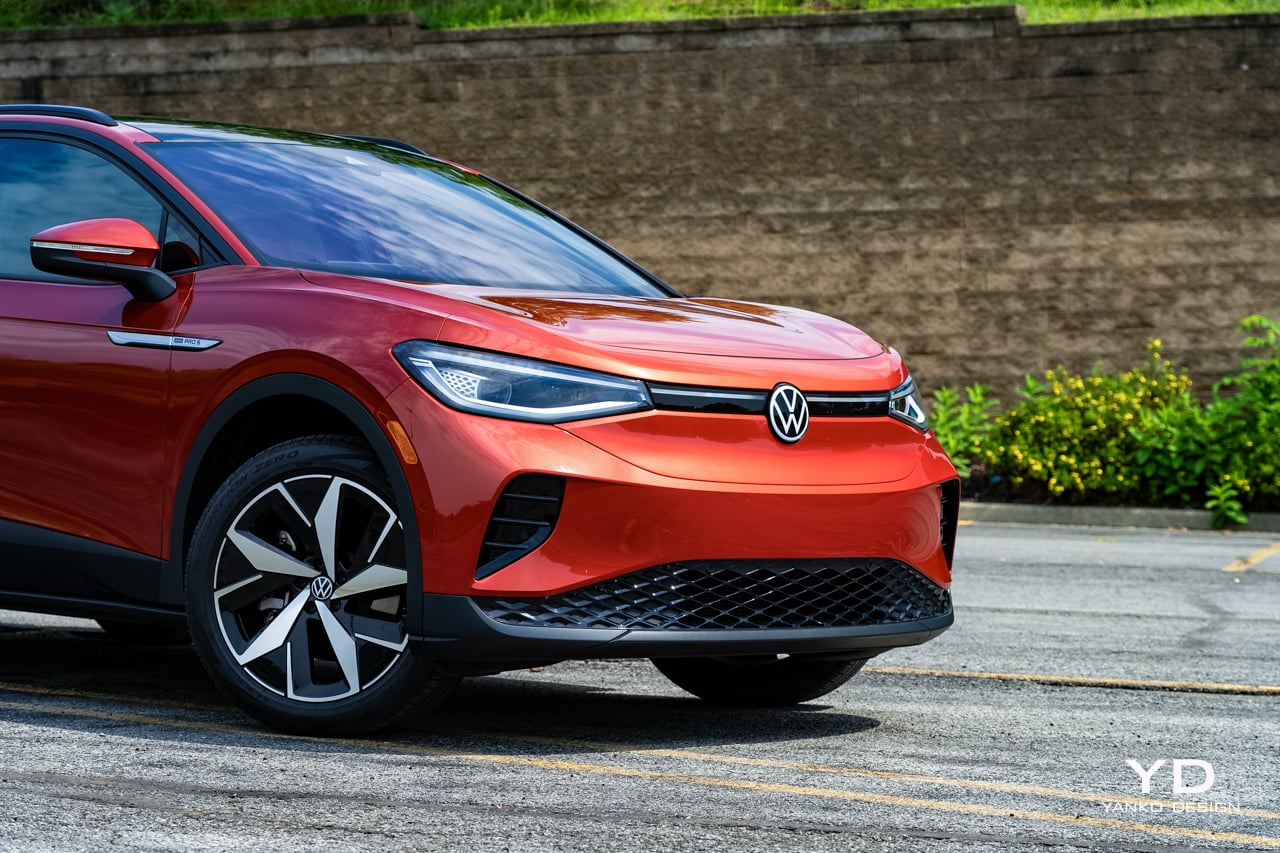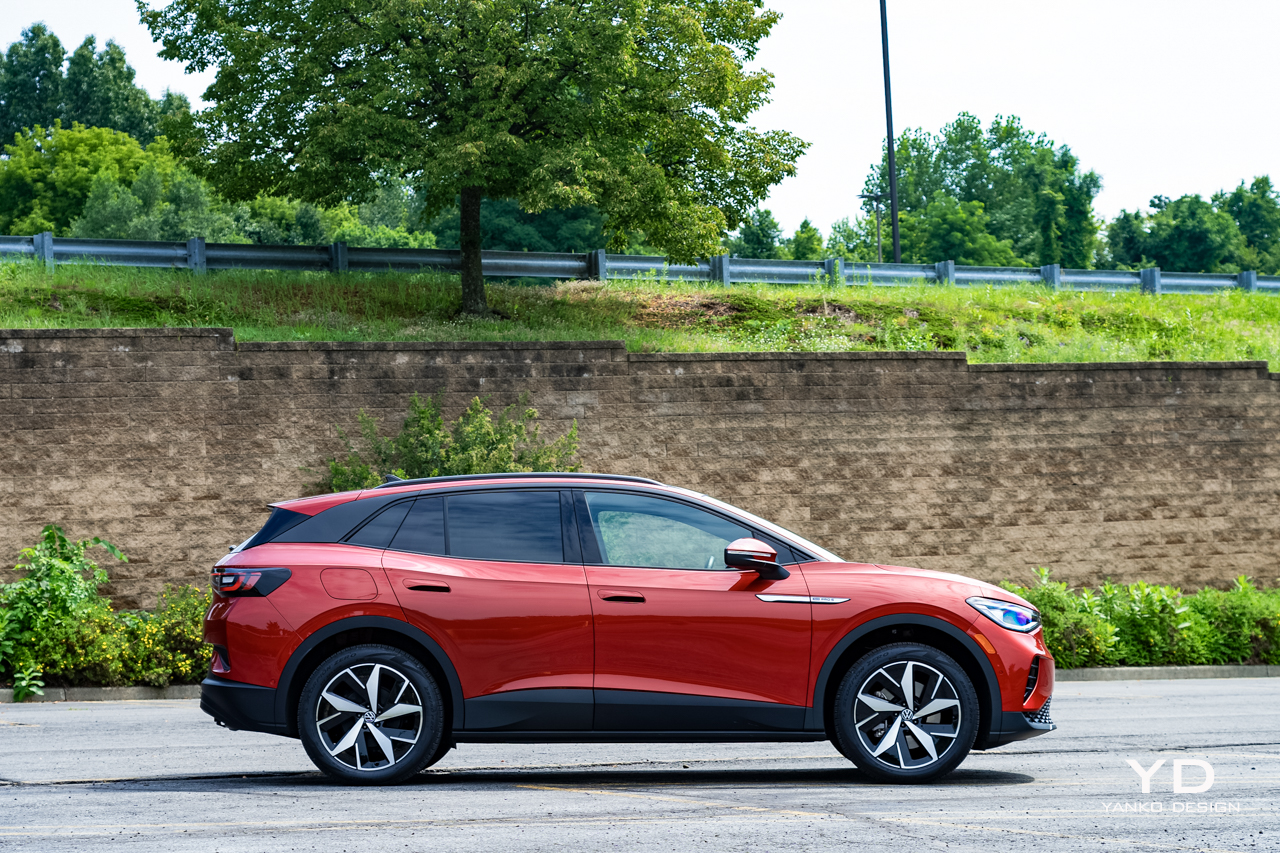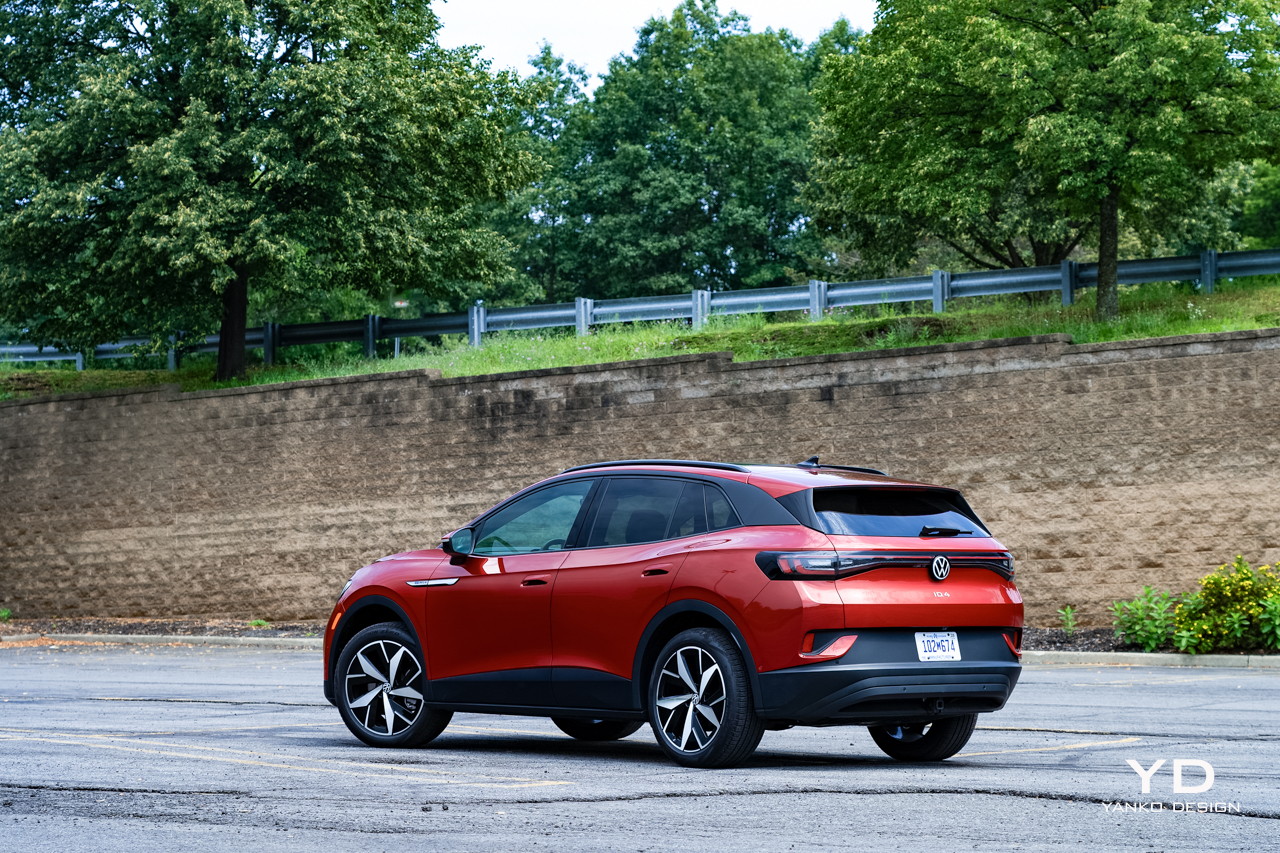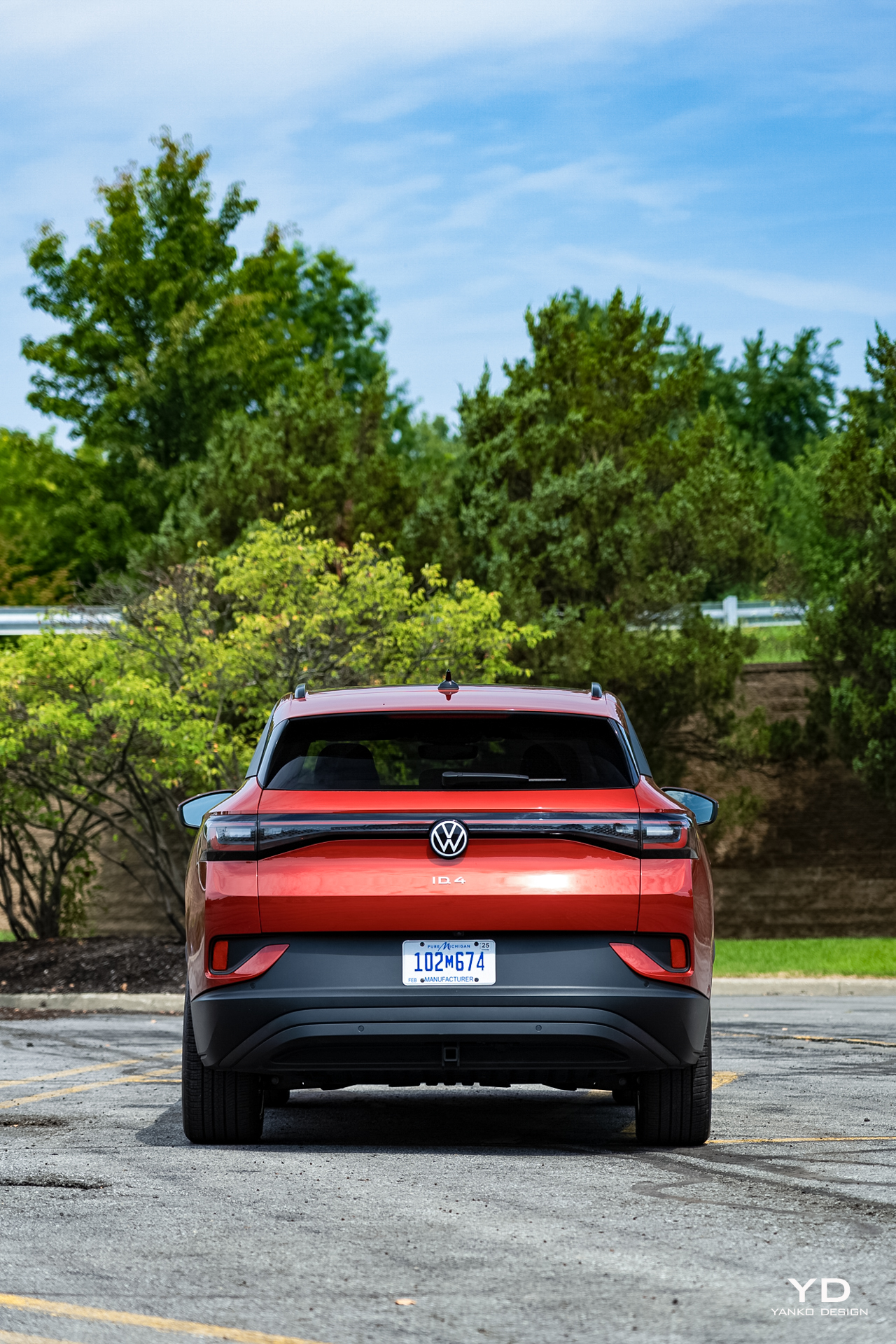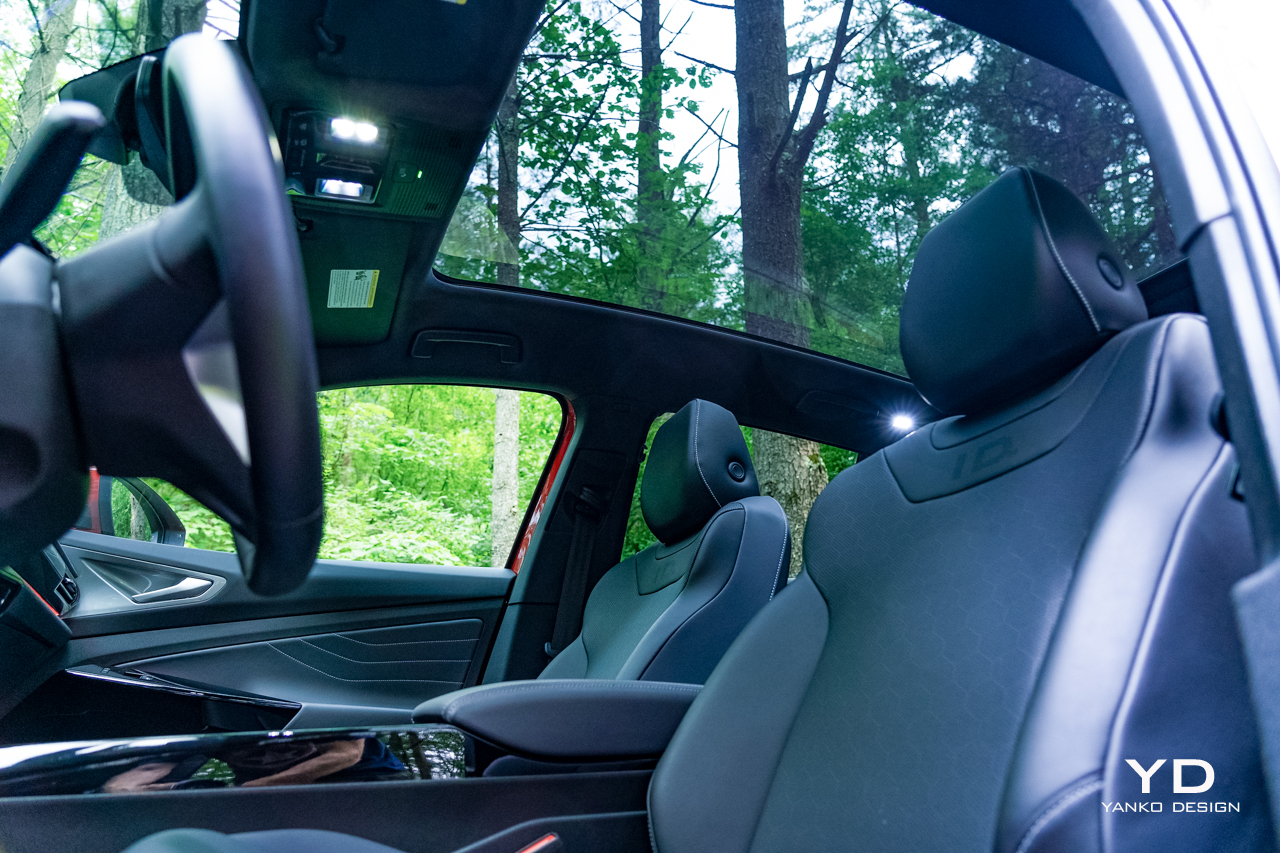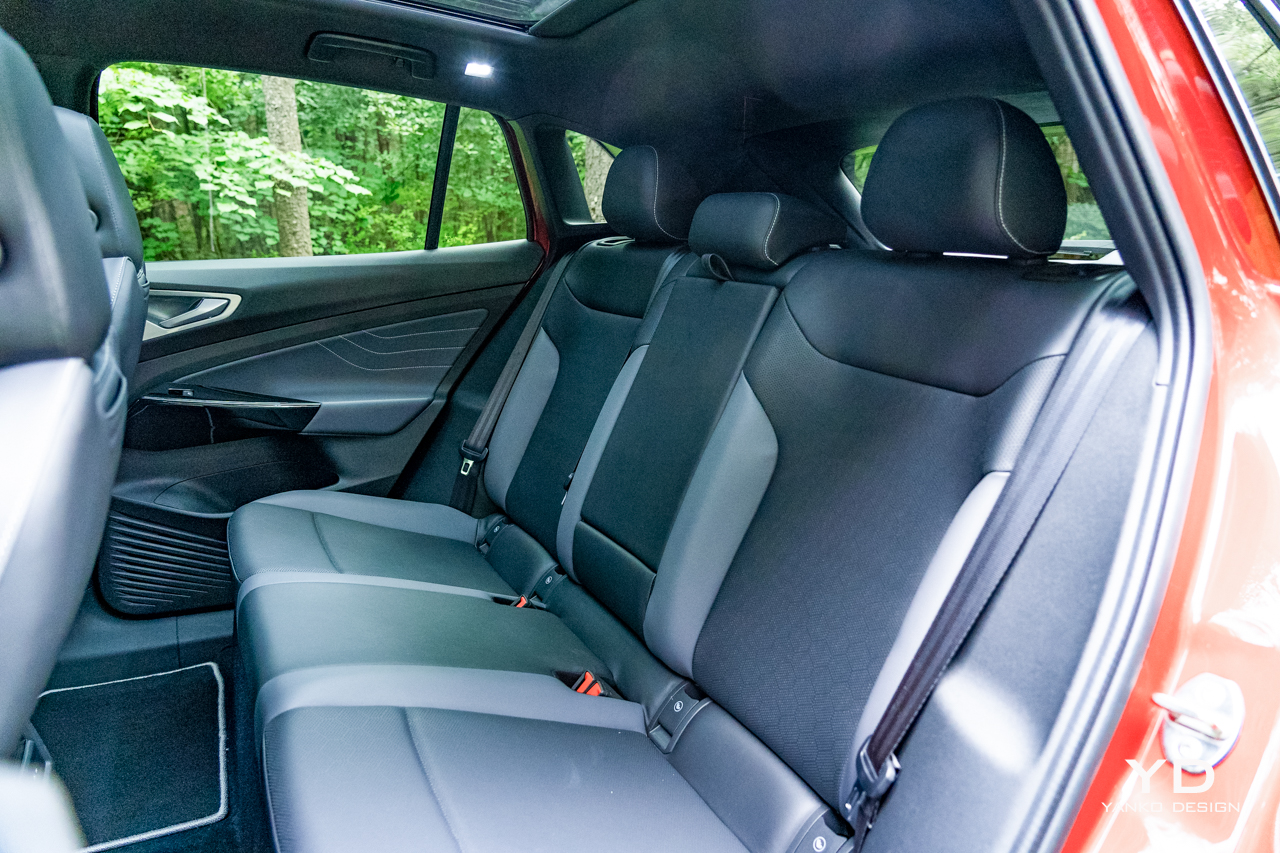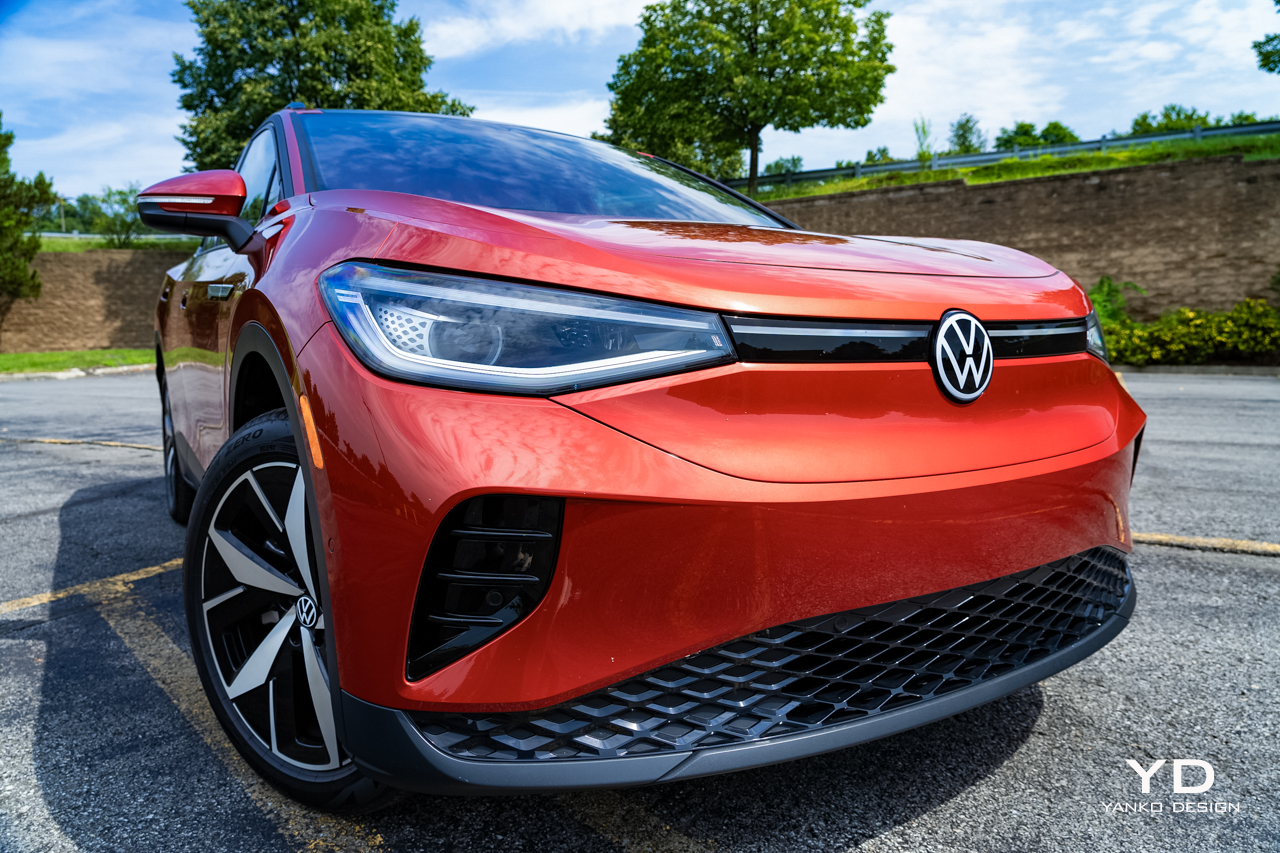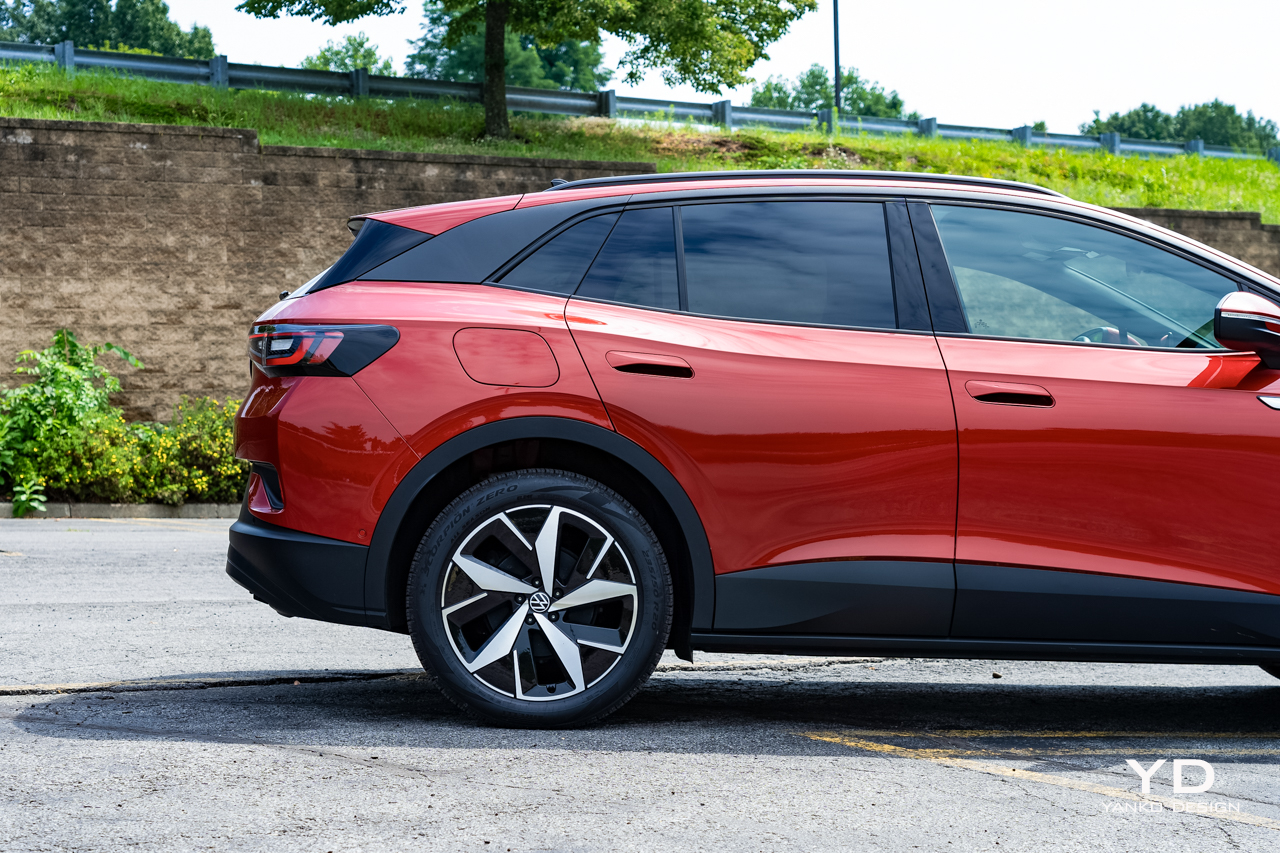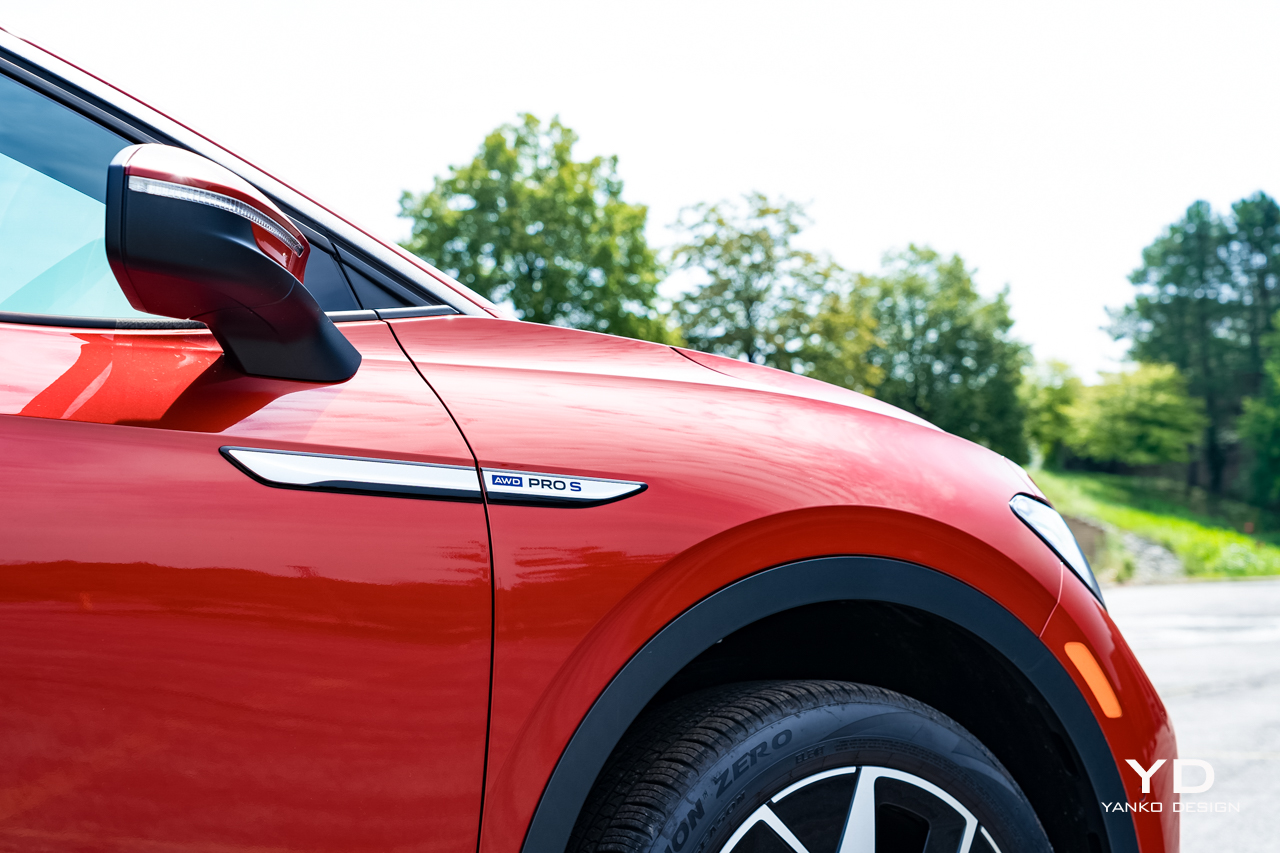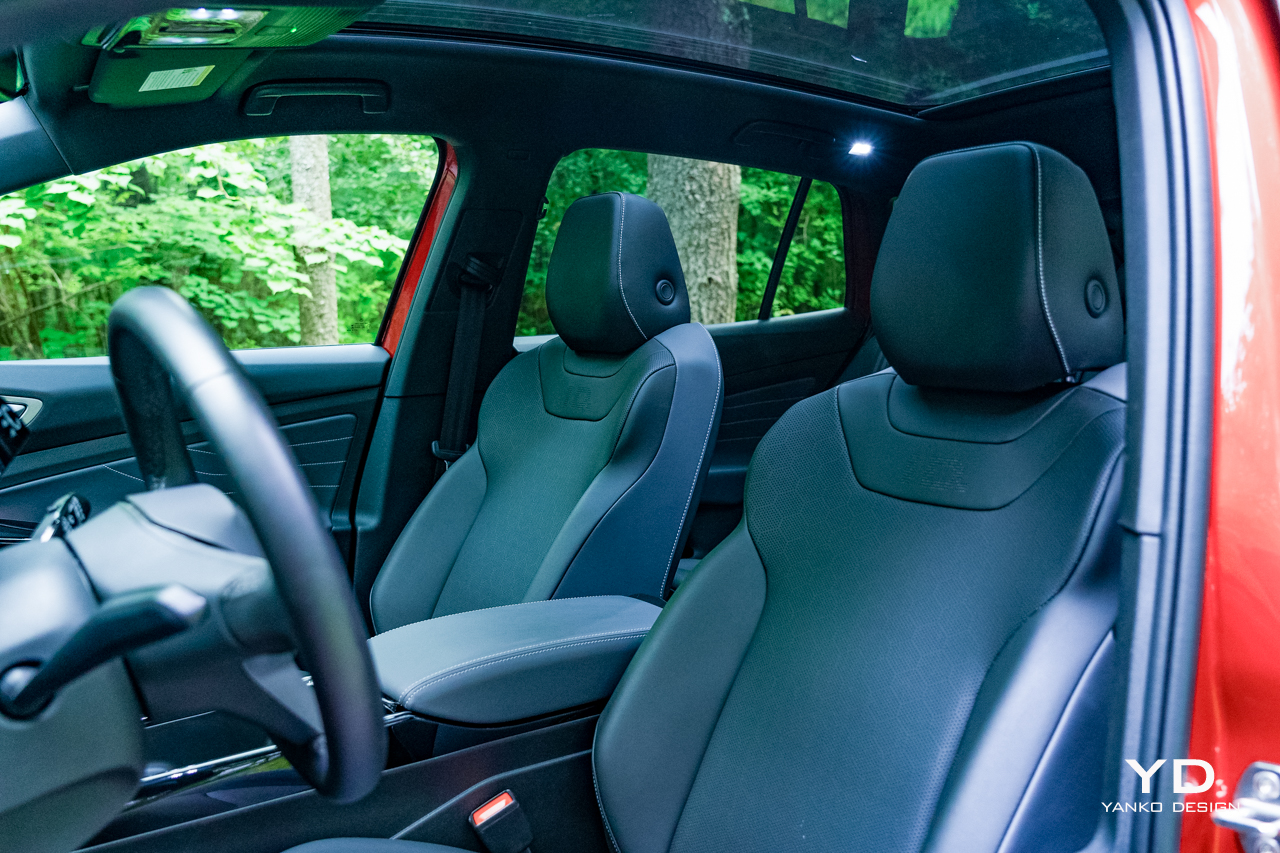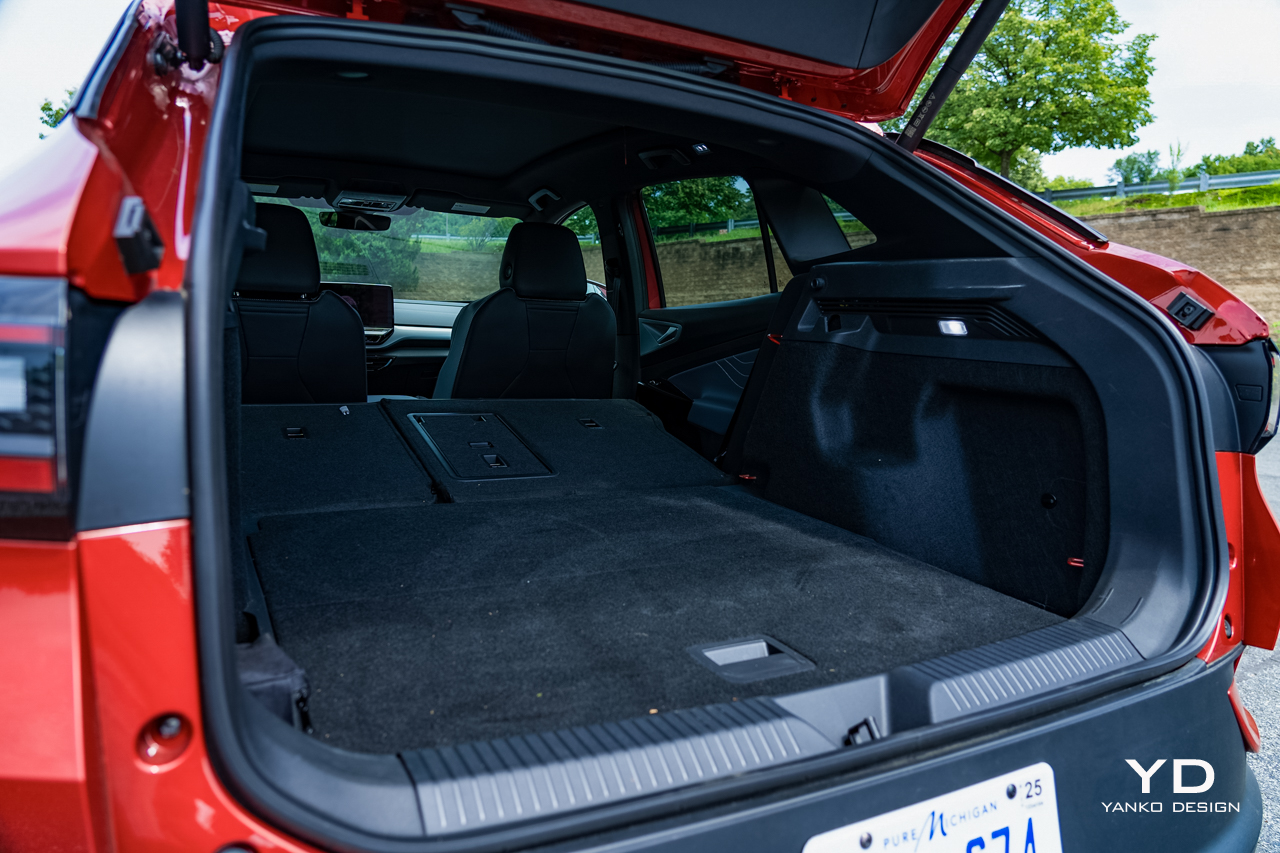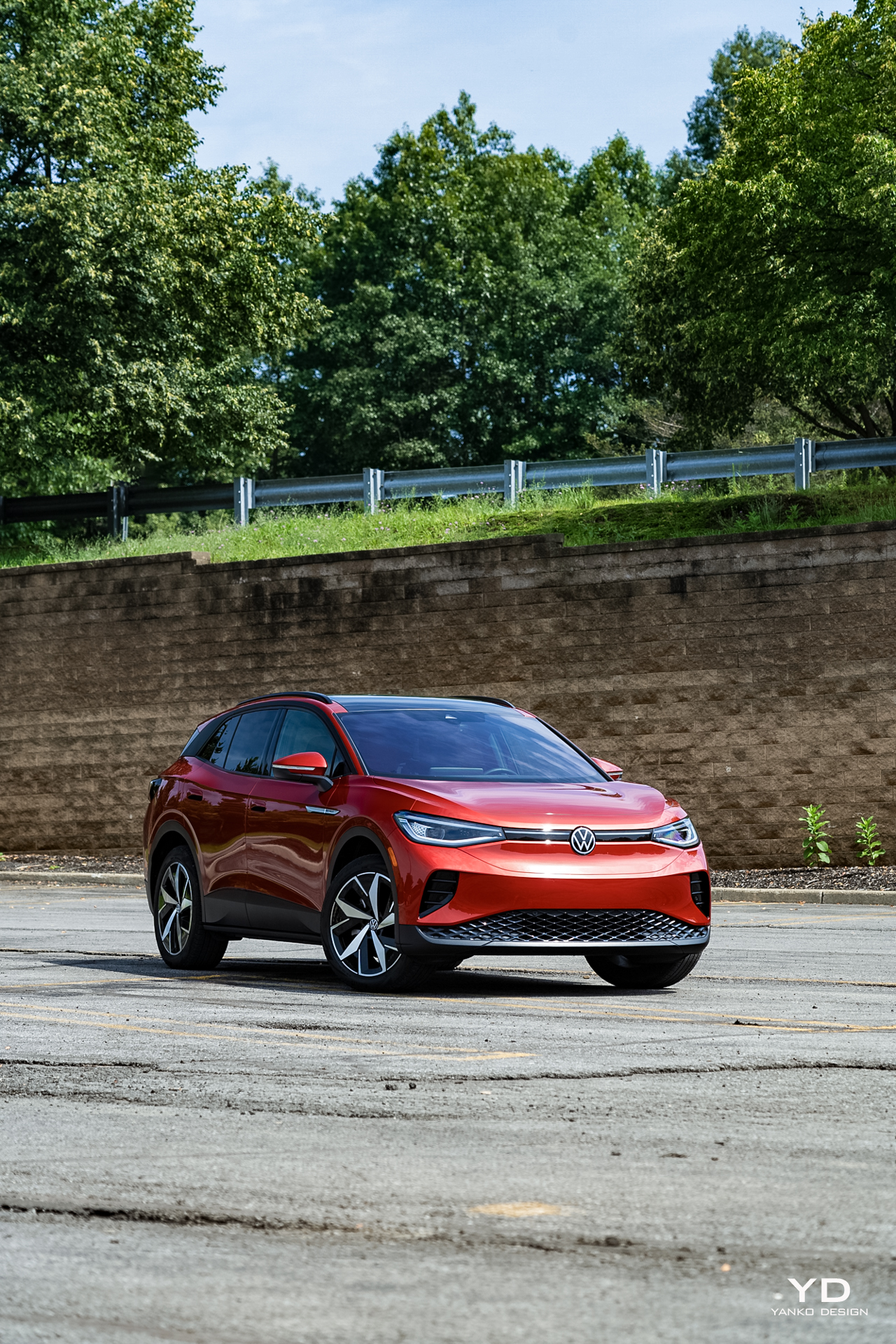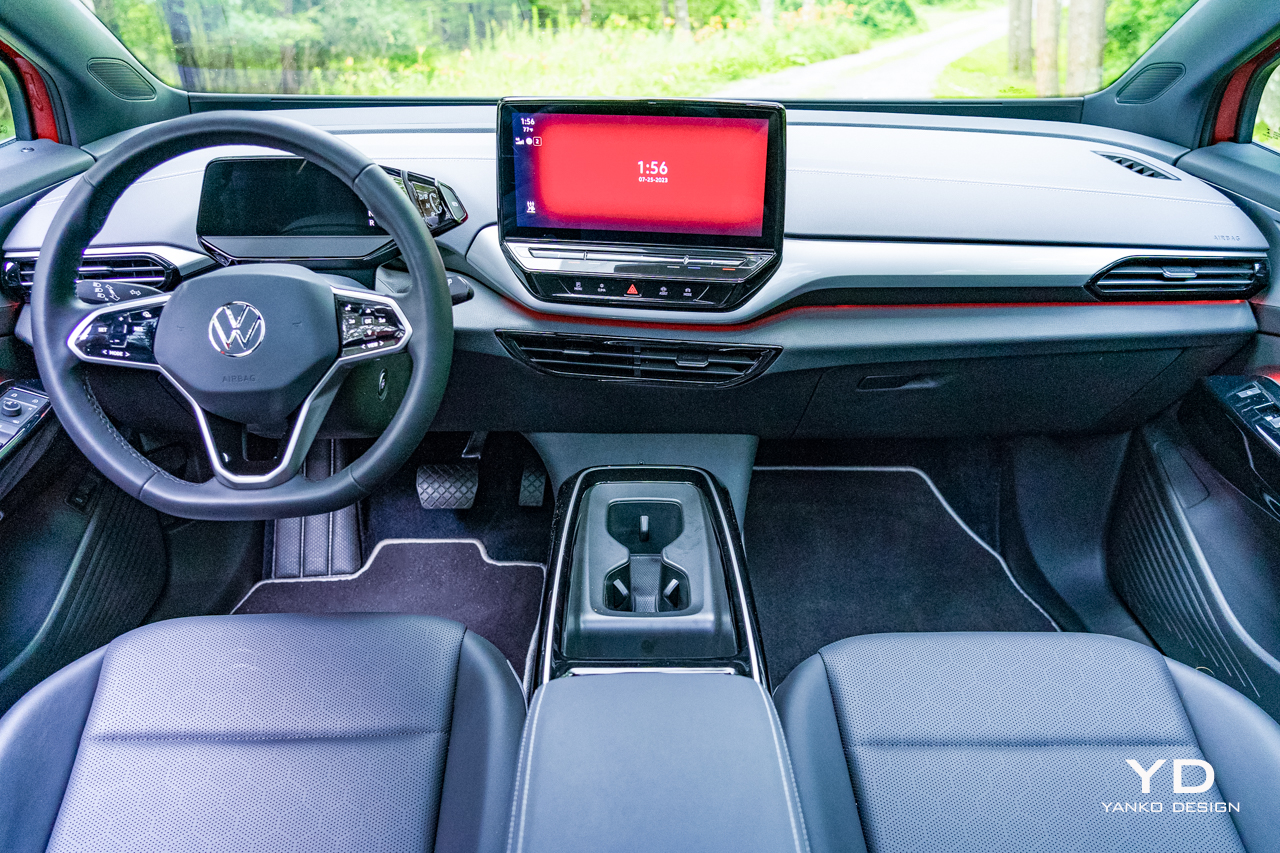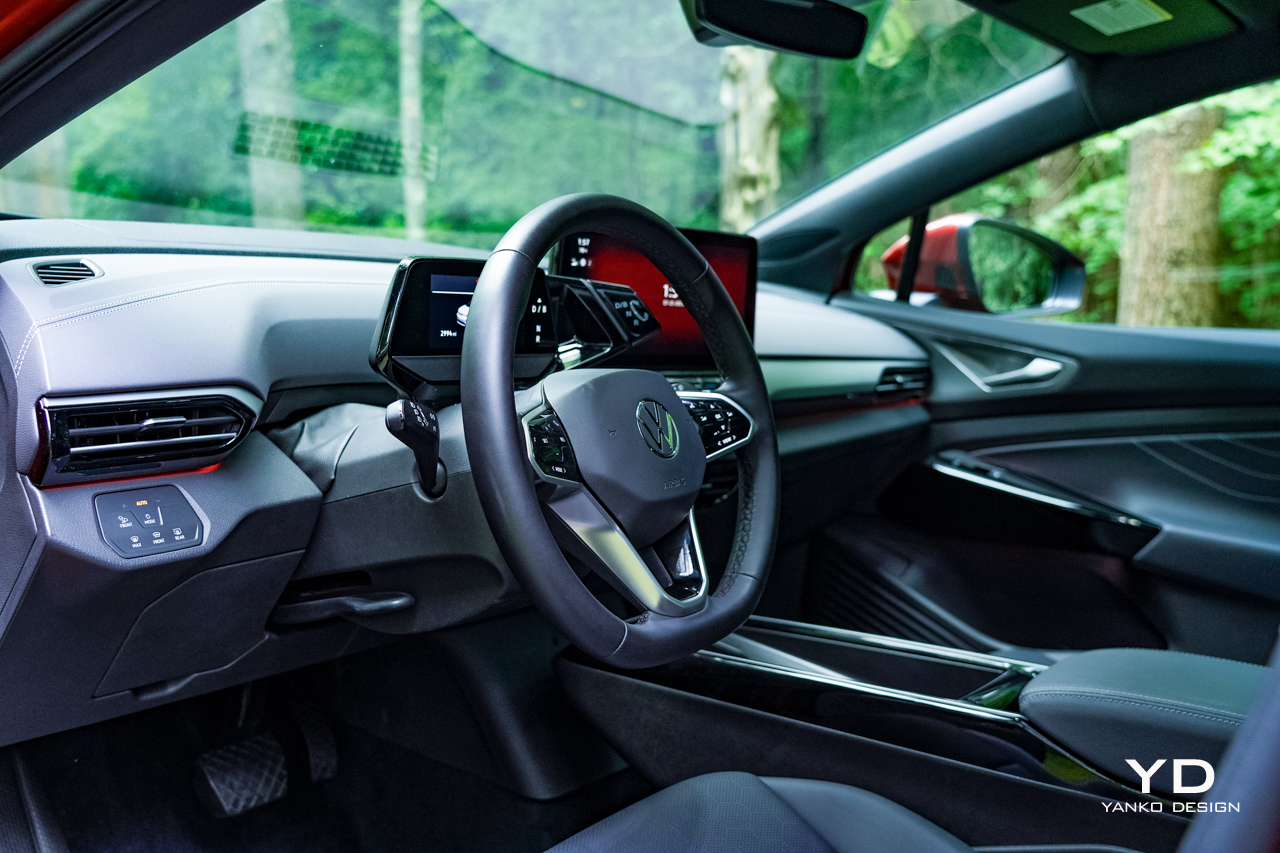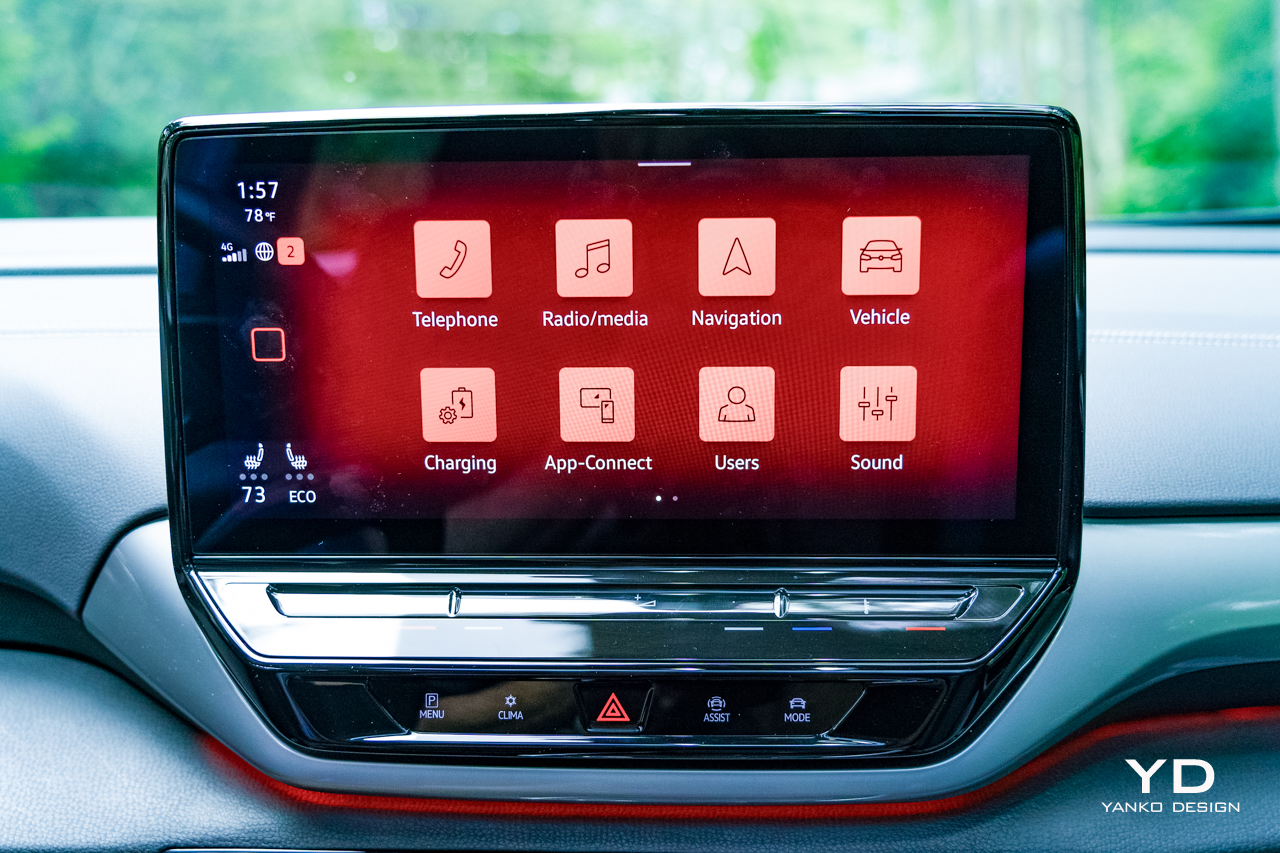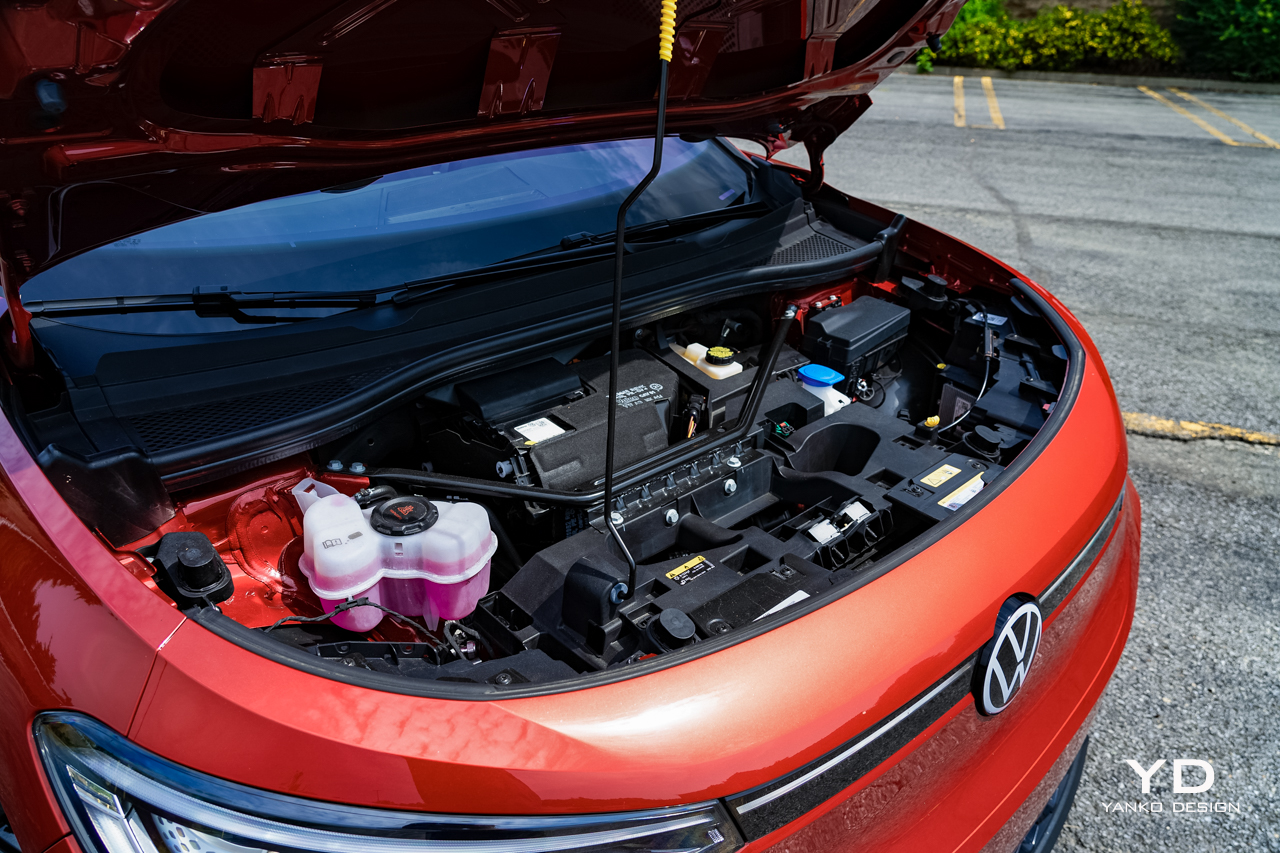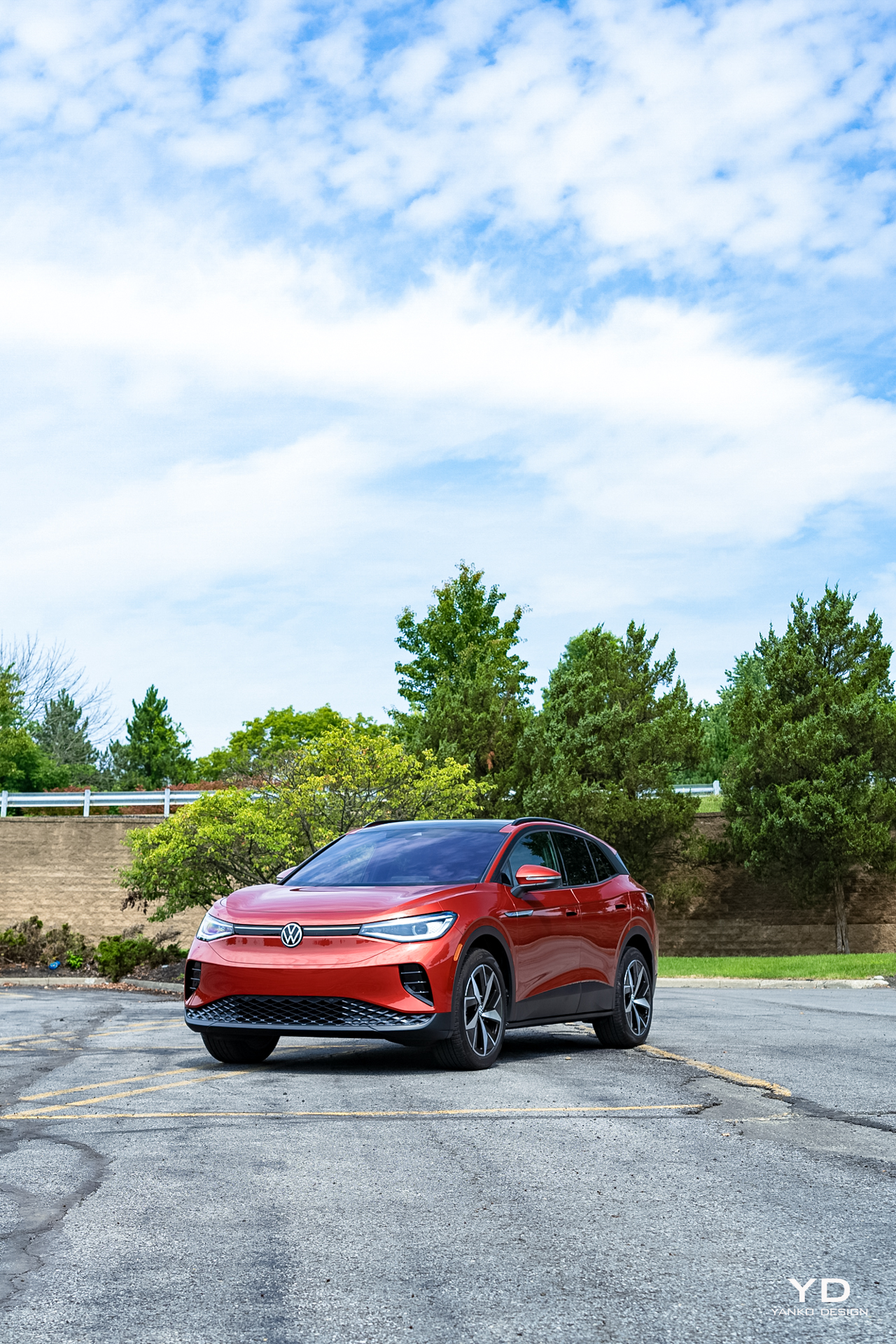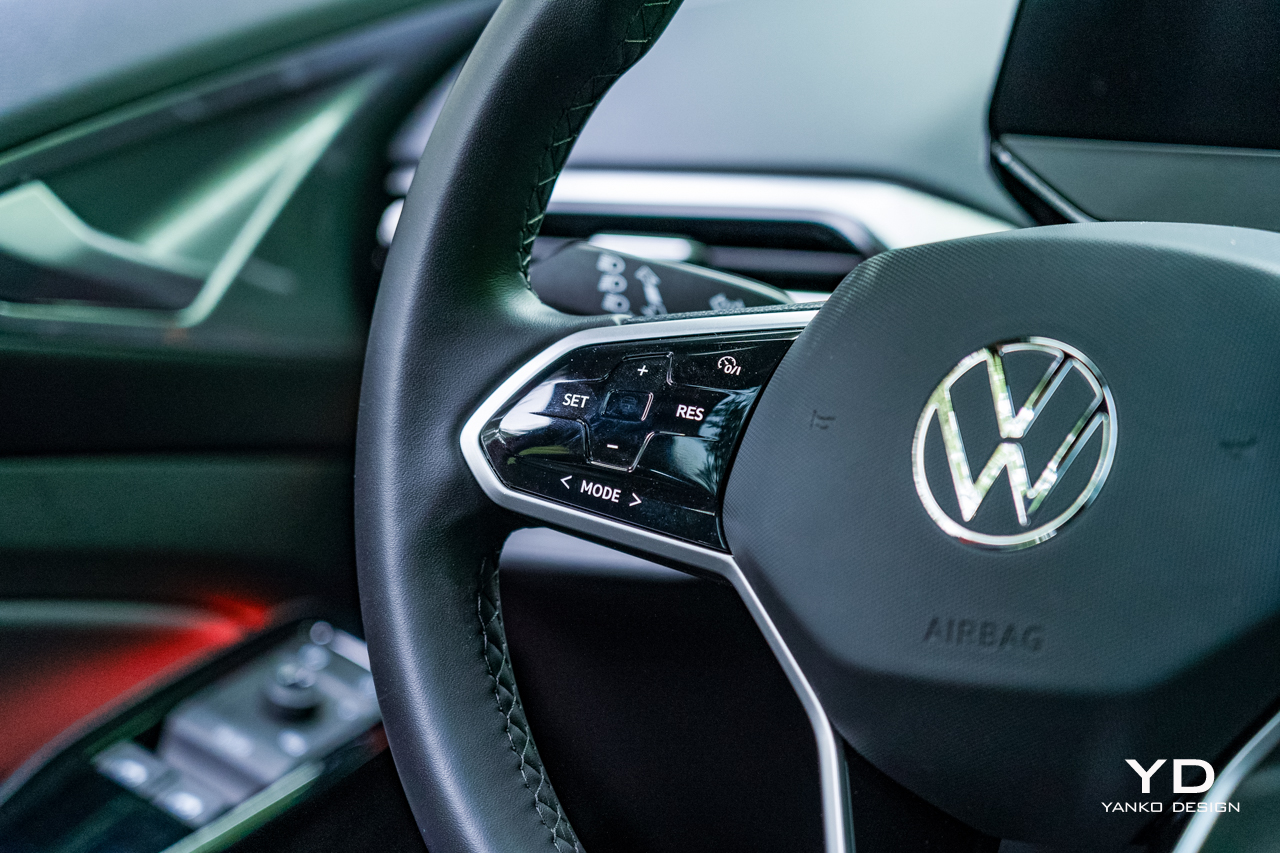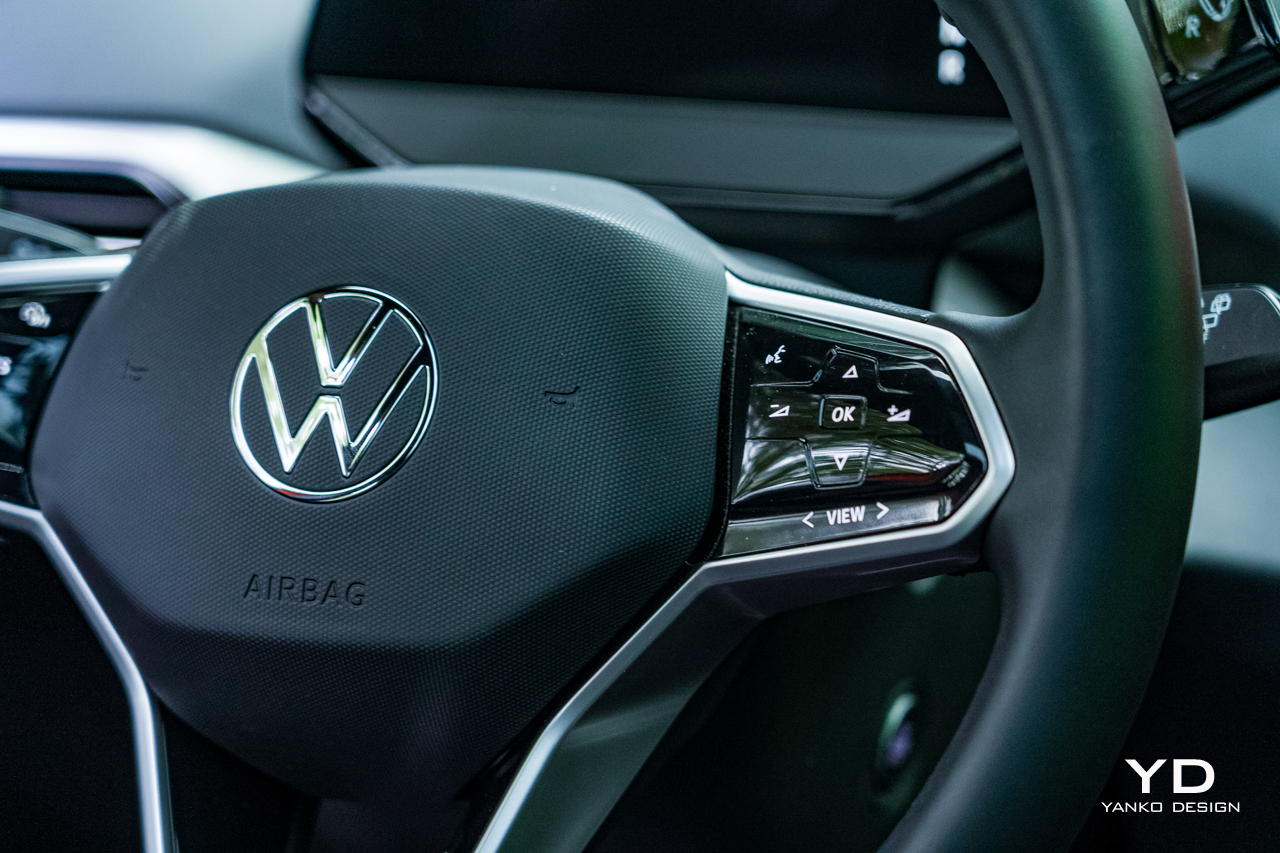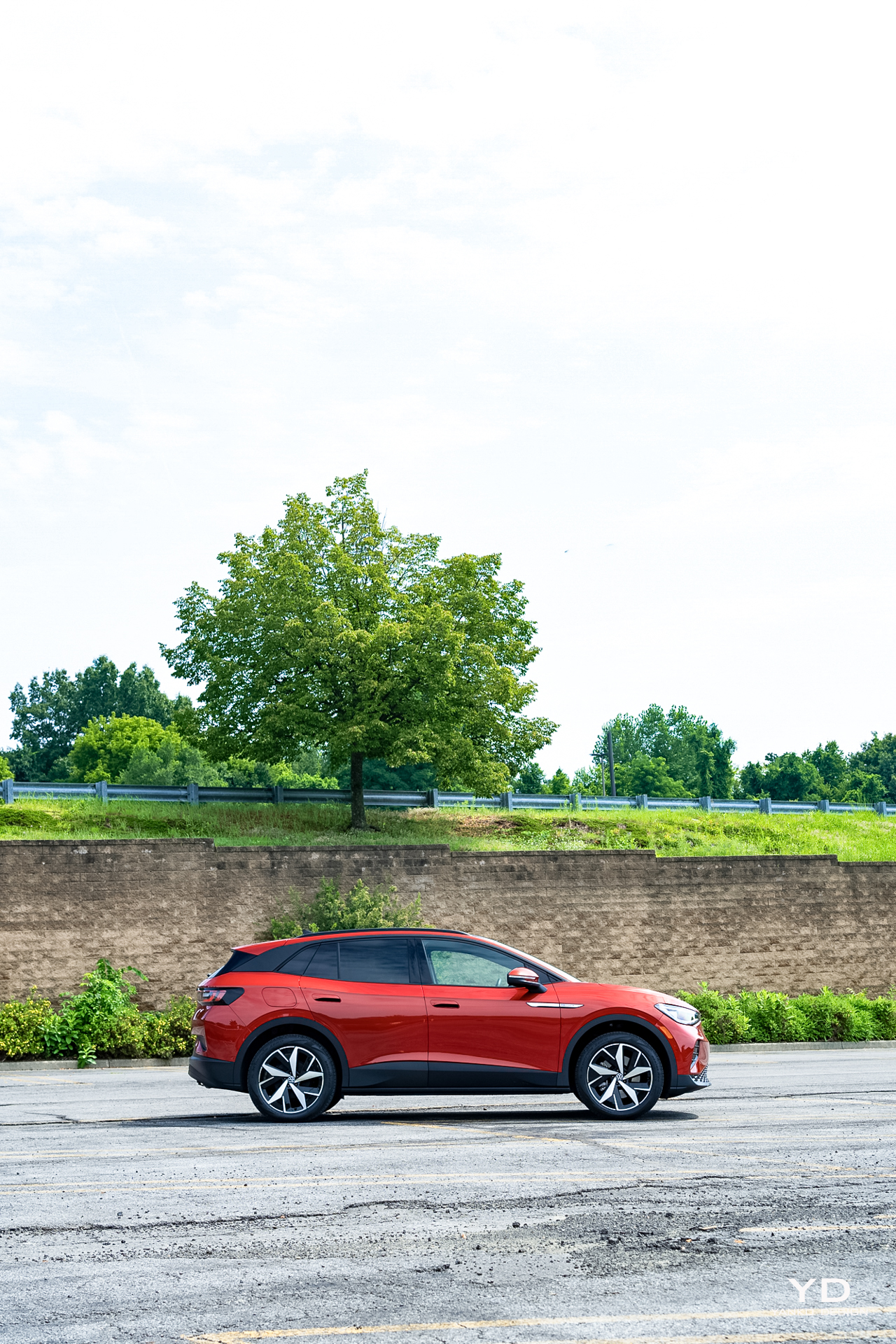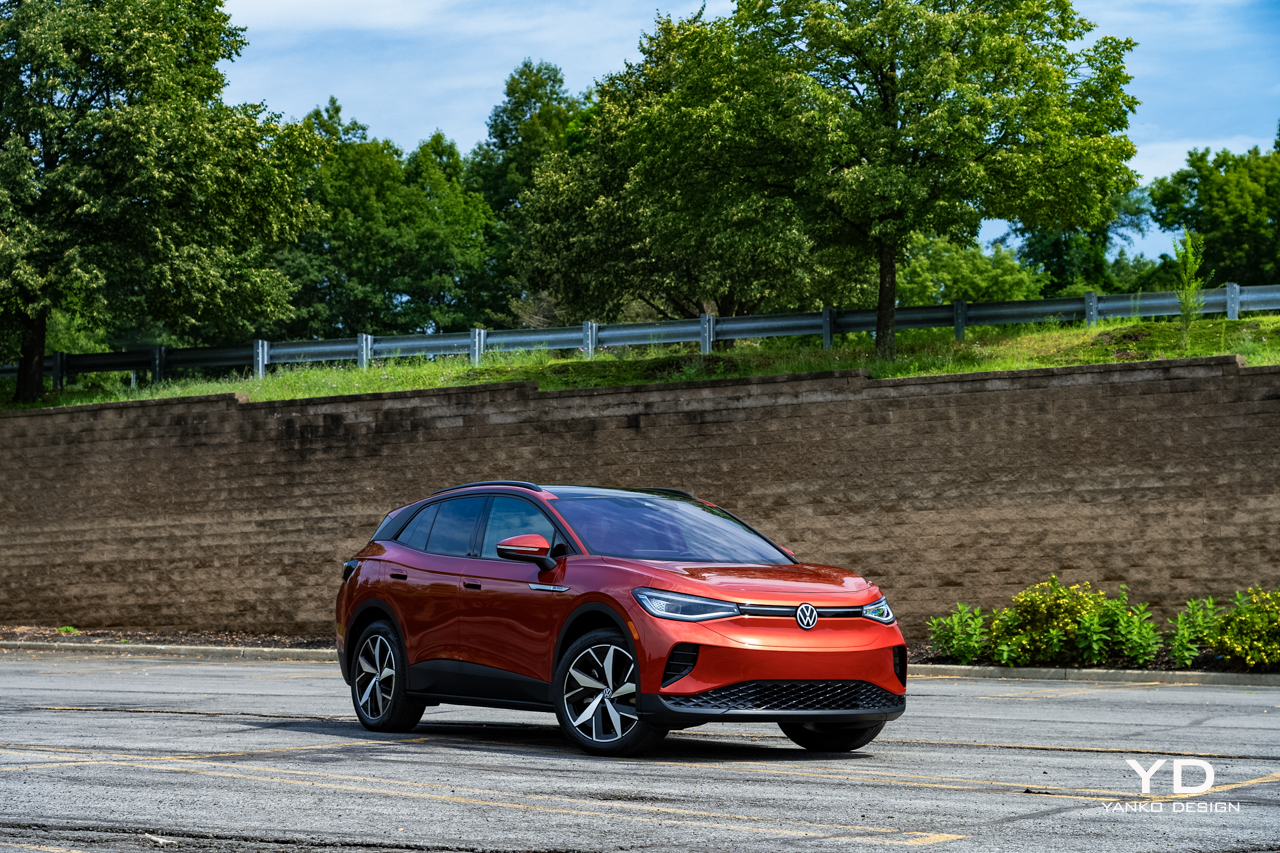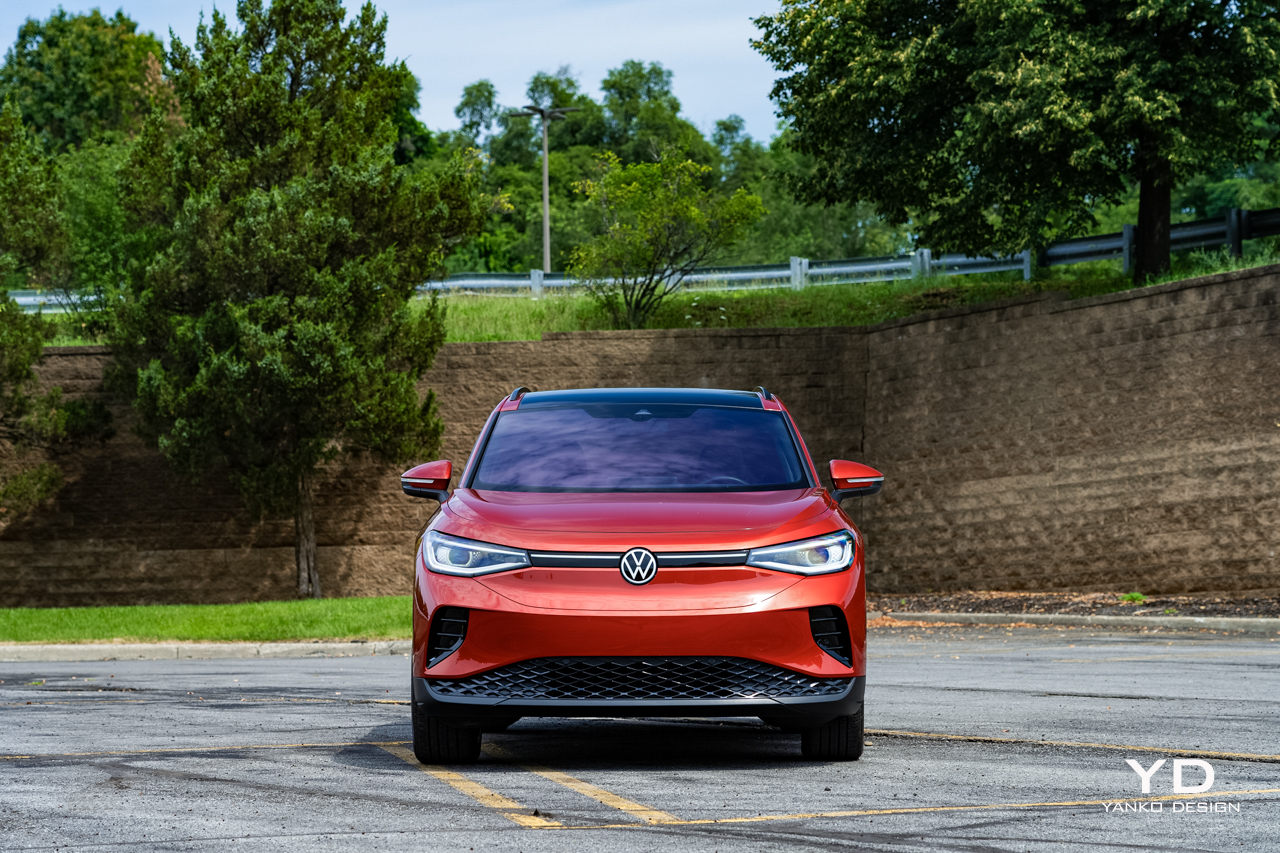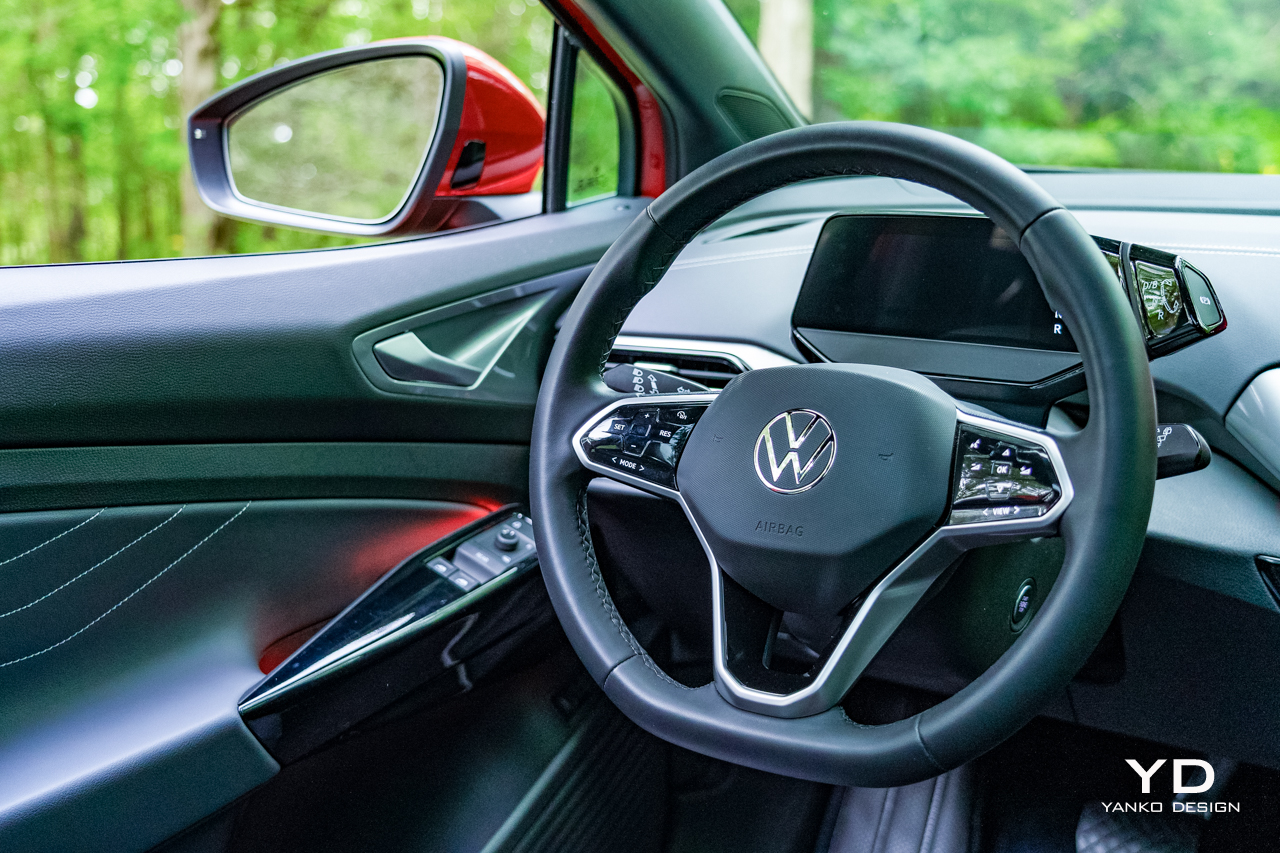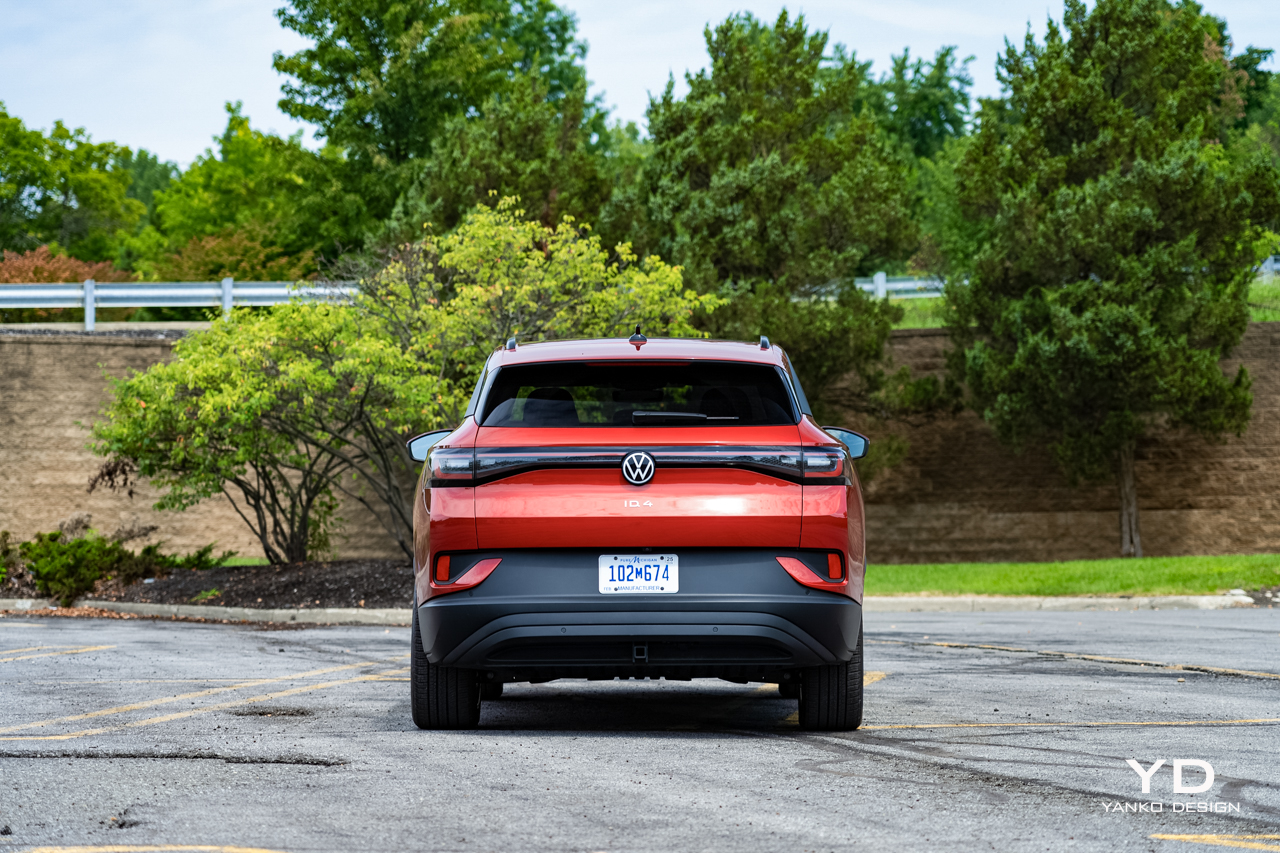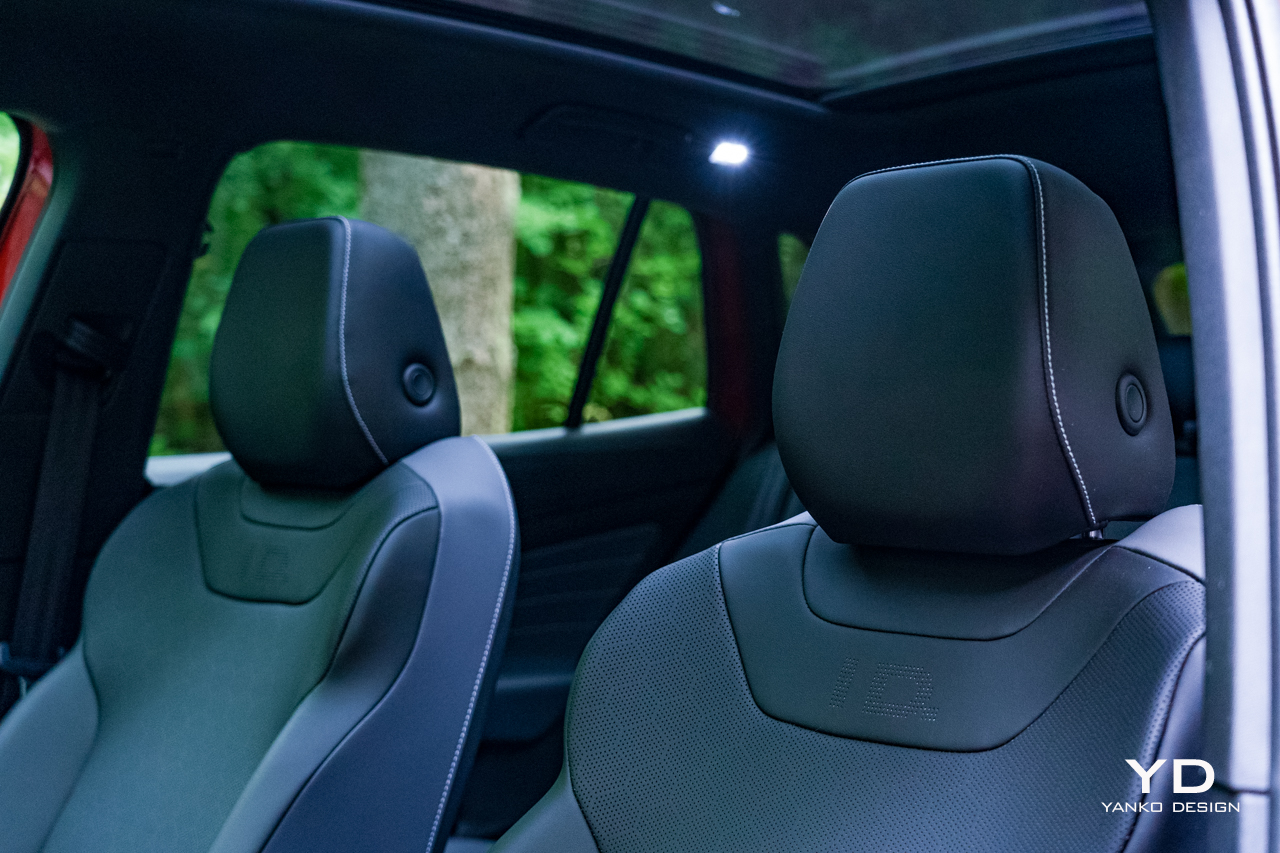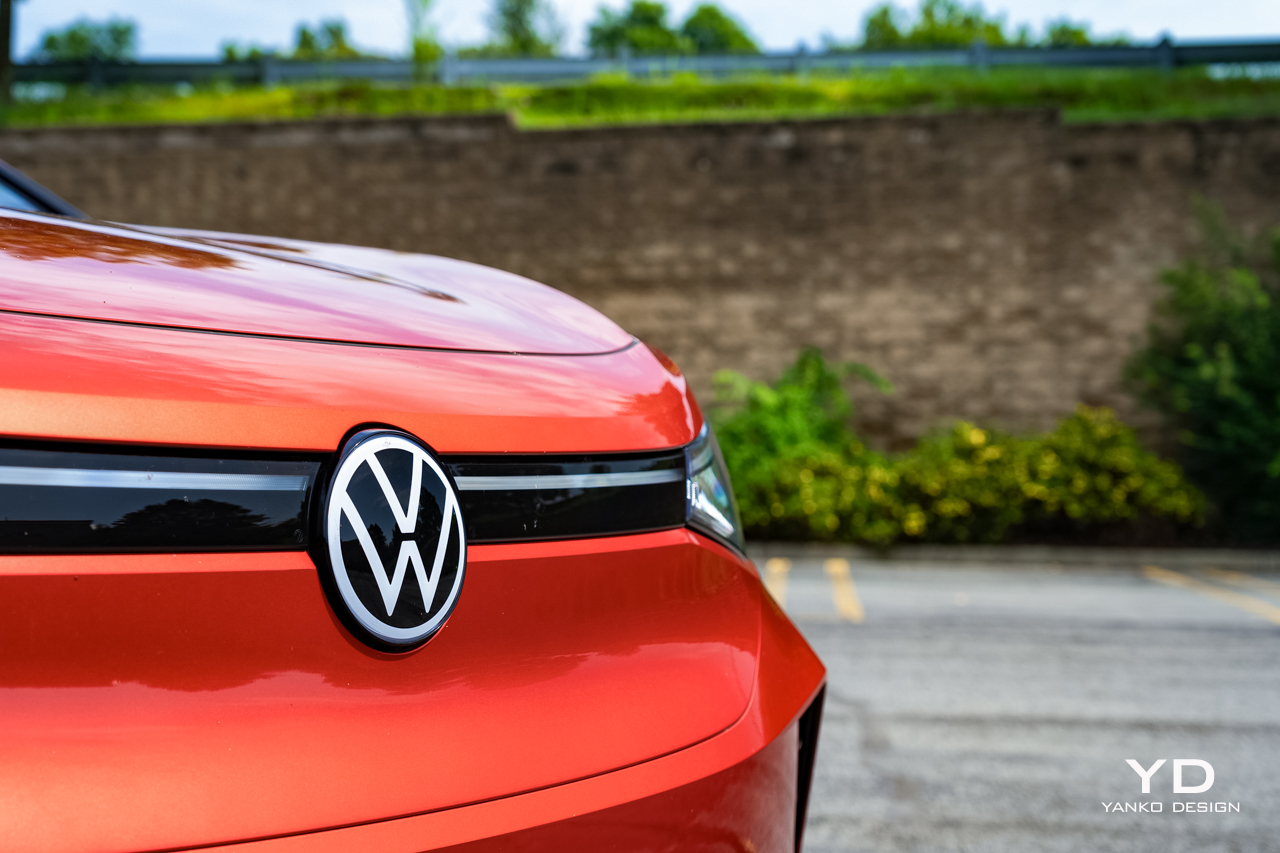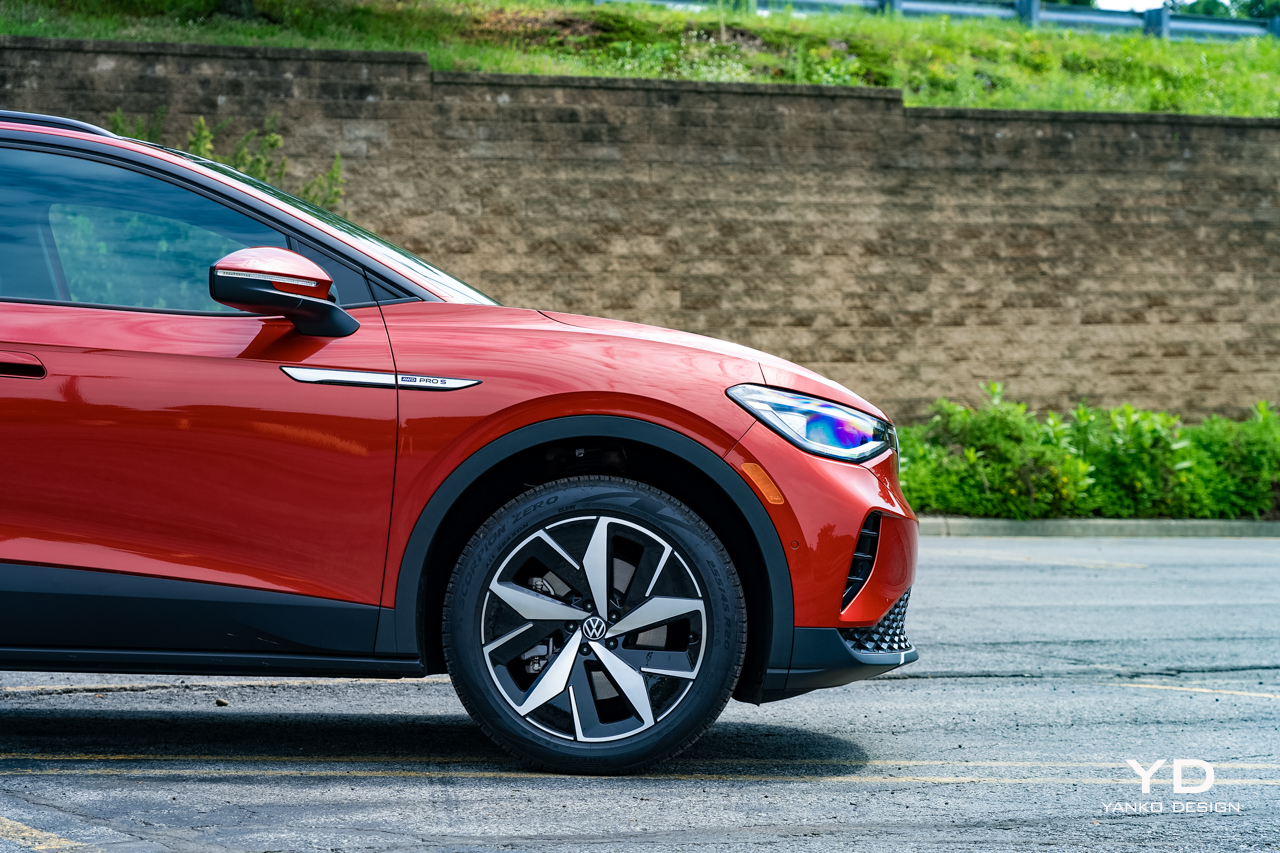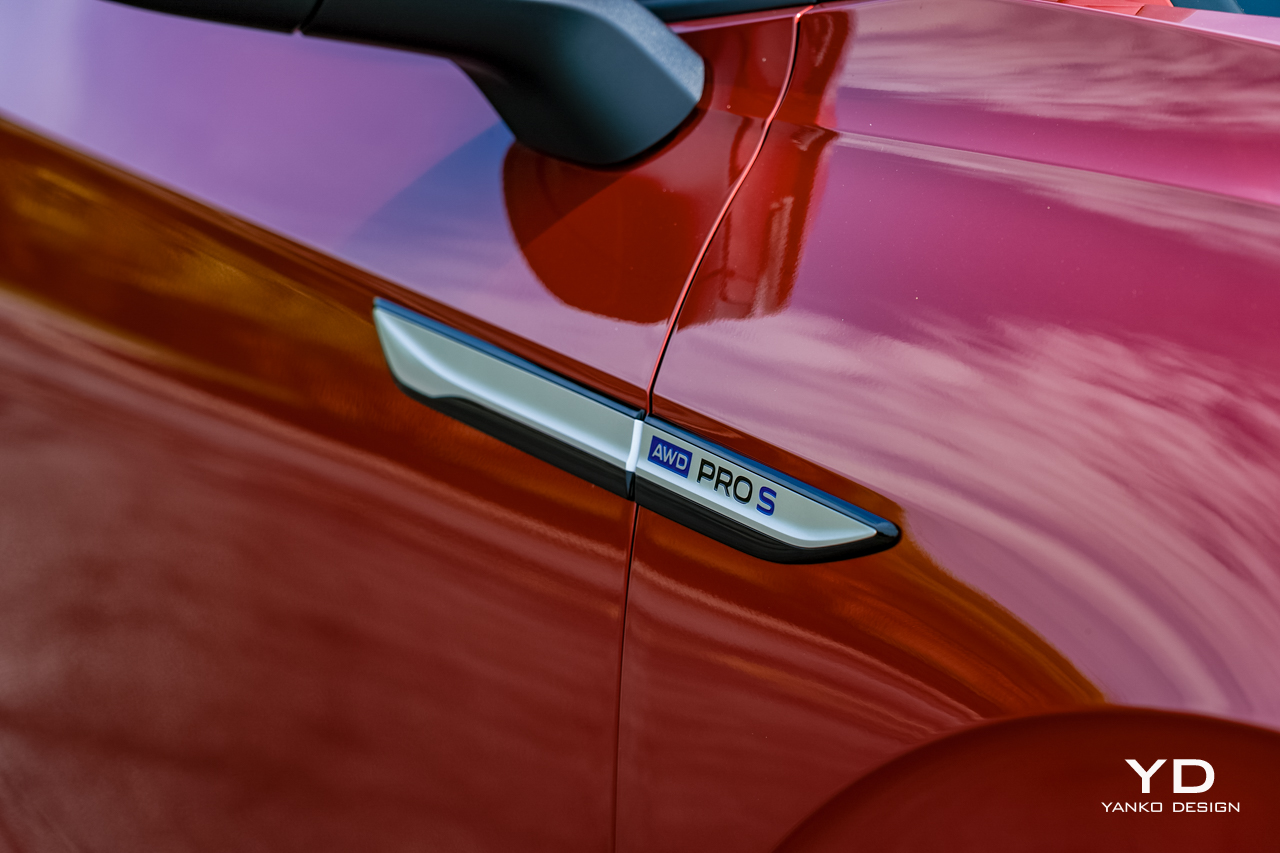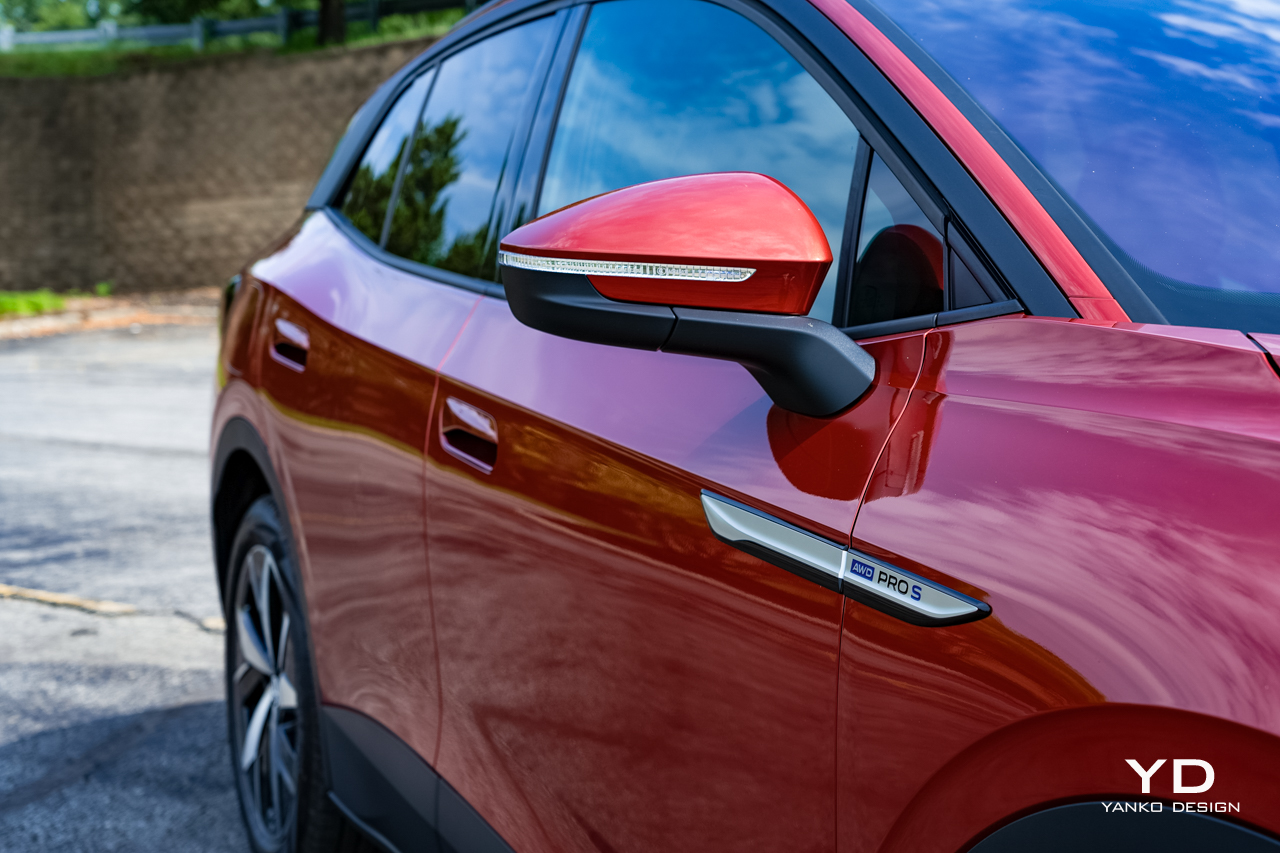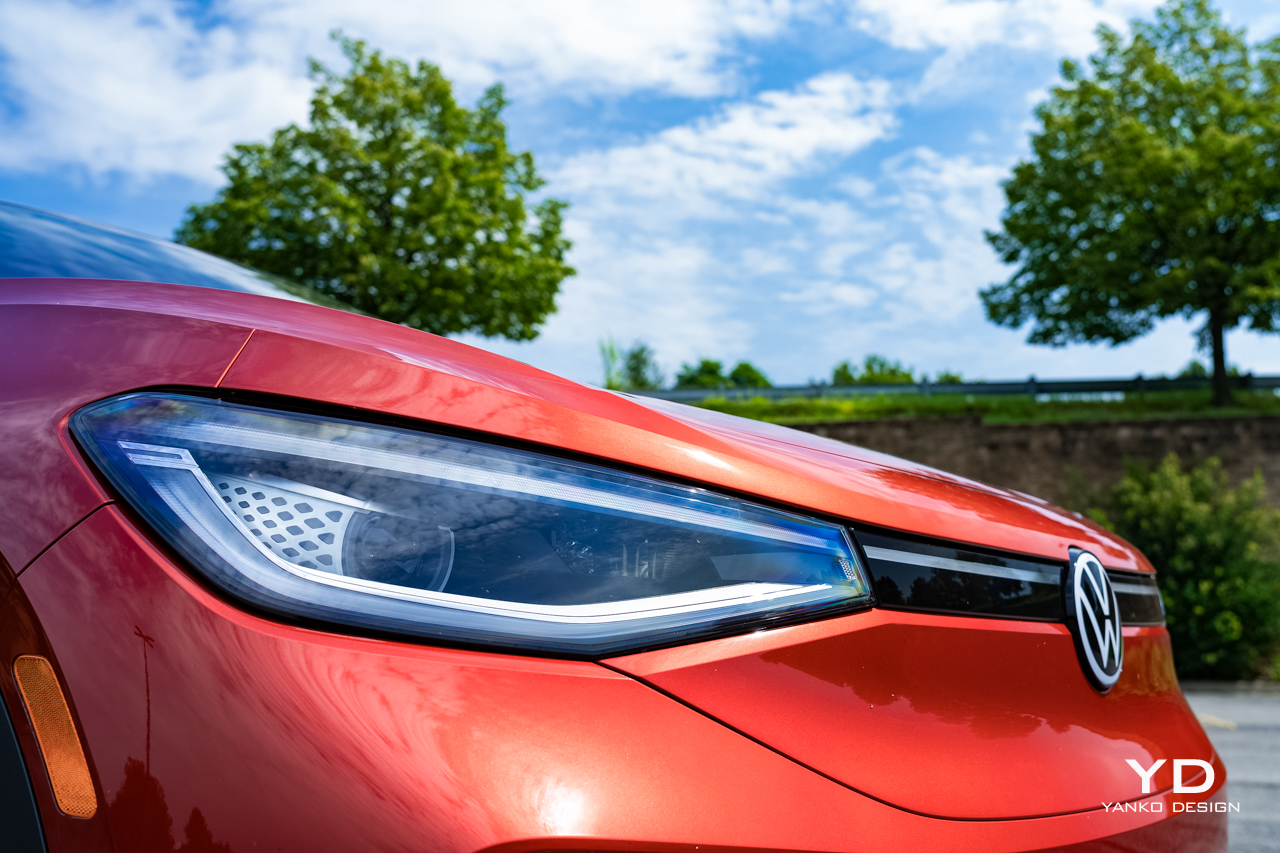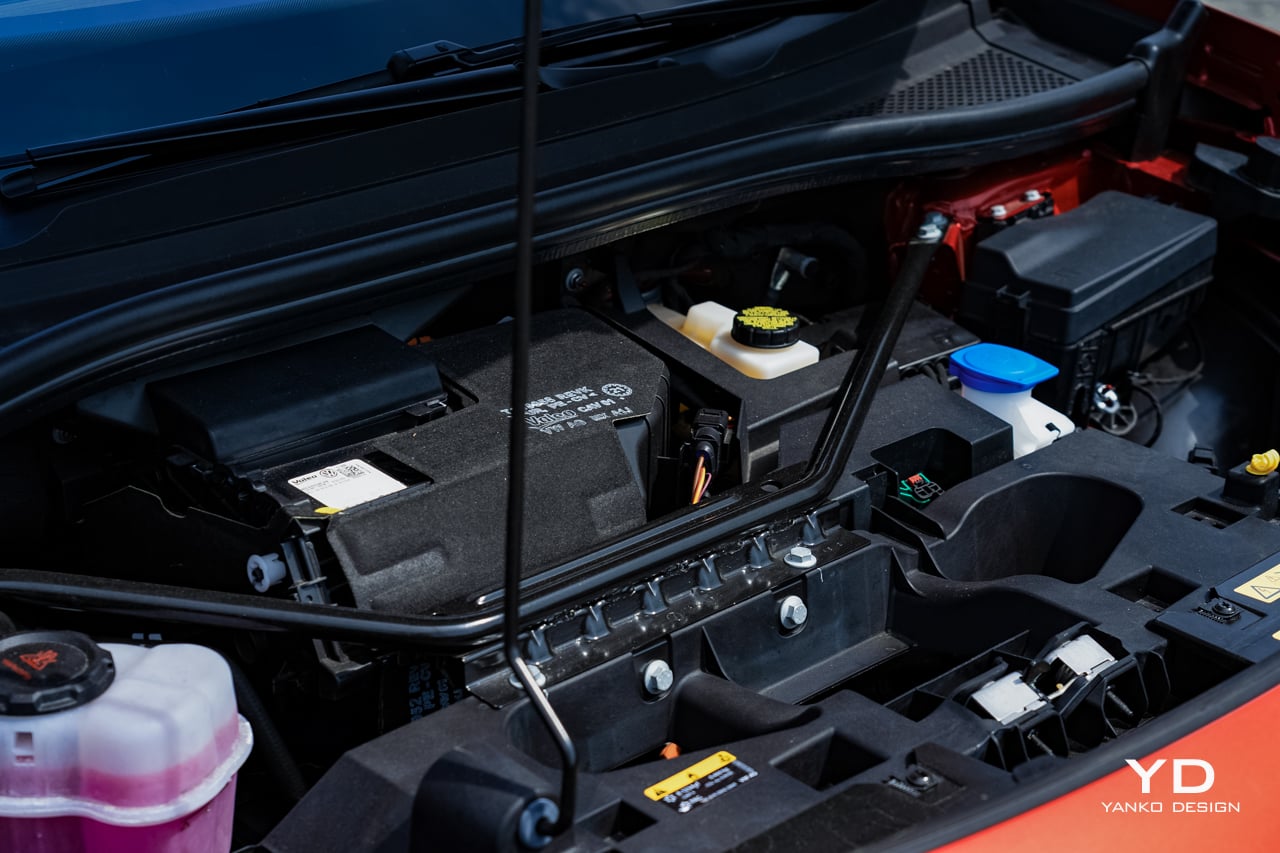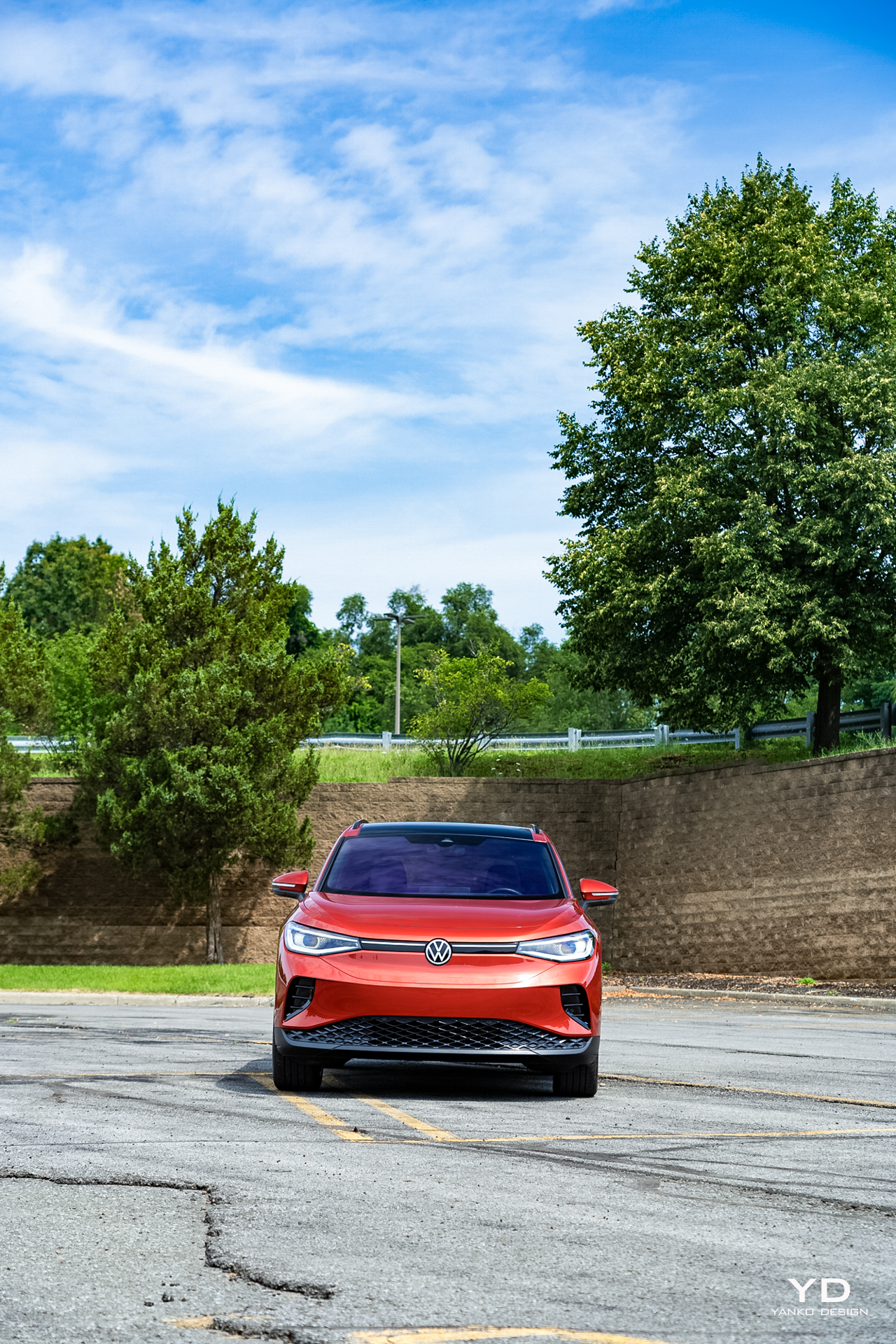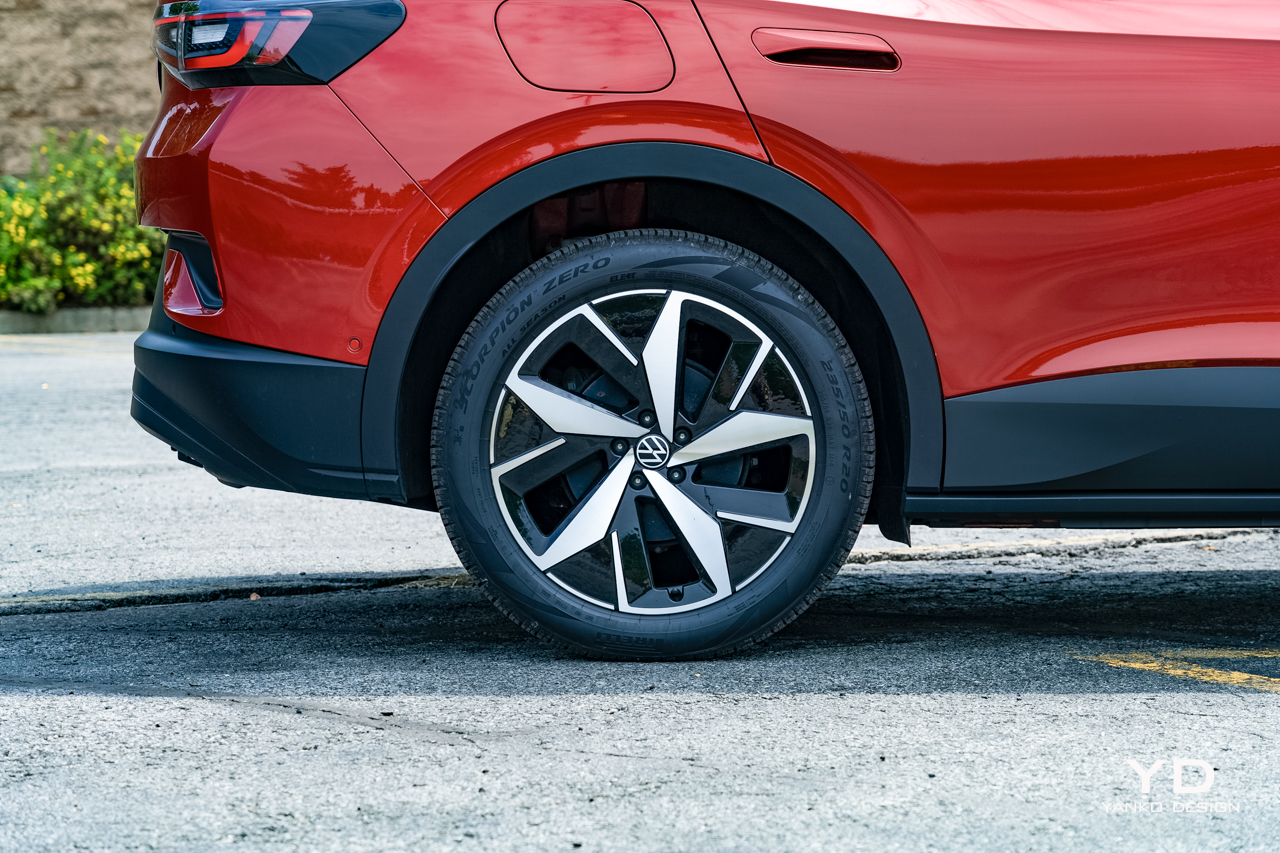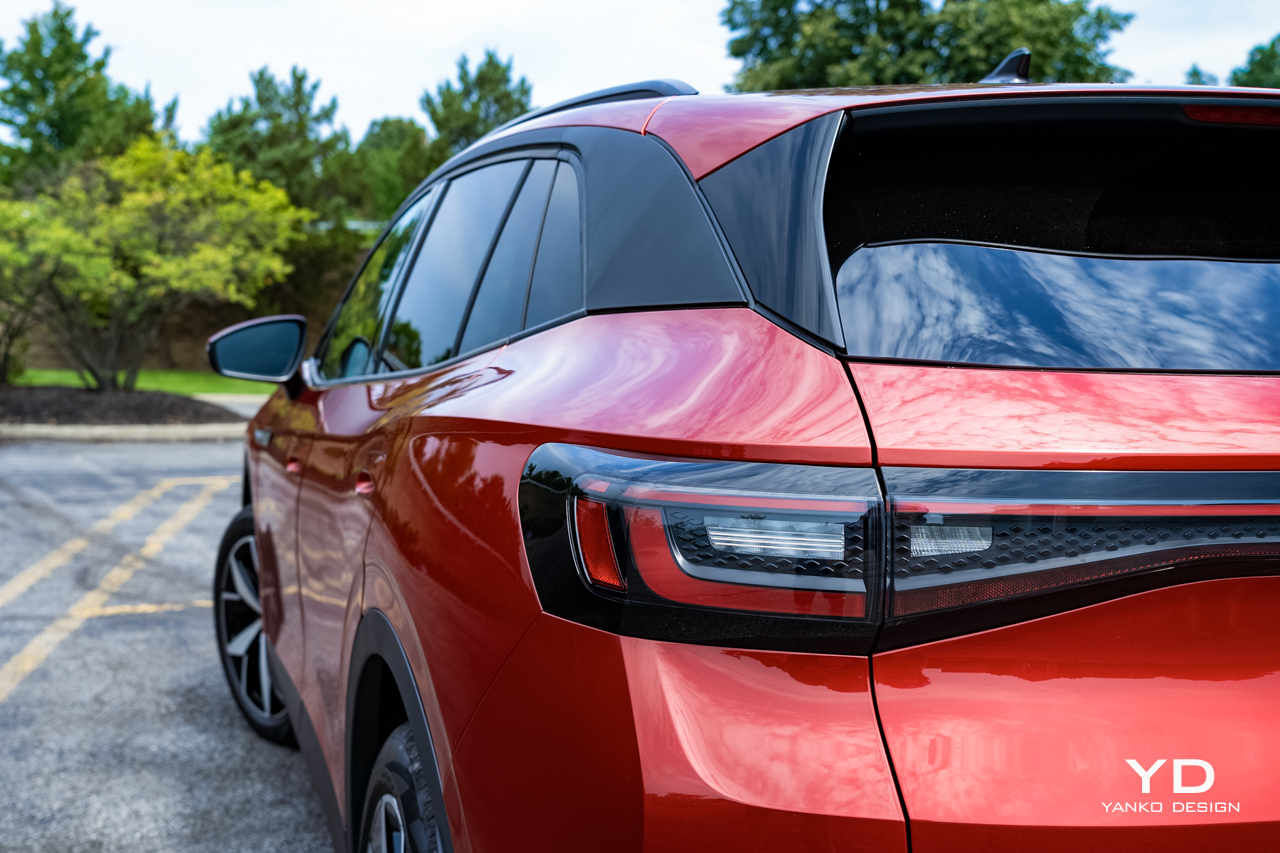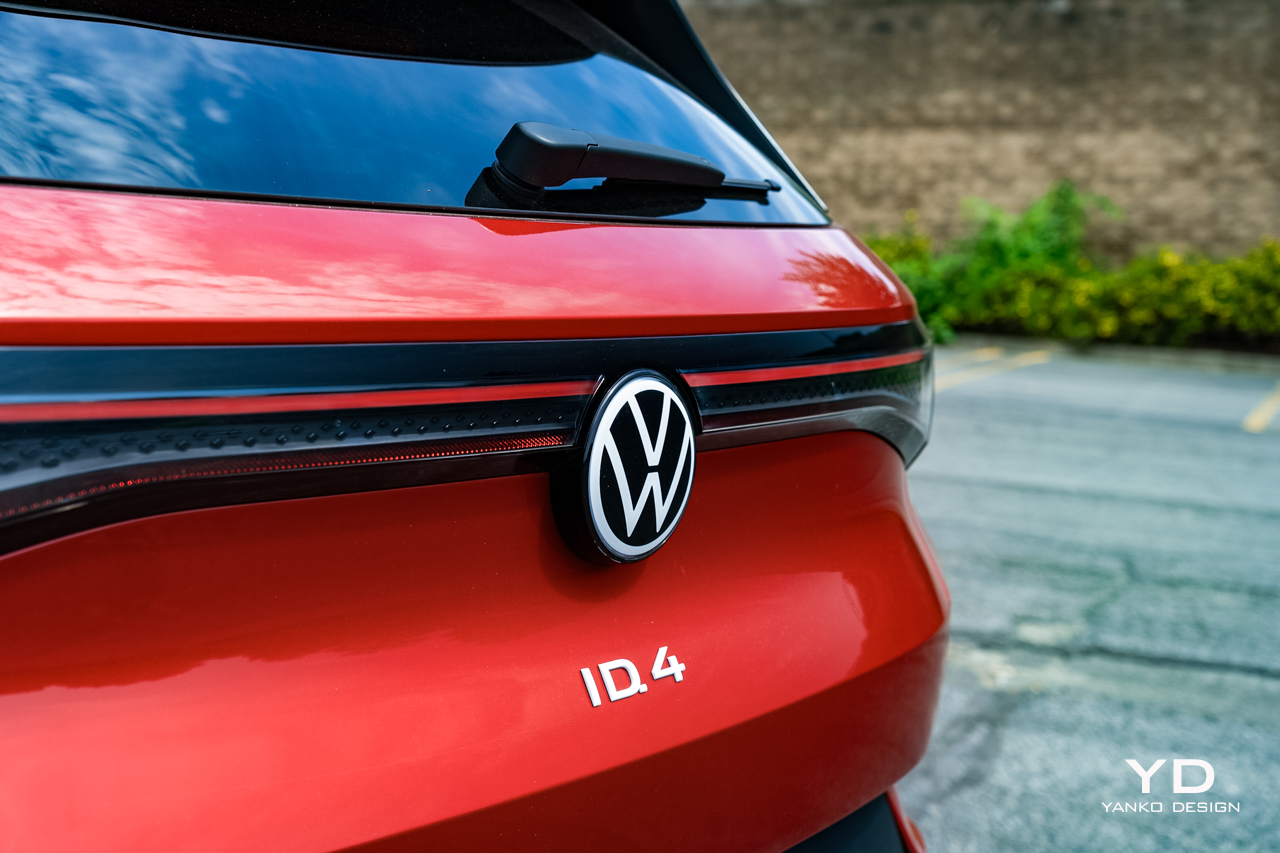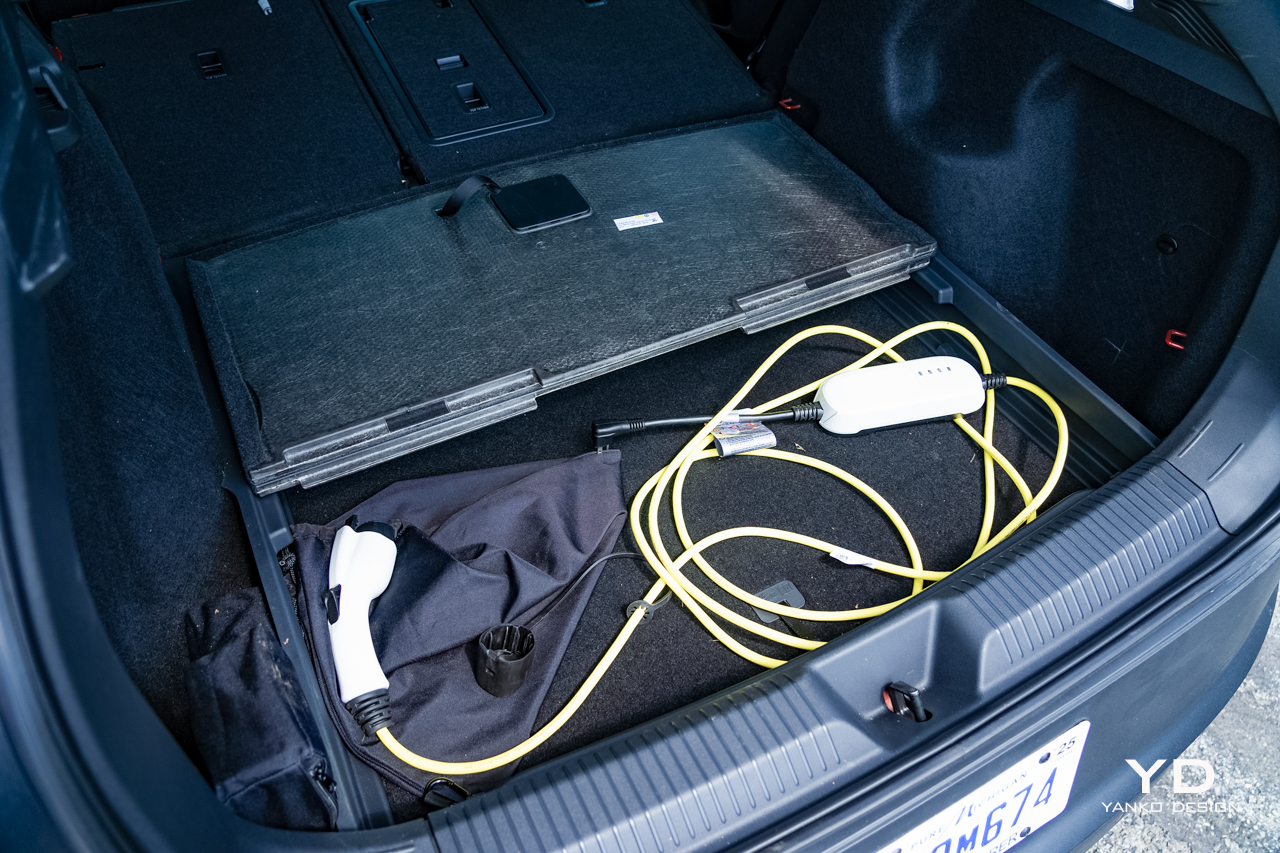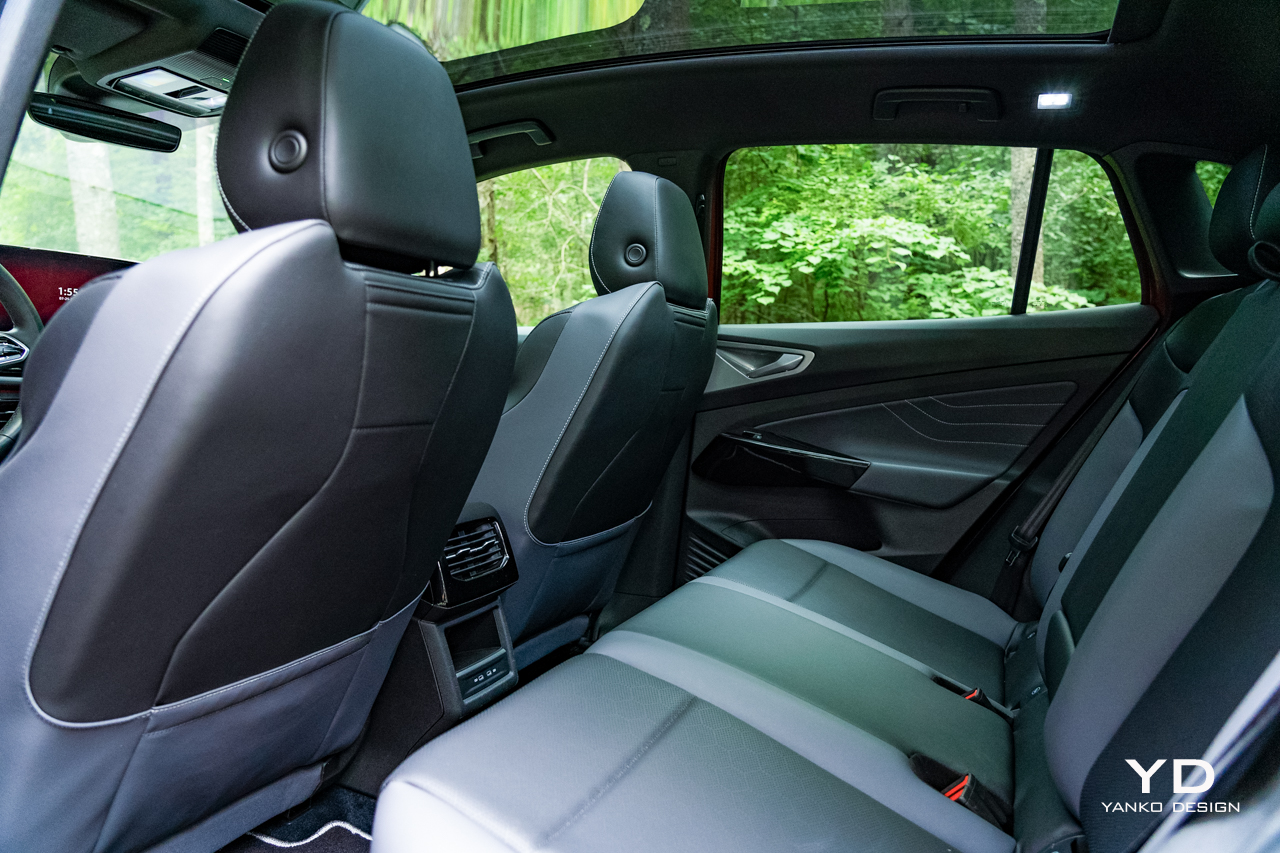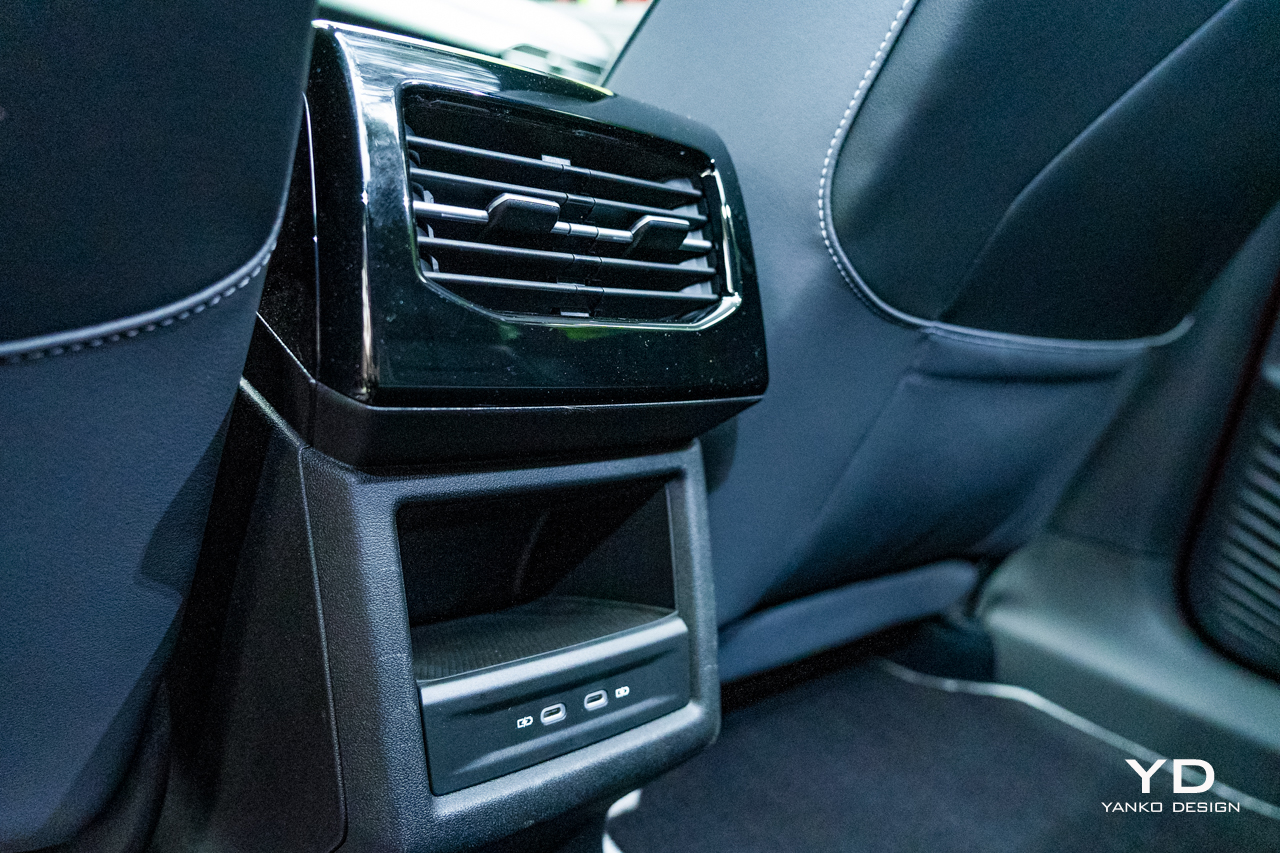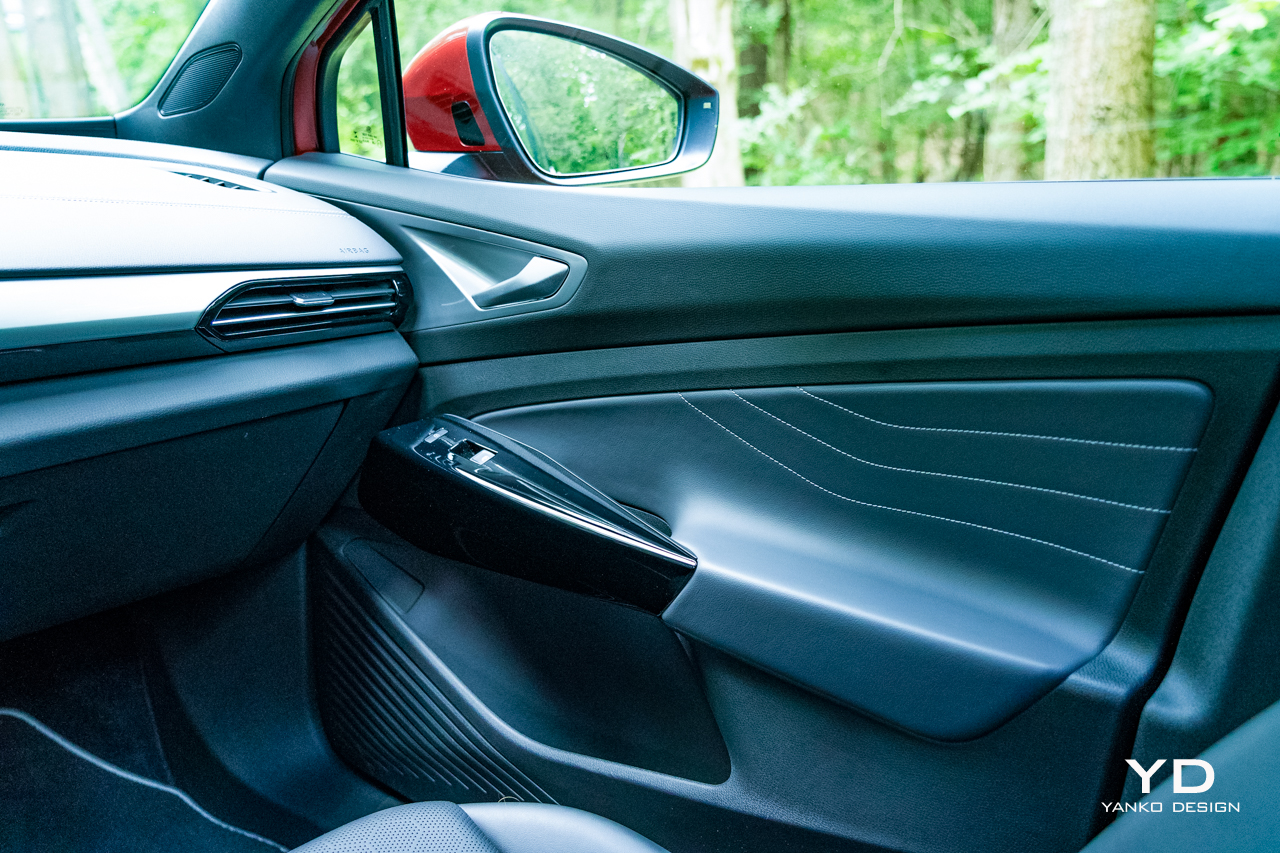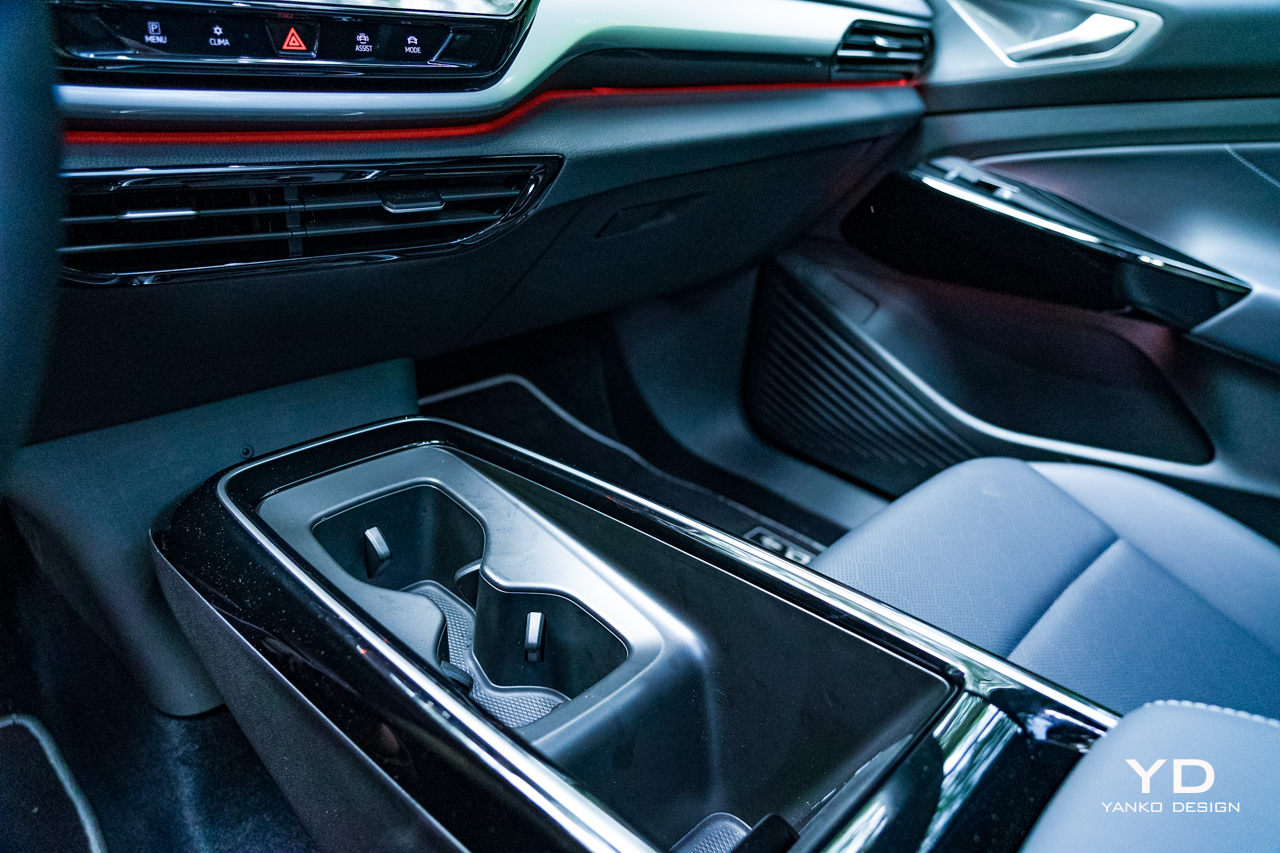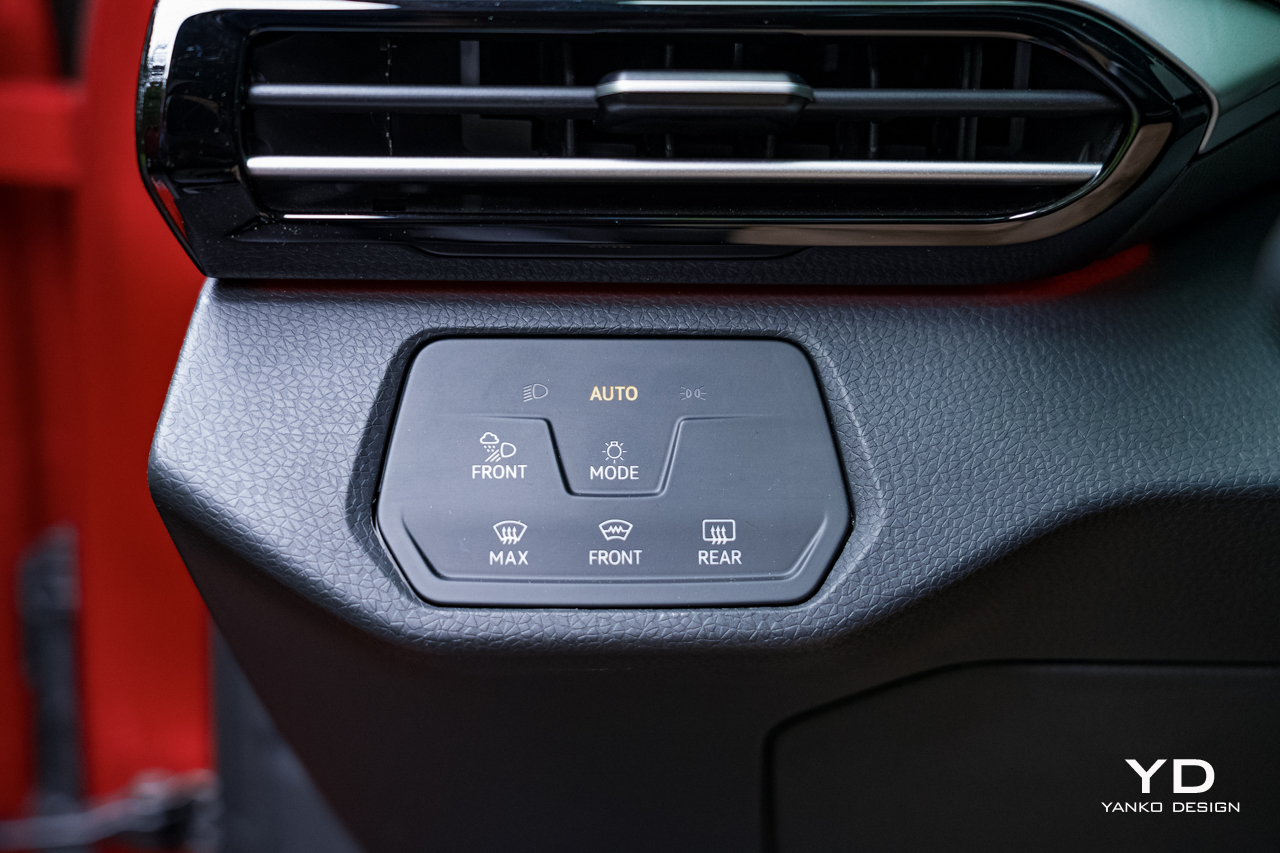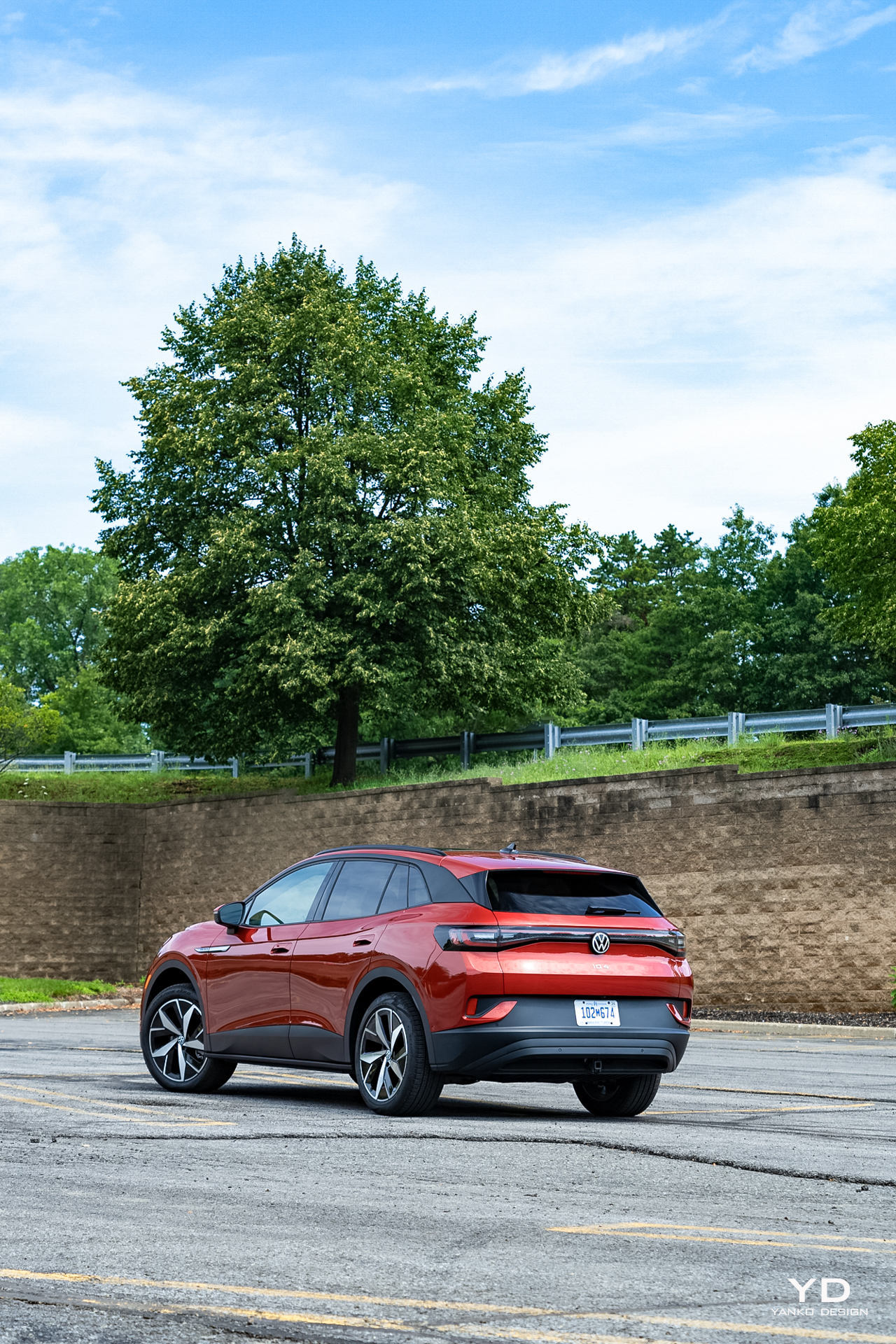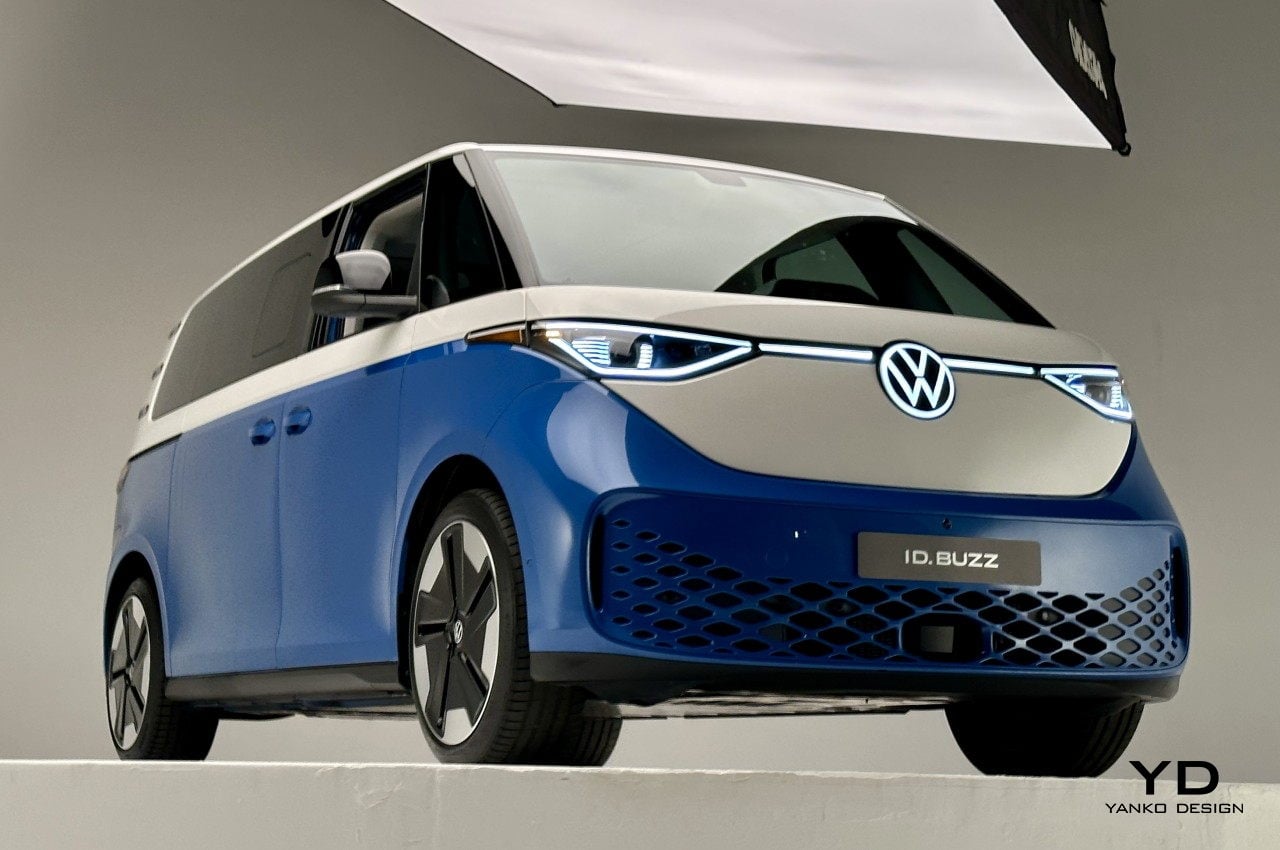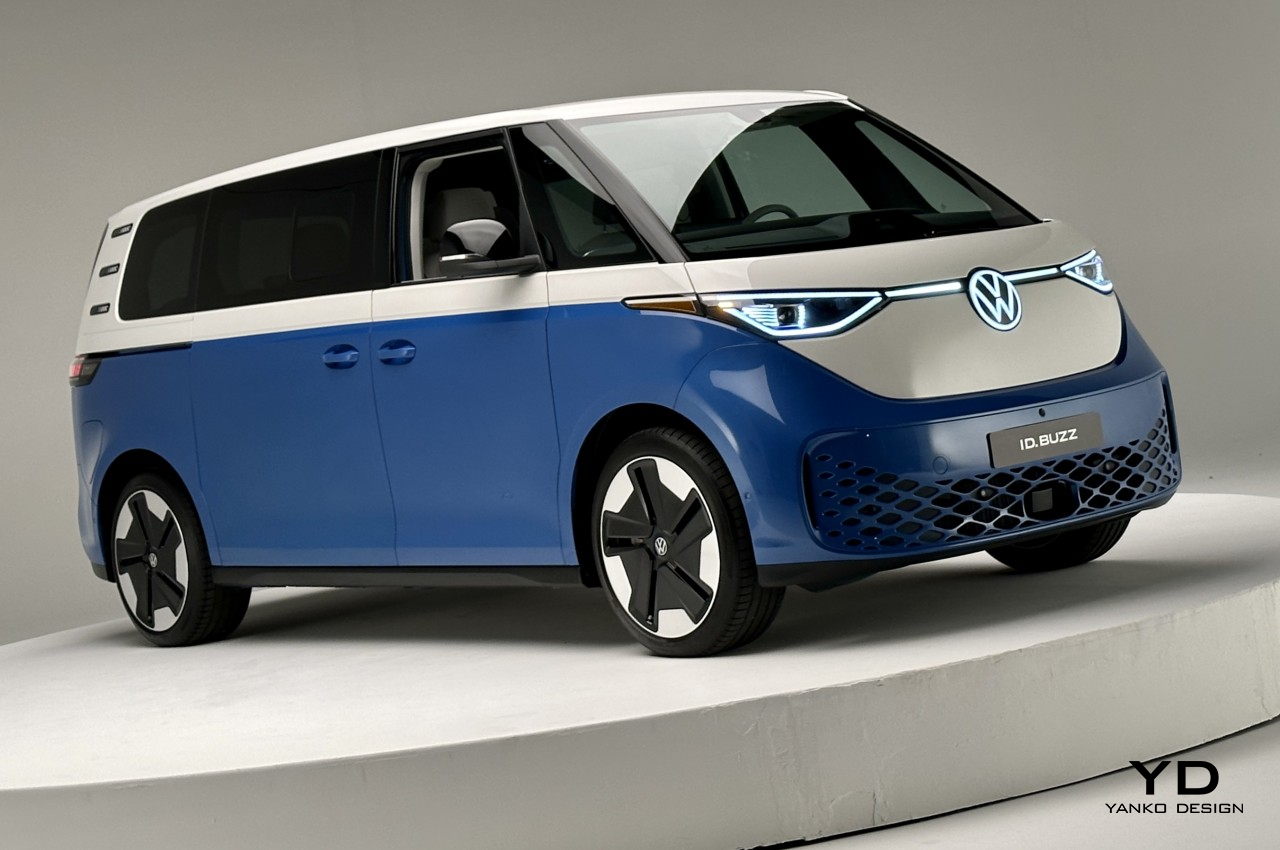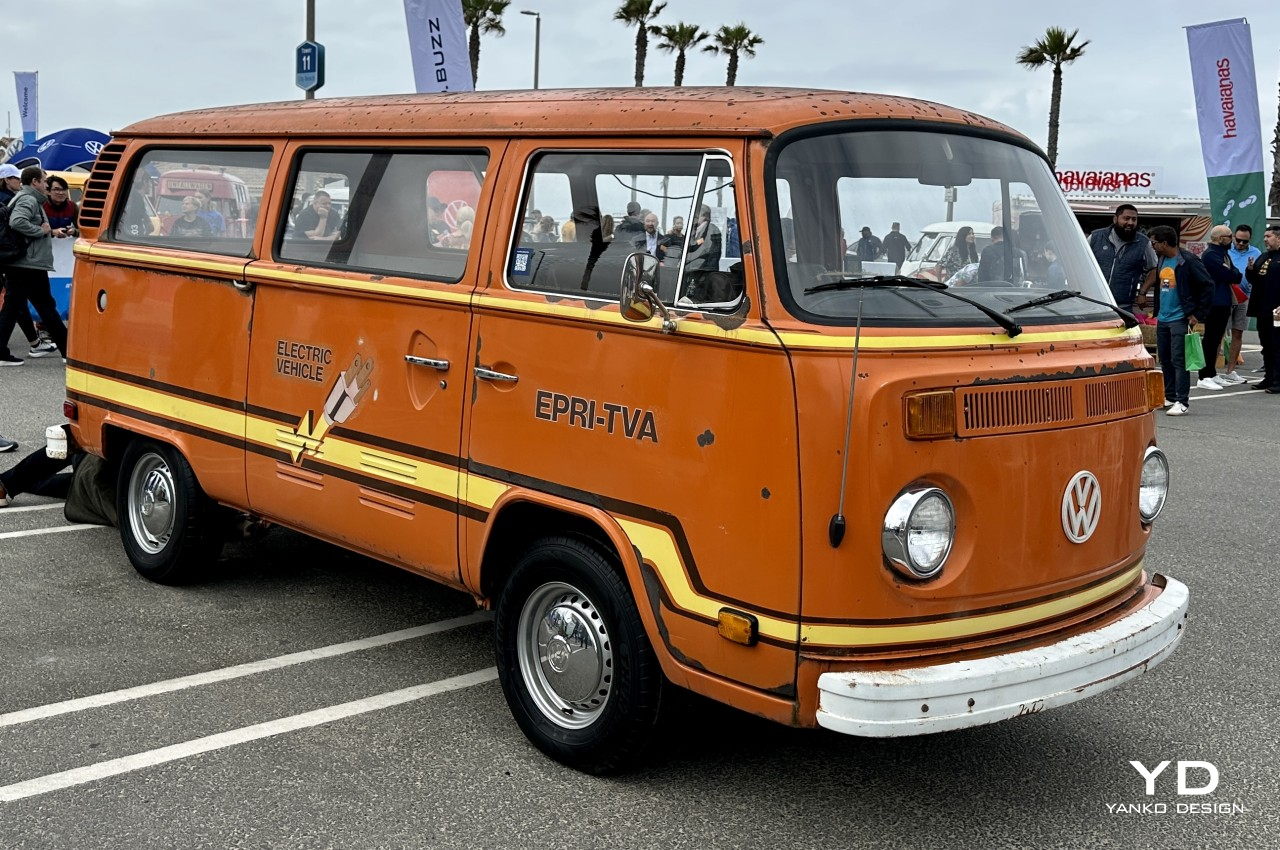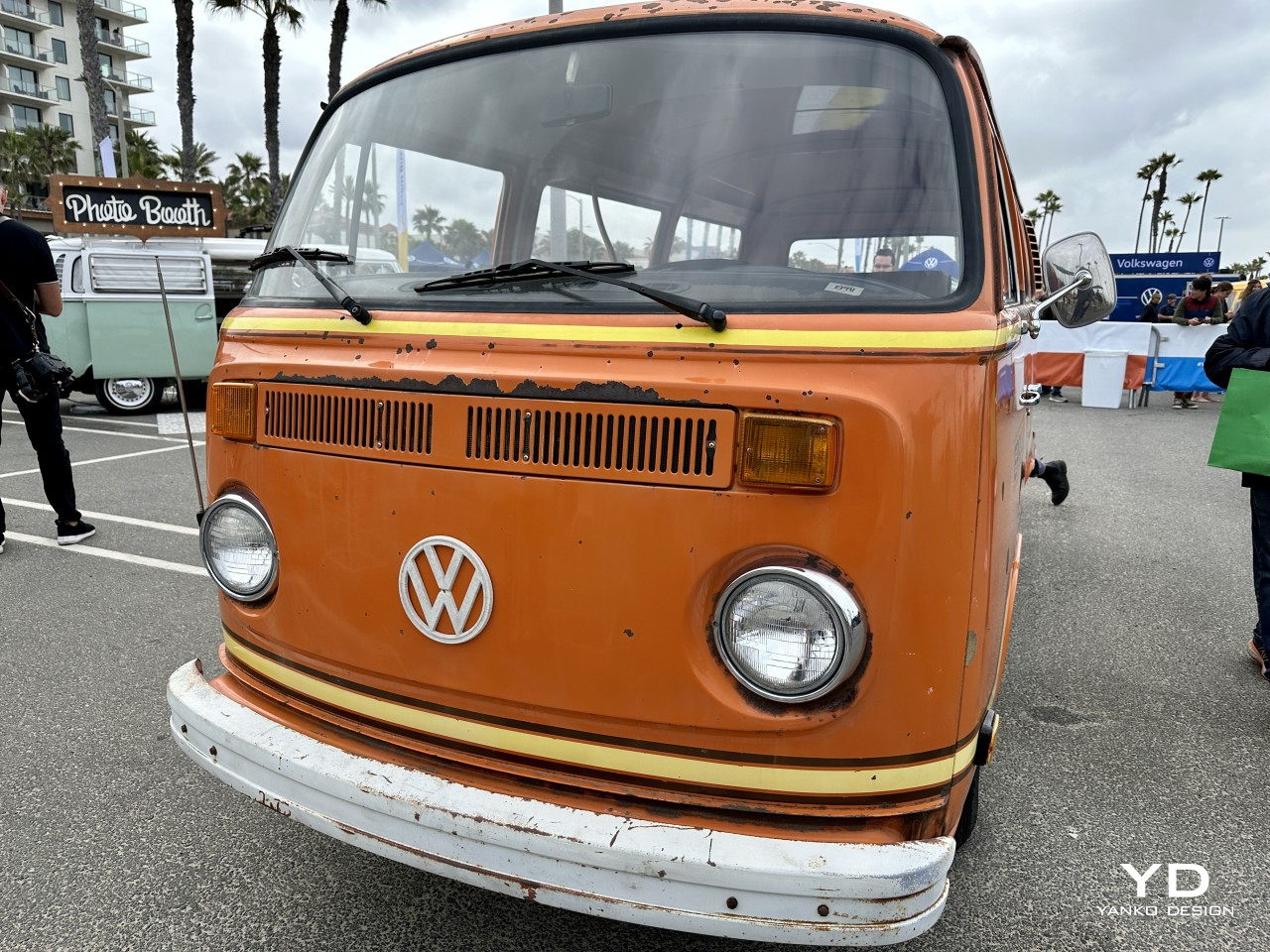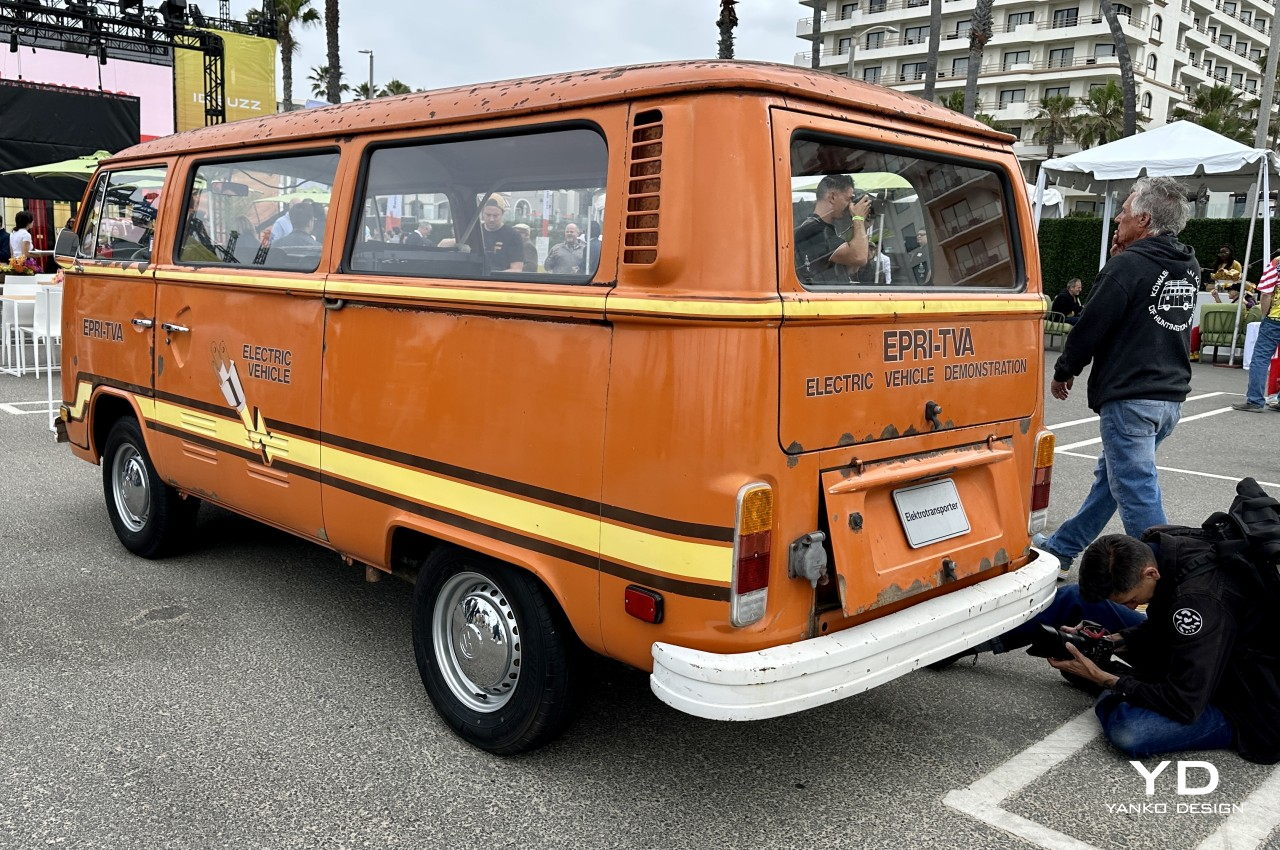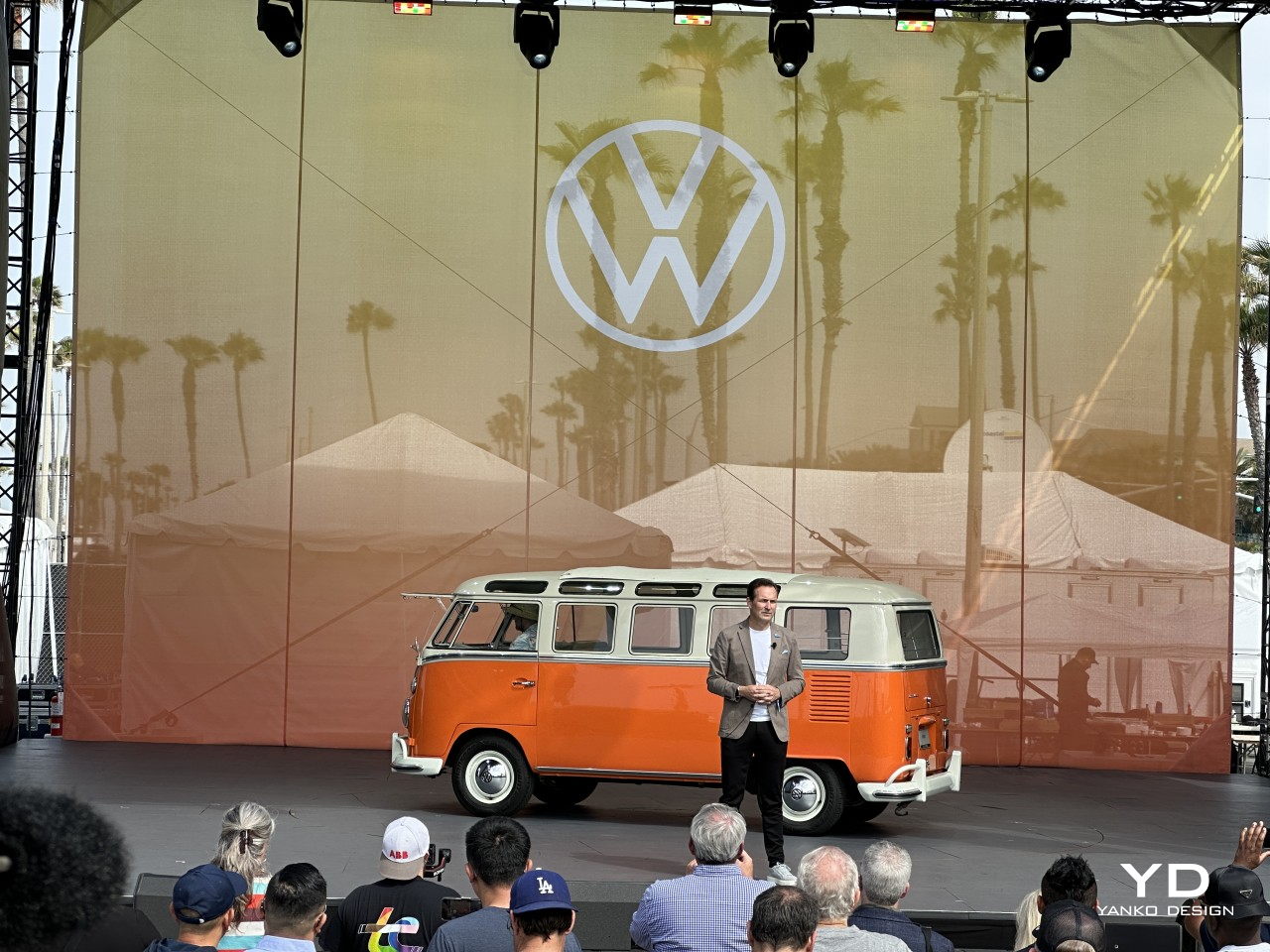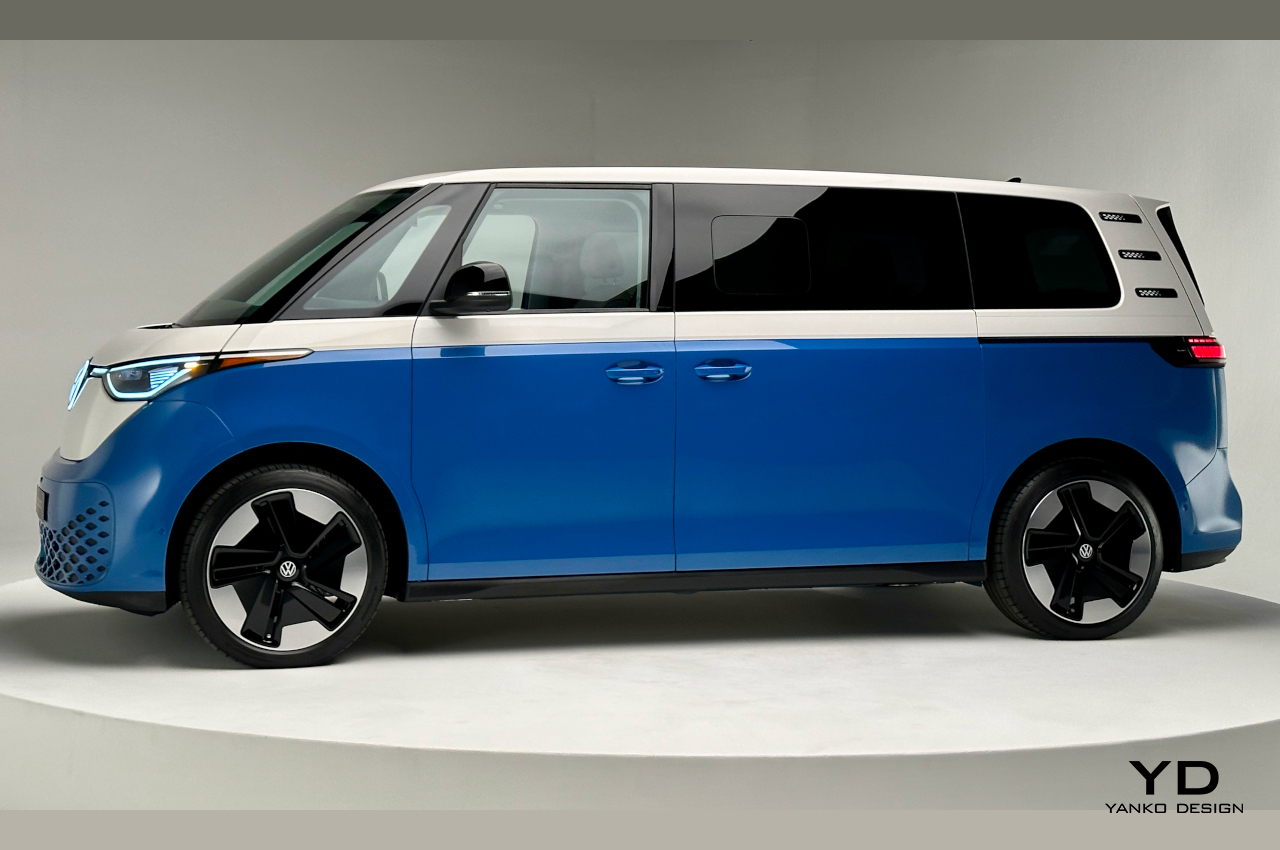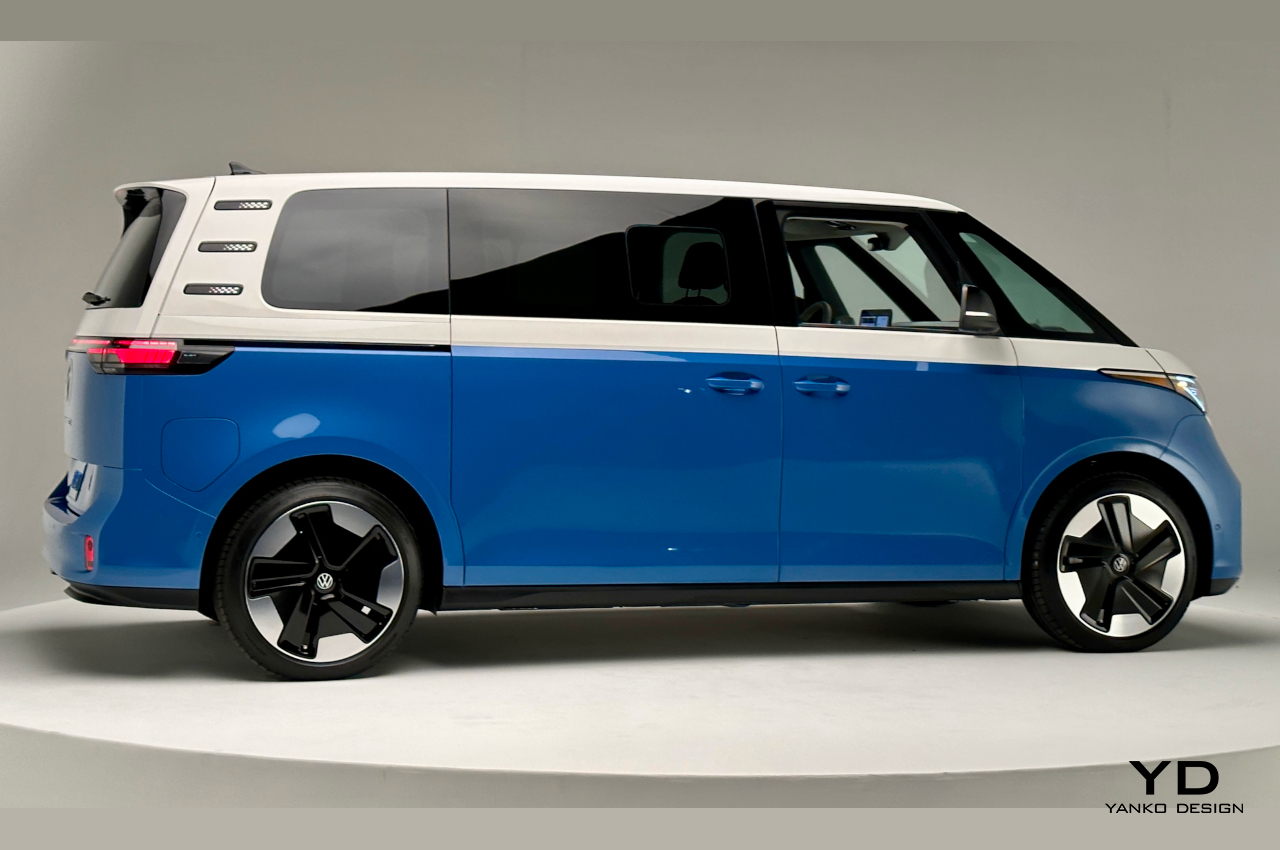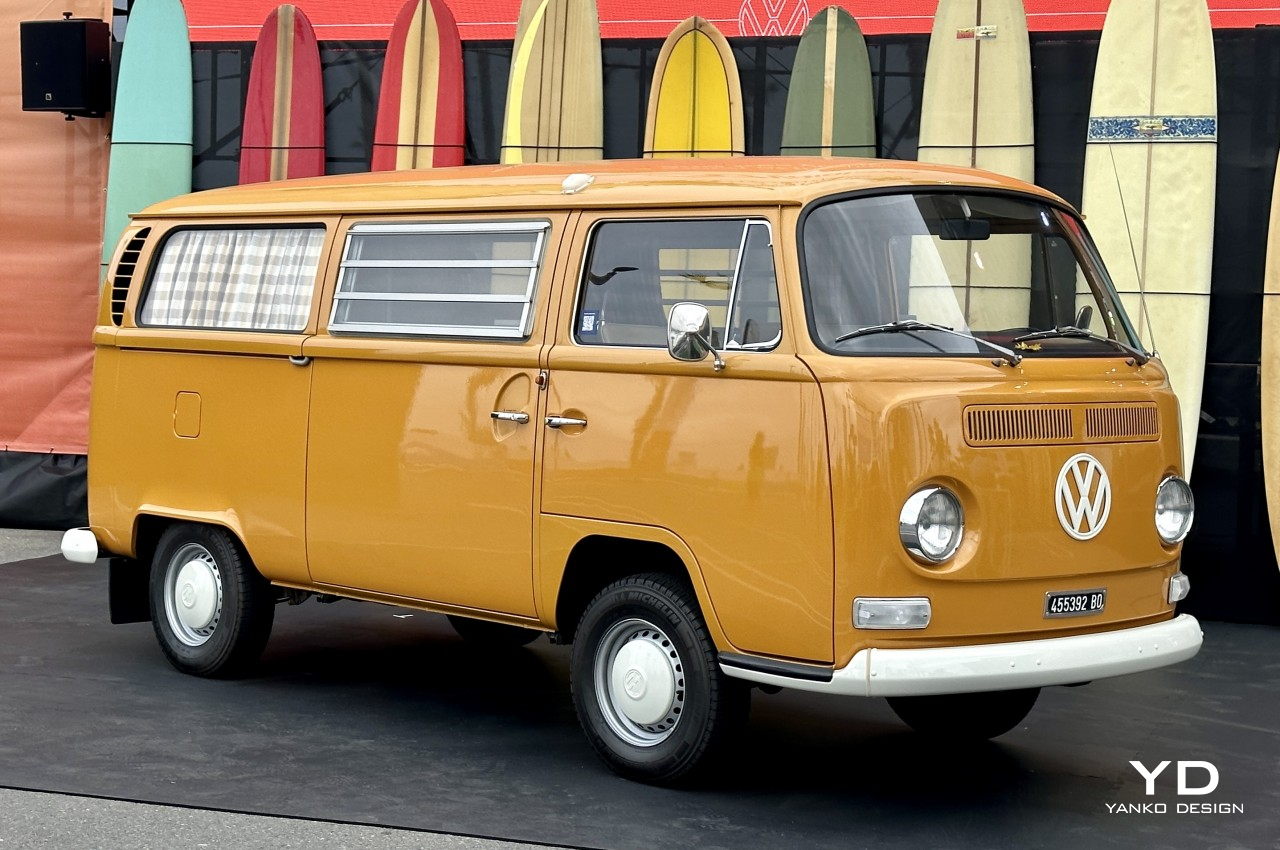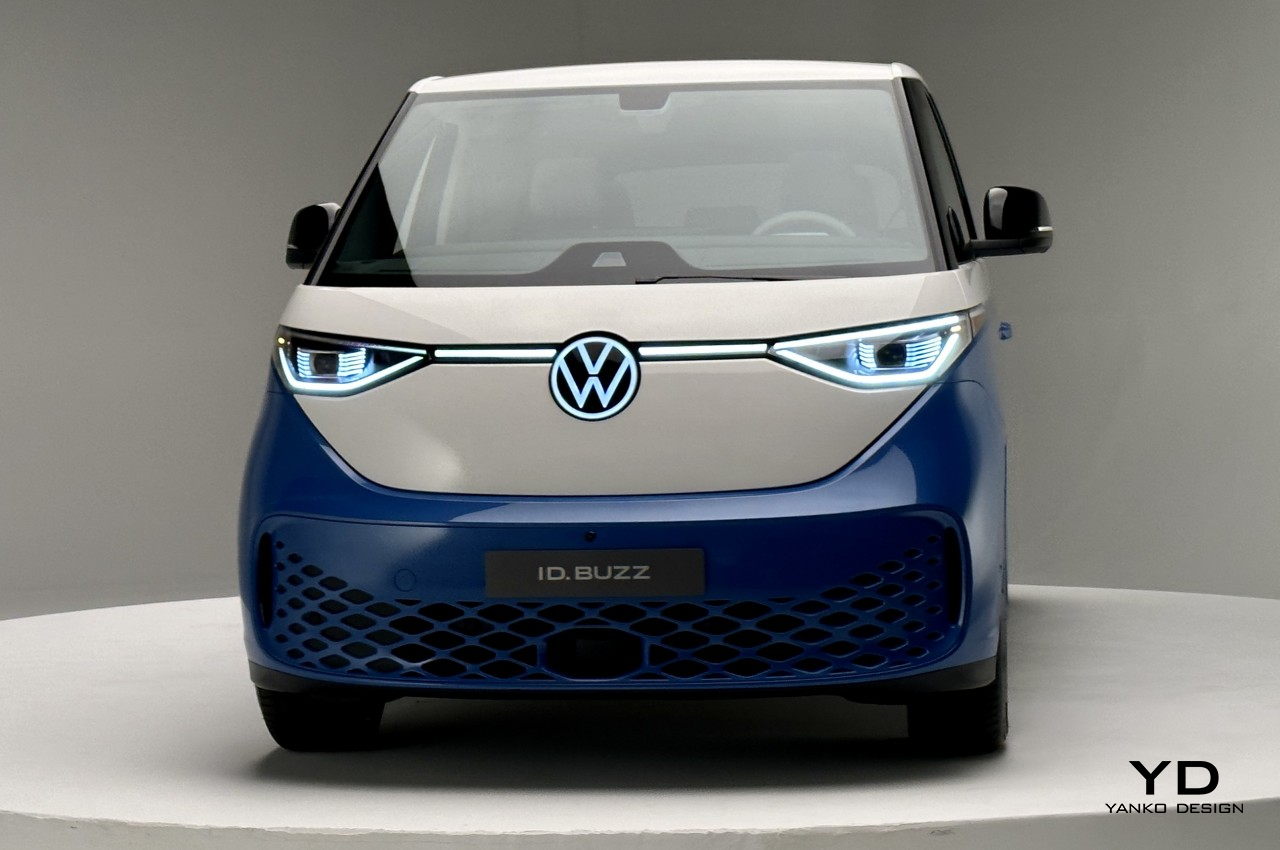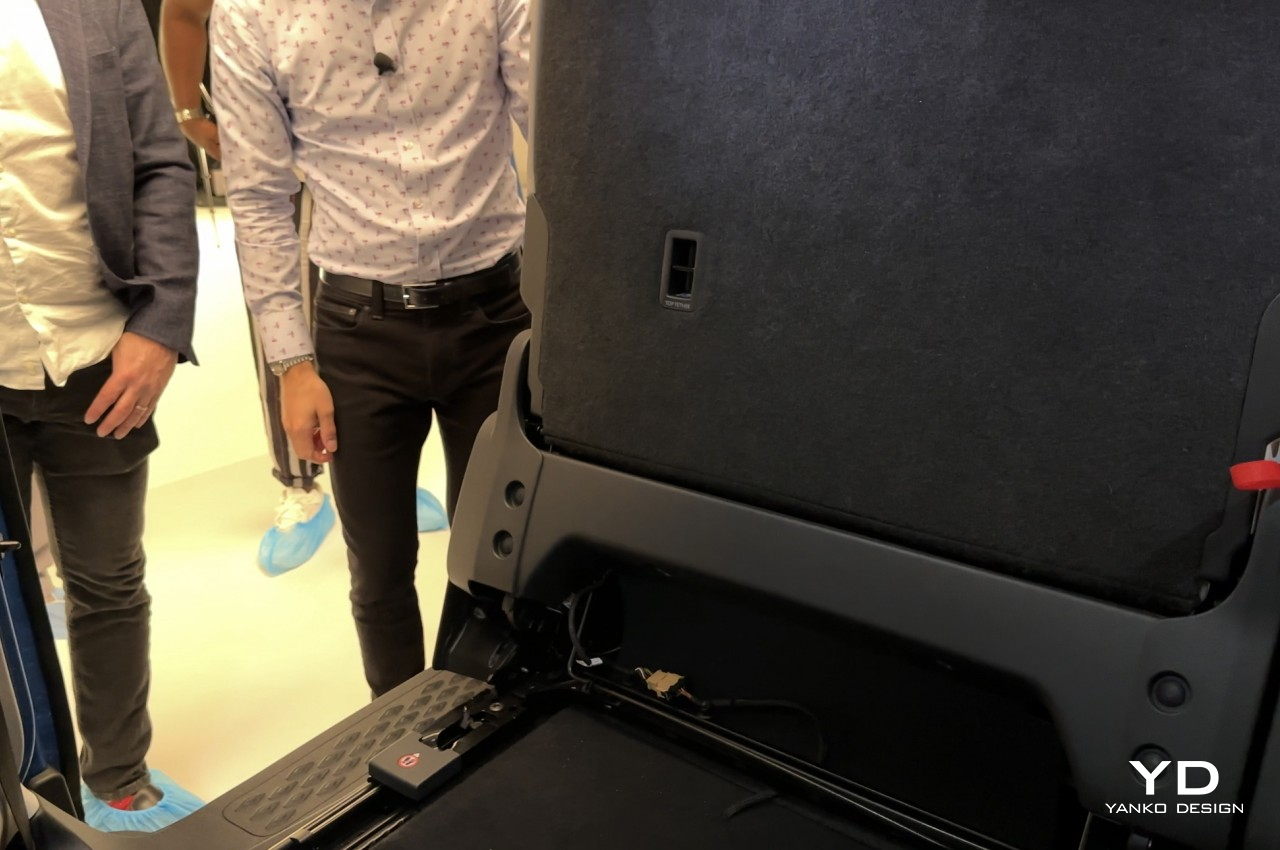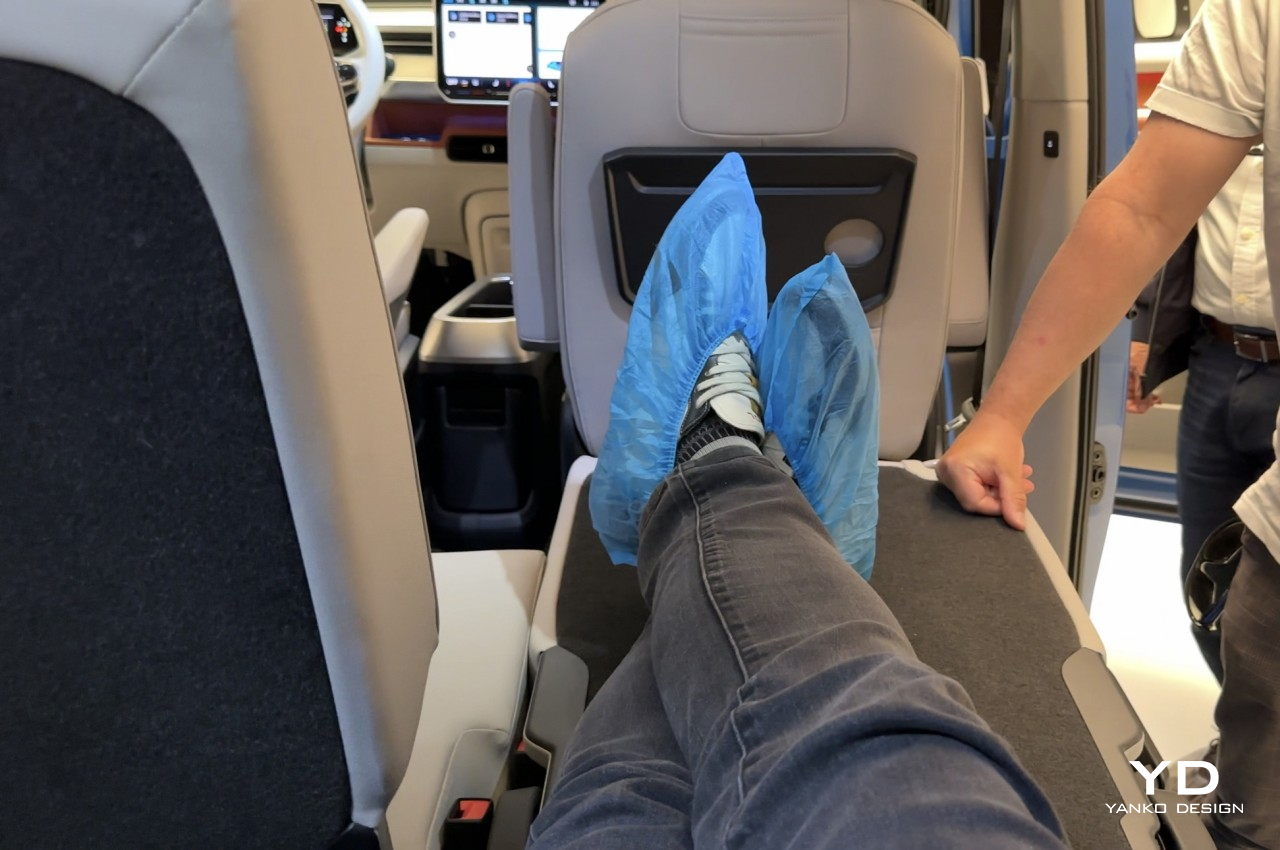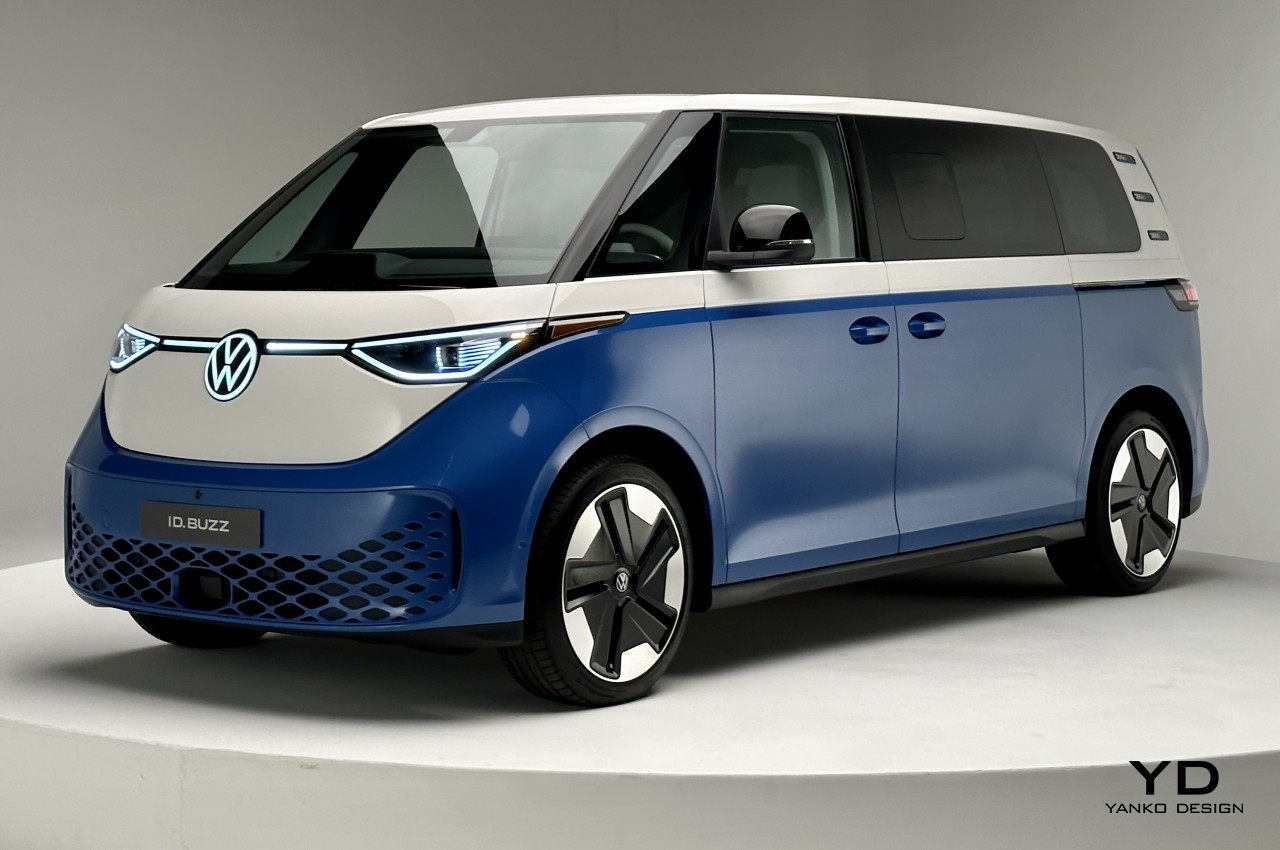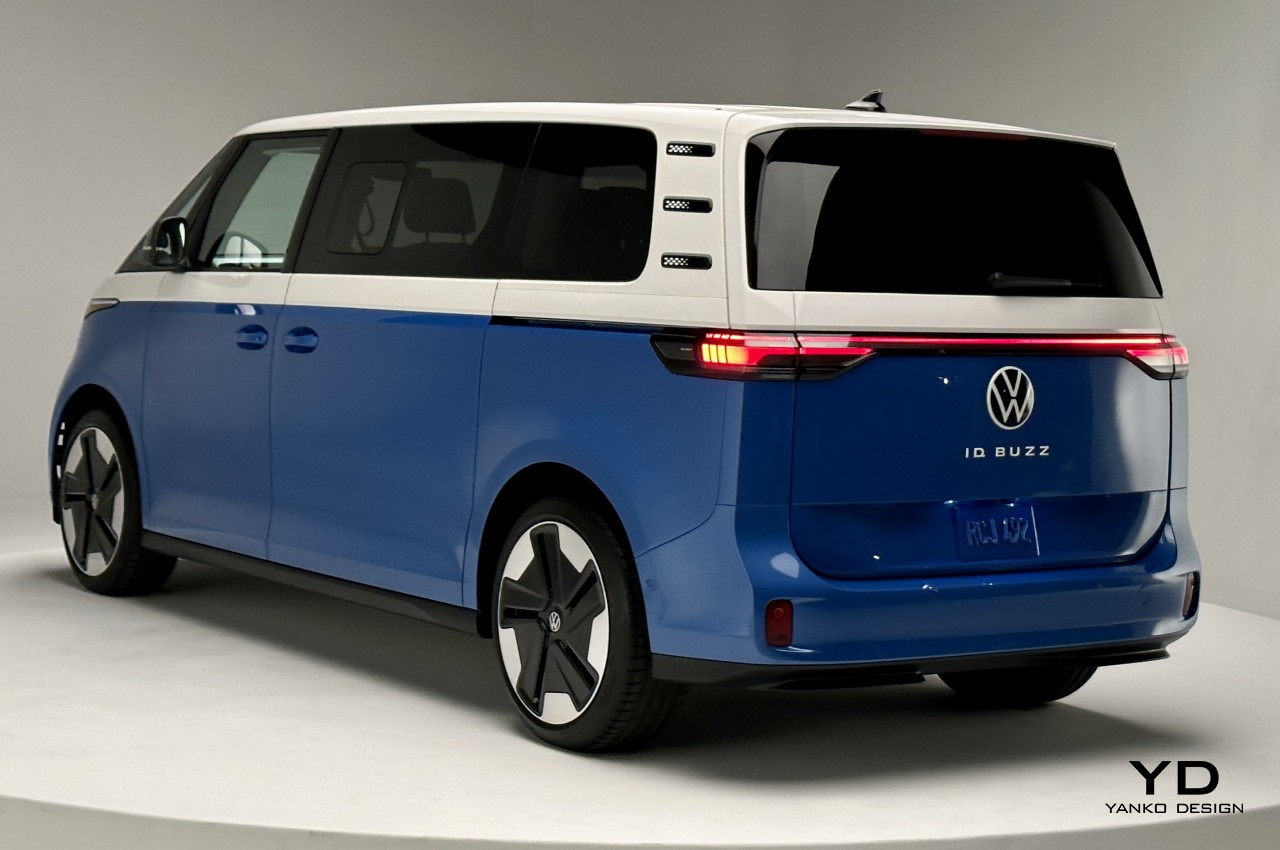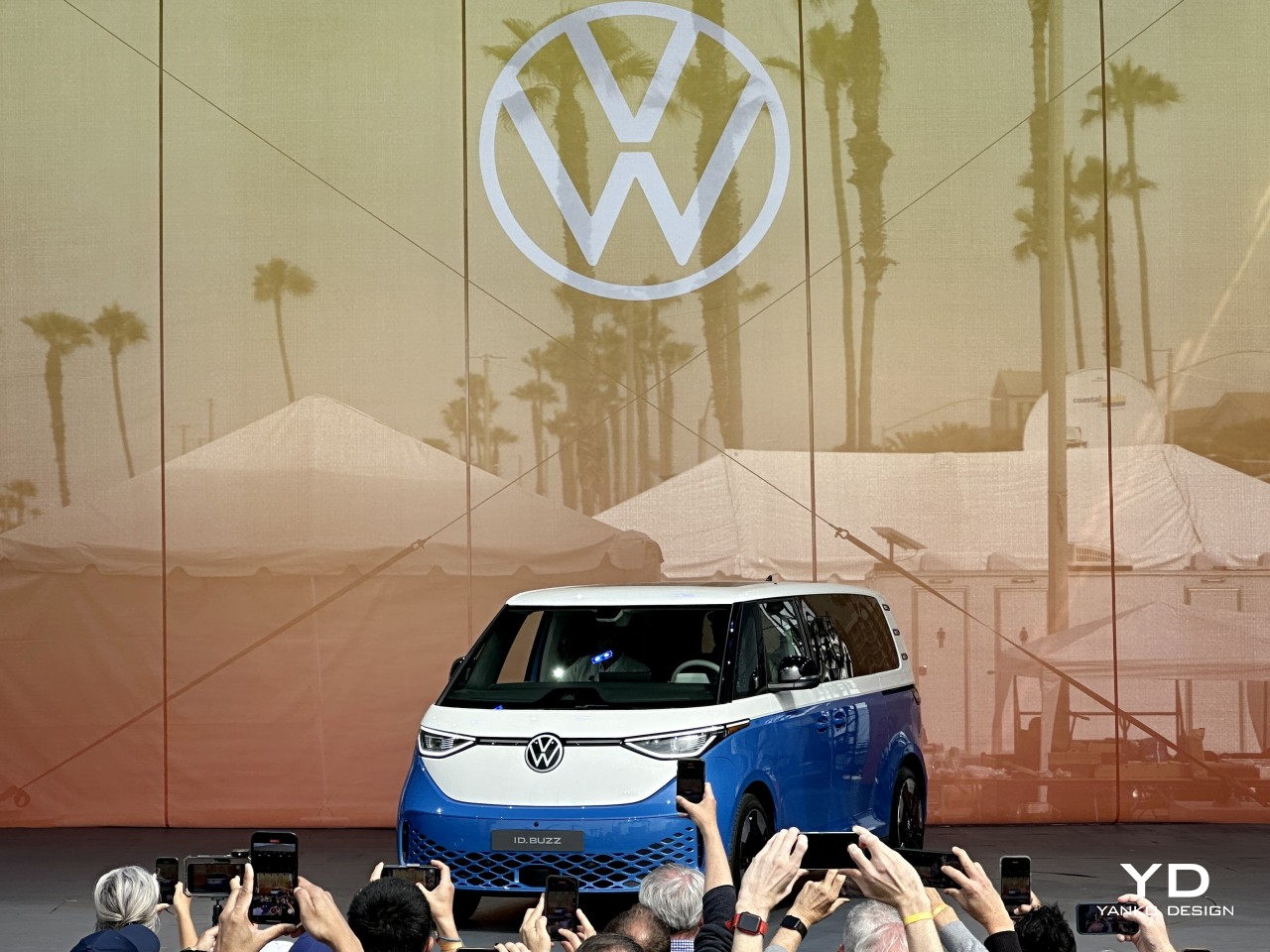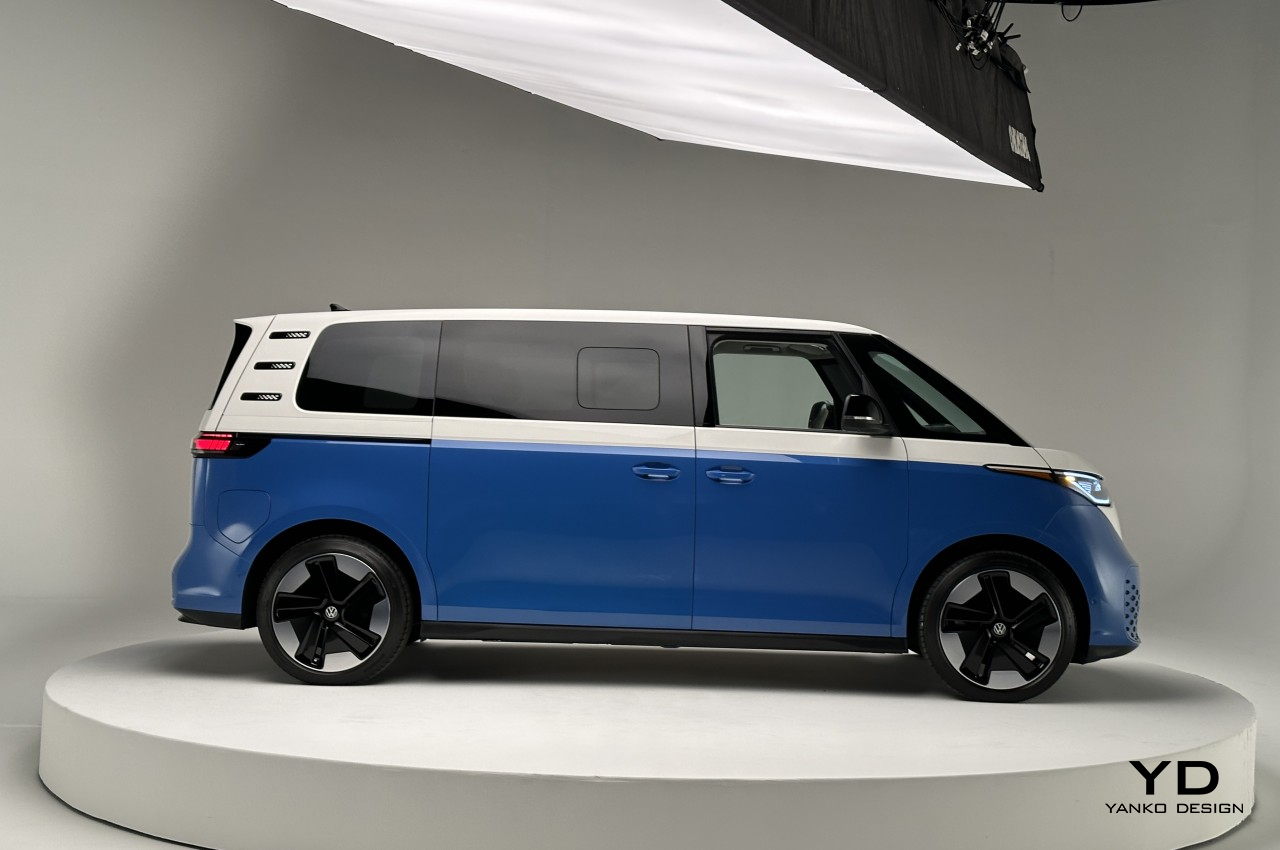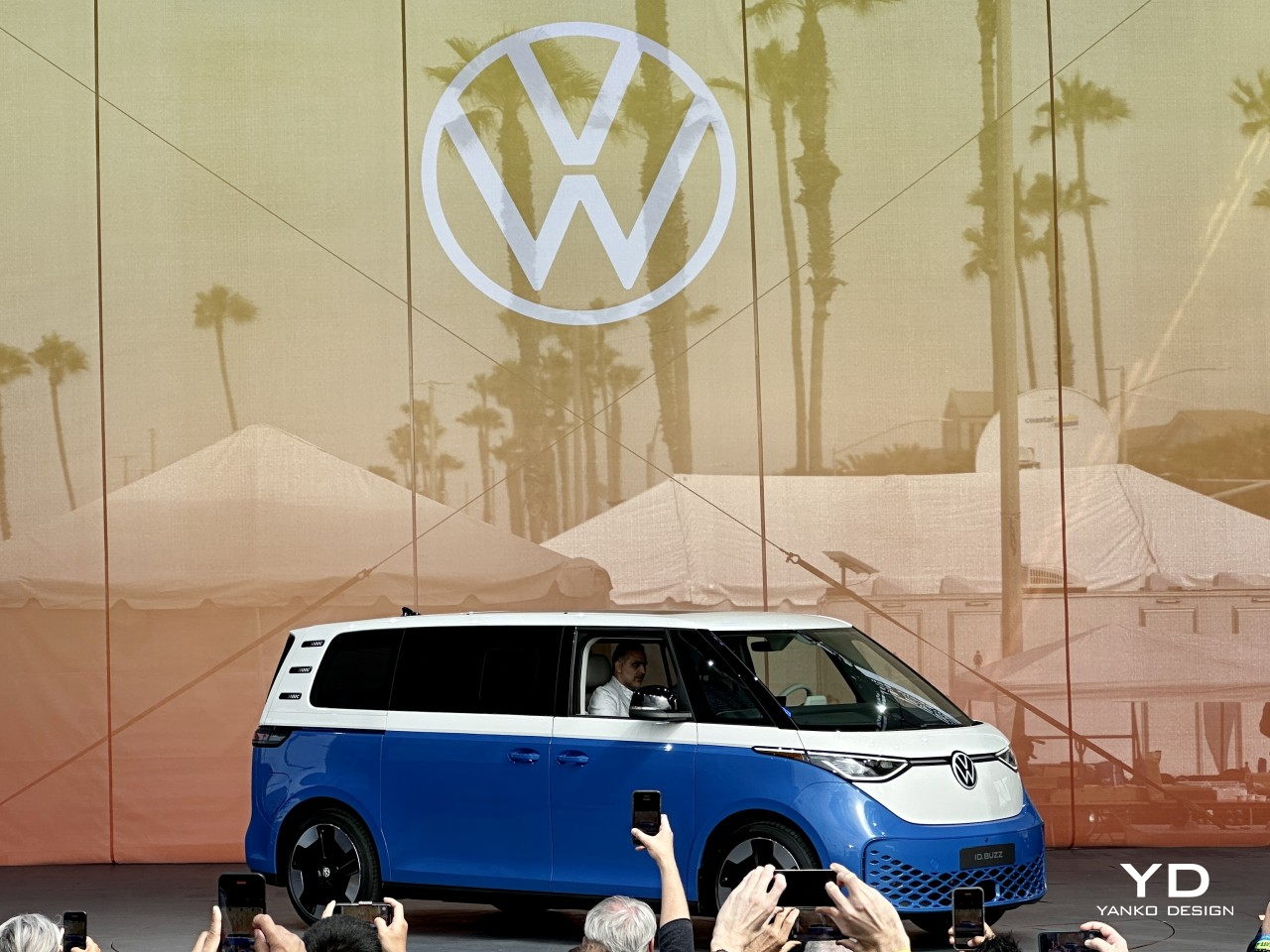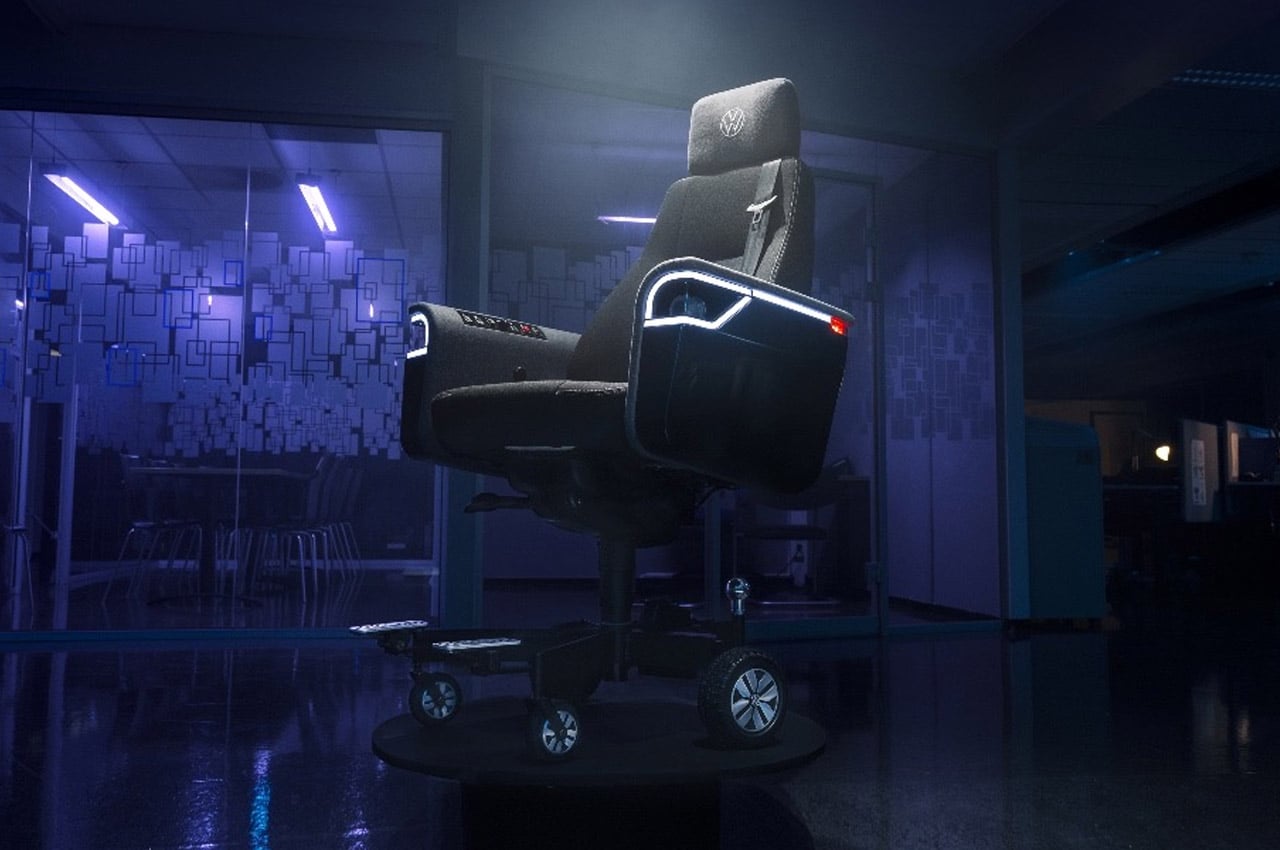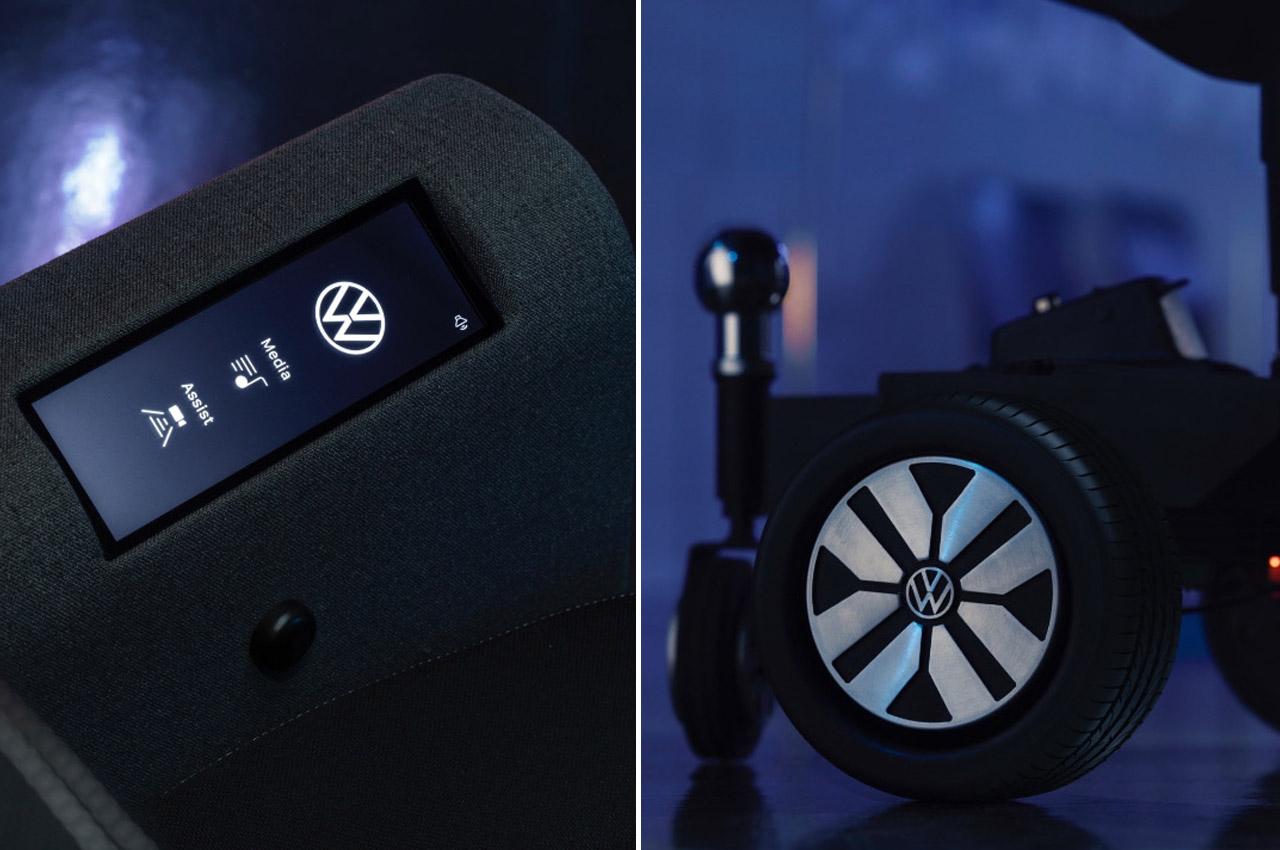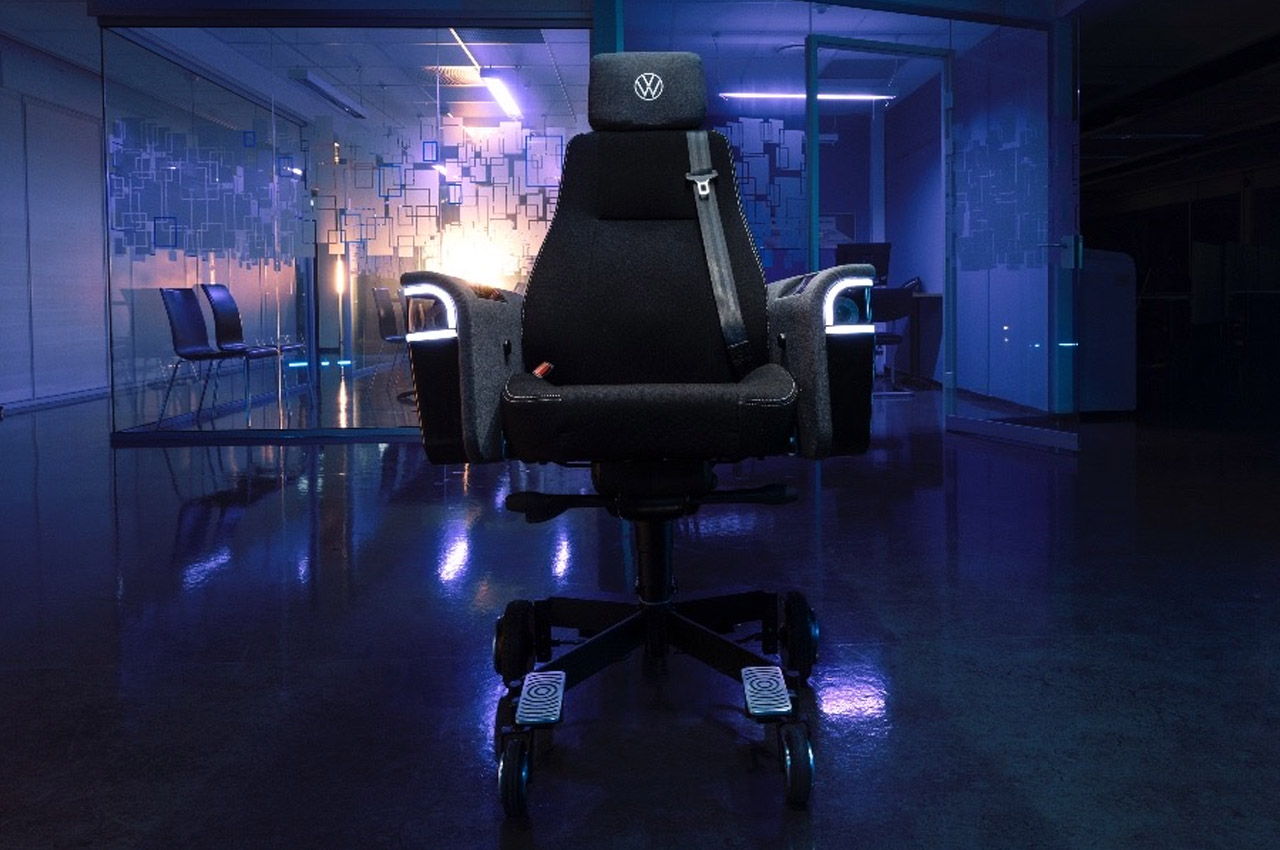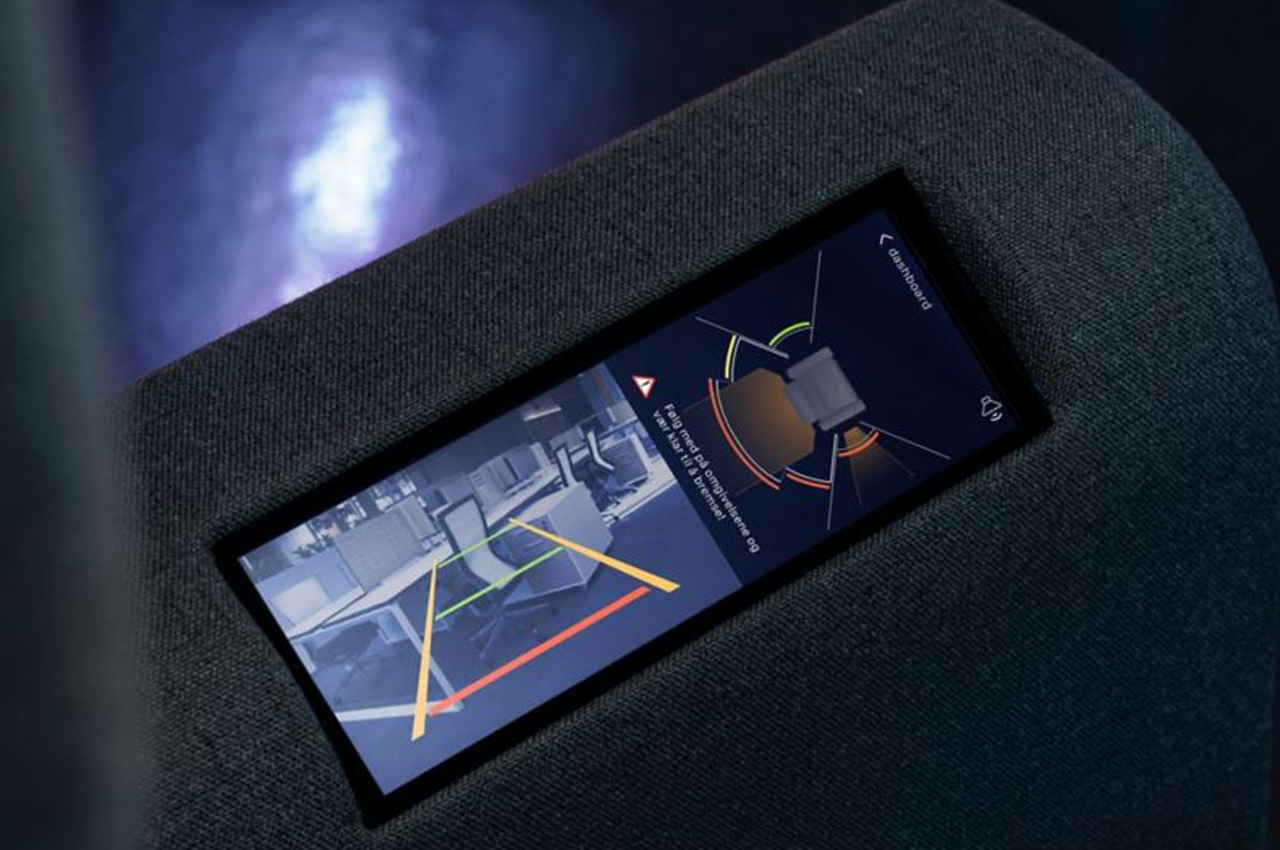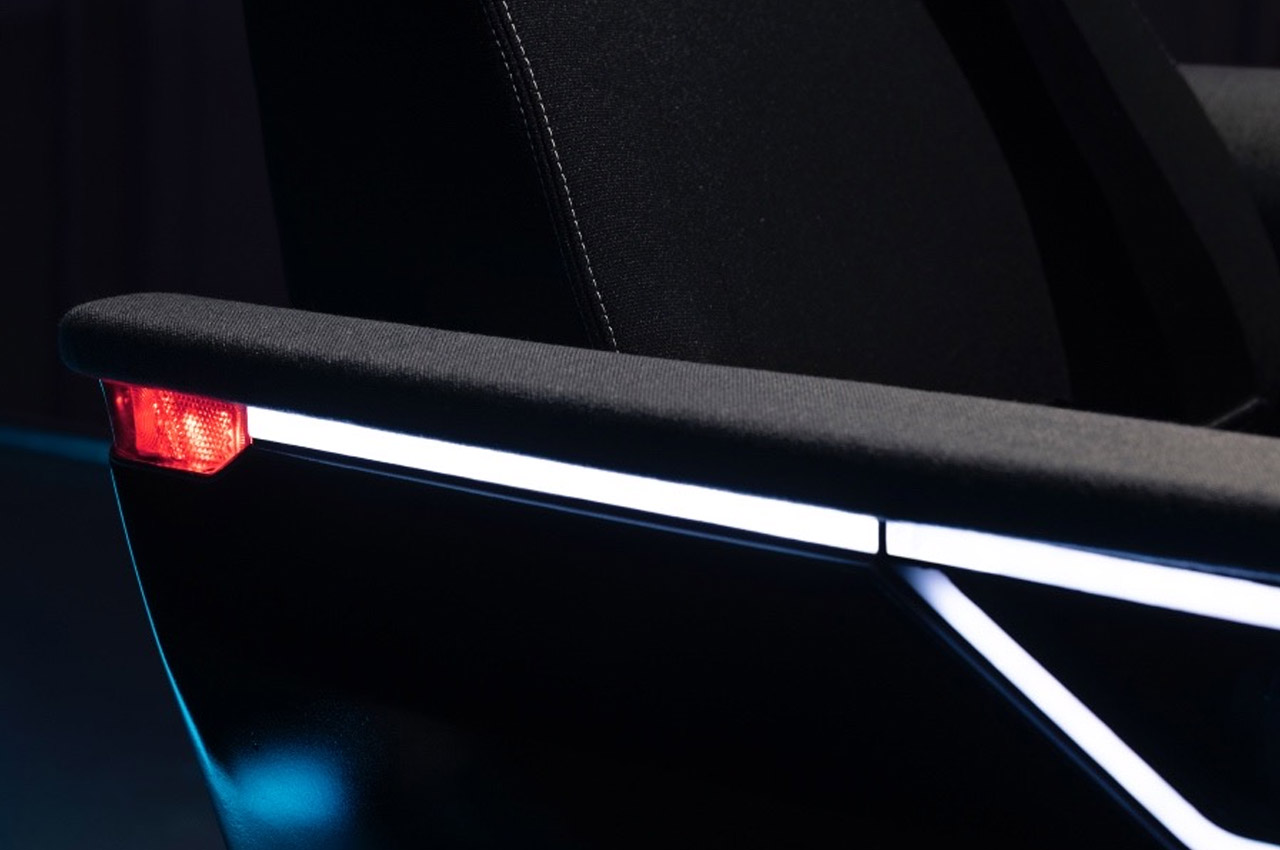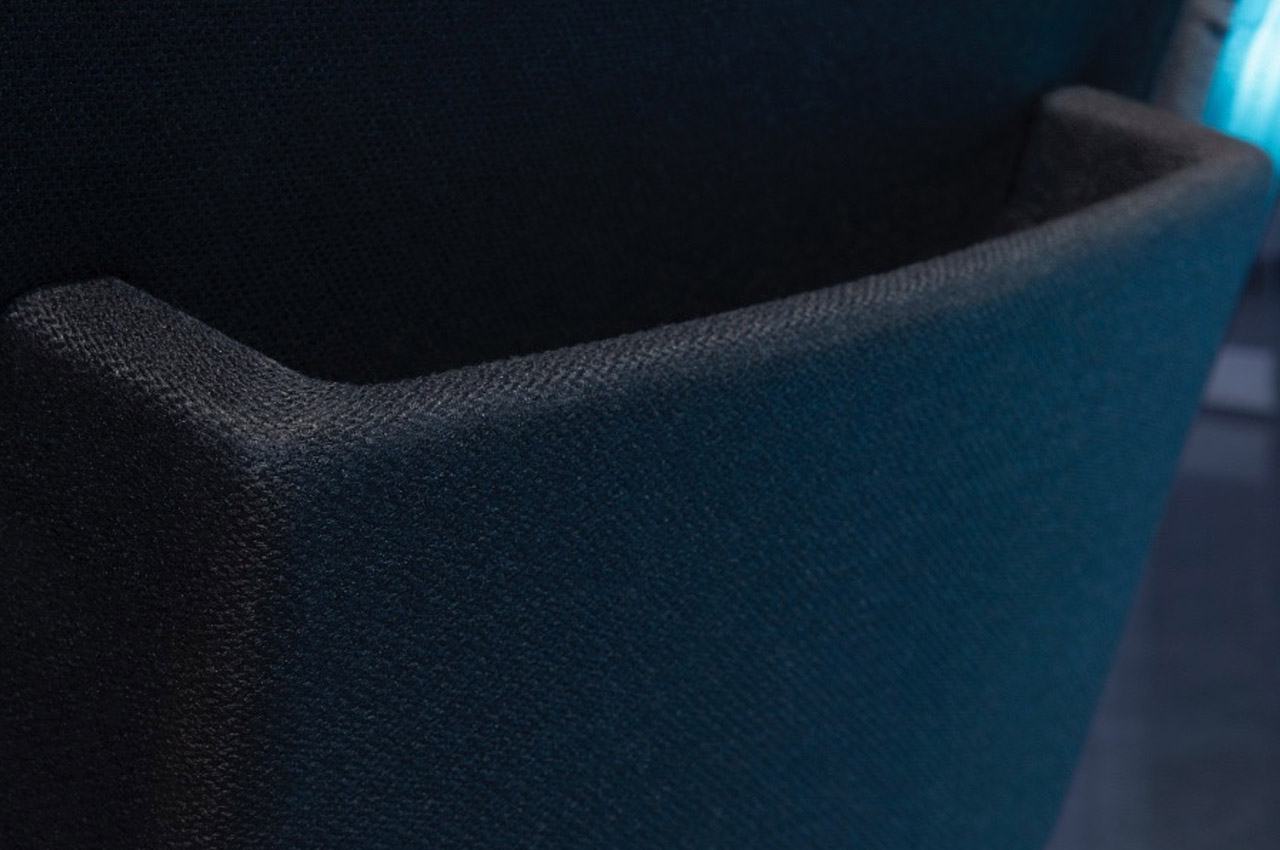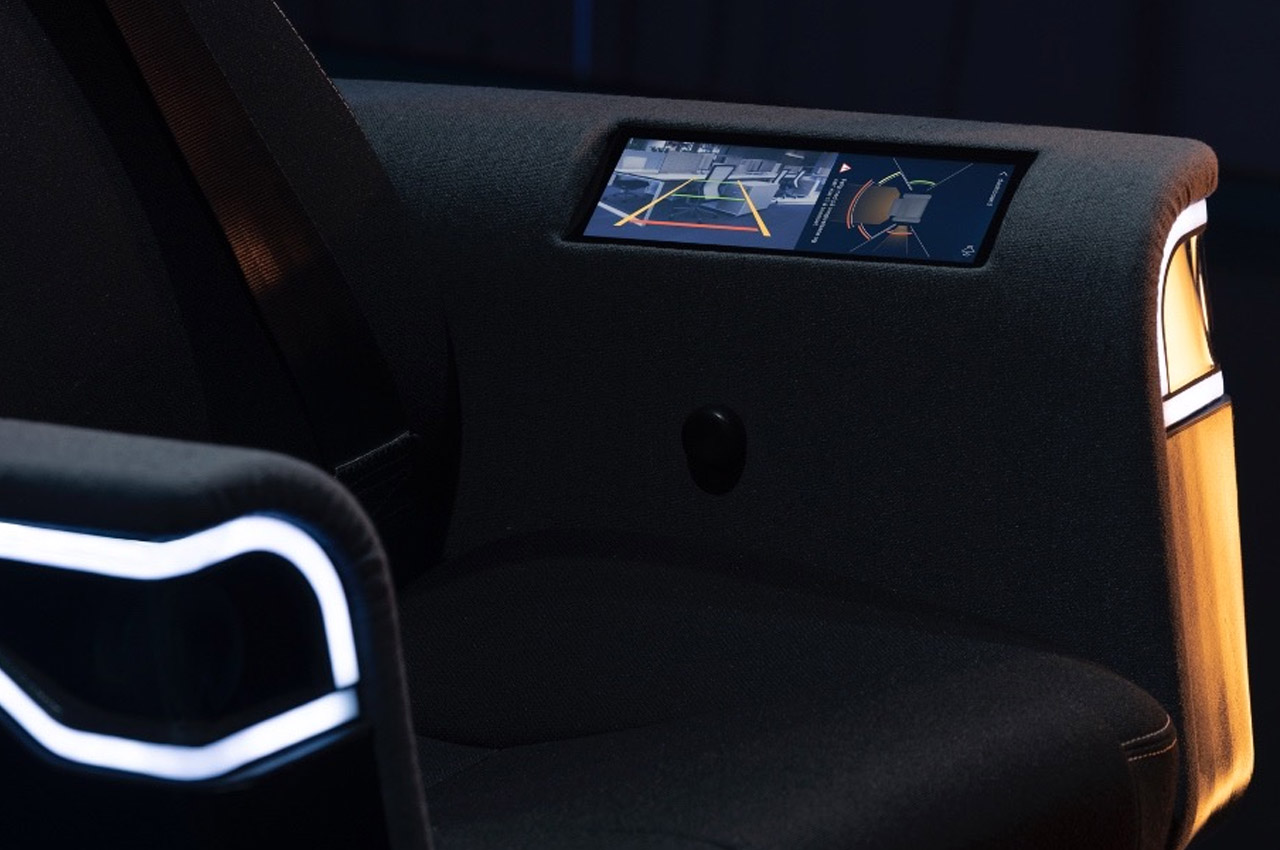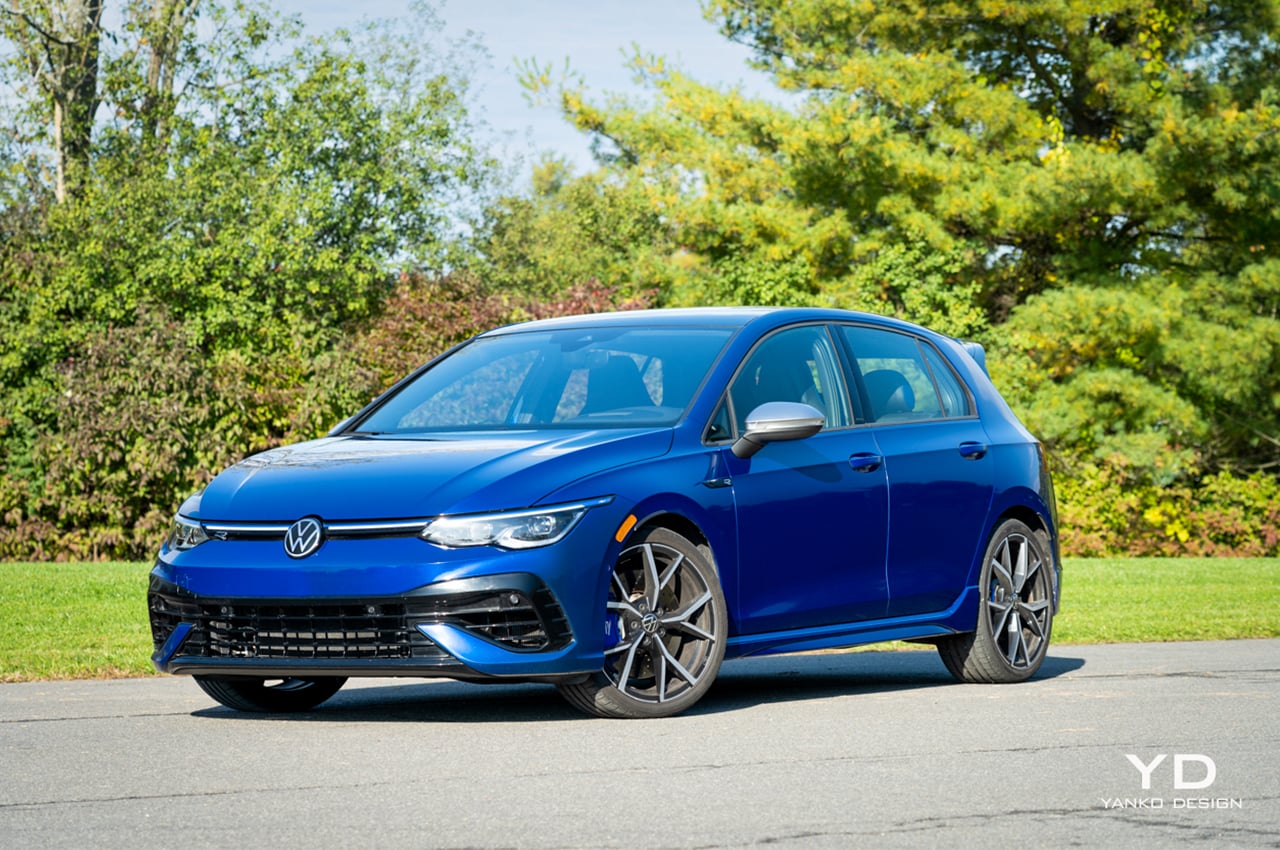
PROS:
- Engaging handling
- Plenty of power
- Top-shelf AWD system
CONS:
- Can feel sleeping
- Few visual upgrades over GTI
- Expensive
EDITOR'S QUOTE:
I pushed the Golf R a little harder on the day-to-day, spent a bit more time customizing things, and was left wanting only more time with VW's all-wheel-drive powerhouse.
It’s not often that I get a second bite at the apple with a car for evaluation. Usually something shows up in my driveway, I live with it for a week, and then it disappears again, turning into a proverbial pumpkin with no more lasting presence than a few megabytes on my camera’s memory and some lingering impressions within my own.
However, this is the second time I got to sample this Lapiz Blue Metallic Volkswagen Golf R, and I’m very thankful for that extra go. The first sampling I only had a few days with it and, after handing back the keys, I felt it was a really fun car when pushed hard but kind of bland on the whole. On my second go, I pushed it a little harder on the day-to-day, spent a bit more time customizing things, and was left wanting only more time with VW’s all-wheel-drive powerhouse.
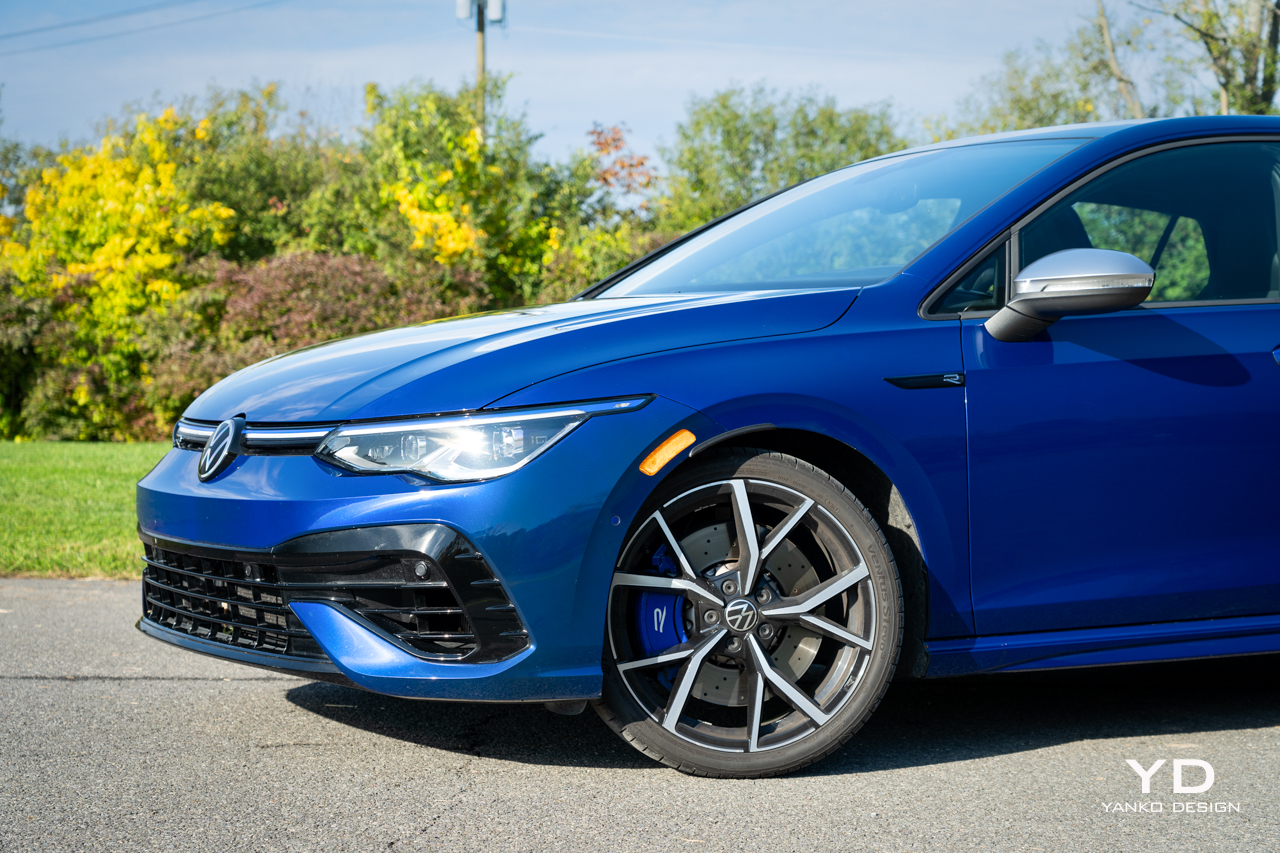
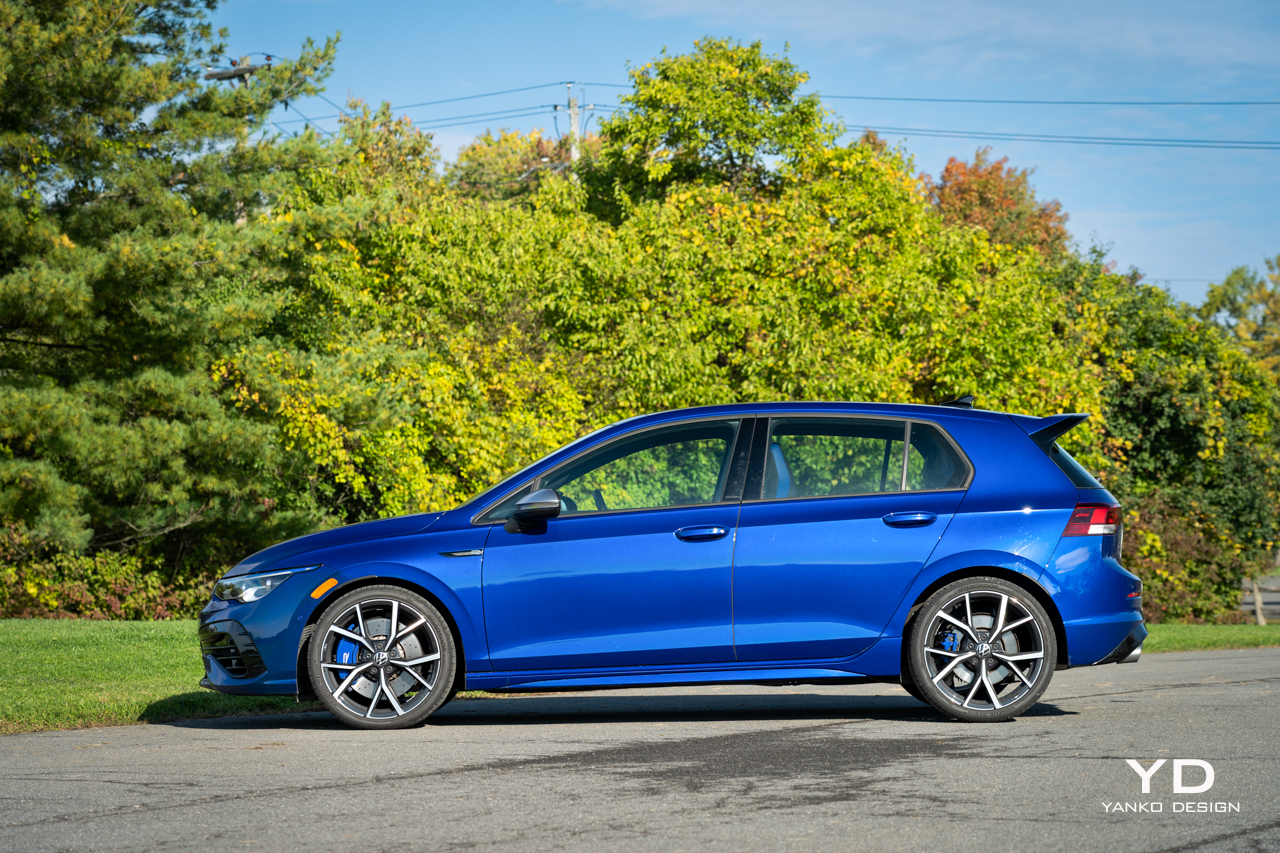
Don’t call it a hot hatch
With Volkswagen’s GTI still merrily filling the role of hot hatch, moving ever up-market but still attainable and fun, the Golf R really has to be something else. Something more, really, And it is: more money, more power, more capability, and in a lot of ways more mature, too.
It starts with the look, which is purposeful but far from randy. The eighth-generation Golf is, I think, a step towards sophistication. The low nose is sharp, with slender, double-fluted headlights and running lights that wrap well around into the front fenders. Below that, the cooling vanes for the radiator and heat exchangers are generous, spreading practically the full width of the bumper and looking a fair bit more aggressive than the hexagonal grille on the current GTI.
Beyond that, visual differentiating factors between the Golf R and GTI are admirably few. There’s a bit of badging here and there, a hatch-mounted wing that’s quite large but fits so nicely into the overall profile of the car it’s easy to miss. The most notable difference is the exhaust, four large pipes sitting low, flanking a petite diffuser that probably doesn’t do much for aero but does clean up the lower extent of the bumper.
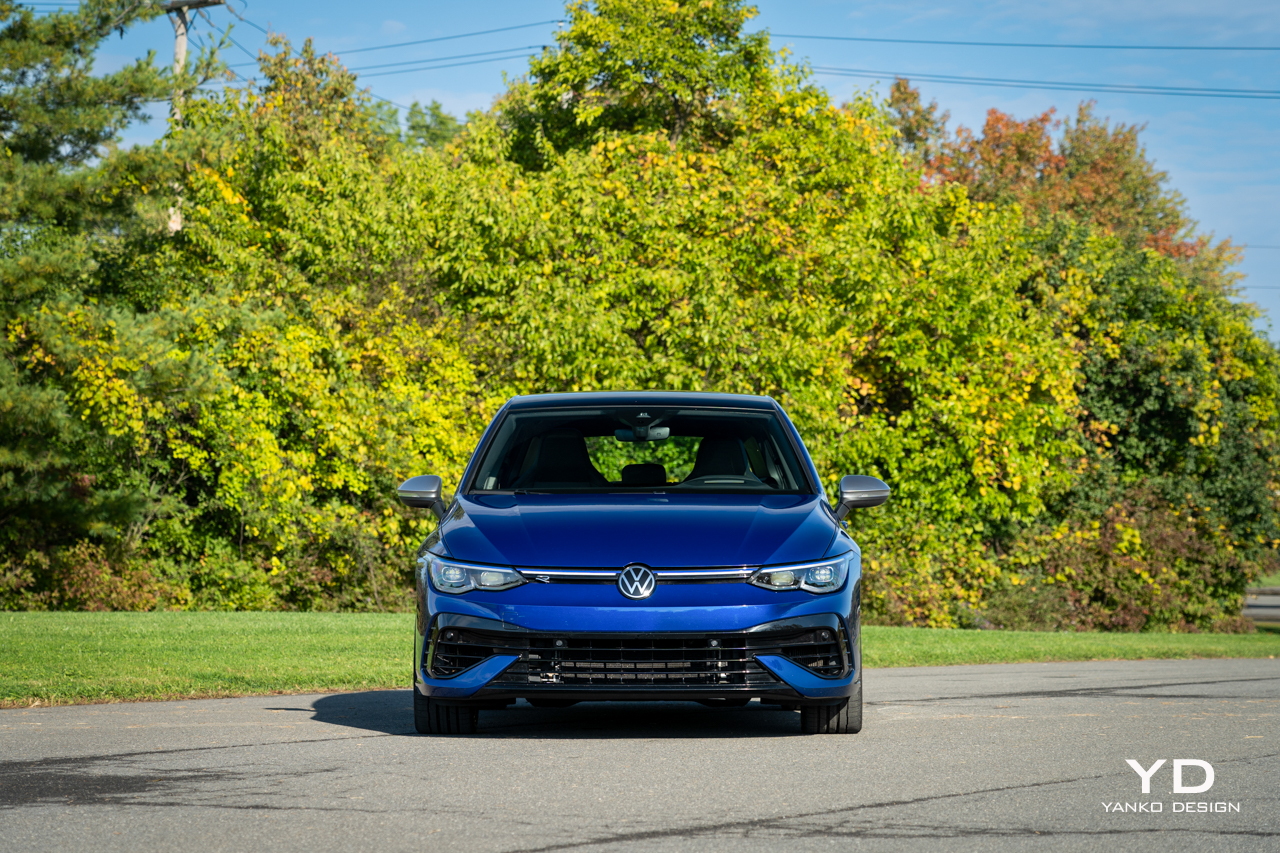
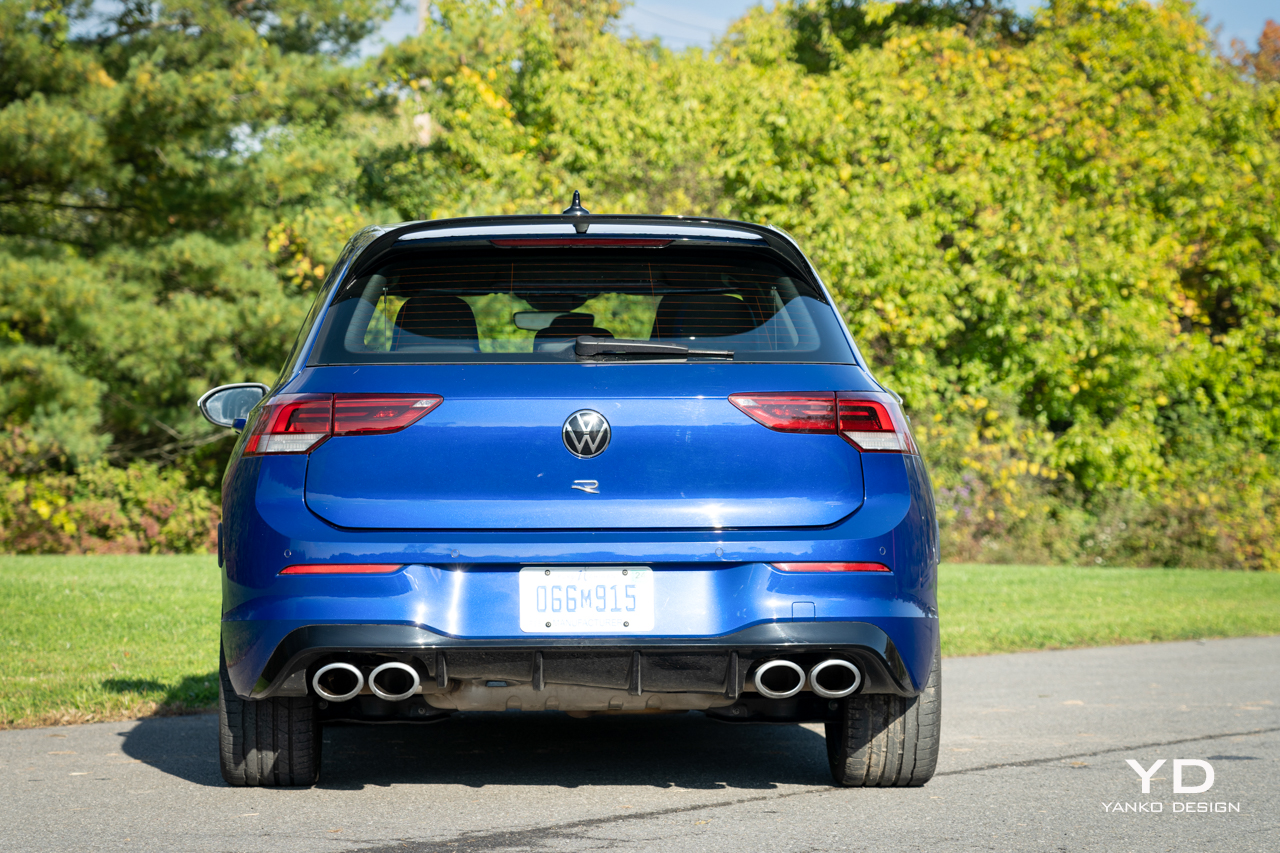
Park this thing next to a regular Golf and 99 people out of 100 wouldn’t pick the R out as being anything particularly special. For a lot of performance car buyers that would be a major turn-off. For me, that’s a plus. I like a special car that blends in, a classic sleeper, and the Golf R is definitely that.
The understated vibe continues on the interior. You could call it too dark, and compared to something like the VW ID.4 it certainly is desaturated, but there’s a lot of subtle detail on the inside that is easy to miss but charming when you spot it.
Black is the predominant color but subtle blue highlights add a lot of visual intrigue. There’s the stitched R logos in the seats and blue piping, sure, but look closer and you’ll see that the black leather seats are actually dyed blue, which you can really only see in the perforations.
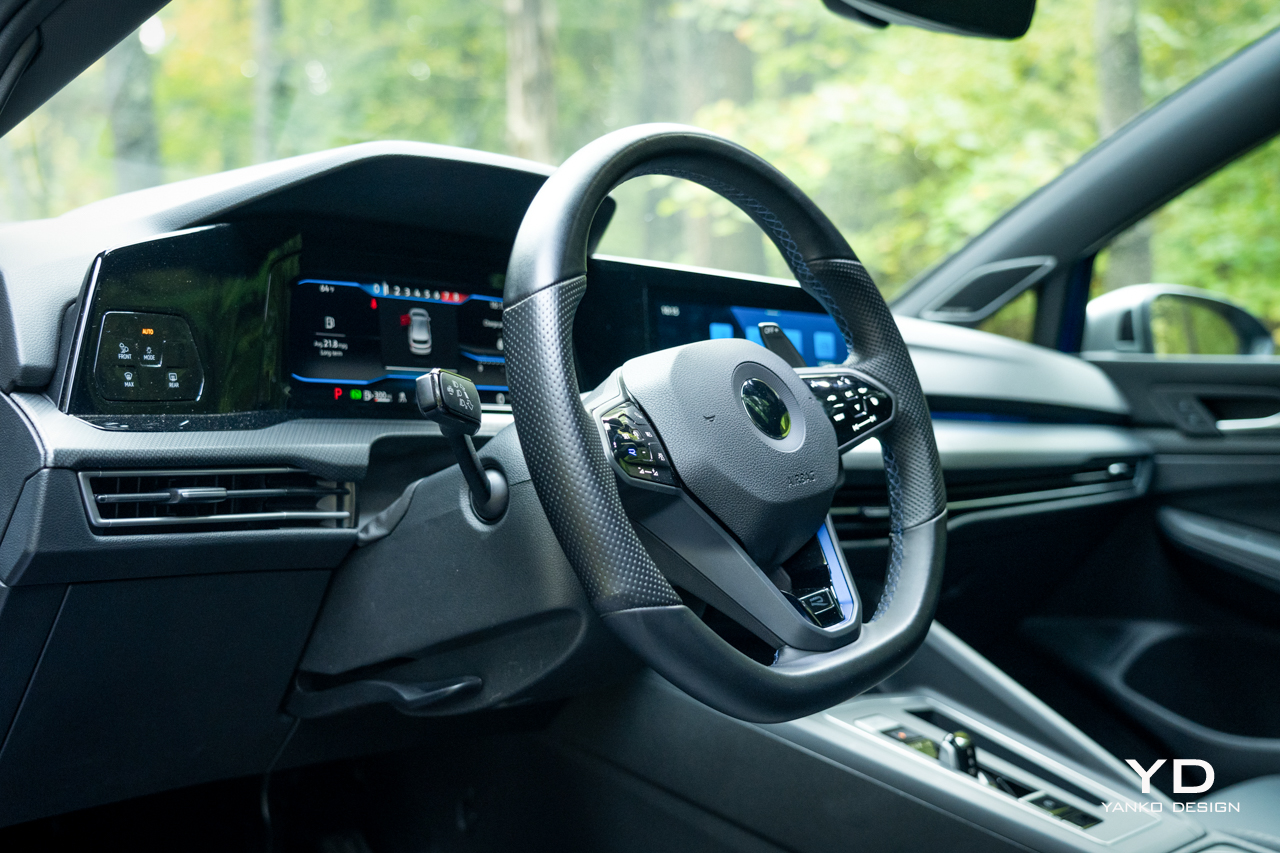
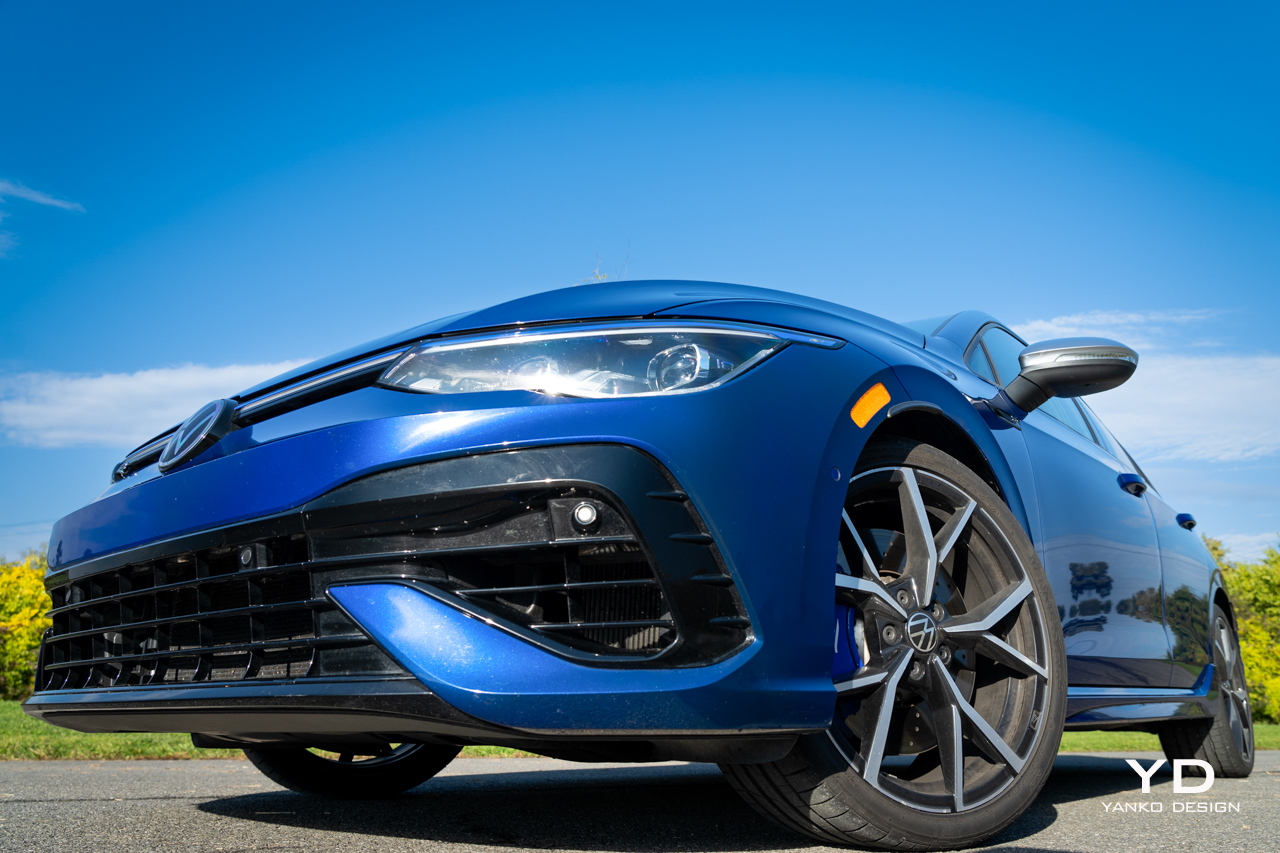
Downcast, midnight blue lights highlight the wireless charging cubby and blue stitches hold the leather on the steering wheel. Blue over black isn’t much of a highlight, but again, it’s subtle and clean and mature. Only the insert that runs from one door to the other, spanning across the dashboard, doesn’t work for me. It’s a patterned weave of some sort, with an almost carbon fiber look to it that is just a little busy for my taste. Sadly, there are no other options available.
Beyond the chromatic, the interior of the Golf is sophisticated if a bit low-rent for what is a $45,440 car. The Golf R gets custom seat inserts, but otherwise it’s much the same as the GTI. Plastics are a bit harsh and the omnipresent piano black trim collects dust and fingerprints like a hoarder. Carpet-lined door cubbies seem like a nice touch, but sadly the inner side of them is unlined, so anything you throw in there will still rattle away.
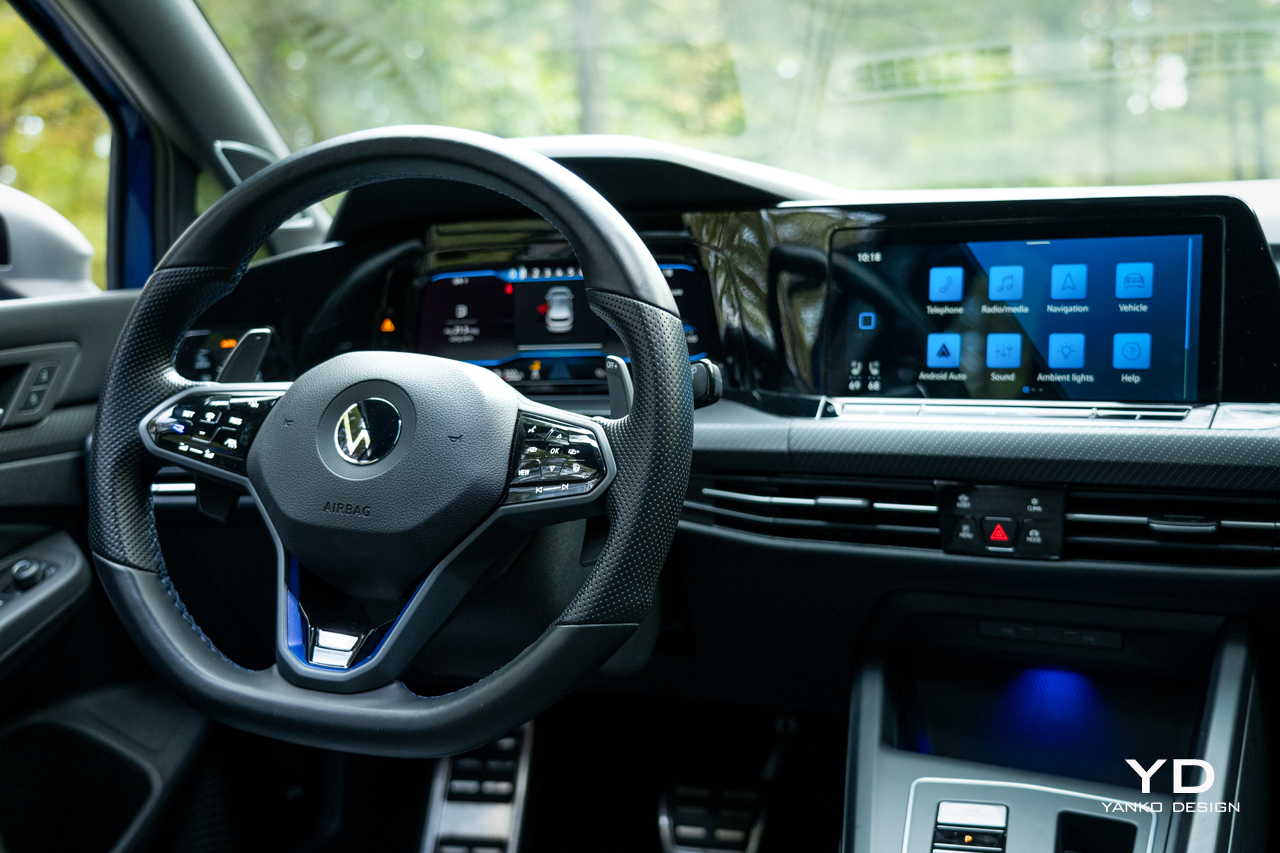
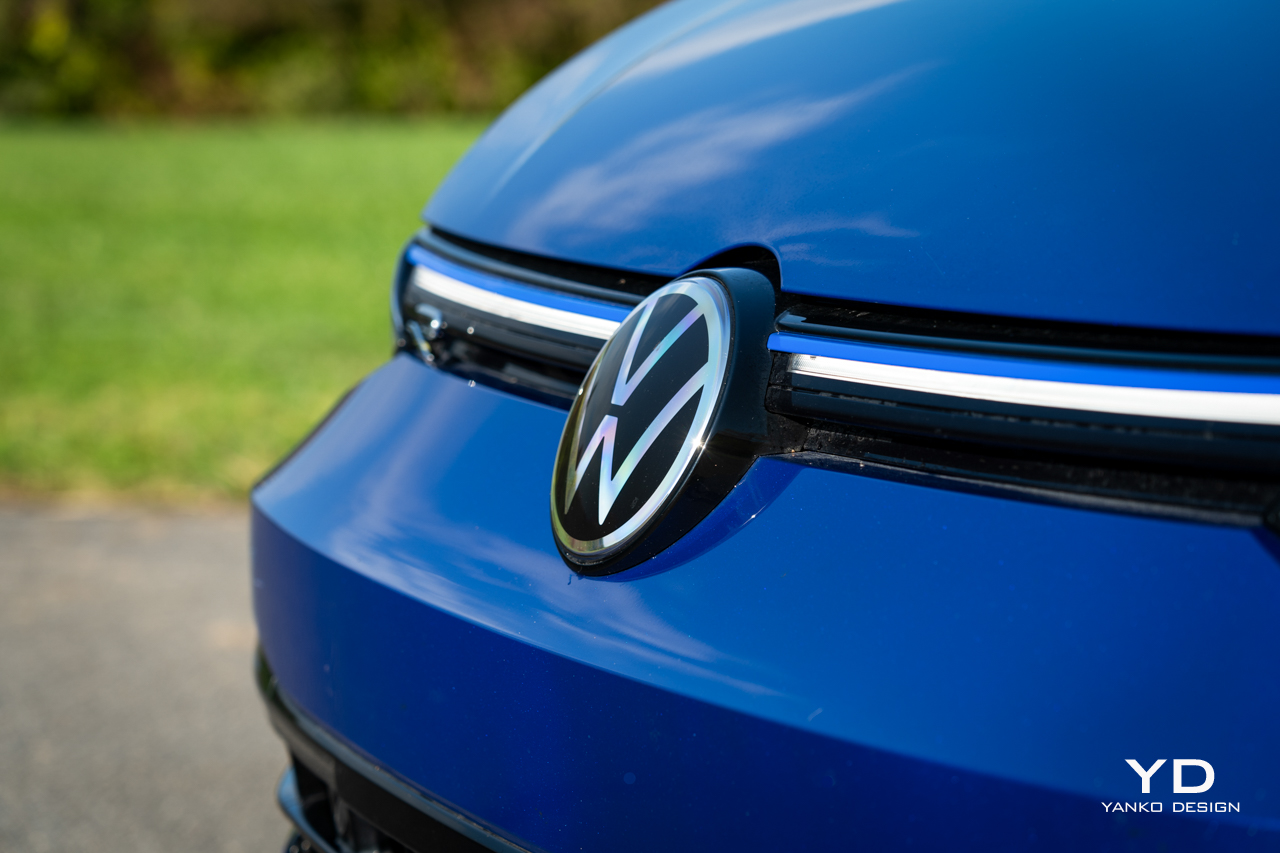
Like all modern VWs, there’s a preponderance of touch-sensitive controls to be found, which may or may not be your thing. I like a mix and to my eye the Golf R skews a little too far to the wrong side of touch-obsession. There’s no volume knob, for example, just a finger slider beneath the 10-inch touchscreen, a volume slider that I accidentally hit at least a dozen times in my most recent week with the car.
Beneath the touchscreen there’s a small panel with four capacitive touch buttons for adjusting driver-assist settings, climate control, car mode, and a shortcut to bring up the auto-park functionality. These are not actual buttons. Press one and the only feedback you get is a very loud click sound through the speakers.
Steering wheel controls are likewise capacitive touch and a little harder to find without looking than traditional buttons, but here at least the embedded grooves and crosshatch shapes keep your thumbs falling in the right direction. Usually.
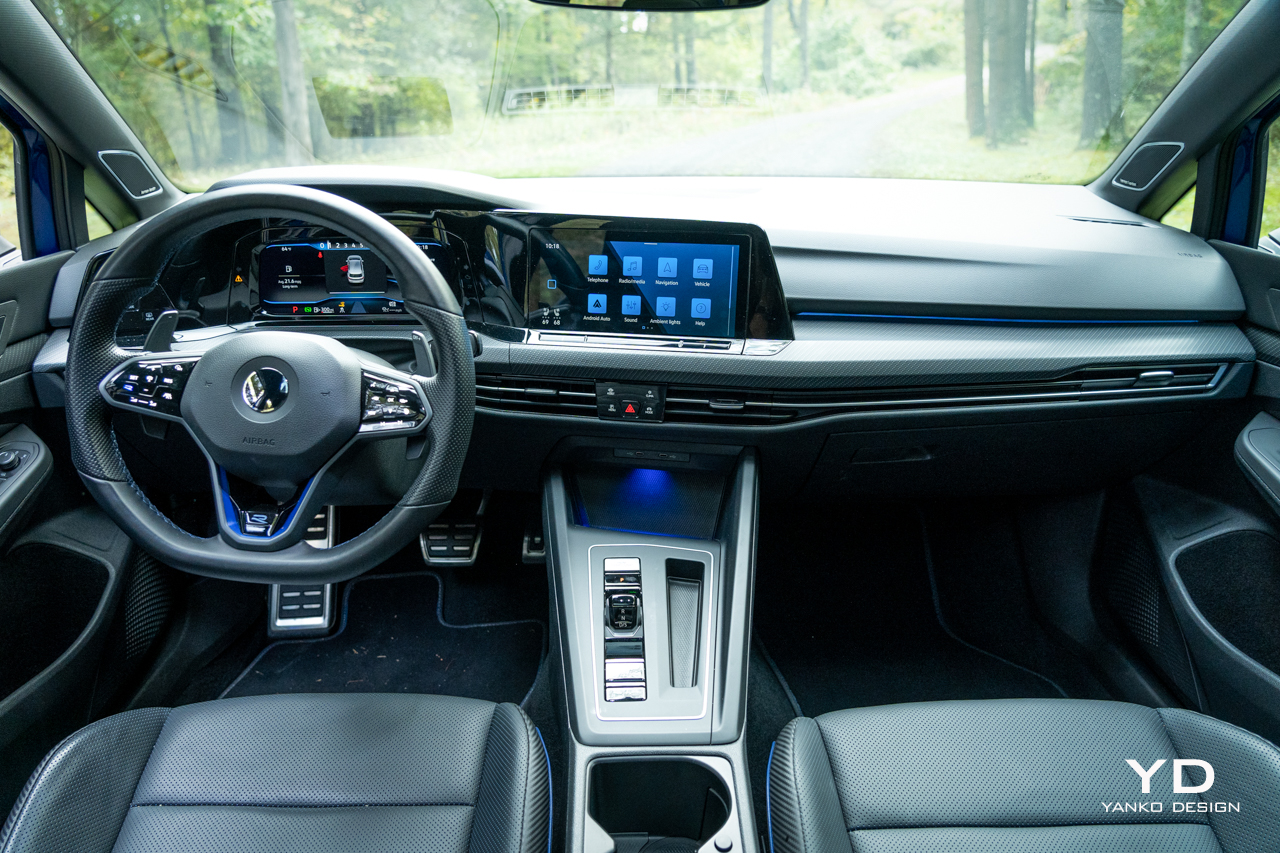
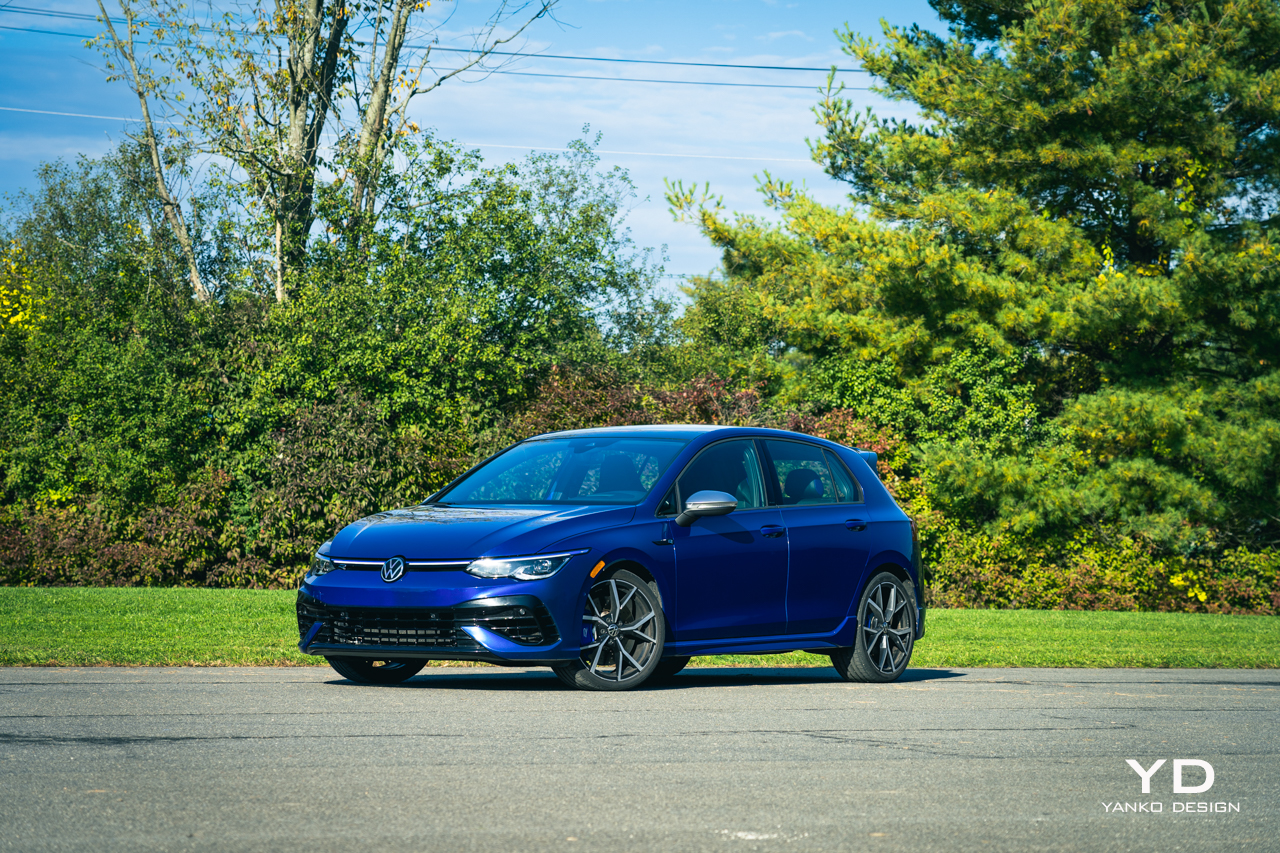
Blissfully, the shift paddles behind the wheel are real, physical things that really move when you pull them.
Volkswagen’s latest infotainment system seems far more snappy now than it was when I first sampled it, generally responsive and, with wireless Android Auto and Apple CarPlay, has all the smartphone integration you need.
The 10.25-inch virtual gauge cluster is extremely customizable, with each side showing you any of about a dozen different telemetry readouts, from mpg to turbo boost, while the heads-up display gives you even more data. You will not be uninformed while driving this car.
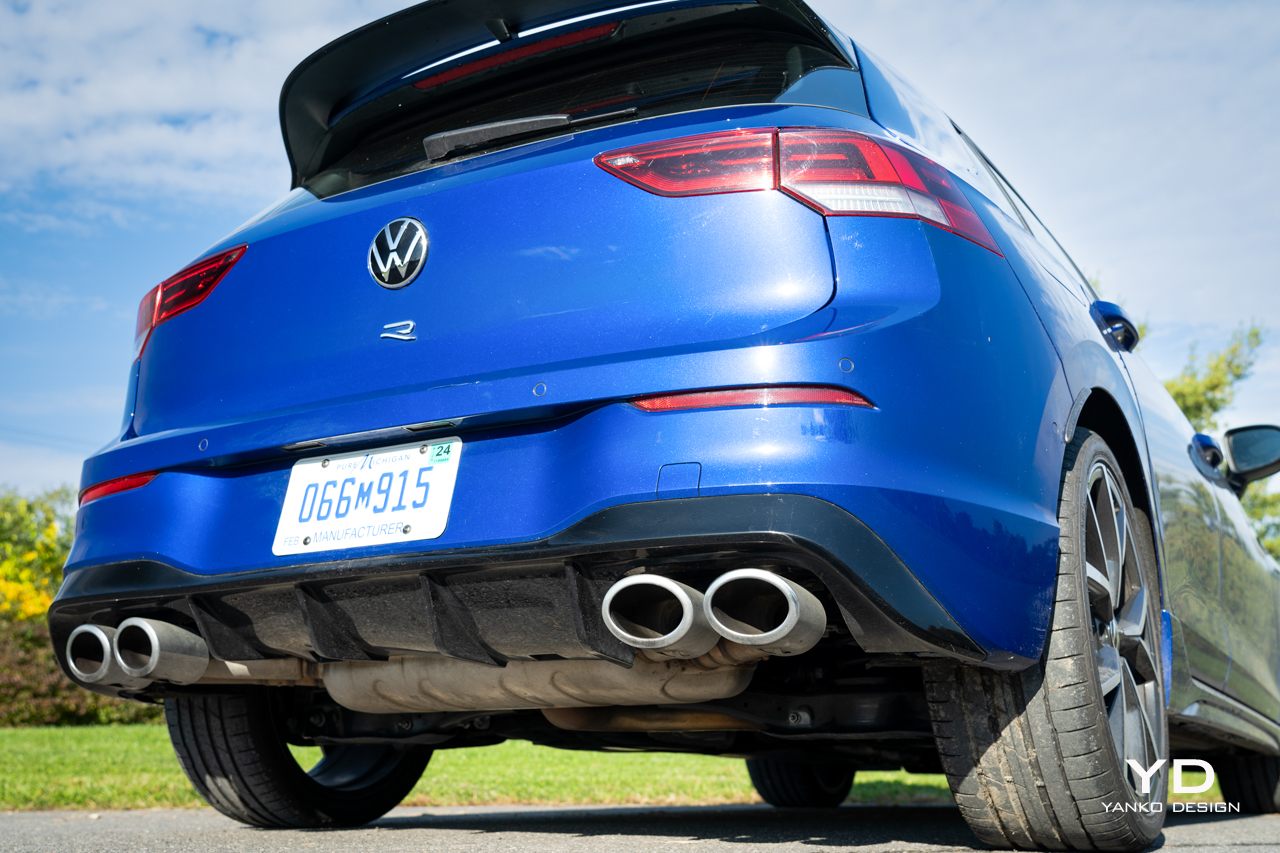
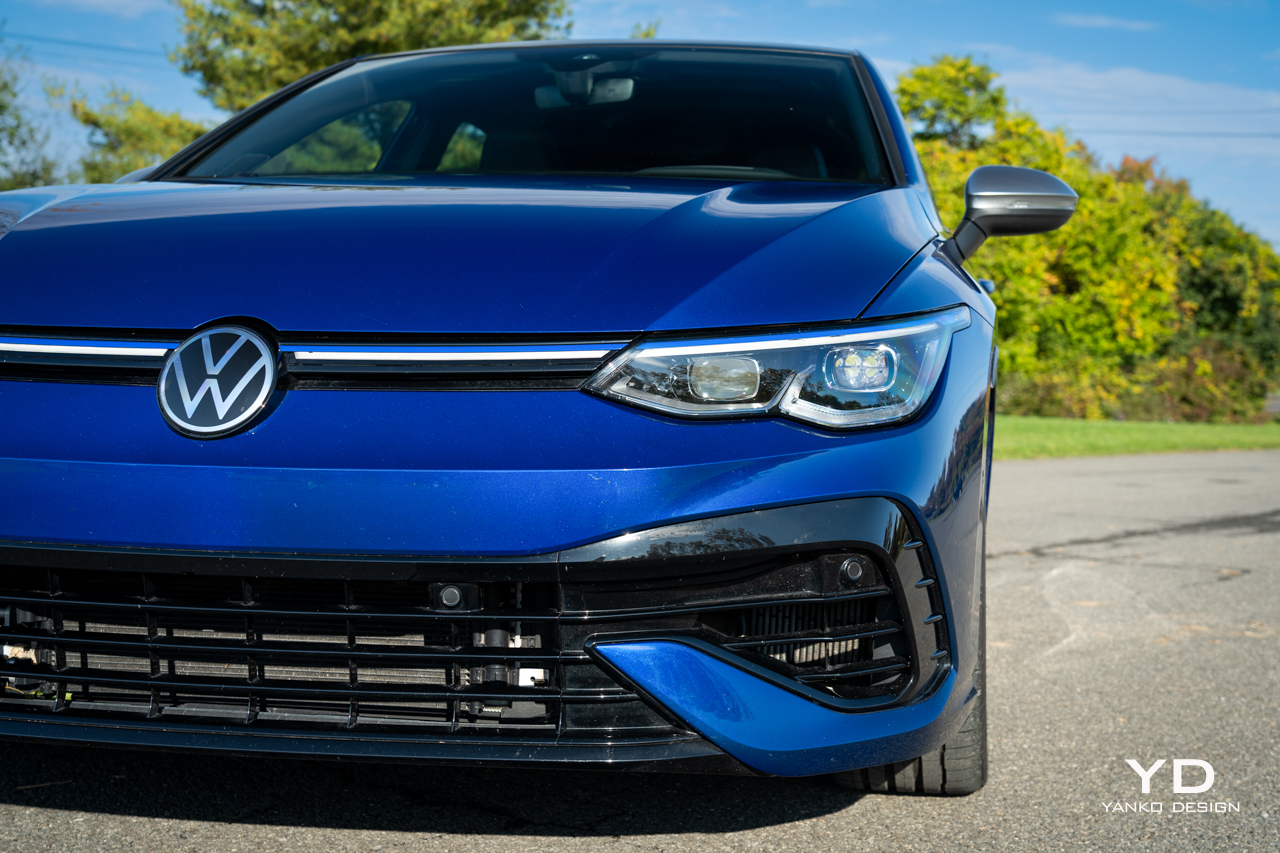
Putting it into D
The Golf R is available with a six-speed manual transmission, an option that only American cars received and something that I am very thankful for. But, whereas I said you should order your Nissan Z with a stick, with the Golf R I think the DCT is the way to go.
That’s the transmission equipped on the car you see pictured here and it is an impressive thing. With seven speeds there’s always a right ratio and the car does a fine job of making sure you’re in it. Slender, wheel-mounted paddles are right at hand should you feel like overriding things, and if you do the car is happy to hold that gear up to redline.
That’s mated to a series of clutch-type differentials to handle getting power where you want it. This new all-wheel-drive setup is far racier than the previous generation, capable of distributing power exactly where it’s needed and doing proper torque vectoring. This means the outside rear wheel can get a bit (or even a lot) of extra torque. This helps push the car out of the corners, reducing understeer and making sure the Golf R keeps heading in the right direction even in low-grip situations.
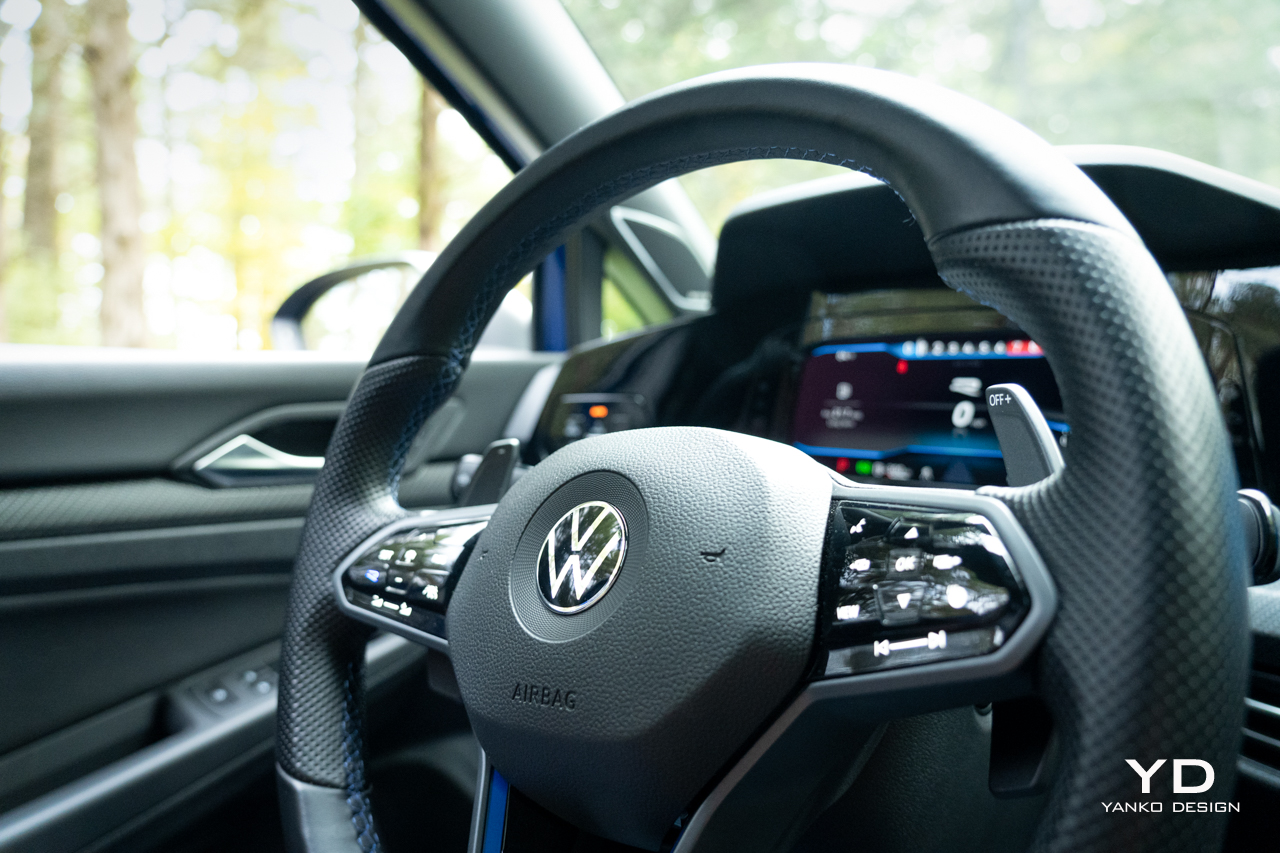
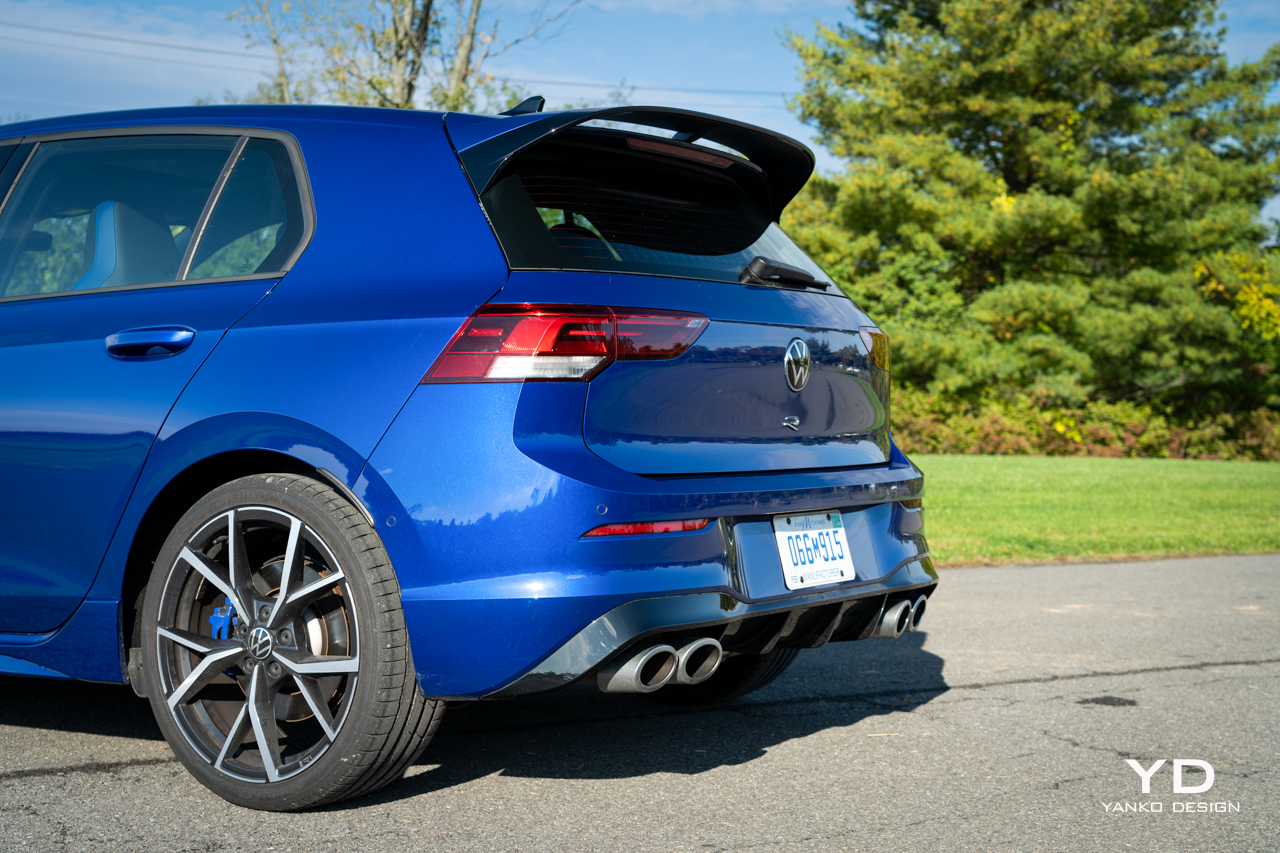
All that is controlled by an advanced driver assistance system with four modes: Comfort, Sport, Race, and Custom. Then there are two additional, limited flavors within Race: Drift and Special. Drift accentuates the rearward power of the car, while Special is a, well, special configuration designed expressly for use on the Nurburgring. That’s a bit silly and not particularly useful for the vast majority of Golf R purchasers, but still you have to love it.
In Comfort mode, the Golf R is surprisingly tractable. Despite the skinny, 235/35 R19 tires, ride quality is very good. You’ll get more bumps and buzzes in the cabin than you might on a base Golf, but it’s really not bad at all. And, considering the Golf has all the active safety niceties you could want, like adaptive cruise and automatic lane keeping, this would make a fine machine for a road trip.
Snap the car into Sport and honestly, nothing much changes. This I think is where the car fell flat for me last time. It gets a little louder and the adaptive chassis control a bit firmer, but the throttle response and transmission are still just about as lazy as in Comfort. The car still feels reluctant.
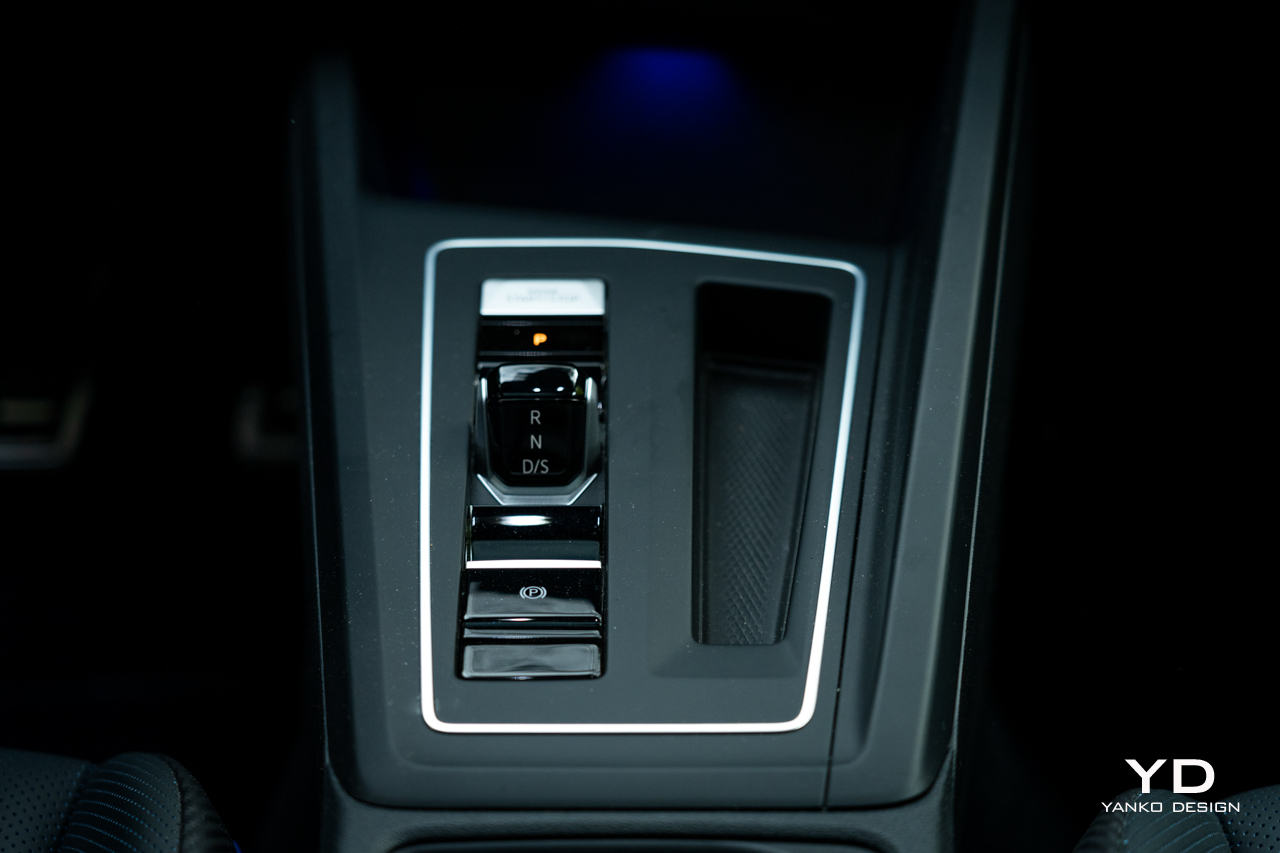
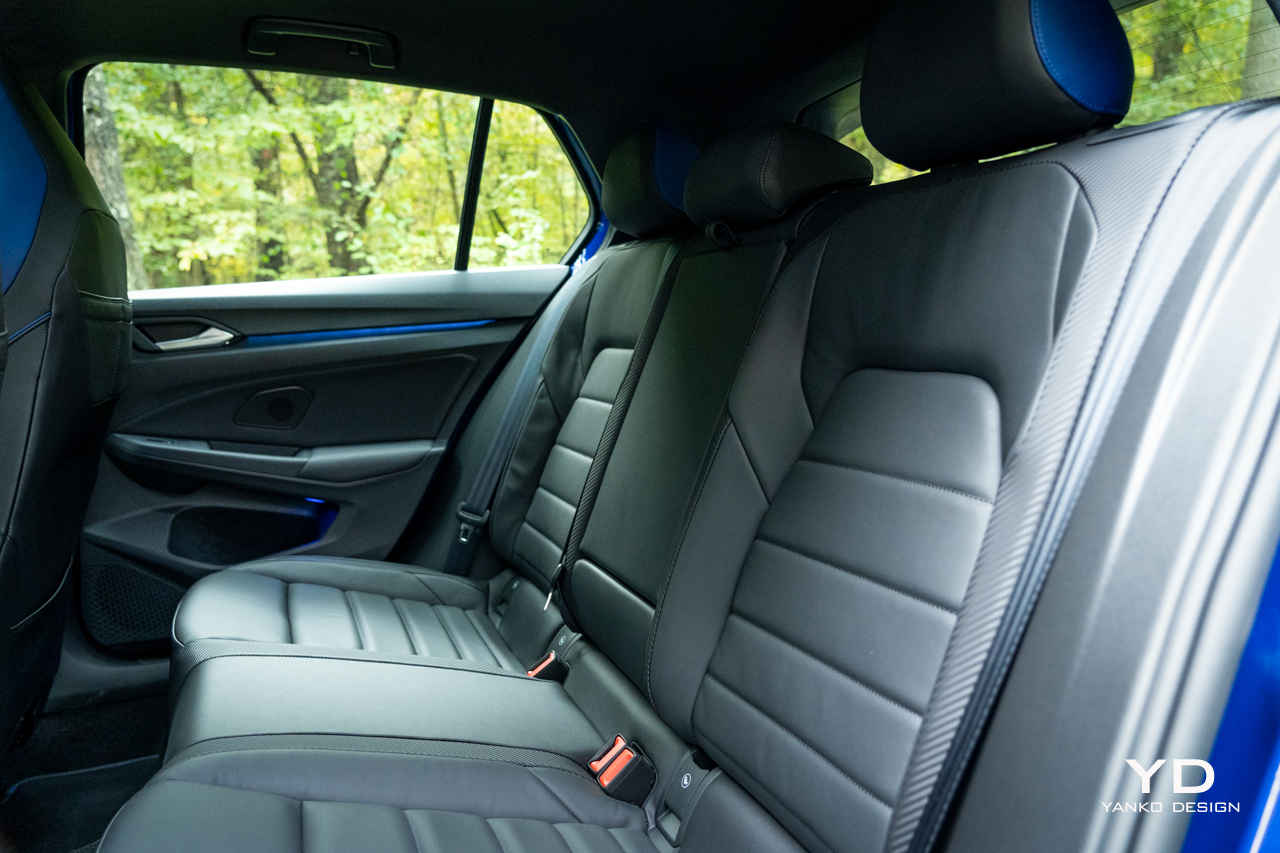
Step up to Race and things finally start to get interesting. Now the transmission is far more aggressive and the power delivery more satisfying. There’s a nagging, constant amount of turbo lag while the 2.0-liter four-cylinder builds all the way up to a whopping 33 psi, but drive it like you mean it and you can get around that.
In Race, however, the car needlessly firms up the steering the way most cars do. Thankfully, in the Custom mode you can dial up all the engine and transmission aggression you want and pair that with the softer, Comfort steering. That’s my preferred mix and, driven like this, I really fell in love with the Golf R. Again, you have to be very aware of that turbo lag and drive it hard to get maximum performance, but the harder I pushed the more the Golf R delivered.
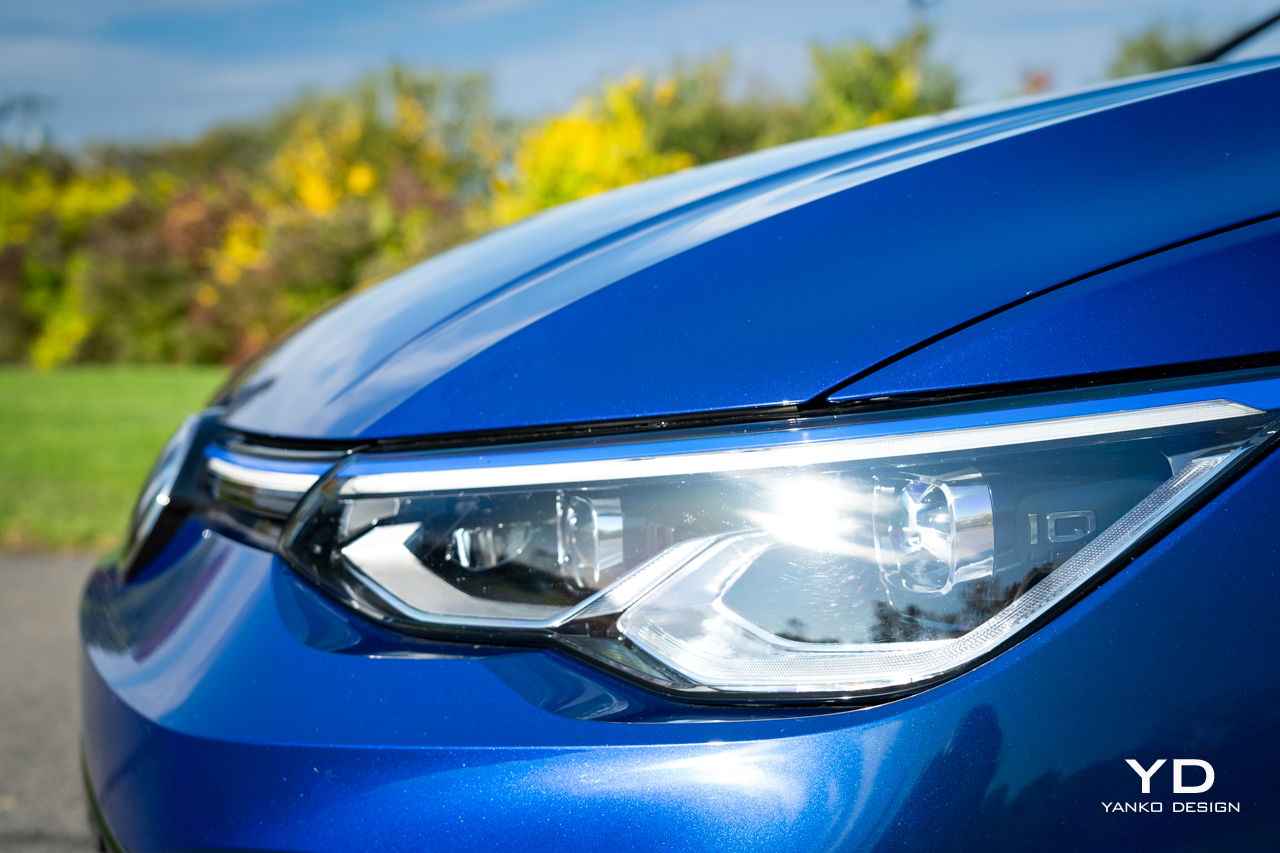
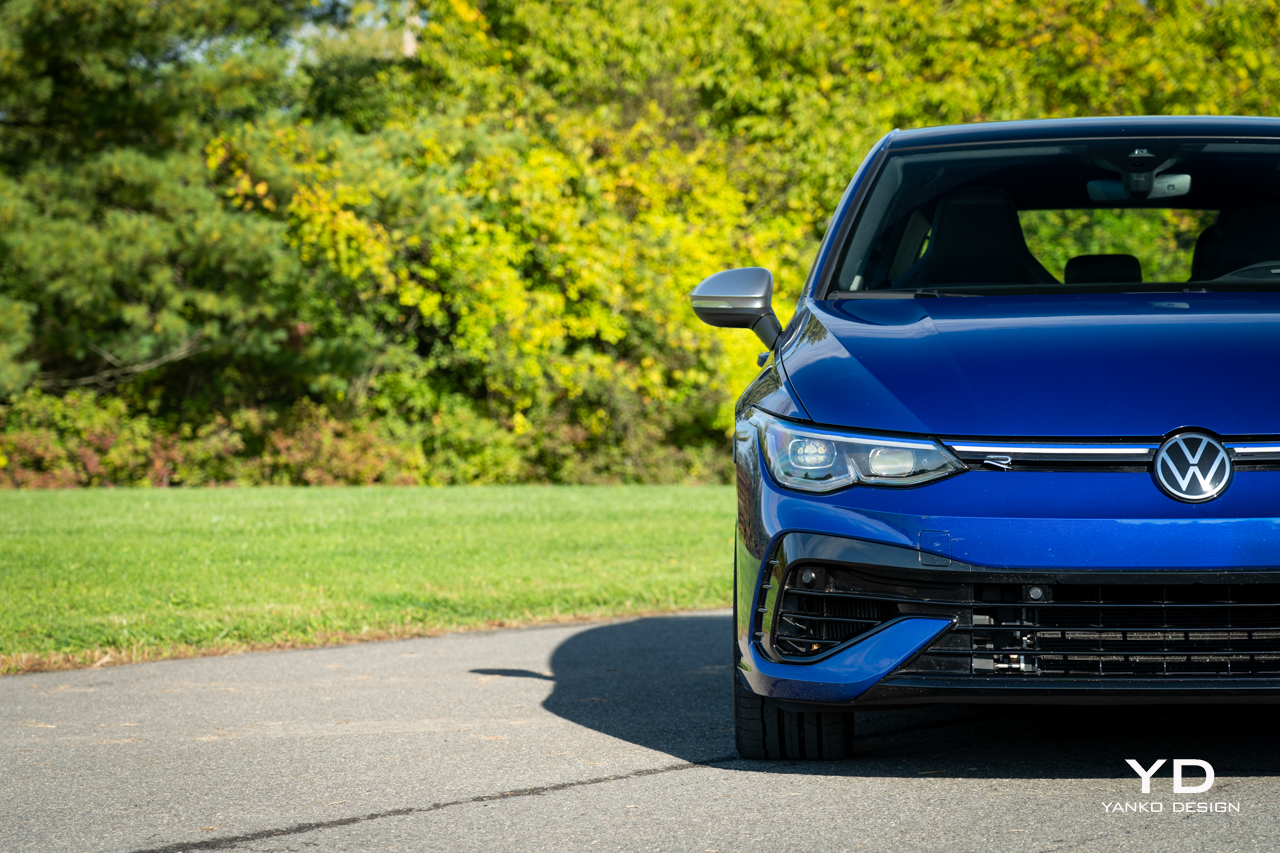
Losing grip, gaining respect
The most eye-opening time in the car for me was a quick run after a heavy rain. I knew that’d be my only chance to really test the grip on the car and the first time I got on the power coming out of a corner I was rewarded. On a lot of all-wheel-drive cars, over-exuberance with the throttle results in immediate, terminal understeer.
On the Golf R, whenever I lost traction it was at the rear, and no I wasn’t in Drift mode. Again and again I’d stomp my foot down like a hoon, wait for the boost to surge, then have to countersteer quickly as the tail stepped out. Mind you, the traction control stepped in quickly to ensure things didn’t get out of hand, but that the car’s nature is to wag its tail coming out of the most mundane of roundabouts really changed my perspective. This is largely thanks to that new AWD setup squirting a little extra power to the outside wheels.
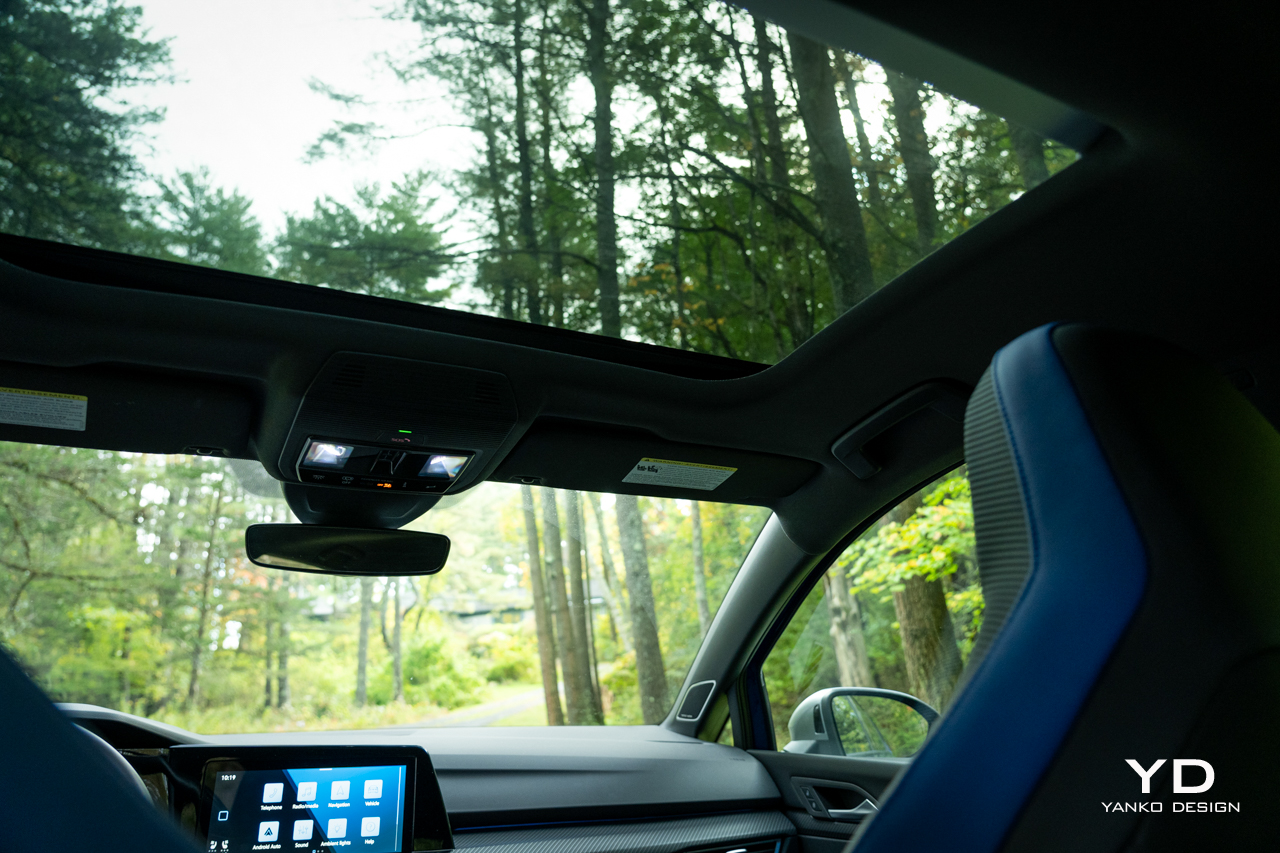
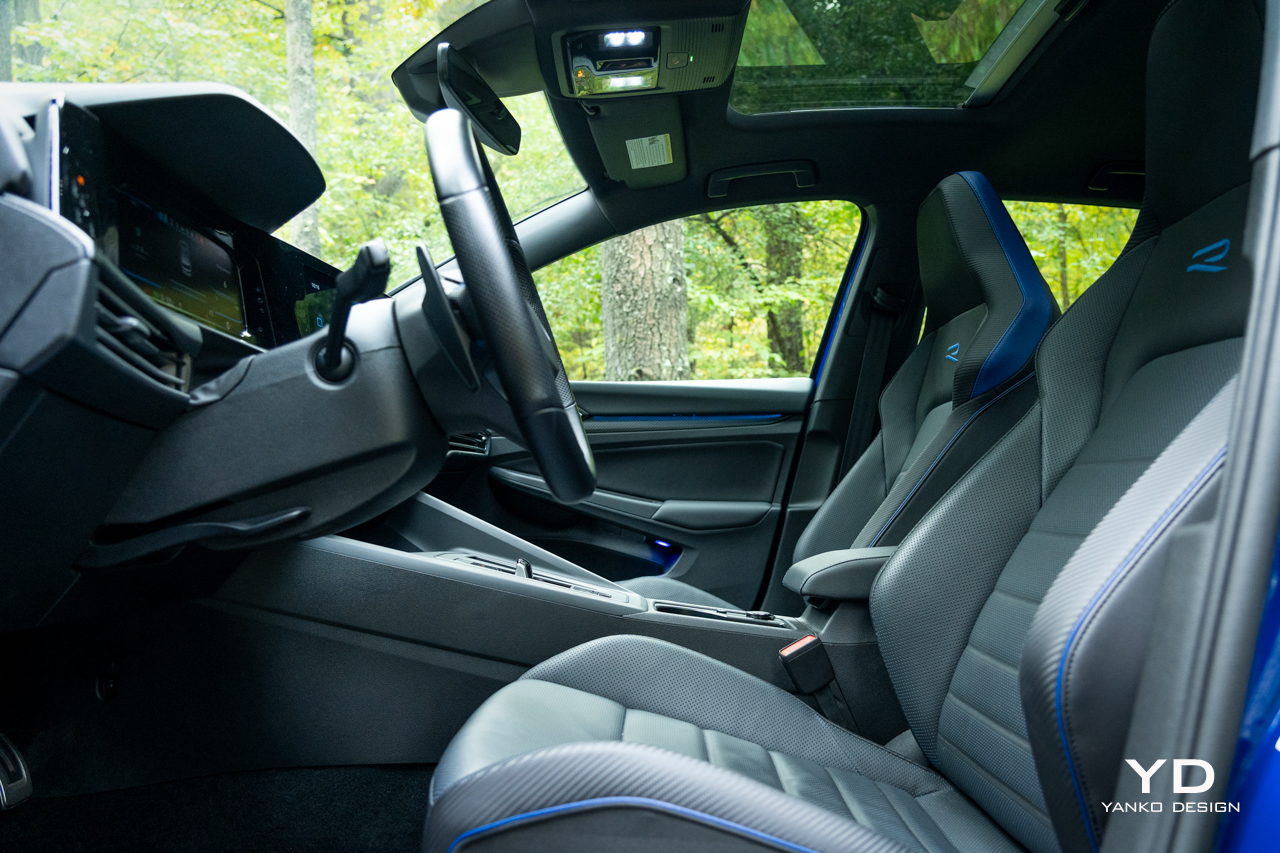
And, once I learned to rely more on the paddles to choose my own gears, my enjoyment just increased. Though the transmission can shift in the blink of an eye, if you’re not driving on the ragged edge it has a tendency to drop down into fuel saving mode. The more I shifted myself, the more time I spent in the racer modes, the more I loved the Golf R.
But it does still feel a bit flat in the in-between times. You really have to throw the car into R mode (or your custom flavor) and drive it hard to get the most out of it. Casual cruising with the odd stabs at the throttle will likely underwhelm.
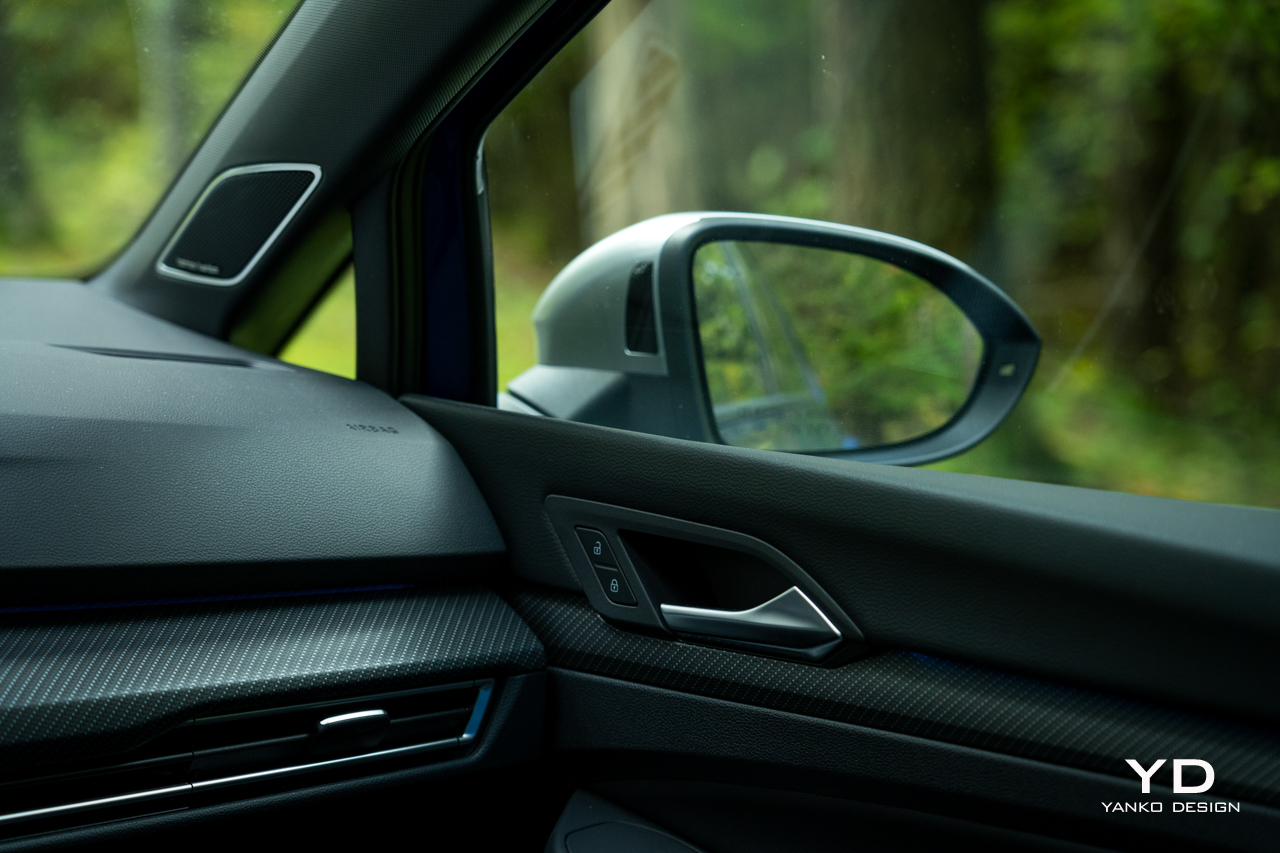
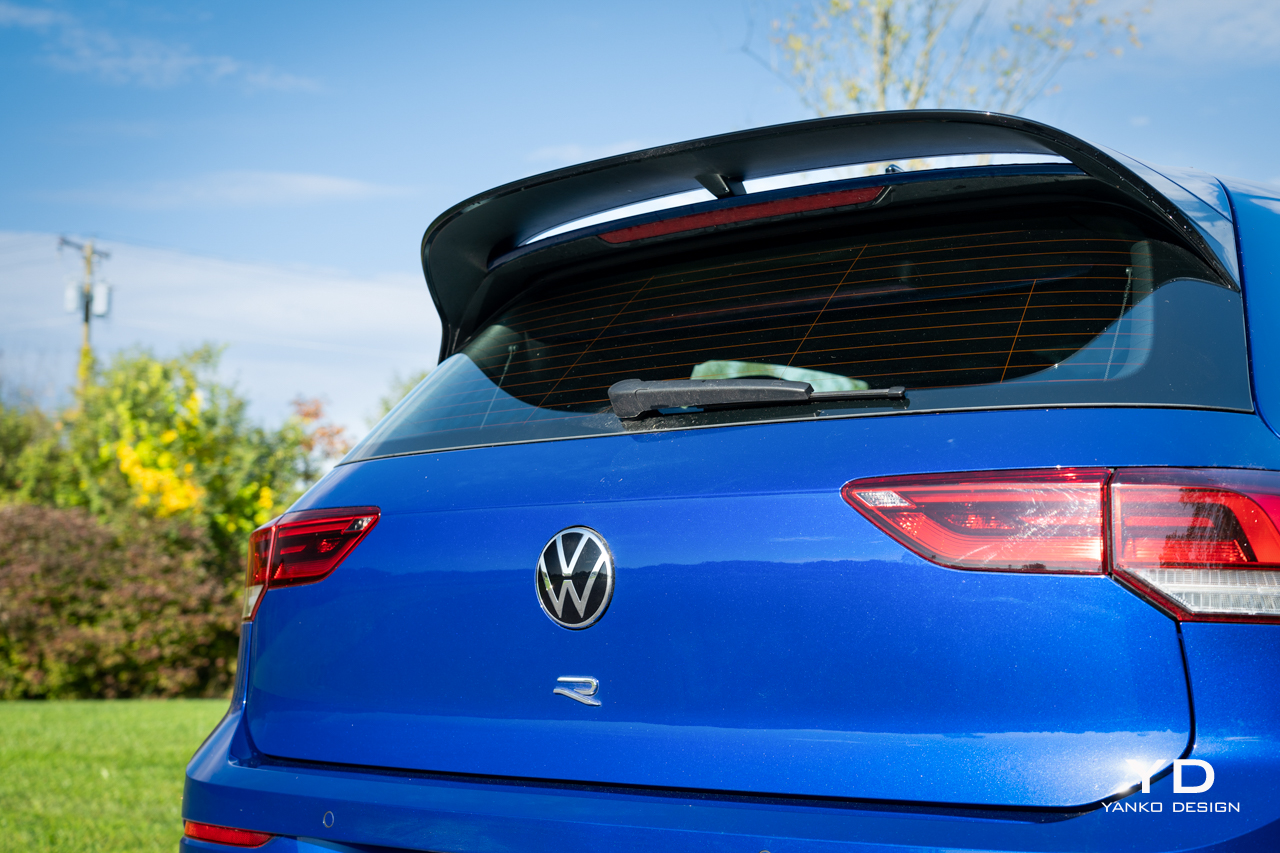
Pricing and options
In the US, the Golf R has a Manufacturer’s Suggested Retail Price of $44,445. The car you see here is equipped with the classy Lapiz Blue paint and the Titan Black Leather interior. To get those options you’ll have to pay… actually nothing. They’re no-cost, meaning the only additional cost on the car you see pictured here is the $995 destination, bringing us to the $45,440 final cost.
Through the online configurator, the 7-speed DSG gearbox shows as a $800 option over the six-speed manual. Beyond the usual floor mats and wheel locks, that’s about it. Really, you’re looking at a car that is far from cheap but is fully equipped without having to tick any boxes.
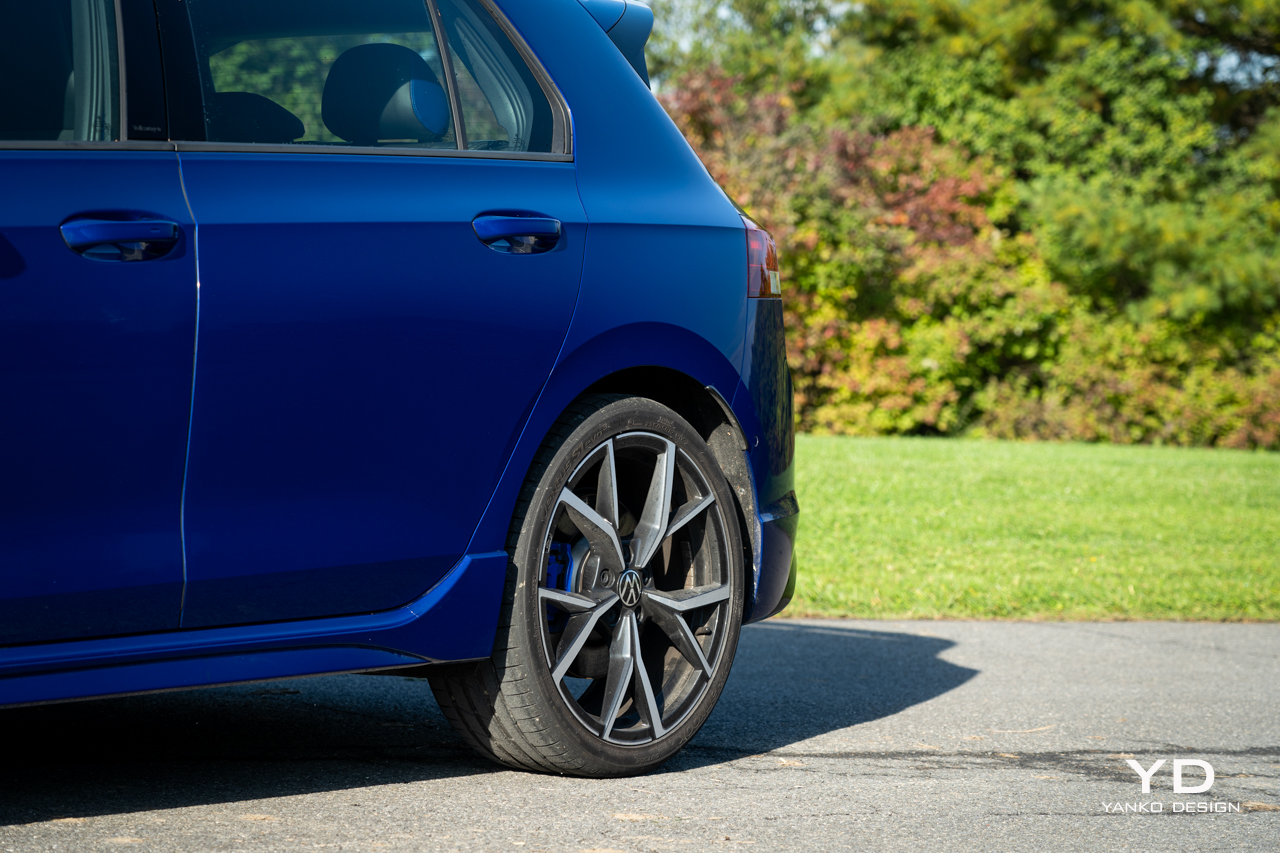
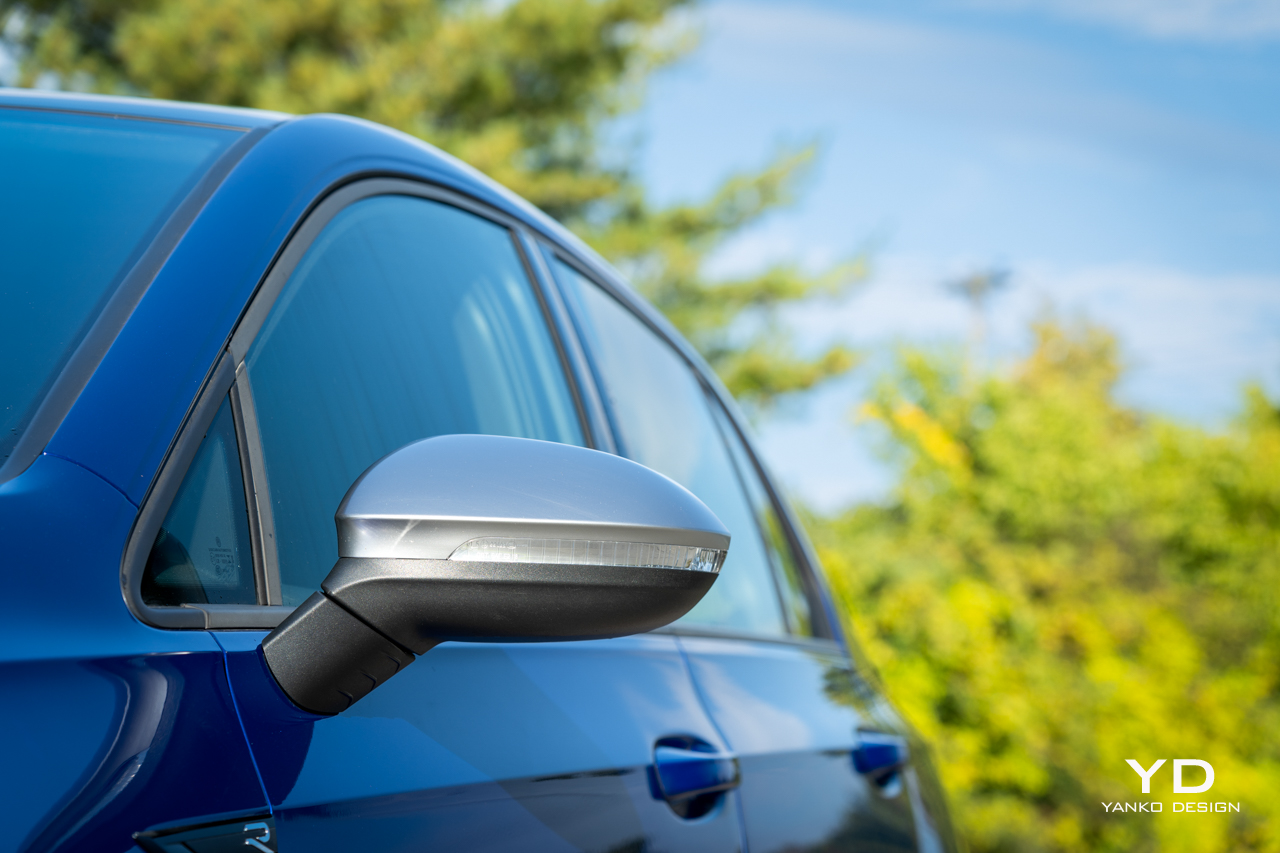
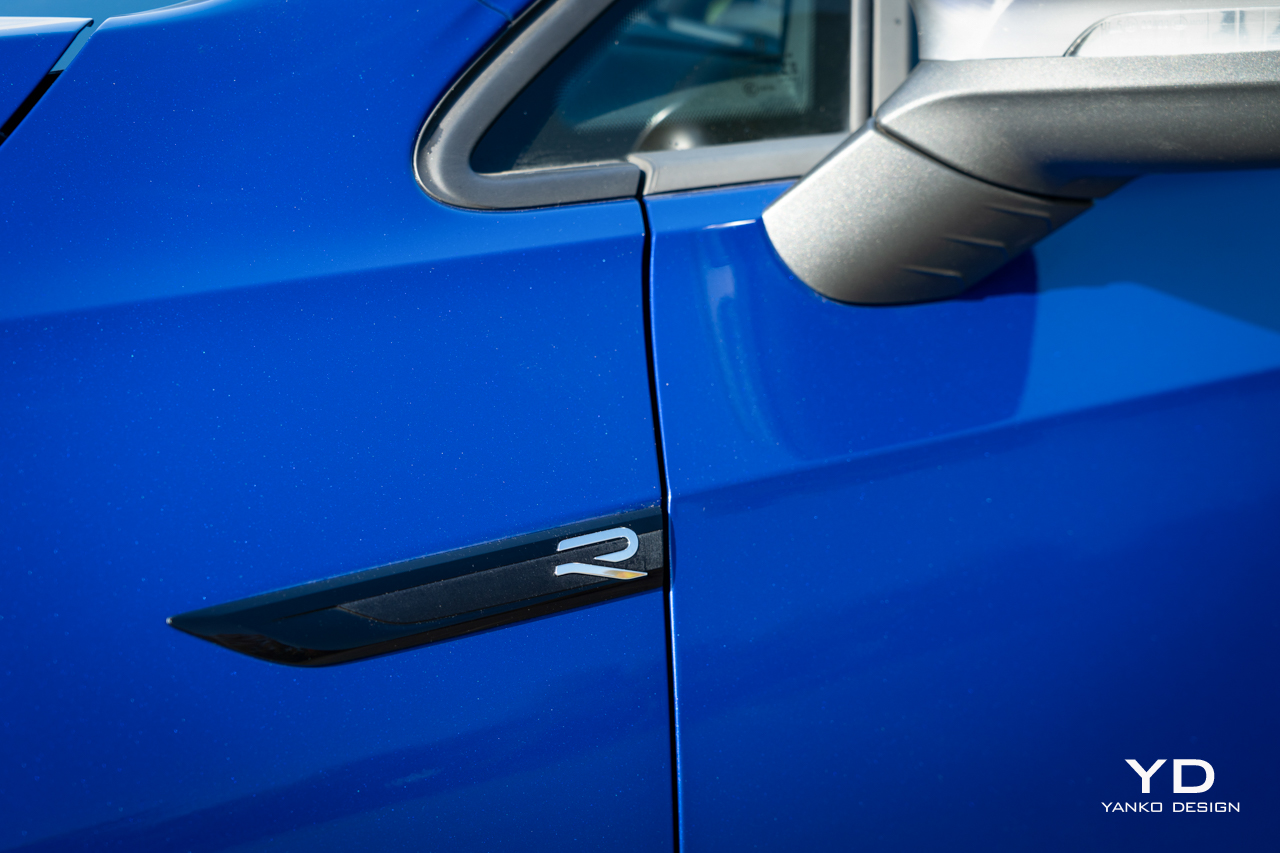
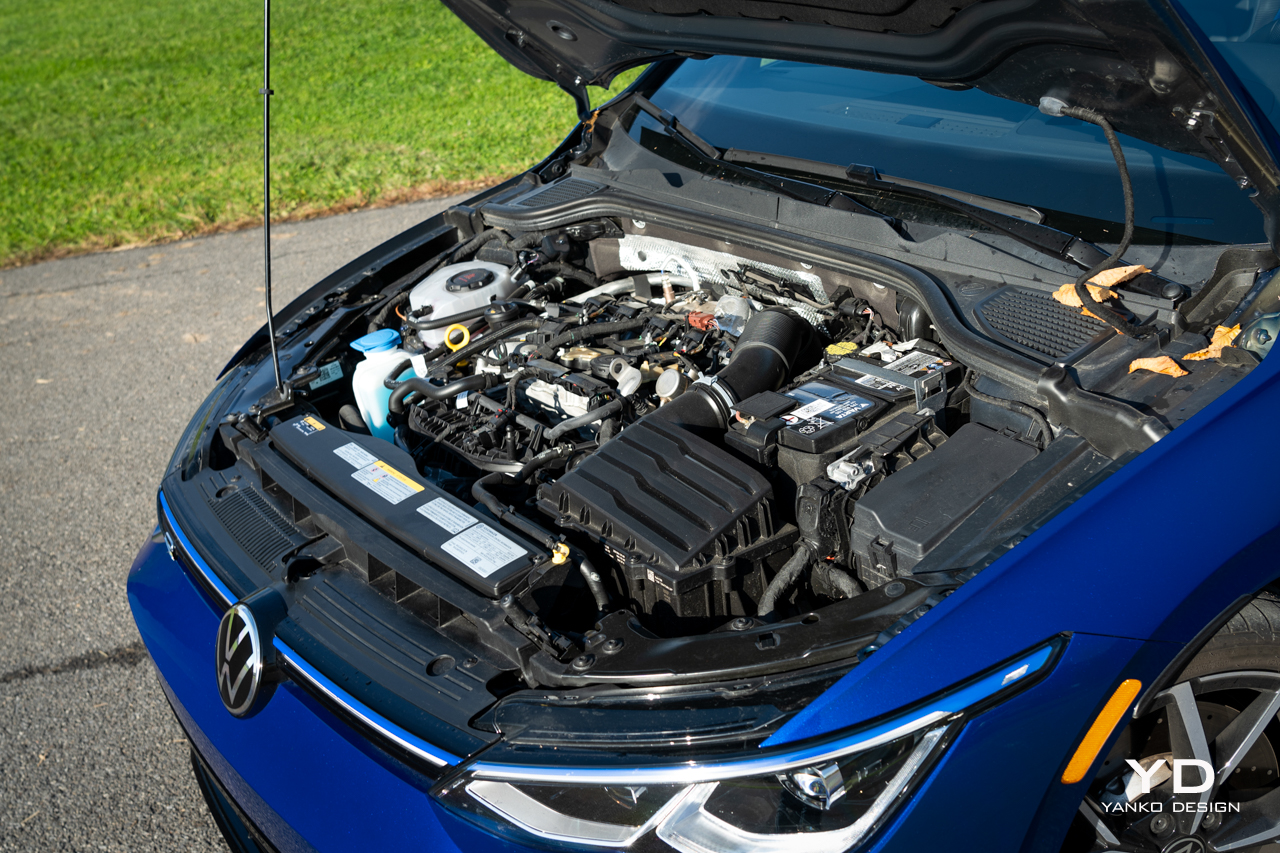
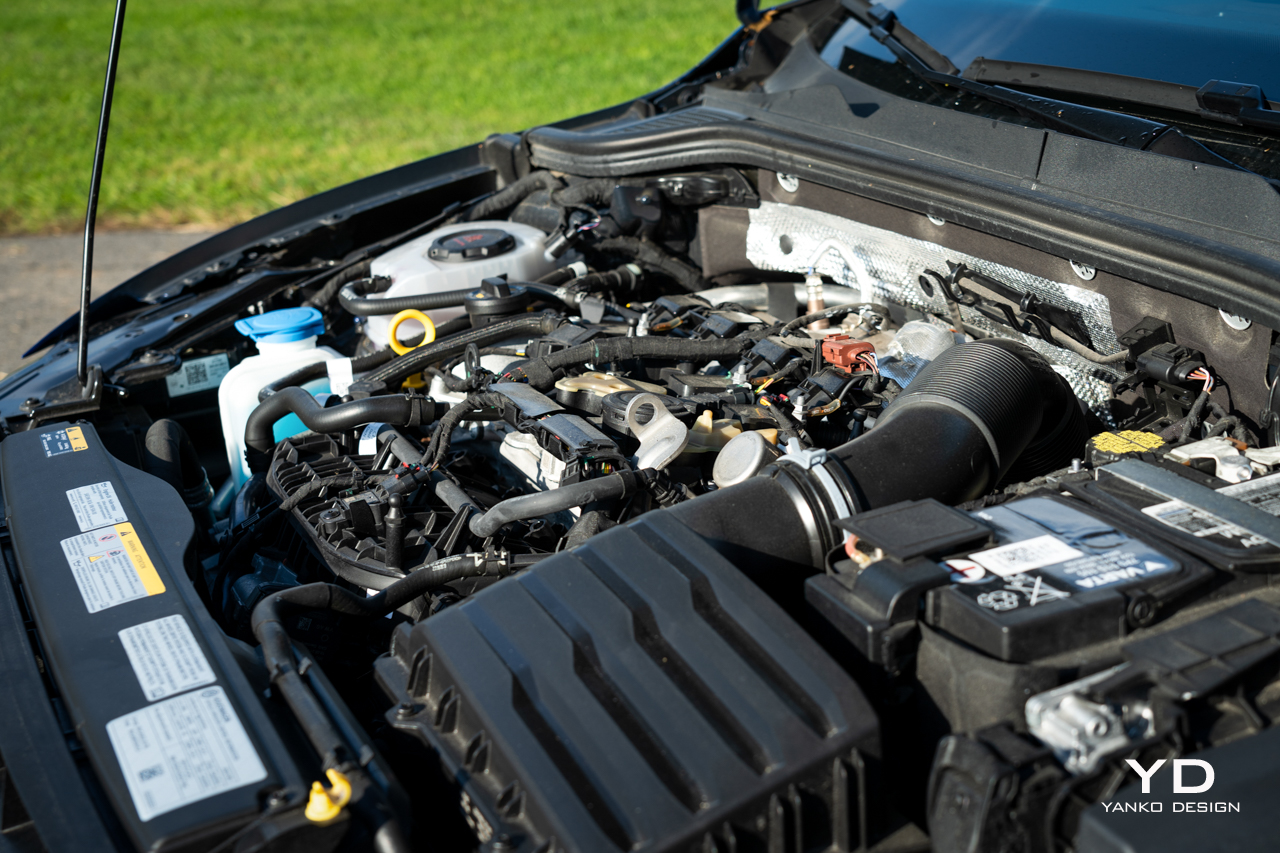
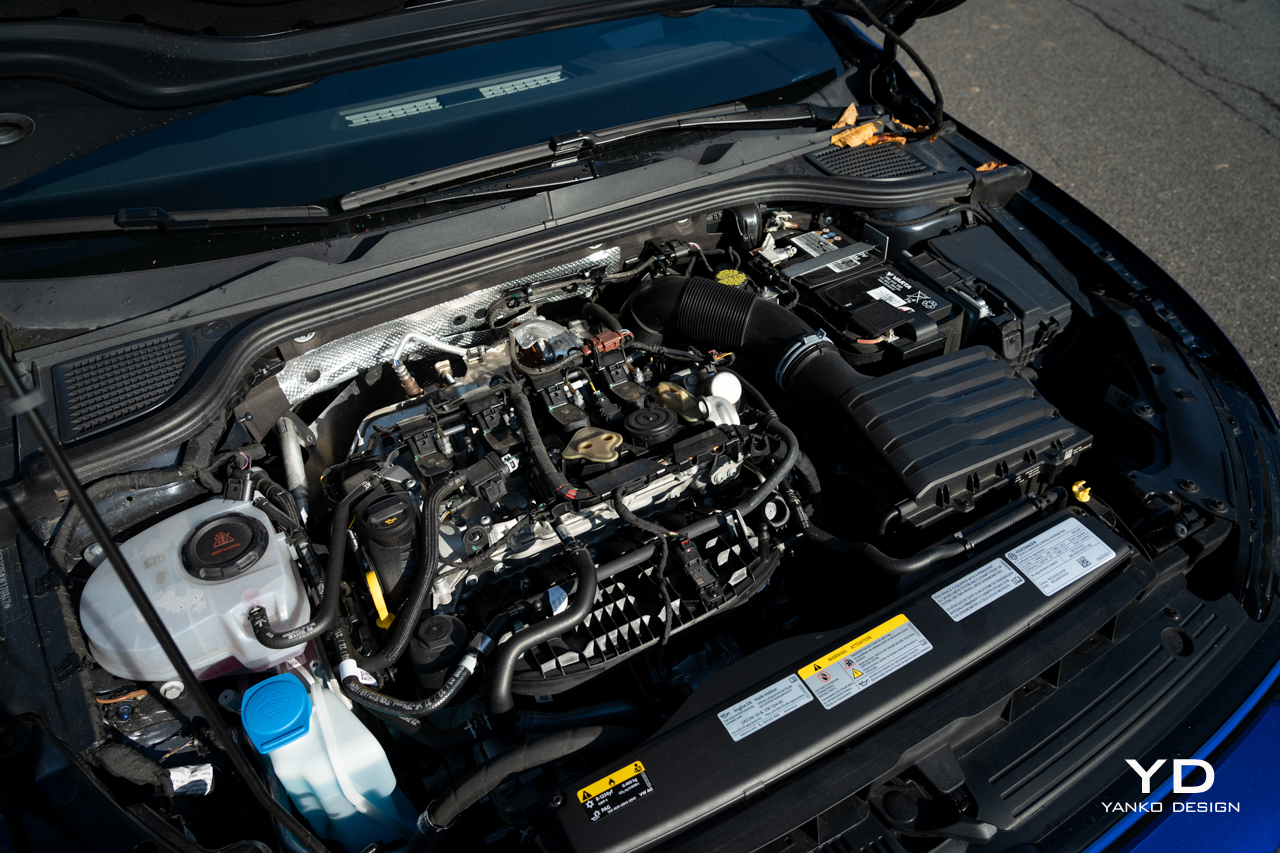
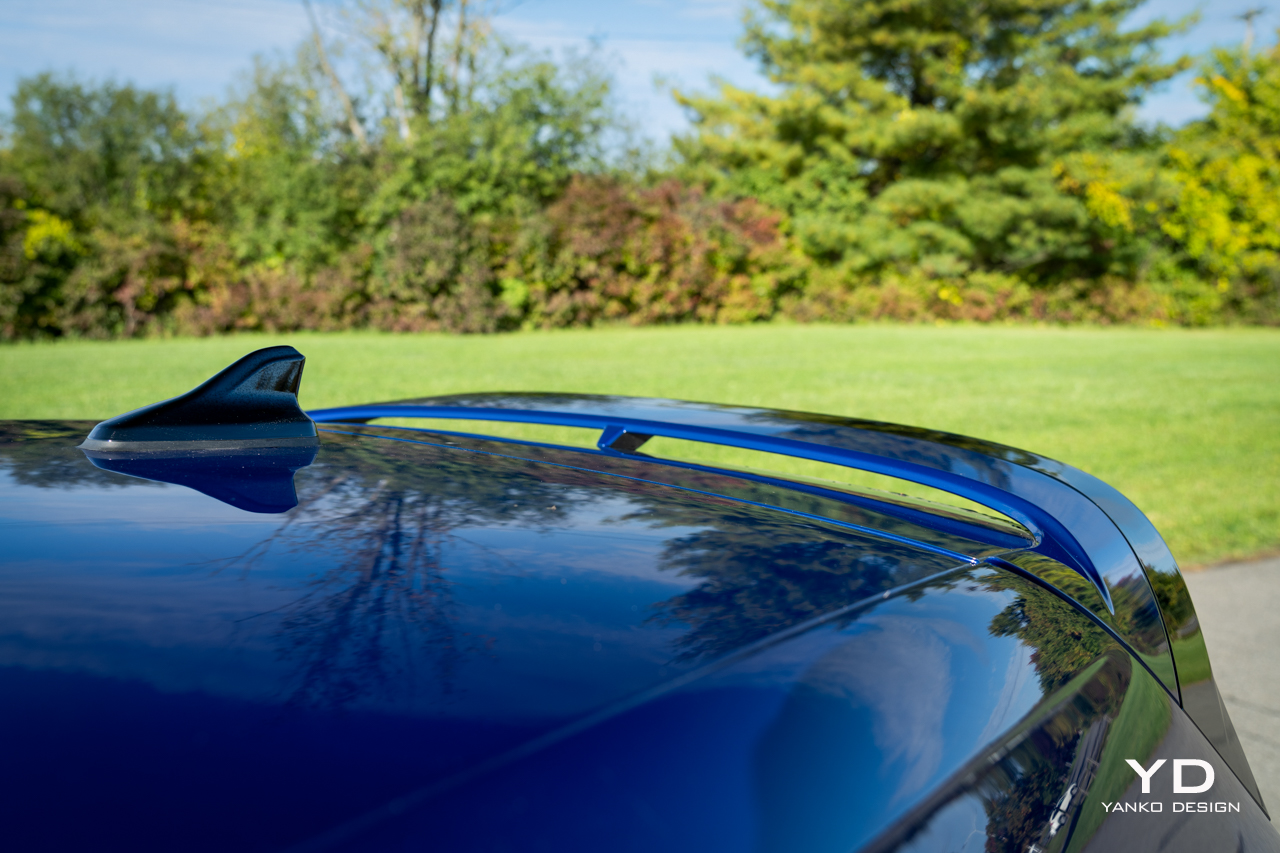
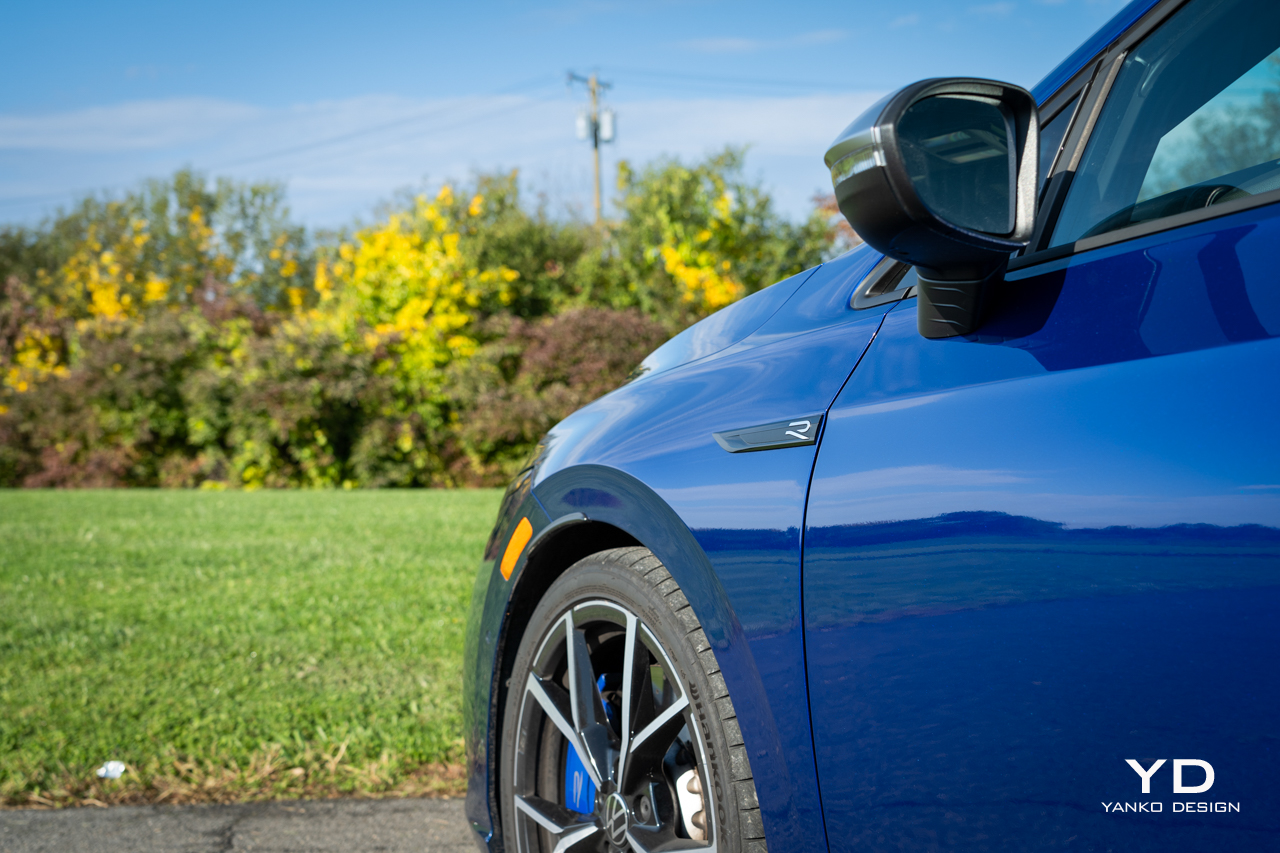
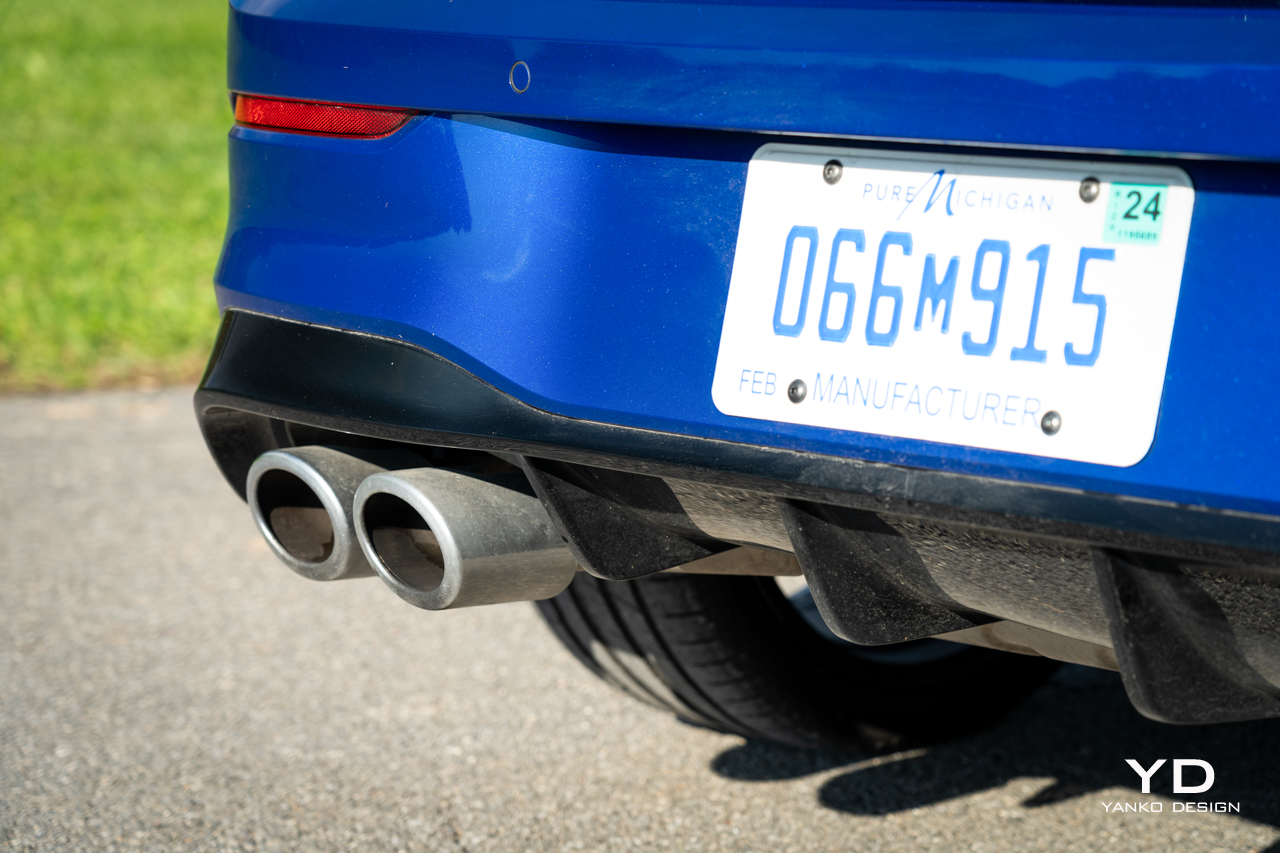
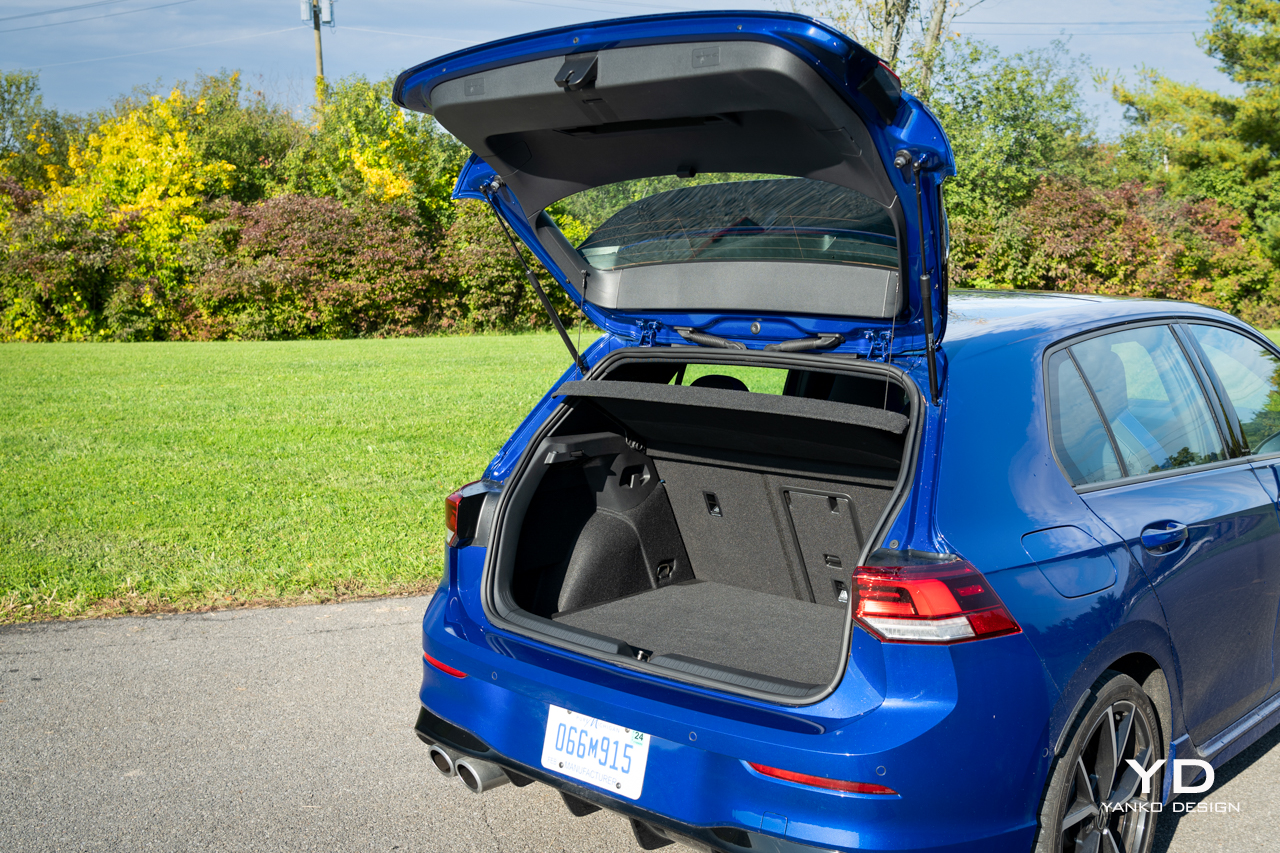
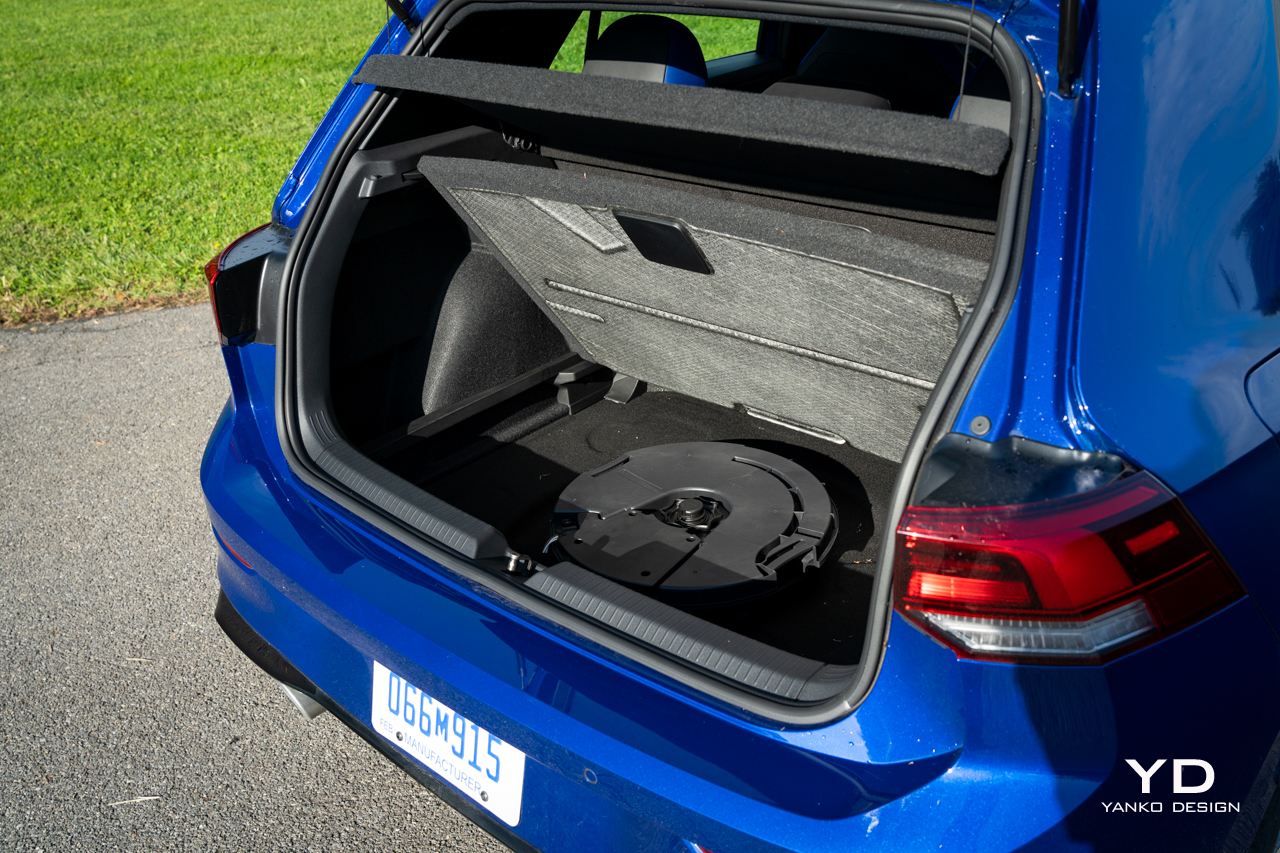
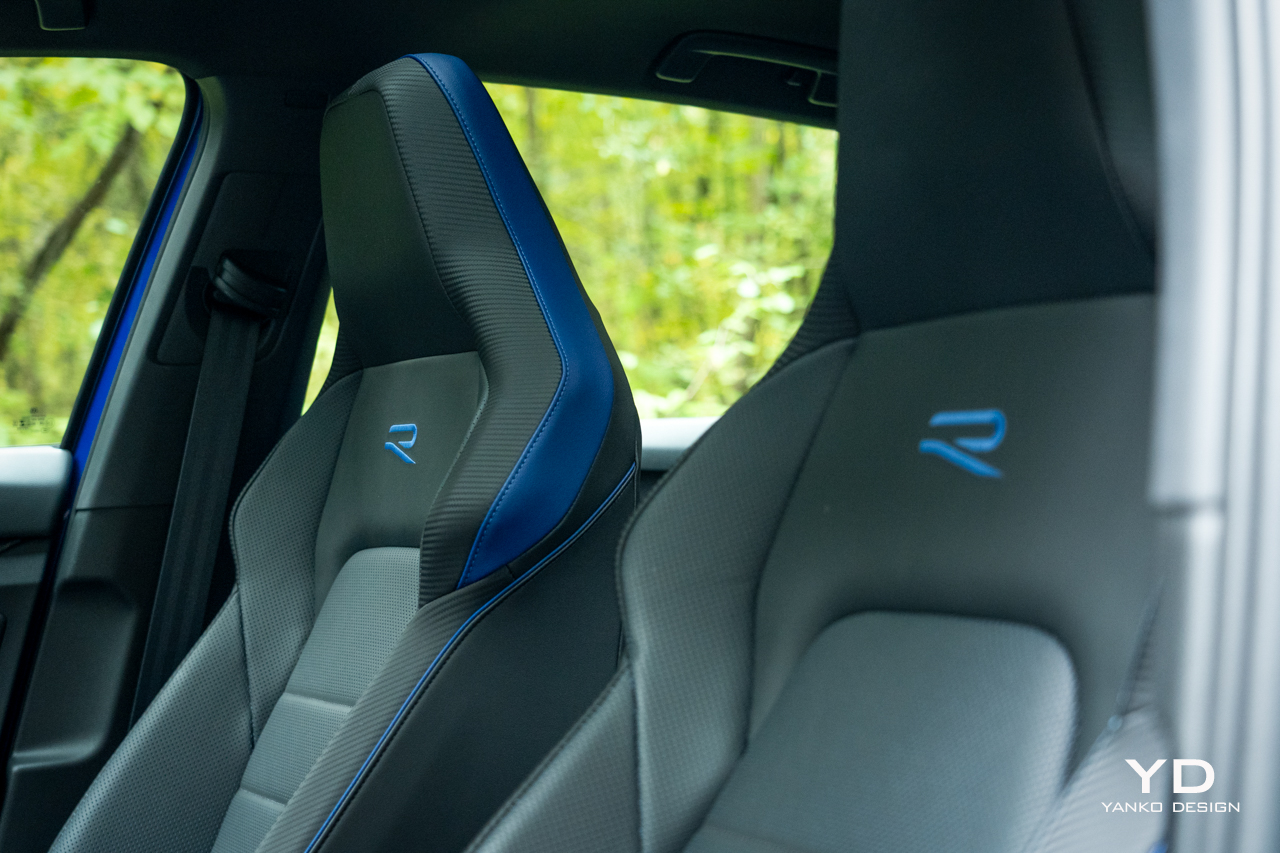
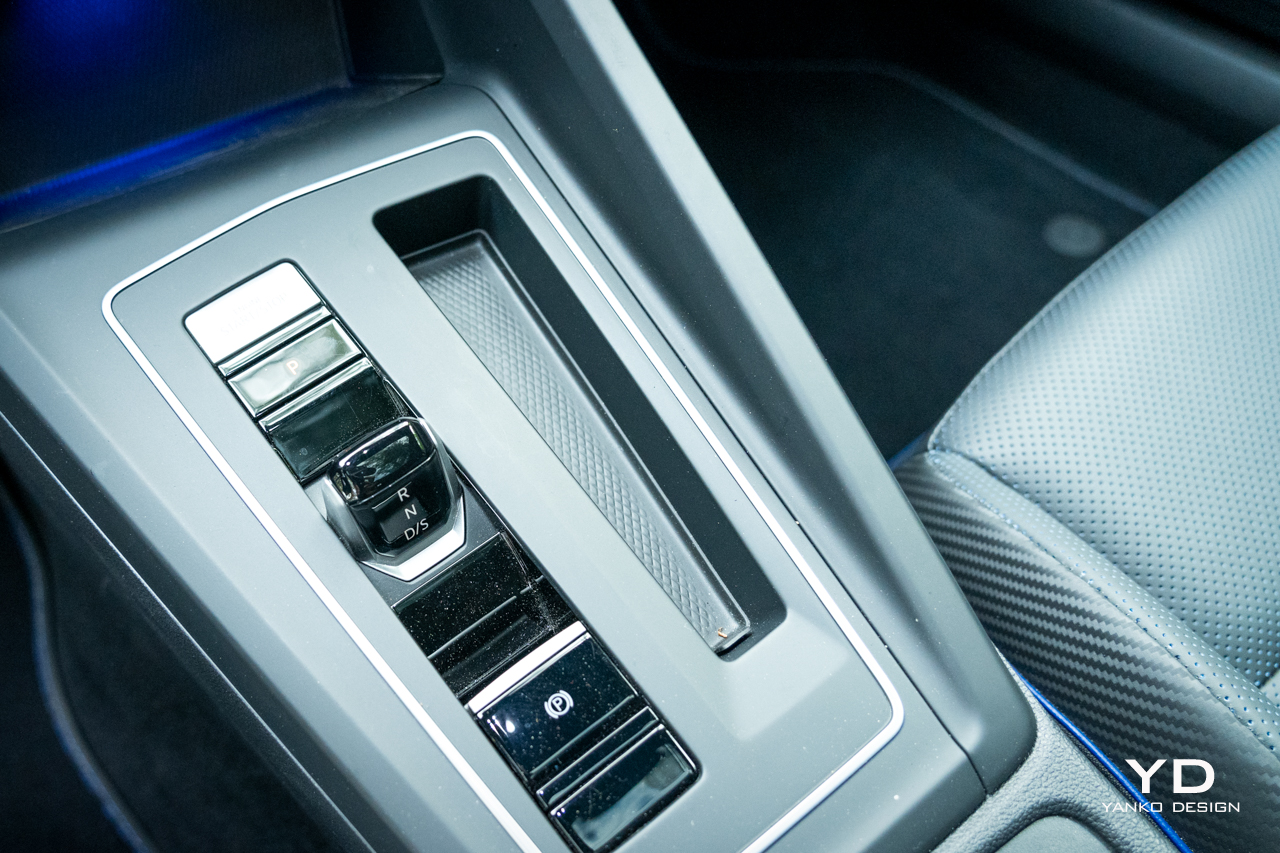
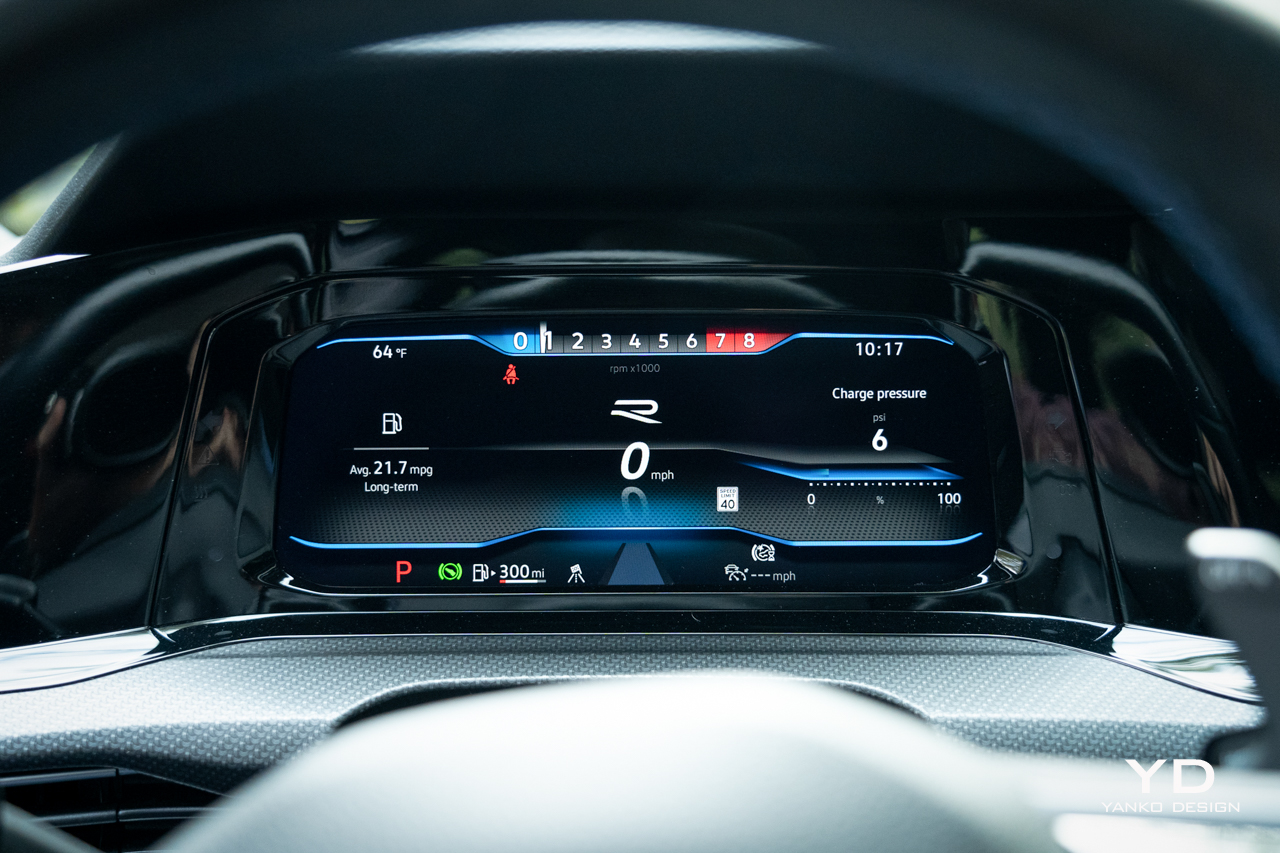
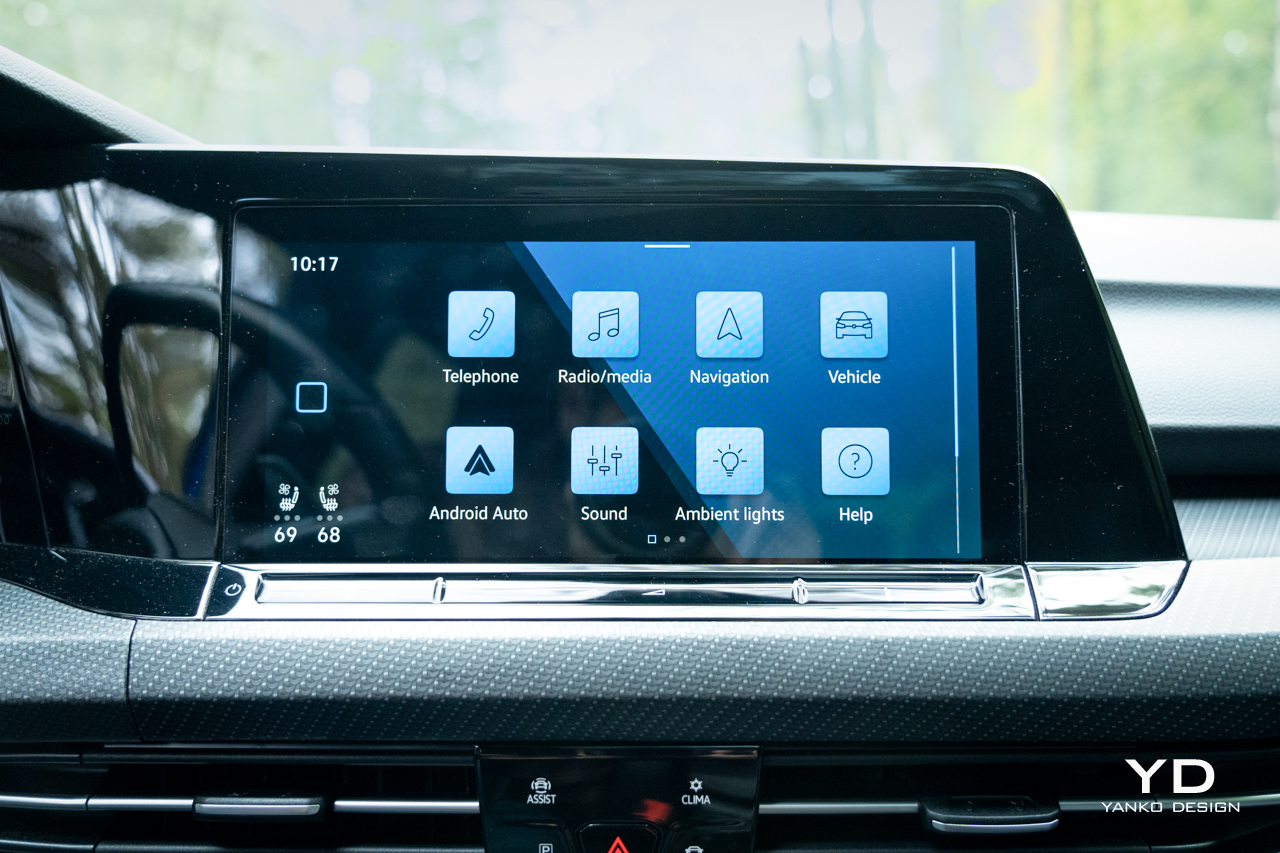
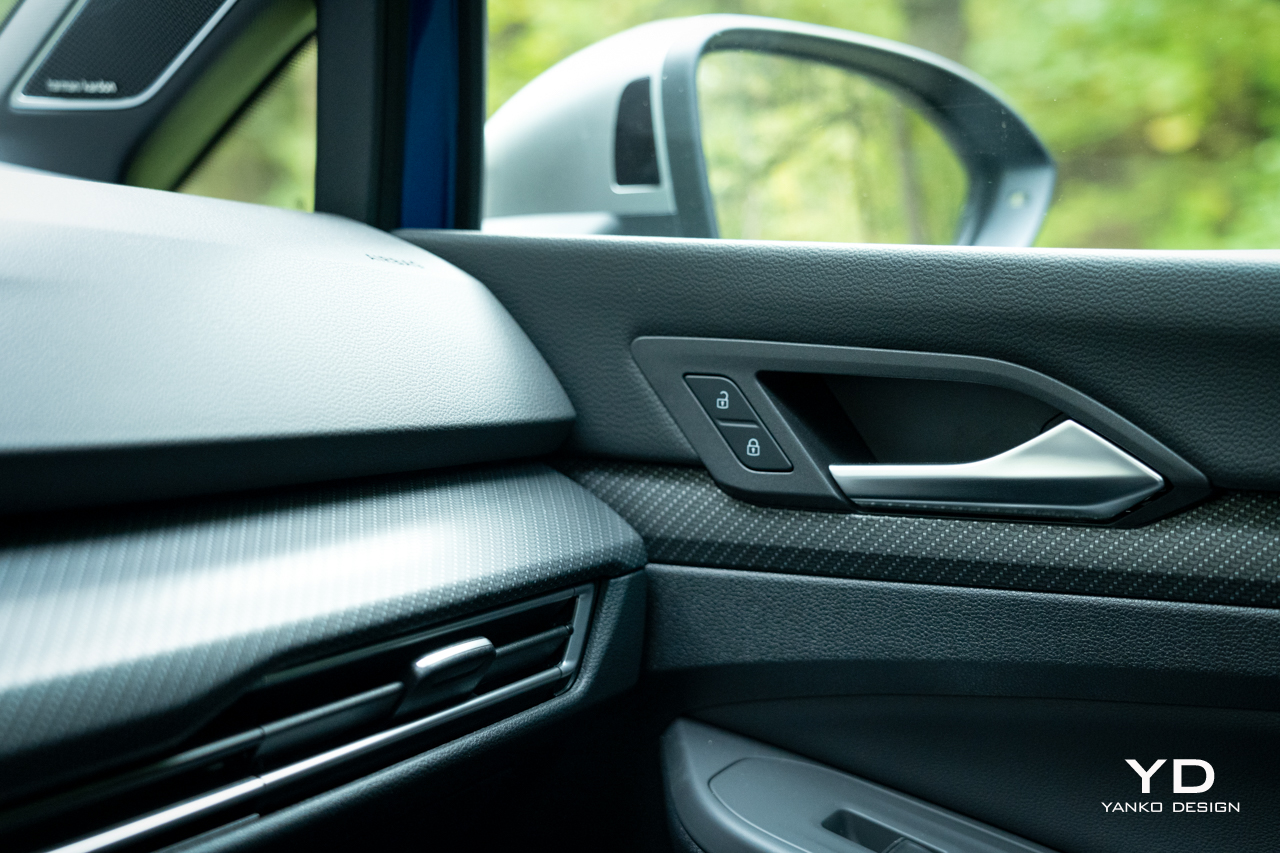
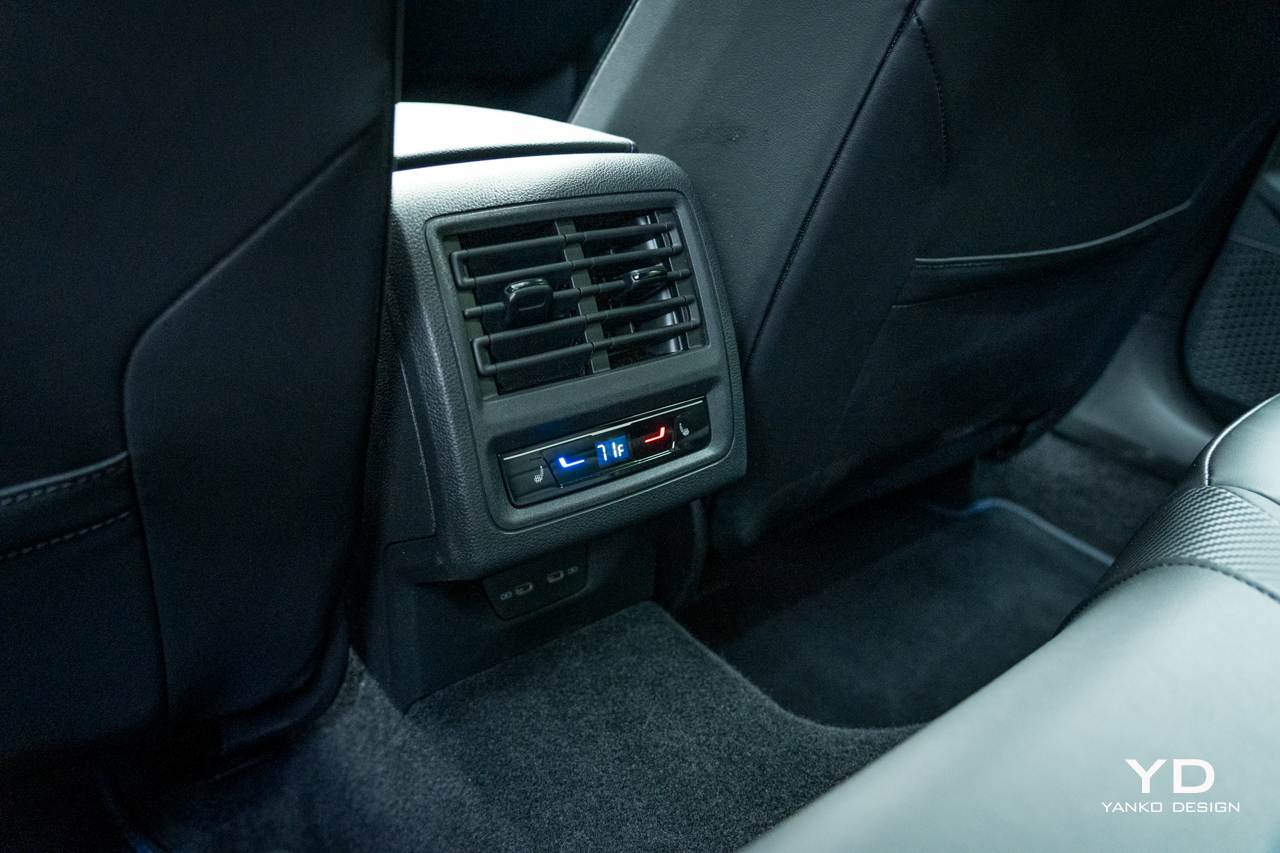
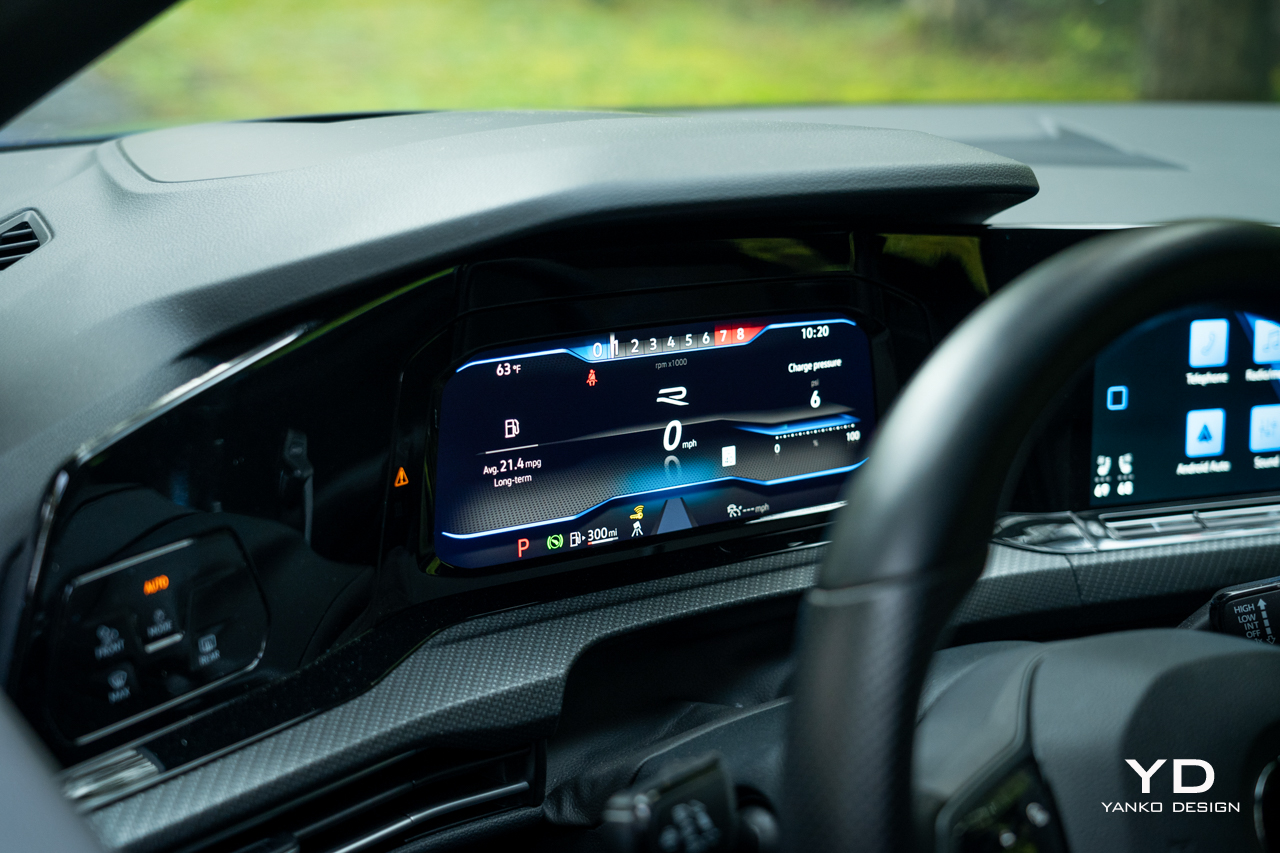
The post Volkswagen Golf R Review first appeared on Yanko Design.

